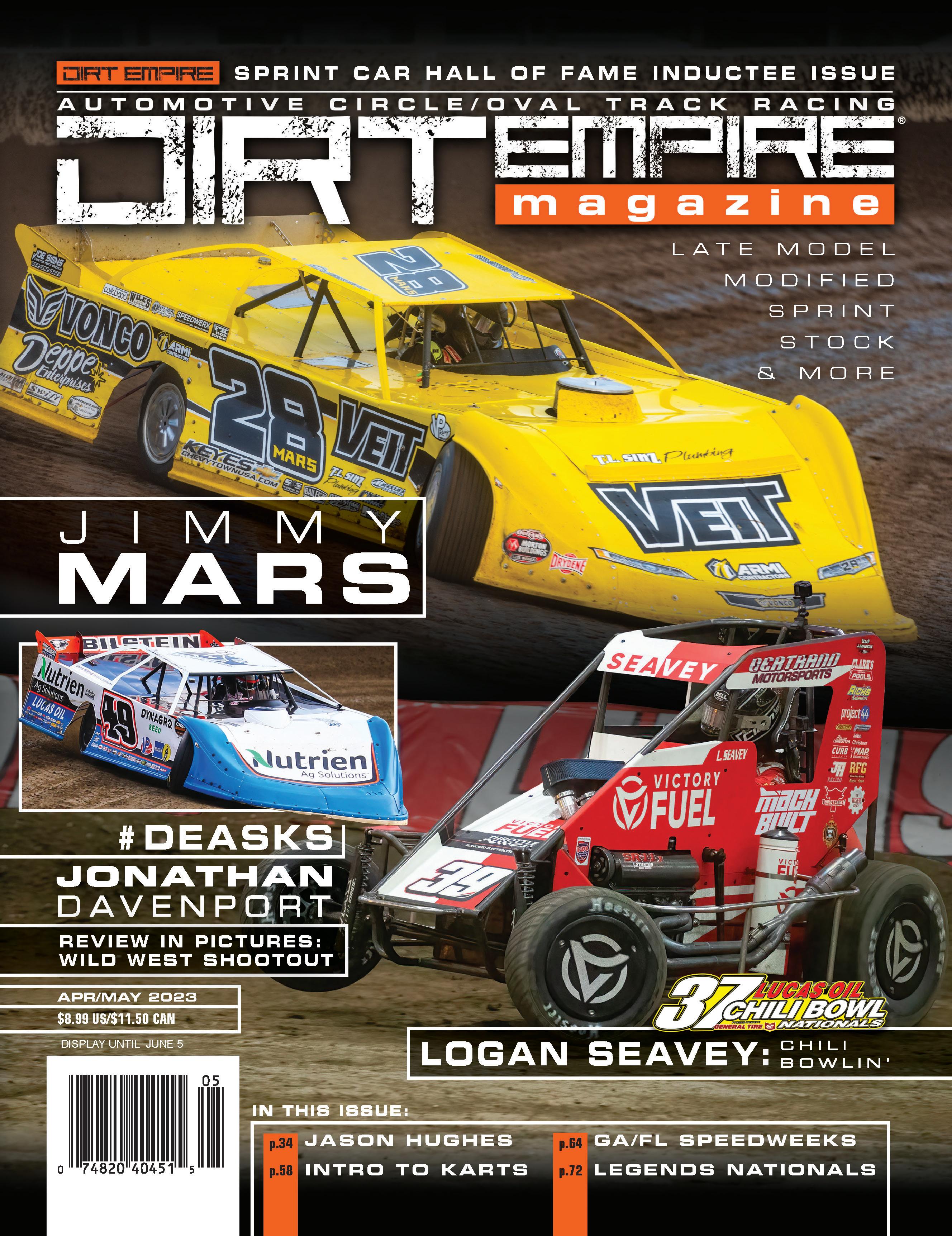



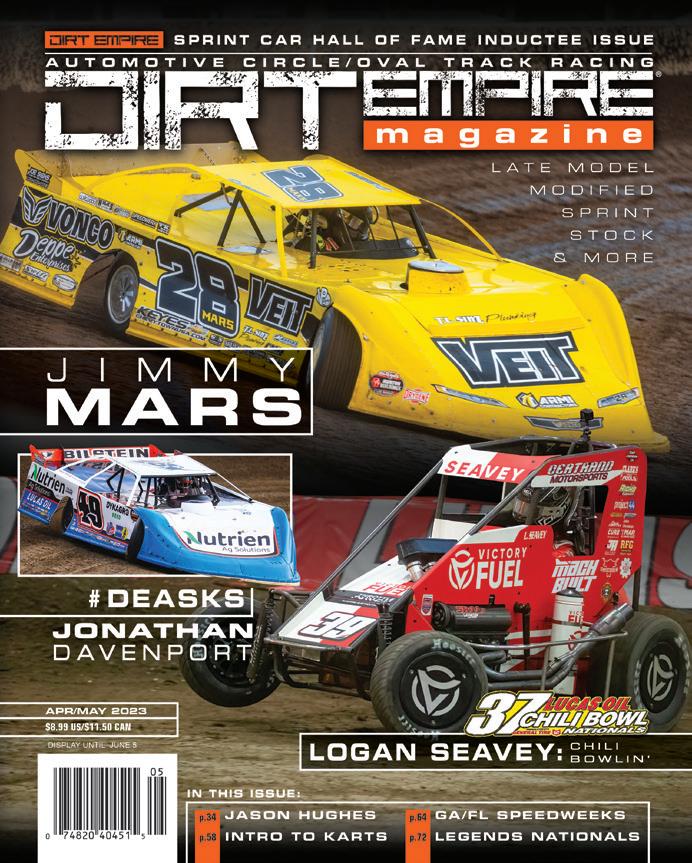
Issue 15 • Volume 03
APRIL/MAY 2023
OWNER/PUBLISHER
Adam Cornell
EDITOR
Justin Zoch
SUBSCRIPTION COORDINATOR
Abigail Cornell
WEBSITE COORDINATOR
Shaun Cornell
WORDS
Ashley Allinson, Ashley Zimmerman, Bert Lehman, Bill Blumer Jr., Bob Mays, Brett Swanson, Chad Meyer, Chris Romano, Cyndi Stiffler, Danny Burton, David Sink, Doug Kennedy, Doug Seeger, Elizabeth Madley, Eric Arnold, Gary Costa, Greg Soukup, Jessica Jenkins, Joanne Cram, Joe Duvall, Kelley Carlton, Kevin Oldham, Larry Weeks, Lee Ackerman, Melissa Coker, Mike Spieker, Odell Suttle, Scott Erickson, TJ Buffenbarger, Todd Heintzelman, Vahok Hill
PICTURES
Adam Mollenkopf, Andy Newsome, Bill Miller, Bill Taylor, Bob Mays, Bob Yurko, Brad Plant, Brandon Anderson, Brendon Bauman, Brian Bouder, Bruce Palla, Buck Monson, Buzz Fisher, Carey Fox, Chad Wells, Chris McDill, Chris Pederson, Conrad Nelson, Dan DeMarco, Danny Howk, David Campbell, David Giles, David Hill, David Pratt, Dennis Krieger, Don Laidlaw, Donna Rosenstengel, Doug Burgess, Doug Vandeventer, Glen Starek, Gordy O’Field, Greg Stanek, Greg Teel, Heath Lawson, Jacy Norgaard, Jason Orth, Jason Spencer, Jason Wells, Jeff Bylsma, Jim Collum Jr., Jim DenHamer, Jim Zimmerline, Jimmy Jones, Joe Orth, Joe Secka, John Dadalt, John Lee, John Rothermel, Jon Holliday, Joseph Swann, Josh James, Ken Kelly, Lee Greenawalt, Leif Tillotson, Mark Funderburk, Mark Sublett, Matt Butcosk, Michael Diers, Michael Moats, Mike Campbell, Mike Damic, Mike Feltenberger, Mike Howard, Mike Musslin, Mike Ruefer, Millie Tanner, Patrick Miller, Paul Arch, Paul Gould, Quentin Young, Rich LaBrier, Richard Barnes, Rick Neff, Rick Sherer, Robert Wing, Rocky Ragusa, Ron Gilson, Ron Sloan, Ryan Northcote, Scott Swenson, Seth Stone, Steve Walters, Tanner Dillin, Tara Chavez, Terry Page, Tim Aylwin, Tim Hunt, Todd Boyd, Tom Macht, Tony Hammett, Travis Branch, Troy Junkins, Tyler Carr, Tyler Rinkin, Zach Yost, Zakary Kriener
Advertising
email:
phone: 912.342.8026 Dirt Empire Magazine is published 6 times annually. Copyright © 2023 Dirt Empire Magazine. Dirt Empire is a registered trademark of Dirt Empire Magazine and cannot be used without prior written authorization. Any unauthorized use of the Dirt Empire Magazine Logo or related icons is strictly prohibited. All other trademarks are the property of their respective owners. All rights reserved. Dirt Empire Magazine and its writers and editors are not responsible for typos or clerical errors in advertisements or articles. Postmaster: Send all address changes to: Dirt Empire Magazine, PO Box 919 Brunswick, GA 31521 Subscription rate is $30 US annually for United States. $60 US for Canada and $97.50 US for all other International addresses COVER PHOTO CONTRIBUTORS: MARS - JACY NORGAARD DAVENPORT - JOSH JAMES SEAVEY - DAVID CAMPBELL POLE POSITION FOR SUBMISSION INQUIRIES, PLEASE CONTACT SENIOR EDITOR JUSTIN ZOCH: JUSTIN@DIRTEMPIREMAGAZINE.COM Brinn Inc. 4 DIRT EMPIRE MAGAZINE • ISSUE 15 - APRIL/MAY - 2023
Info:
ads@dirtempiremagazine.com
Jonathan Davenport had a 2022 campaign that was nothing short of amazing. Our own Ashley Zimmerman caught up with him to ask him about his career and future plans and goals.

6
8
FEATURES
16 #DEASKS – JONATHAN DAVENPORT
As he prepares to chase one of the final things left to complete his resume – a Lucas Oil Series title – we caught up with Superman and asked him your questions about his new crew chief, his new schedule, his favorite track and what the heck a Watusi is and why he’s riding one!
20 REVIEW IN PICTURES
– WILD WEST SHOOTOUT
As soon as the calendar flips, it’s time for the best late model and modified racers to head to the Southwest and this year they all found a new home at Vado Speedway Park and Jonathan Davenport and Dereck Ramirez certainly found it to their liking.
24 REVIEW IN PICTURES
– CHILI BOWL MIDGET NATIONALS
California’s Logan Seavey broke through for his first Chili Bowl win and, in the process, returned the Swindell to the pinnacle of an event they dominated but had not won in over a decade. We’ve got all the photos and highlights from a wild week indoors.
36 CLASS OF 2023
– NATIONAL SPRINT CAR HALL OF FAME
For the second straight year, we partnered with the National Sprint Car Hall of Fame in Knoxville, Iowa, to produce the official induction biographies of the 13 men to be inducted into official legend status off the second turn of Knoxville Raceway in early June.
52 MARS LANDING – JIMMY MARS MOVES ON
One of late model racing’s all-time greats has called it a career on the racetrack and we chat with Jimmy Mars to not only recap his career and retirement but to touch base on the future of his race team and business.

CONTENTS
PAGE 16
Fore Word – Adam Cornell
From the Editor – Justin Zoch 10 News and Notes 12 Graphic Language 14 #DEASKS – Jonathan Davenport 20 Review in Pictures – Wild West Shootout 24 Review in Pictures – Chili Bowl Midget Nationals 34 Short Track Stars – Jason Hughes 36 National Sprint Car Hall of Fame Inductees 52 Jimmy Mars 58 Kart Racing Introduction 62 Engine Builder Spotlight 64 Review In Pictures – Georgia/Florida Speedweeks 70 Dirt Chronicles 72 Legends Nationals 74 Shooter at Large 78 Advertiser’s Index 80 Pit Stop
THE OFFICIAL MARKETPLACE OF DIRT EMPIRE MAGAZINE
2023
ISSUE 15 •
DIRT EMPIRE MAGAZINE • ISSUE 15 - APRIL/MAY - 2023 5
Photo: Josh James
fore WORD
FOOD FOR THOUGHT
tent right next door, we were able to enjoy the smell of every new batch they popped and couldn’t help but buy a bag (or two) during the event.
Not many days later, Florida tracks flipped on the lights and started racing: All-Tech, Bubba, Volusia… all great tracks and great places to watch the best in the business square off for some nice paydays.
By Adam Cornell
DO YOU SMELL THAT? It’s race season. After months of trade shows and preparing for the season, it finally arrived. It comes a bit earlier down south where I now call home. Just a stone’s throw away from the Dirt Empire headquarters is Golden Isles Speedway. It’s a fantastic place to kick off the Lucas Oil Late Model racing season – a fast track that doesn’t really have a bad seat in the house. The facilities have been upgraded with new ownership and sitting just a few miles off Interstate 95, it’s easily accessible for anyone heading south for other Florida Speedweeks events.
Walking through the pits at Golden Isles and seeing the super late models, 604s and the 602s just filled my heart with appreciation for this privilege I have: documenting the sport of dirt track racing and having fun while doing it.
There is nothing like a sunny day at the track, watching everyone wrenching on their cars and then settling into the stands for an amazing spectacle of racing. It’s what we live for. And after multiple months off, it just felt so right to be back at it again.
One of the things I’d forgotten I’d missed so much in the months off was all the track side food.
I’m not talking about the everyday dirt burgers, but the special event foods where it seems more like a state fair midway when it comes to food choices.
At Golden Isles there’s a popcorn vendor who was cooking up freshly made, gourmet popcorn. I’m talking melt in your mouth traditional butter or caramel covered popcorn. With the Dirt Empire
I love the food vendors at Volusia Speedway during Speedweeks. Call me a simple man with simple tastes and I’ll show you delicious authentic New York style pizza (seriously, they were from Long Island!) and steak on a stick or crispy funnel cake. But that wasn’t all! There were delicious Waikiki noodles, Philly cheesesteak sandwiches, egg rolls and gyros! For snacks fresh squeezed lemonade or ice cream were also available. All of it was delicious.
Normally when I go to a race, I end up walking a couple of miles back and forth through the pits, out to the truck and back and so on. It’s not rare for me to lose a pound or two at a race just from the walking. Never at Volusia, though. If I didn’t exhibit some level of self-control, I’d have packed on a couple pounds every day I was there.
When I think about why I love the being at the track so much, it’s not just about the cars and the racing, though that’s the primary reason to go. What makes it great are the people, the food, the whole atmosphere. I love the sights and sounds at the track, but I also love the smells and tastes at the concession stands.
Whenever I travel I always try to find an interesting menu item at the concession stand and more times than not, I’m disappointed. Burger. Fries. Hot dog. Chips. Cans of Coke (is Pepsi okay?) There are so many opportunities to make the concession stand another major reason for people to come out to the track.
Some tracks have found that by offering a specialty item or two at their concession stand, they set themselves apart from anything else available in the area.
One former track promoter related to me how he had different food trucks come out to the track for each event, and he would make sure he promoted that fact on social media and the radio and TV ads he ran. Why? He believed that someone who might have been on the fence about going to the track on Friday night, would get down off that fence and rush to buy their grandstand ticket if they found out they could get awesome tacos or jambalaya at the track. Plus, he said the race teams loved it.
Some tracks have named double or triple burgers in honor of retired track champions or local stars, or added jalepenos to a burger and named it after an especially spicy competitor. Promoters should continue to be creative about their food offerings and make sure that they promote it. After all, food can be a big selling point for anyone to go anywhere.
I know, personally, as long as they’re cooking up good food and good racing, I’ll be there.
If your track has a particularly good item at the concession stand, share it with me on social media; Facebook: @dirtempiremagazine or Twitter: @ magazinedirt. I’d love to see all the great tastes out there that make your trackgoing experience special.
Now, let’s go racing… I’m hungry.


6 DIRT EMPIRE MAGAZINE • ISSUE 15 - APRIL/MAY - 2023
Photo: Melissa Tousley

from the EDITOR
AN ACTUAL HEART
By Justin Zoch
IT WAS A SNOWY but not particularly cold winter in the Minneapolis area where I live. For most of the months of January and February, our family did what families do that don’t own race cars that race in Oklahoma, New Mexico or Florida during these months – we hunkered down and got through it.
One Sunday morning, we were all watching CBS Sunday Morning and they had a segment about how the new Artificial Intelligence format ChatGPT (which stands for Generative Pre-trained Transformer, apparently) has the potential to take over millions of white collar jobs in the “knowledge economy” and is currently being used to write things like college papers and online articles. Scary stuff if you ask me.
I’m in the camp that thinks we need more intelligence, less artificial intelligence. My wife and I both gave big, hearty, disappointed sighs and when our boys asked what was up, I replied “a couple of nerds just ruined the world”. With a little hindsight, I mostly stand by that statement.
I’m not against technology, although anyone who knows me might find that
RACE CARS ARE INHERENTLY COOL AND IT’S THE MACHINES THAT MOST LIKELY INITIALLY ATTRACTED OUR ATTENTION TO THE SPORT, BUT THE MACHINES AREN’T ENOUGH ON THEIR OWN.
hard to imagine, but I do really hate talking to machines, be it Alexa or Siri or a computer voice asking me to say yes or no on a service call. Now, not only am I expected to welcome talking to a machine, but I’m supposed to care about their opinions? I am against something that doesn’t strike me as authentic, as I’ve shared before in this space and I don’t see how a computer aggregating facts and opinions from across the internet is an any way interesting.
So, what’s this got to do with dirt track auto racing in 2023? Well, obviously, despite the dangers inherent in our sport, I don’t think I’ll live long enough to see robots racing cars but I could certainly be wrong. It might happen but I won’t be watching. No, the ChatGPT hits me more in the way that we interact as race fans with racers and particularly how it affects what you’re holding in your hand.
Technology like smart phones and the larger revolution of social media has been incredible for bringing racers closer to their fans and Jonathan Davenport talks in this issue about how he loves to get on his phone and interact when he’s riding home in the hauler or is at an airport waiting for a flight. Conversing directly is only possible through that technology but that’s where I draw the line. What makes it interesting is that it connects human to humans. Let’s also not forget that his quotes in this issue came from our #DEAsks section, the brainchild of Ashley Zimmerman that allows fans to ask questions that appear in print magazines of their favorite personalities.
Sure, that chat bot could probably scour the Internet and produce a Hall of Fame bio for Chad Kemenah (I actually tried to do this and got all the way to Create A Profile on the login page before giving up!) but there is no way it could recreate the conversations that go on to these pages. You’ve probably noticed a lot of our stories are straight Question and Answer interviews and that will
continue because its those types of interactions I find the most valuable. The interview Kelley Carlton did with Jimmy Mars is so great because those are two guys who’ve known each other for decades and are comfortable talking with each other about racing, family and life. It’s real. It’s also really good and starts on page 52.
Race cars are inherently cool and it’s the machines that most likely initially attracted our attention to the sport but the machines aren’t enough on their own. Its always been man vs. machine and that’s how I feel about ChatGPT. If you take the human out of the equation, it’s just not interesting. So, even if you find something in all these pages boring or offensive, know it came from an actual beating heart.

8 DIRT EMPIRE MAGAZINE • ISSUE 15 - APRIL/MAY - 2023
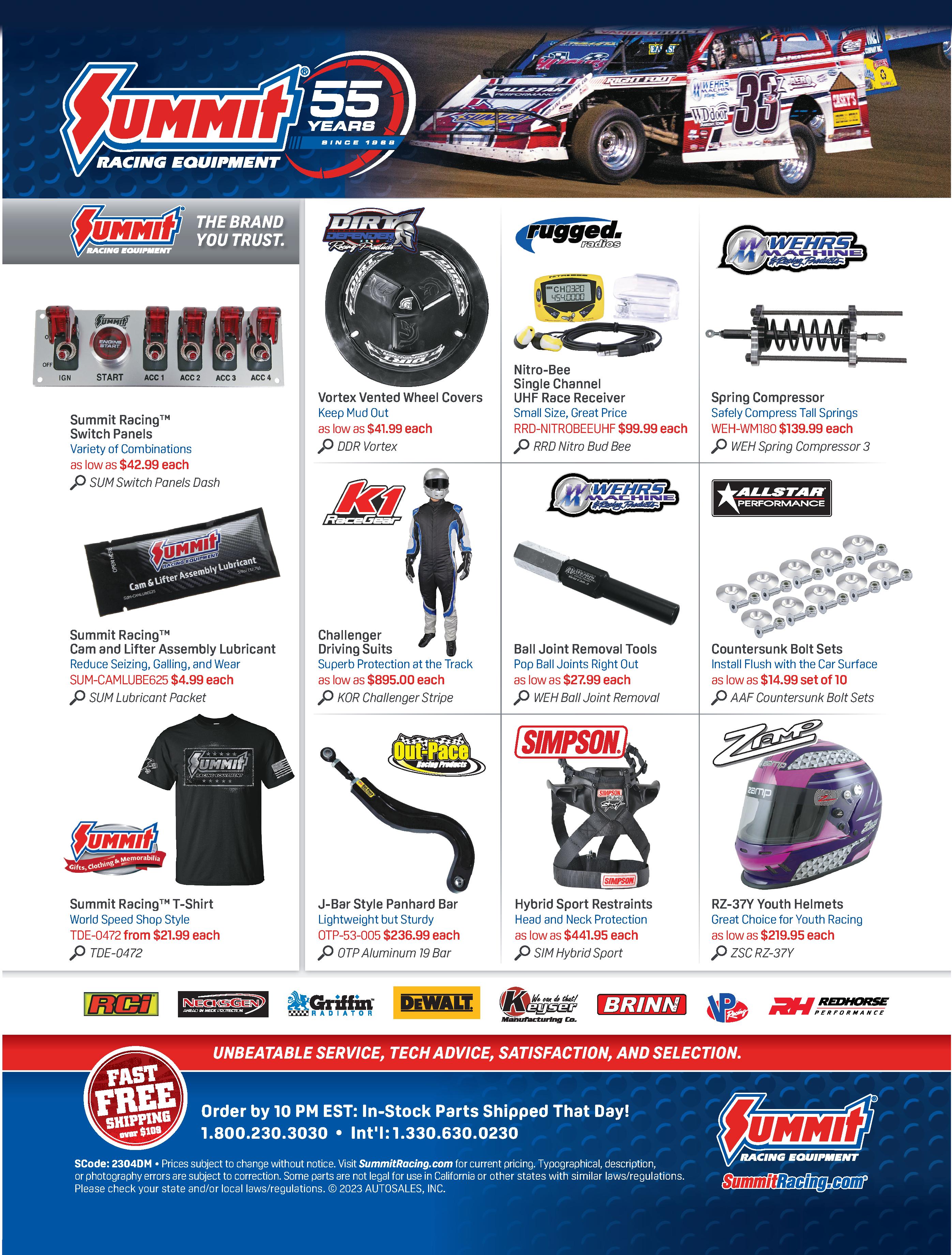
news NOTES & USCS
SPRINTS REACH MILESTONE 900TH AT HENDRY COUNTY
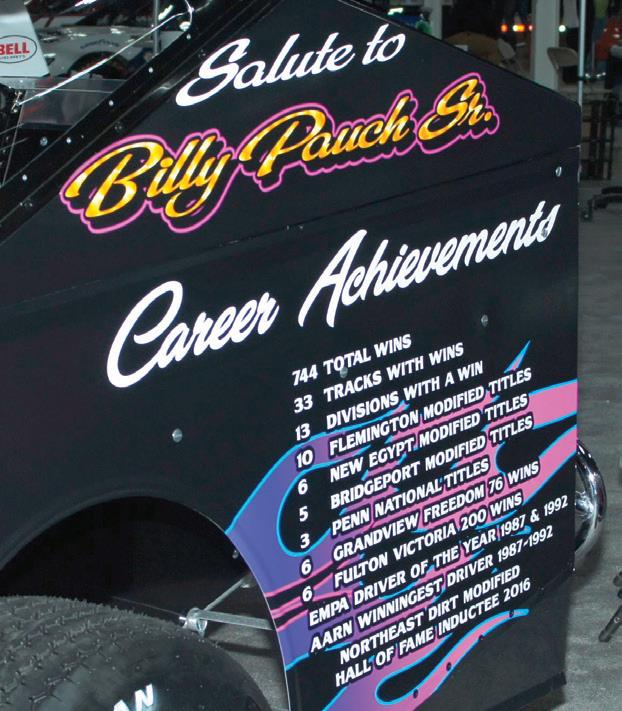
BILLY PAUCH: AN APOLOGY AND A TRIBUTE
In the last issue of Dirt Empire, we erroneously included a photo of Billy Pauch on fire in the Danny Bouc story. While Bouc is probably happy to be confused with Billy The Kid, we know better. Apologies all around. Meanwhile, at the Motorsports Racecar and Trade Show in Philadelphia, Pennsylvania, Billy Pauch Jr. had his 2023 ride on display showing a tribute to his father and his accomplishments. There was also a large collection of some of Pauch’s most famous race cars and memorabilia on display.
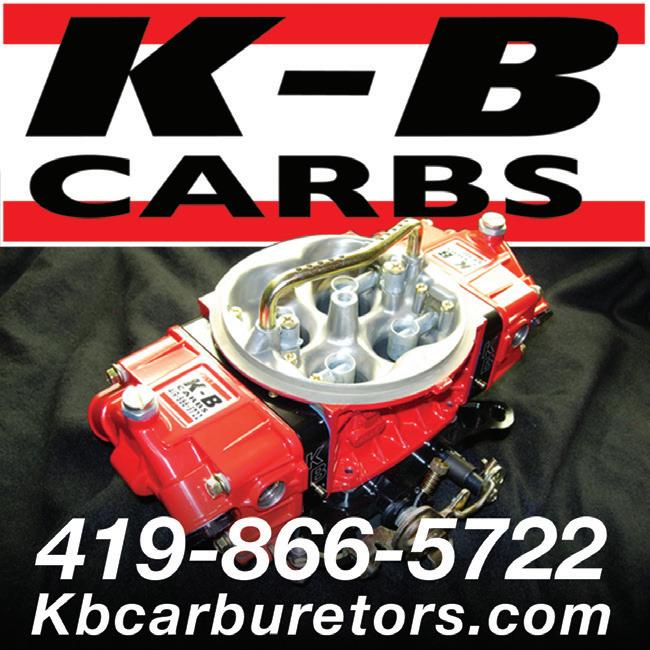
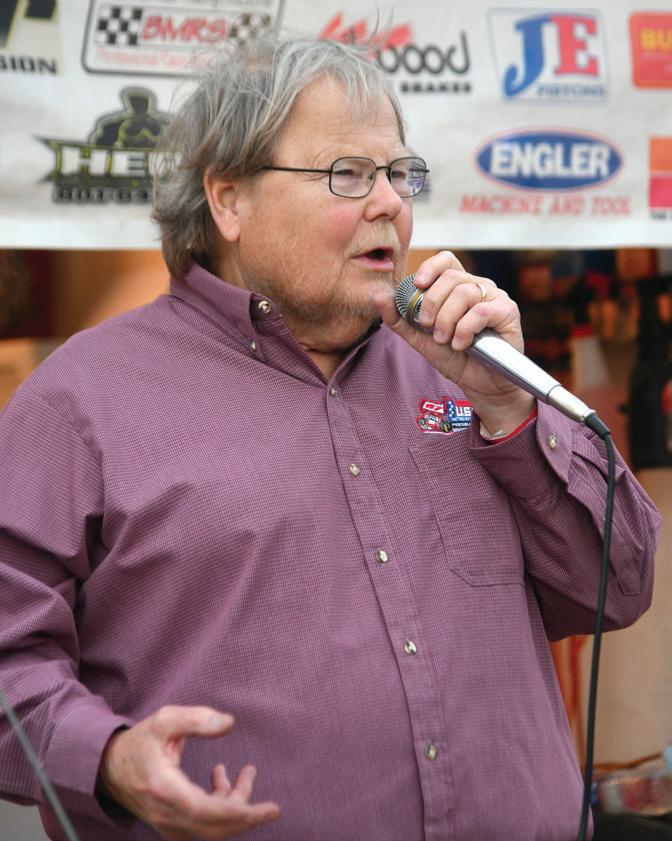
THE USCS SPRINT CARS reached an impressive milestone when they got their season started at the Hendry County Speedway in Clewiston, Florida, in early February when the series hosted their 900th race. Pete Walton started the series back in 1997 when their was a severe paucity of sprint cars and sprint car racing in the southeast corner of the United States. In fact, they were so sparse that the USCS sanctioned races on dirt and pavement. Walton continues to be the driving force behind a series which now boasts healthy car counts and headline drivers like Hall of Famers Terry Gray and Danny Smith. Pennsylvania’s Mark Smith scored the win on a special night in southern Florida.
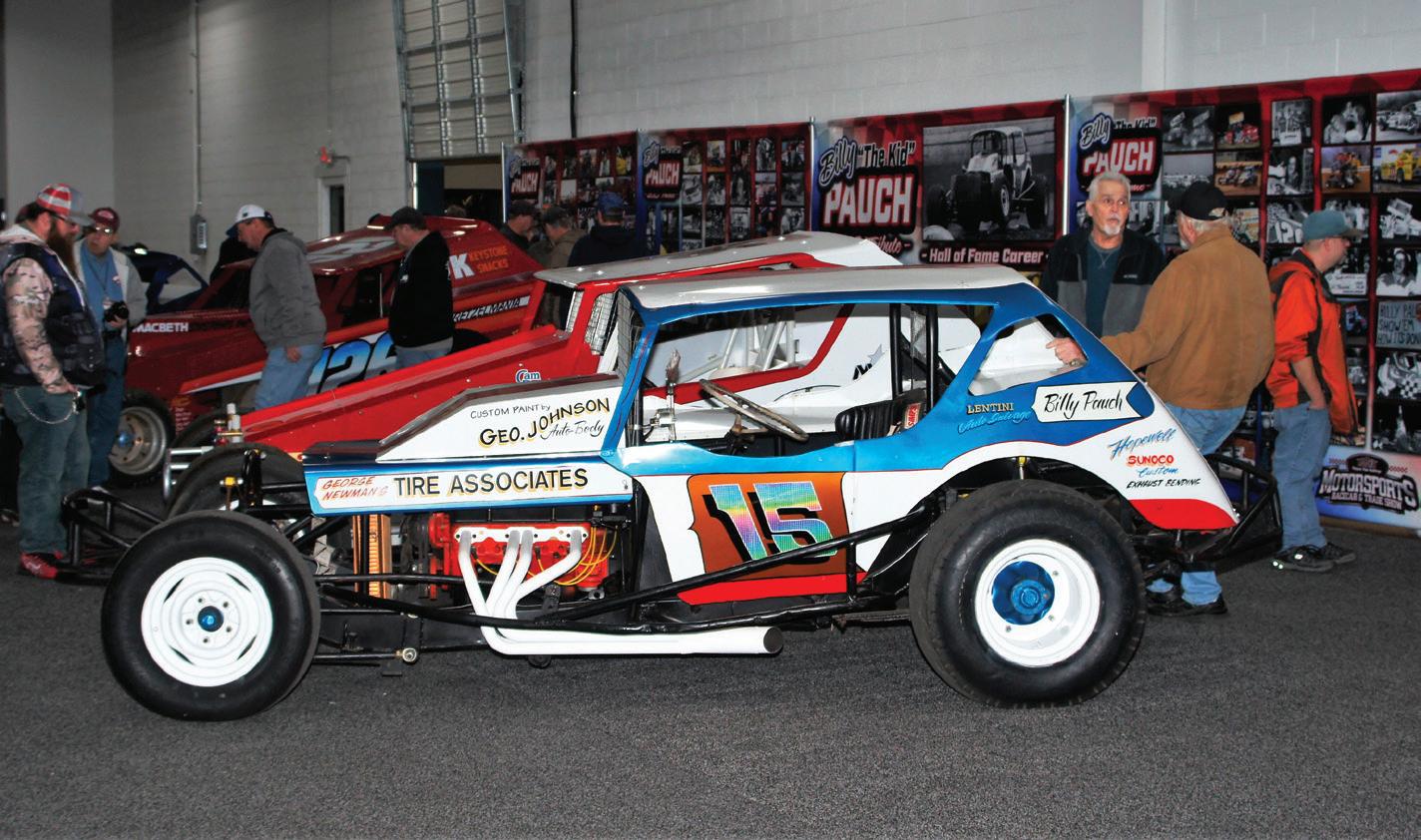

K-B Carbs
Photo: Paul Arch
10 DIRT EMPIRE MAGAZINE • ISSUE 15 - APRIL/MAY - 2023
Photos: Mike Feltenberger


T&D Machine Dominator Race Products DIRT EMPIRE MAGAZINE • ISSUE 15 - APRIL/MAY - 2023 11
the lighter side of DIRT
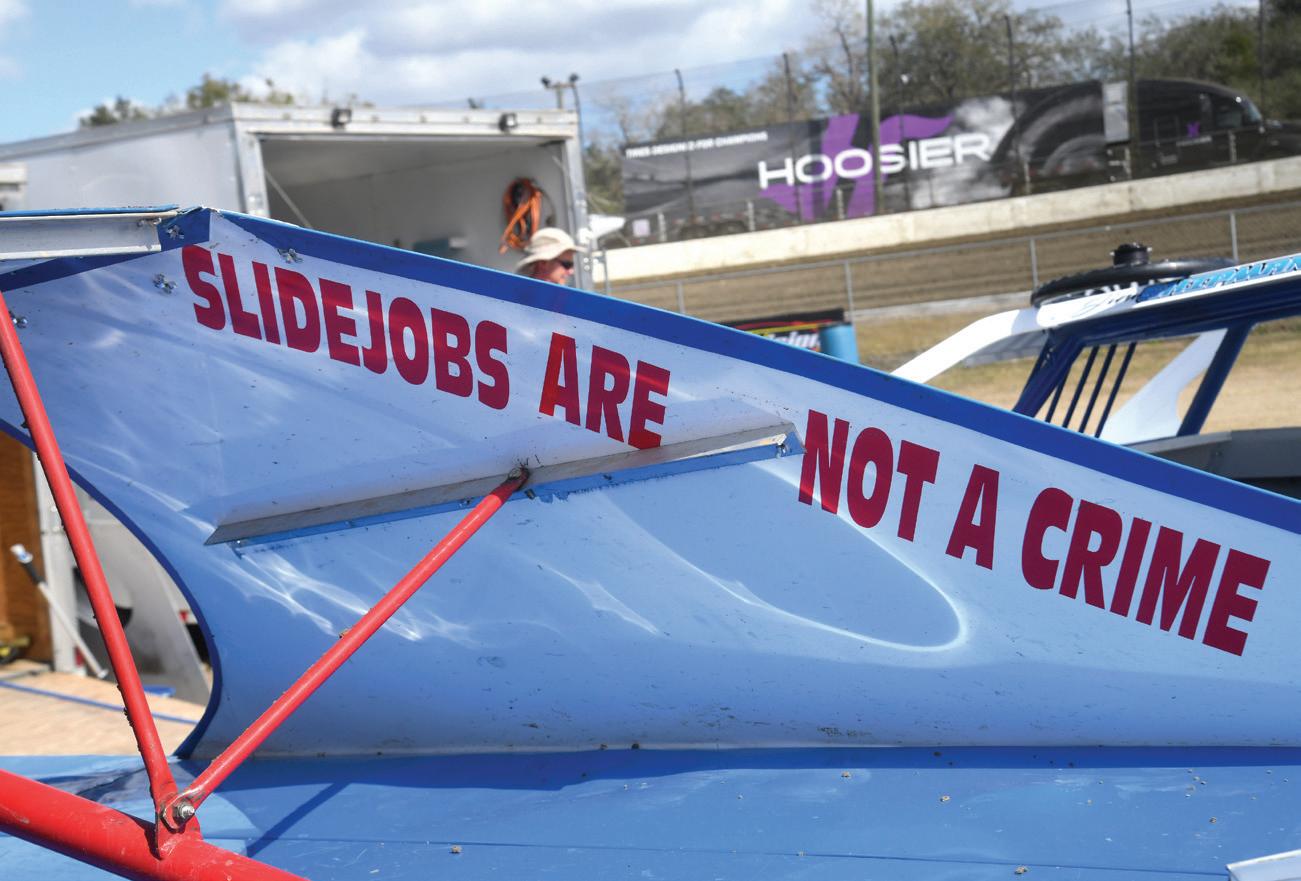
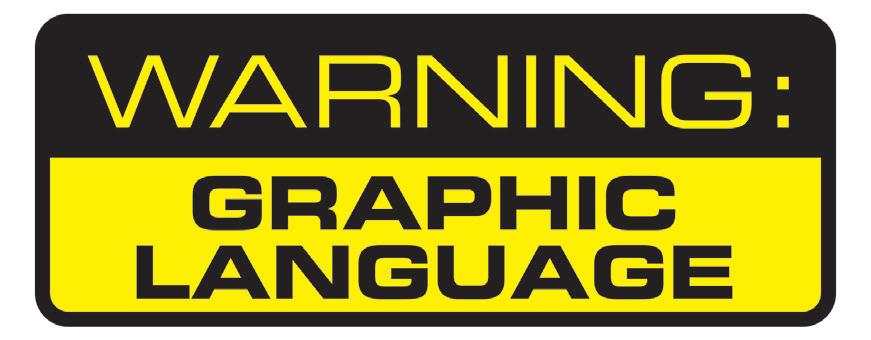
ASIDE FROM SPONSORSHIPS, racers use their cars to convey everything from politics to jokes and to express their personalities. Here are some of our favorites from the last couple of months.
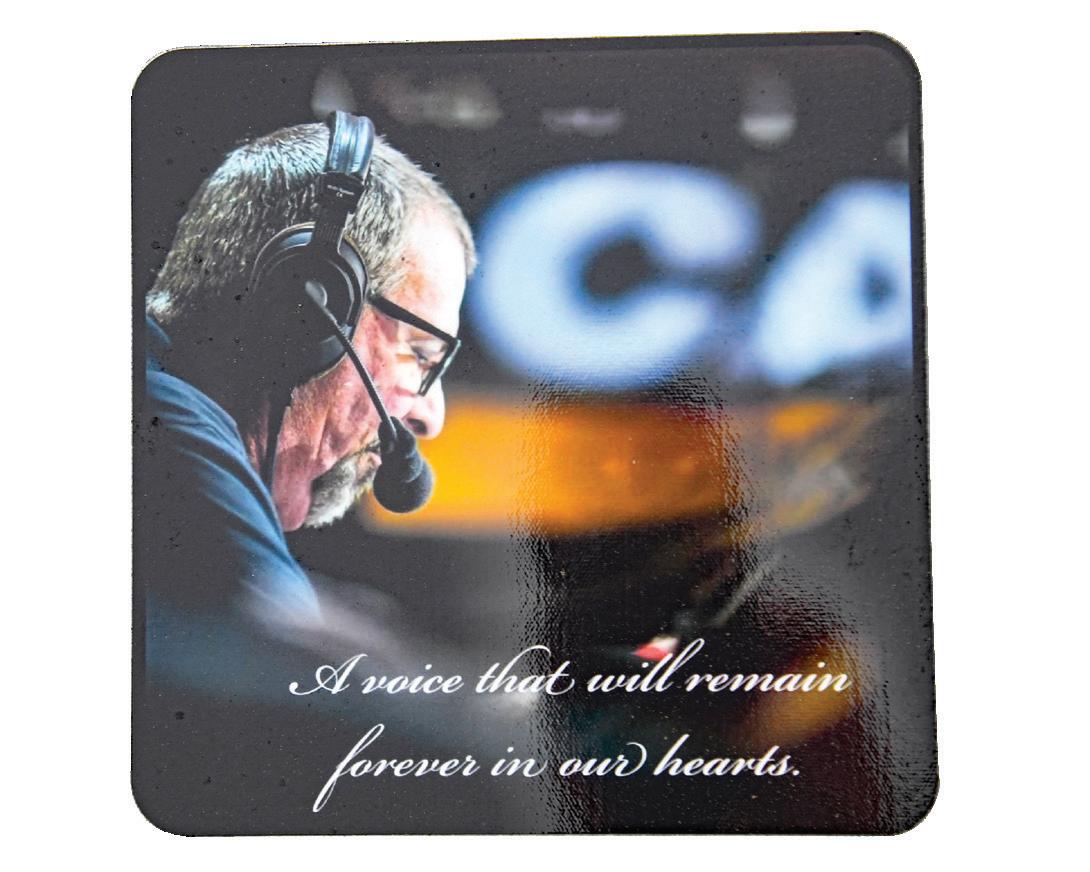
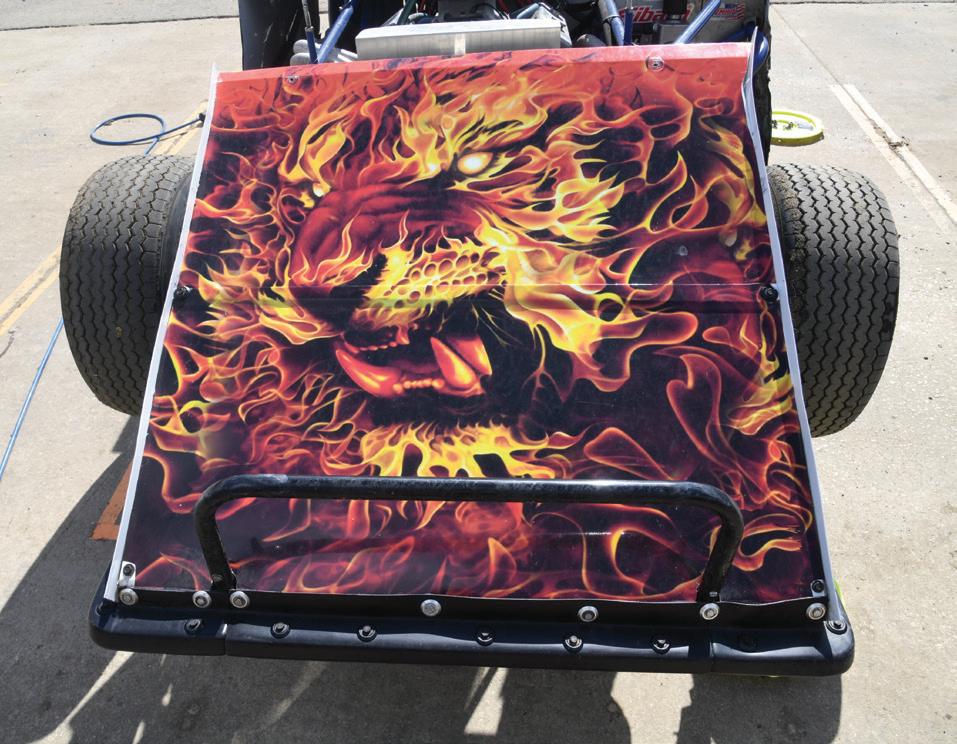
Flaming Tiger? Fire Lion? The dragon Smaug from the Hobbit? No matter the animal, modified racer Jim Shipman must get motivated every time he walks around his car with this image on the front of it.
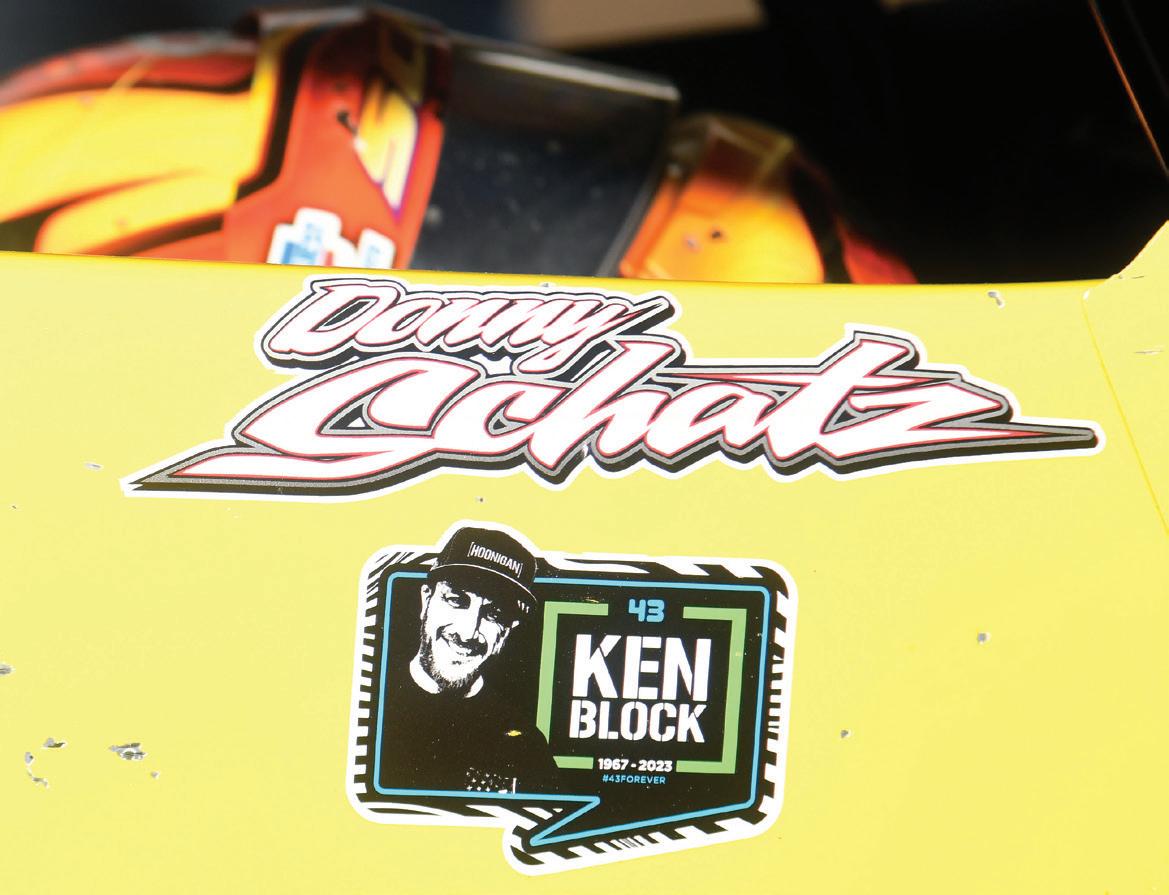 Indiana’s John Baker brought his UMP modified down to Volusia and his strong stance towards letting it hang out and making the other guy use the brake.
There were several drivers with stickers honoring the late Rick Eshelman on their cars to start the season but Ryan Gustin took it a step further and had this tribute blown up to cover the entire roof of his car. Meanwhile, during Speedweeks, news broke that popular rally driver Ken Block was killed in a snowmobiling accident and drivers like Donny Schatz honored his memory.
Indiana’s John Baker brought his UMP modified down to Volusia and his strong stance towards letting it hang out and making the other guy use the brake.
There were several drivers with stickers honoring the late Rick Eshelman on their cars to start the season but Ryan Gustin took it a step further and had this tribute blown up to cover the entire roof of his car. Meanwhile, during Speedweeks, news broke that popular rally driver Ken Block was killed in a snowmobiling accident and drivers like Donny Schatz honored his memory.
12 DIRT EMPIRE MAGAZINE • ISSUE 15 - APRIL/MAY - 2023
PHOTOS BY PAUL ARCH

Michael Altobelli from Saxton, Pennsylvania had a lot of fun with this interesting tire/ suspension cover with car graphics. Made people look twice while strolling through the pit area!
Inspiration before climbing in. Mike Hart has a reminder to climb into that race car and just do what comes naturally while veteran Matt Westfall and his owner Ray Marshall have a quick reminder of what all the money and time is really all about and to go out there and do something memorable.


We love it when a race team uses their number to promote a sponsor (think Lon Carnahan’s R19 World of Outlaw team promoting his insulation business) and owner Shannon Eifert used the number 50YR to help Home Pro Roofing sell some shingles.
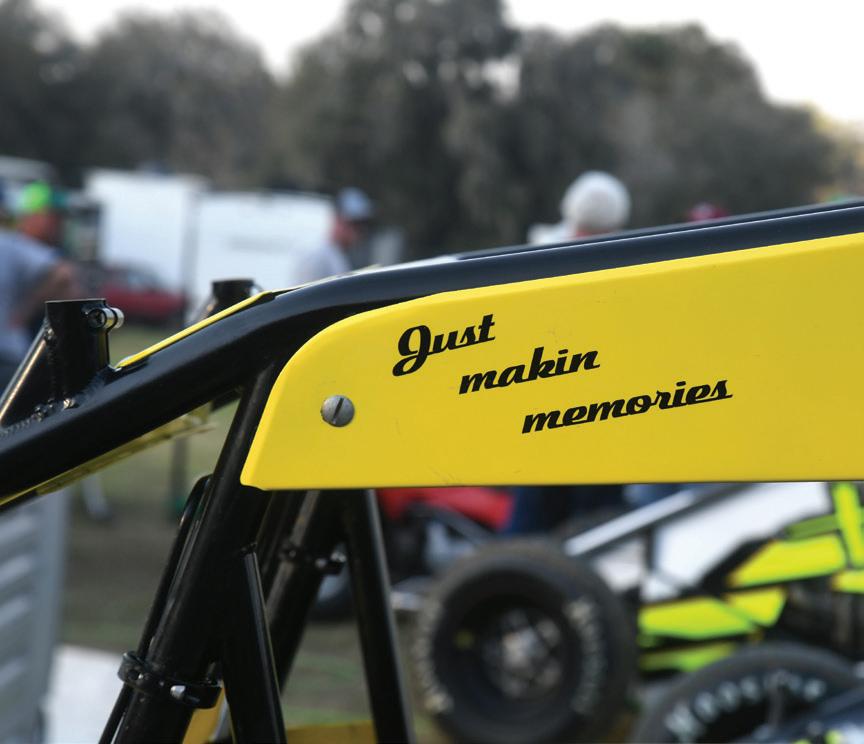
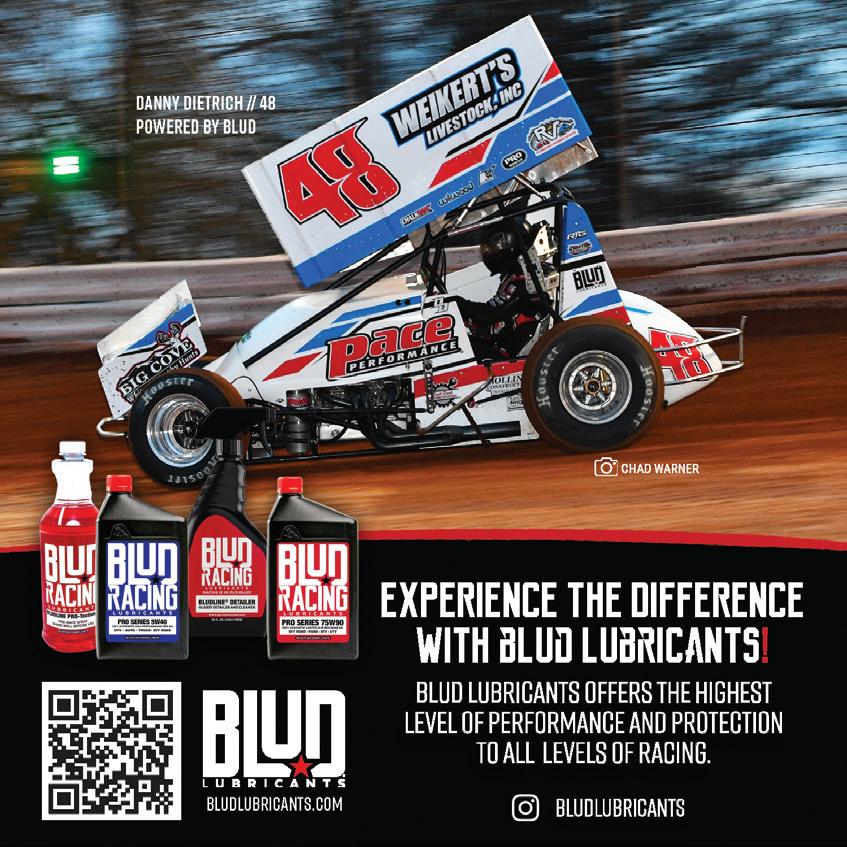
DIRT EMPIRE MAGAZINE • ISSUE 15 - APRIL/MAY - 2023 13
DIRT EMPIRE ASKS
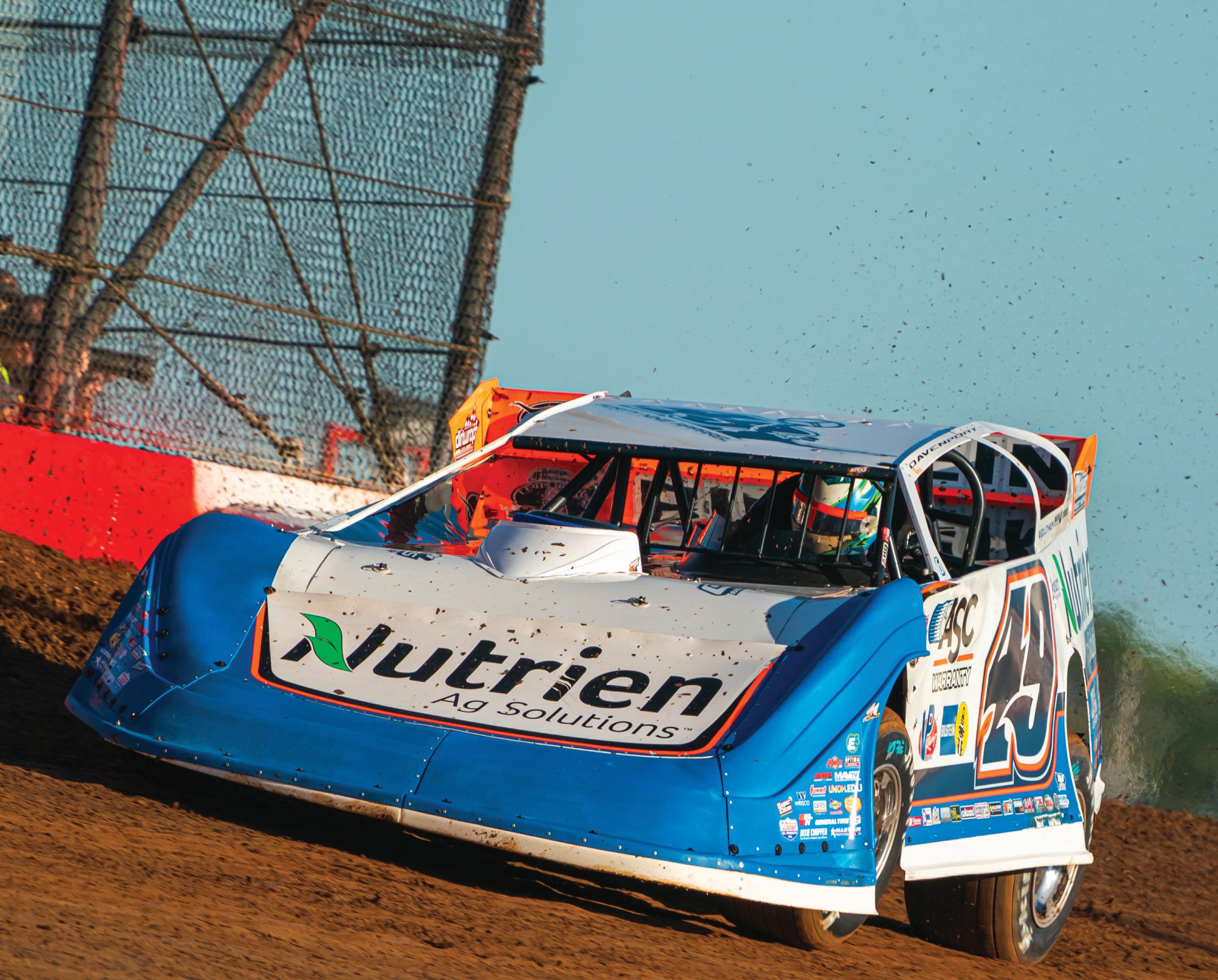
Dirt Empire is taking questions provided by YOU and will seek out your favorite drivers to get you the answers to your long awaited questions! All you have to do to submit your question is just Like Dirt Empire on any social media and include #DEasks with your question. Then watch for the next issue to see if your question is featured!
BY ASHLEY ZIMMERMAN
HYPOTHETICALLY, as race fans, we could likely bet money that when it comes to google searches the words late model racing yielded its top results with the name Jonathan Davenport as Superman shut the door on the most prolific and profitable season of his career in 2022.
JONATHAN
With earning well over the $2 million dollar mark, Davenport also marked his name in the history books of the most prestigious of Crown Jewels, such as the Eldora Million, Knoxville’s Late Model Nationals, the World 100, with a list that continues on. If there was a headline, there was Jonathan Davenport.
However, it’s not the first time Davenport has found success and as the 2023 season begins, Davenport has proven it certainly will not be the last. In fact, in true fashion of keeping fans on their toes, Superman will embark on chasing the final jewel for his crown, a Lucas Oil Late Model Championship. No better time to commit to a series than one that favors consistency, winning ways, and concludes at Davenport’s favorite track, one he’s proven time and time
again to dominate, Eldora Speedway.
While Davenport has answered many questions throughout the 2022 race season, he hasn’t answered YOURS. With 2023 underway, it was time to sit down with Jonathan Davenport and pick his brain with some of our most highly requested fan submitted questions. Don’t worry, we dug deep into the vault to ask everything a fan could imagine about behind the scenes and everything in between for all the answers from the normally very private Jonathan Davenport.
Dirt Empire: At the end of the season, your long-time crew chief left the team. What did you look for in finding a new crew chief?
Jonathan Davenport: Somebody with experience, someone we thought would
14 DIRT EMPIRE MAGAZINE • ISSUE 15 - APRIL/MAY - 2023
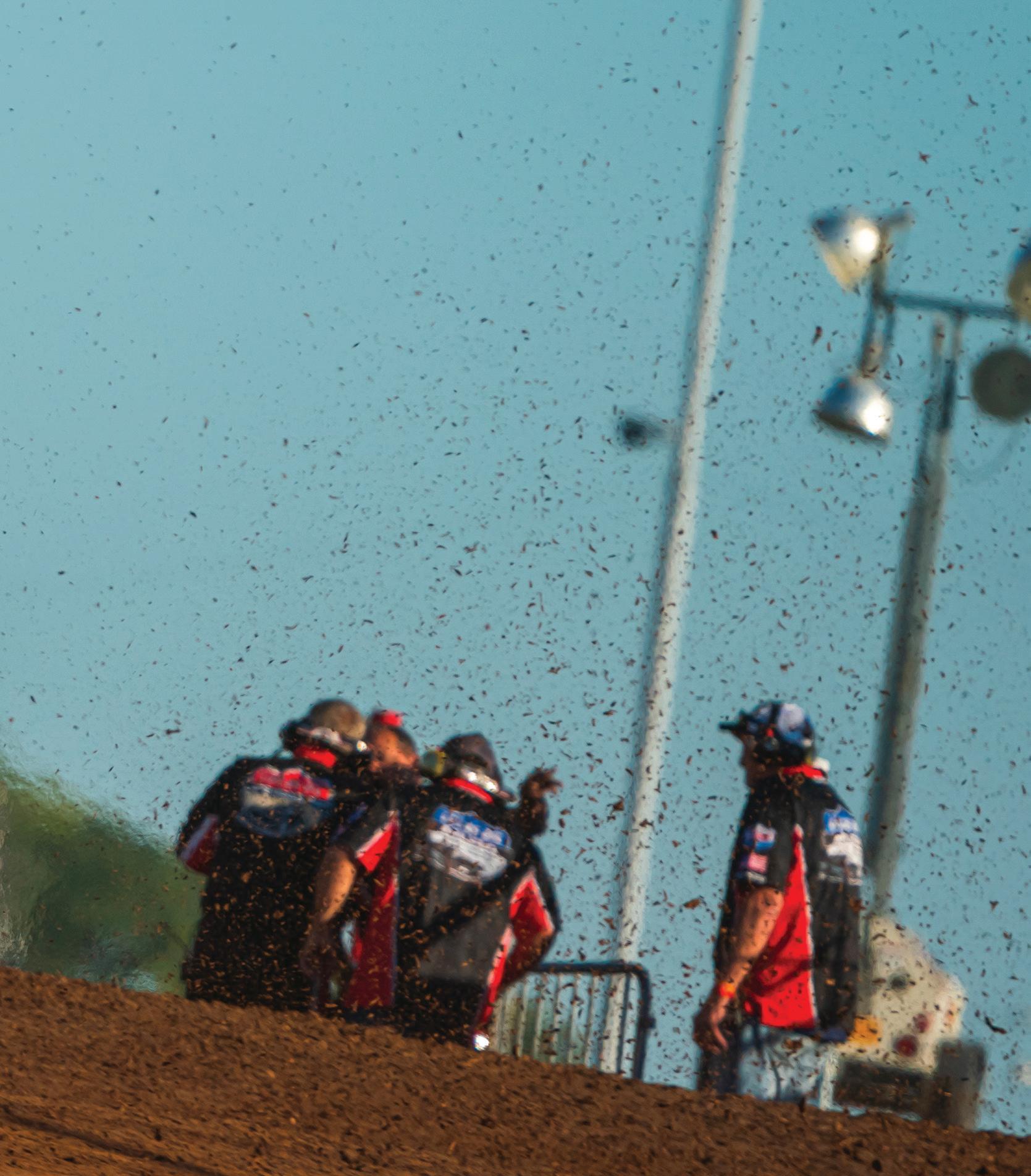
DAVENPORT
JD: Eldora, it’s our biggest stage that we go to, we draw the most fans there, and the biggest races are there. Everything just means a little more there.
DE: Speaking of, Eldora is a track that you are exceptionally good at, and you’ve stated it ranks as one of your favorites. When the announcement was made that the Million this year will be a sprint car, was there any part of you that pondered jumping a sprint car and taking a chance at it again?
JD: No, not really. I mean obviously it would be cool to run for a million dollars, but I couldn’t, I wouldn’t want to. That’s going to be the biggest race of the year, biggest race ever, so the drivers in the best sprint cars are going to run there. I don’t think an outsider even has a chance to come in there and try to win it, let alone make the race. The only reason you would want to go to that race is to win, and I know I’m not going to go there to win, so I’m not going to go there to just try and make the race.
DE: While you’ve crossed a lot of races off of your bucket list, what’s left? Is there another form of racing and race you’d love to win if you could have ever explored other opportunities?
be with us for a while. We had several other people we were looking at, but we didn’t think they would stick around too long. Someone who was a really good mechanic, obviously someone we can get along with really well, and someone in a little bit younger of a generation than me. Someone who would just fit what [team owner] Lance Landers and I had already put in place.
DE: The start of this season, the Wild West Shootout, you were not only successful but very consistent on the track. How does early momentum like that boost your confidence and outlook on the season?
JD: Well, my confidence was there in my car and in the team that we had put in place. We just had to get confidence
in the new team on just how I like to do things, how everything works. It was mainly more for them than it was for me. It helped them more that we ran well than it did me.
DE: You recently announced returning to running the Lucas Oil series. Aside from the added money, and the appealing schedule, what else about the changes Lucas Oil has made for the 2023 season excite you?
JD: Mainly just the points fund money, and the last race being just the top four in points, with the last race for the championship at Eldora, may the last man win there.
DE: What track do you look forward to visiting each year and why?
JD: As far as the late model side goes, I still have to win a Dirt Track World Championship. I think that’s the only Crown Jewel I haven’t won yet. I don’t really have anything that I really want to set out to race in particular, I think I’d like to try to run a sprint car. Just go somewhere to practice, I’m not sure I’d really want to race, but I’d like to make a few laps in one.
DE: Your entire racing career has been full of incredible highlights. What has kept you so grounded and humble even with the large amount of success you’ve experienced?
JD: My upbringing from my mom and dad, that’s how I was raised, and it’s how I want to raise my son.
DE: While the last season must rank up on your most memorable racing
DIRT EMPIRE MAGAZINE • ISSUE 15 - APRIL/MAY - 2023 15
Photo: Mike Musslin
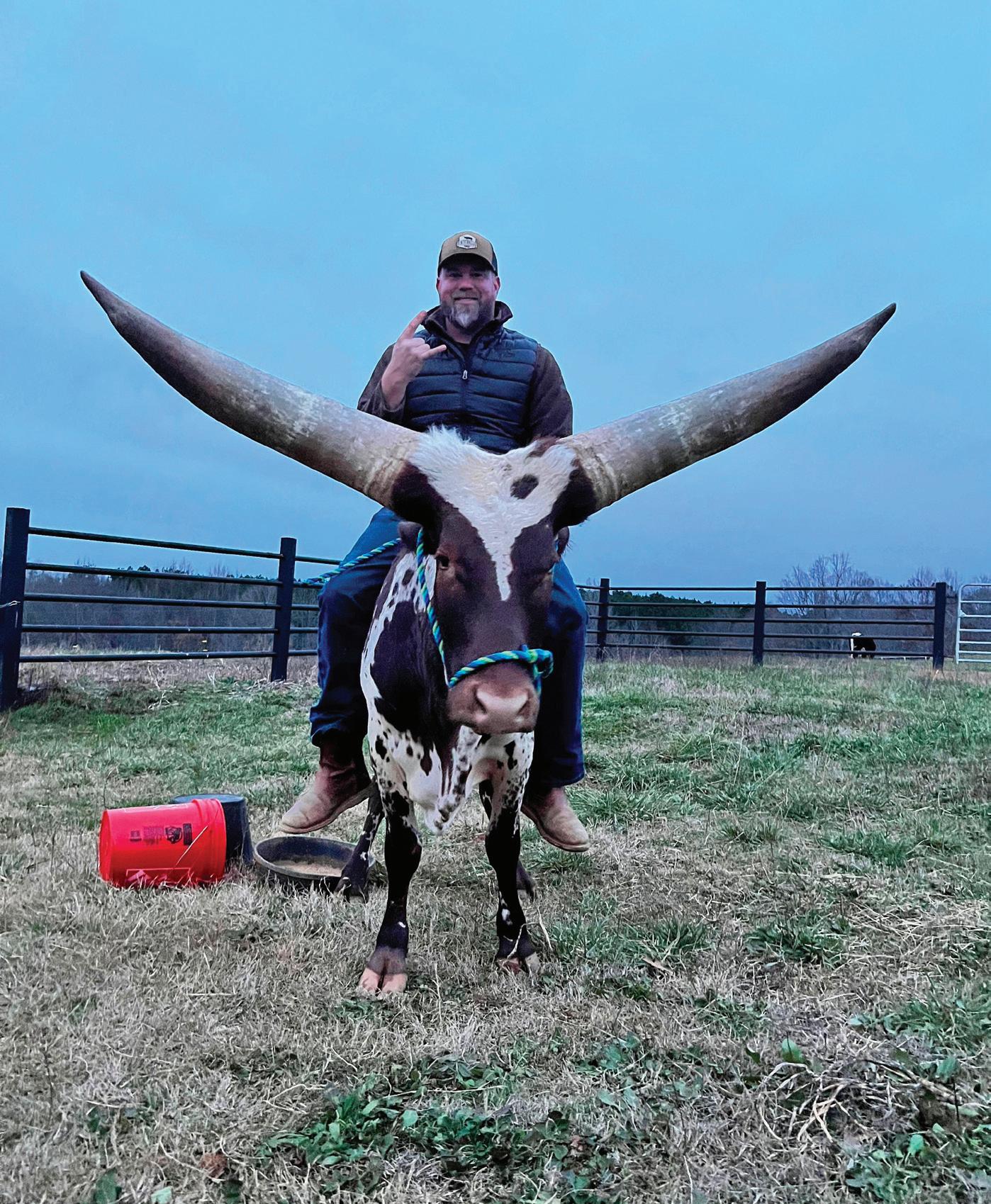
moments, is there a part of your career that you look back on fondly and enjoy reminiscing about?
JD: There have been a lot of memories since my career started, but definitely the 2015 season in the dirt late model world and how we did that. Kevin (Rumley) was working a fulltime job, he pretty much designed the chassis, he and his dad (LeRoy Rumley) built the motors, we did all of the stuff in house. It was really cool how we did that.
DE: What is your WHY behind wanting to race late models?
JD: [he laughs] Truthfully, it was just kind of where I ended up. I was on a different path, trying to make it to Cup racing, and it just didn’t work out for me. So, I fell back into late models. My grandpa gave me a ride for a couple of races until we could get our own car. That’s just what I’ve been doing ever since, now I’m just trying to make a living at it.
DE: What’s one piece of advice you would share to driver’s just starting out?
JD: There is no substitute for laps or experience. Whatever you can race, whenever, no matter what it is, just log as many laps as you can.
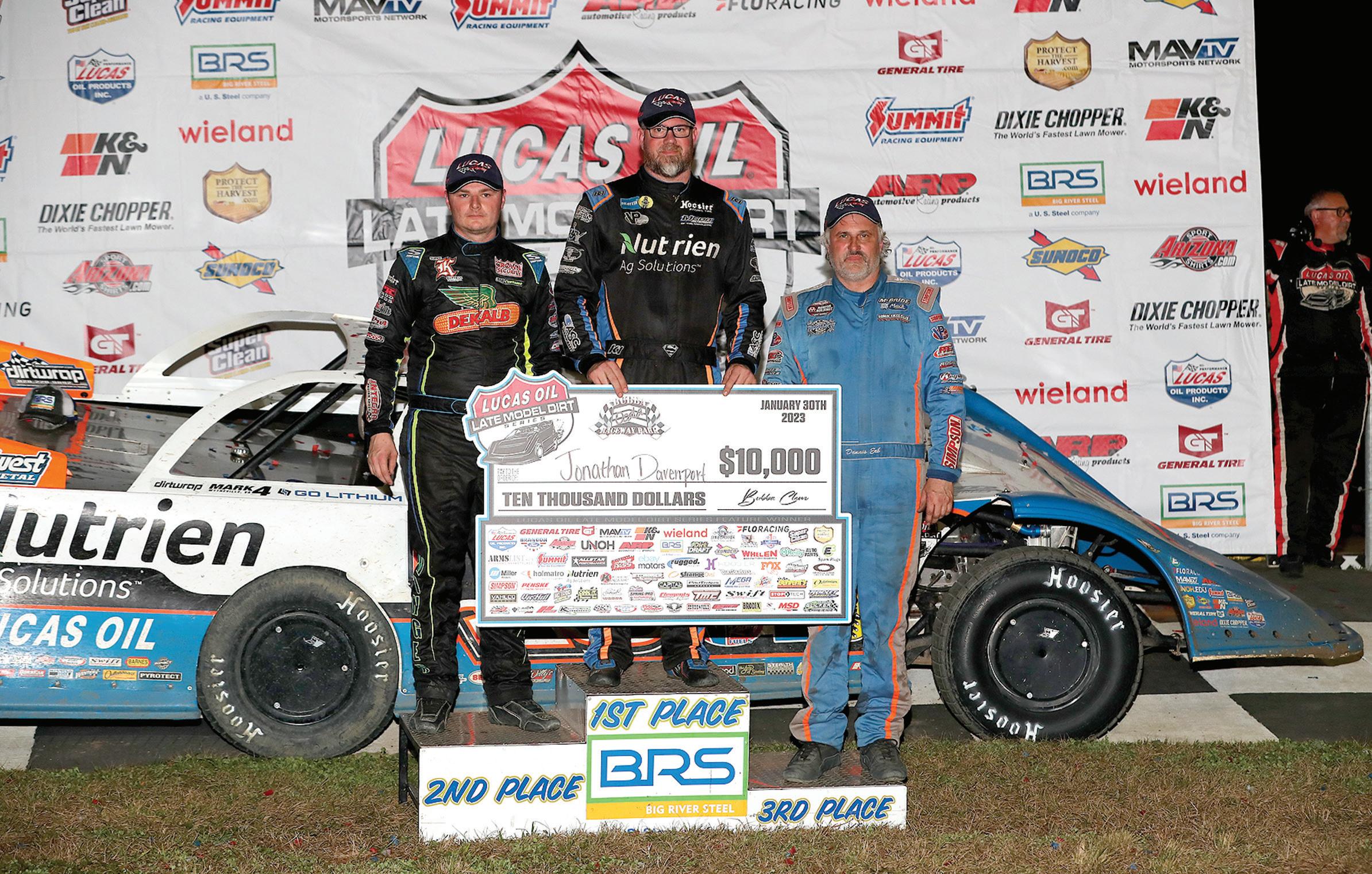 Photo: Mike Ruefer
Yeah, we’ve all seen badass photos of JD but this might top them all! The Dirty Dollar Ranch is where the family raises their Watusi cattle.
Photo: Mike Ruefer
Yeah, we’ve all seen badass photos of JD but this might top them all! The Dirty Dollar Ranch is where the family raises their Watusi cattle.
16 DIRT EMPIRE MAGAZINE • ISSUE 15 - APRIL/MAY - 2023
He might be getting a lot of these big checks this year! Davenport got a Lucas Oil win at Bubba Raceway Park over Ashton Winger (left) and Dennis Erb Jr. as he chases the title in 2023.
There is no substitute for laps or experience. - Jonathan Davenport

DE: Who is one driver not on the late model side that you follow and keep up with?
JD: Donny Schatz.
DE: You are someone who isn’t afraid to share reality and the truth when it comes to social media trolls twisting stories and scenarios. What drives you to want to set their record straight?
JD: Most of the time I’m bored. [he laughs] They catch me at the perfect time, if I’m sitting in an airport, or I’m riding back from a race in the back of the hauler, I just get bored and I like to have a little fun with people. Everyone’s open to their own opinions, but when people make stupid comments, I maybe like to make some back.
DE: Let’s talk some about home.
When you aren’t racing, home for you is the Dirty Dollar Ranch. How did you come up with the name?
JD: Well, that was my wife’s idea. On the lake we used to go to and hang out a bit there was a house boat, and on the side of it there was an excavator and it said Dirt Dollars and that was the name of the house boat. I also had a fishing boat one time that we would go to fishing tournaments with for striped bass and
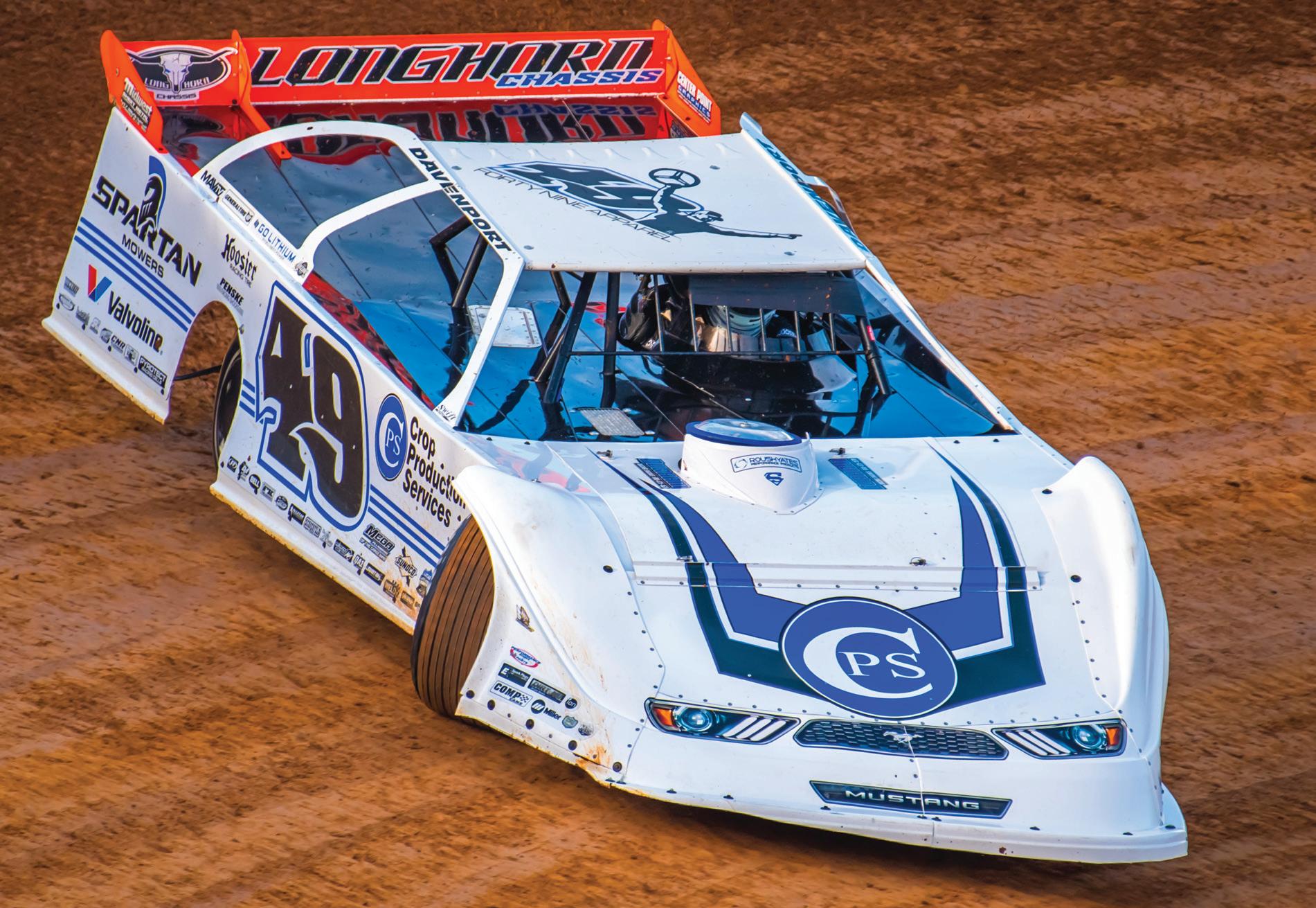 Photo: Mike Ruefer
Photo: Mike Ruefer
DIRT EMPIRE MAGAZINE • ISSUE 15 - APRIL/MAY - 2023 17
Photo: Mike Musslin
it was called Dirty Money. When we bought the ranch, my wife came up with combining the two, with Dirty Dollar.
DE: You raise Watusi cattle on the ranch, so when you are home, what does life off of the road, raising Watusi cattle look like?
JD: [he laughs] It’s a full-time job here. We bought an older ranch, it was an older cattle ranch, so it’s mainly just trying to reestablish everything in working order so it’s less maintenance when we get everything fixed. But it’s everything from fixing fences, mowing grass, cutting hay, and keeping up with the animals. There’s always something, there’s always a cow getting out, a cow sick, there’s just always something to do. We have fun with it, we’re just trying to bring everything back to the way it should be around here. We completely remodeled the house, we’ve been working on it, but we’re still not done. We’re just trying to add little stuff here and there as we go.
DE: A few years ago, a bottle calf named Max began to make appearances on social media between your accounts and your
wife’s. How is Max? What was it like being able to let fans see into what life on a cattle ranch is like for you?
JD: It’s fun, I know a lot of my fans like to see what we do away from the racetrack. They always see drivers with their helmets on, so they like to partake in a little bit of our homelife. We are a pretty private family, but we like to show a little bit of it every now and then. Max used to ride in the truck with us, go to baseball games, we actually let him free range around for a while, but now that he’s gotten a little bigger and we aren’t home as much as we were in the beginning with him, he’s back in the pasture now with the rest of the herd.
DE: One final question, and it might be a doozy. If you could make one change to dirt late model racing as a whole, what would it be and why?
JD: You know, right now, I wouldn’t really change much. I would’ve said the tire rule, that was our biggest issue up until this year, but Hoosier has done a great job and I think they’ve figured that out and it’s going to be better than it was. With inflation, the next thing we need to work on is our engines. Our engines are one of our biggest expenses right now. I don’t really know what we can do there, so I’m not sure what the right answer would be. But other than that, I think everything’s pretty good.
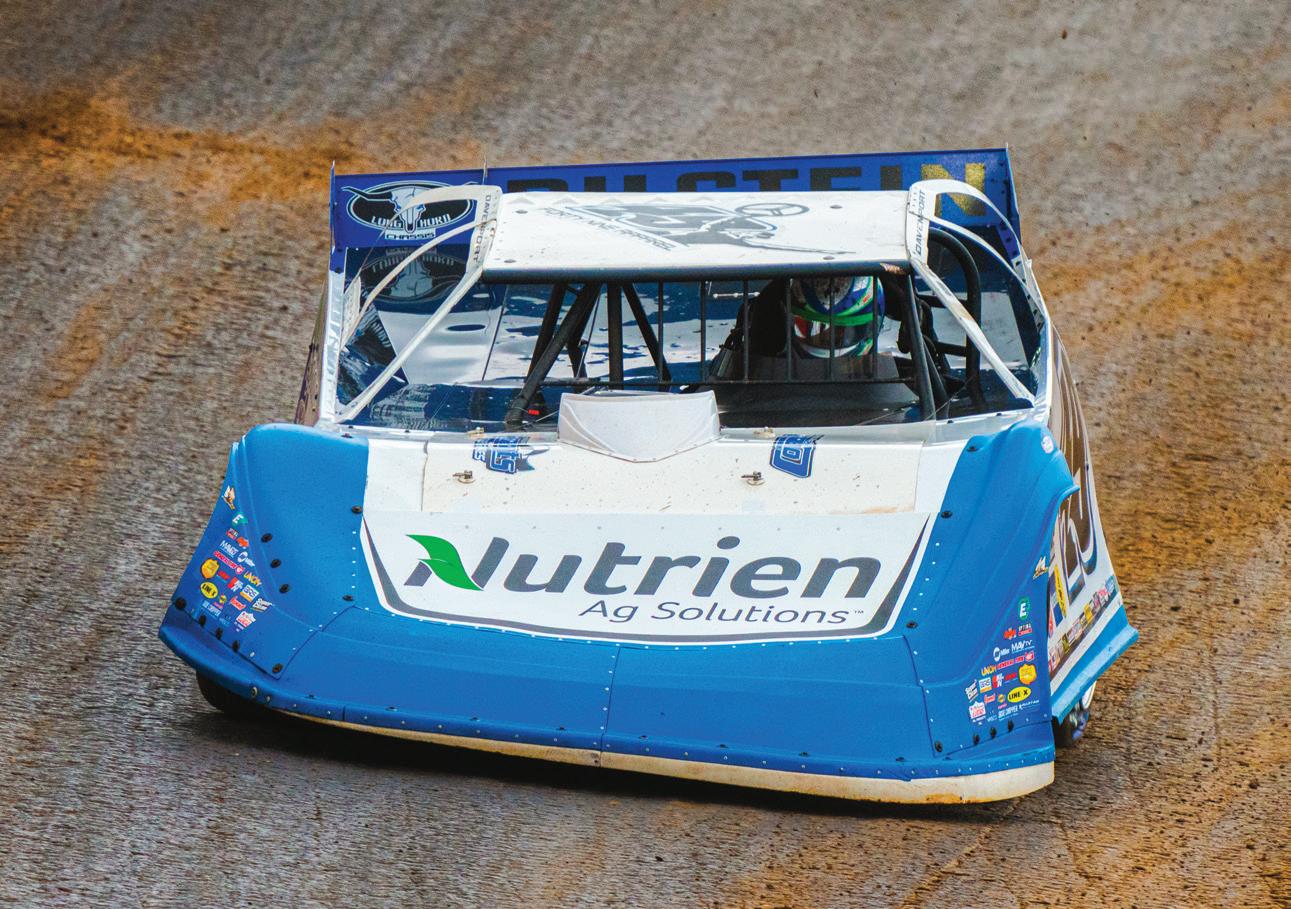
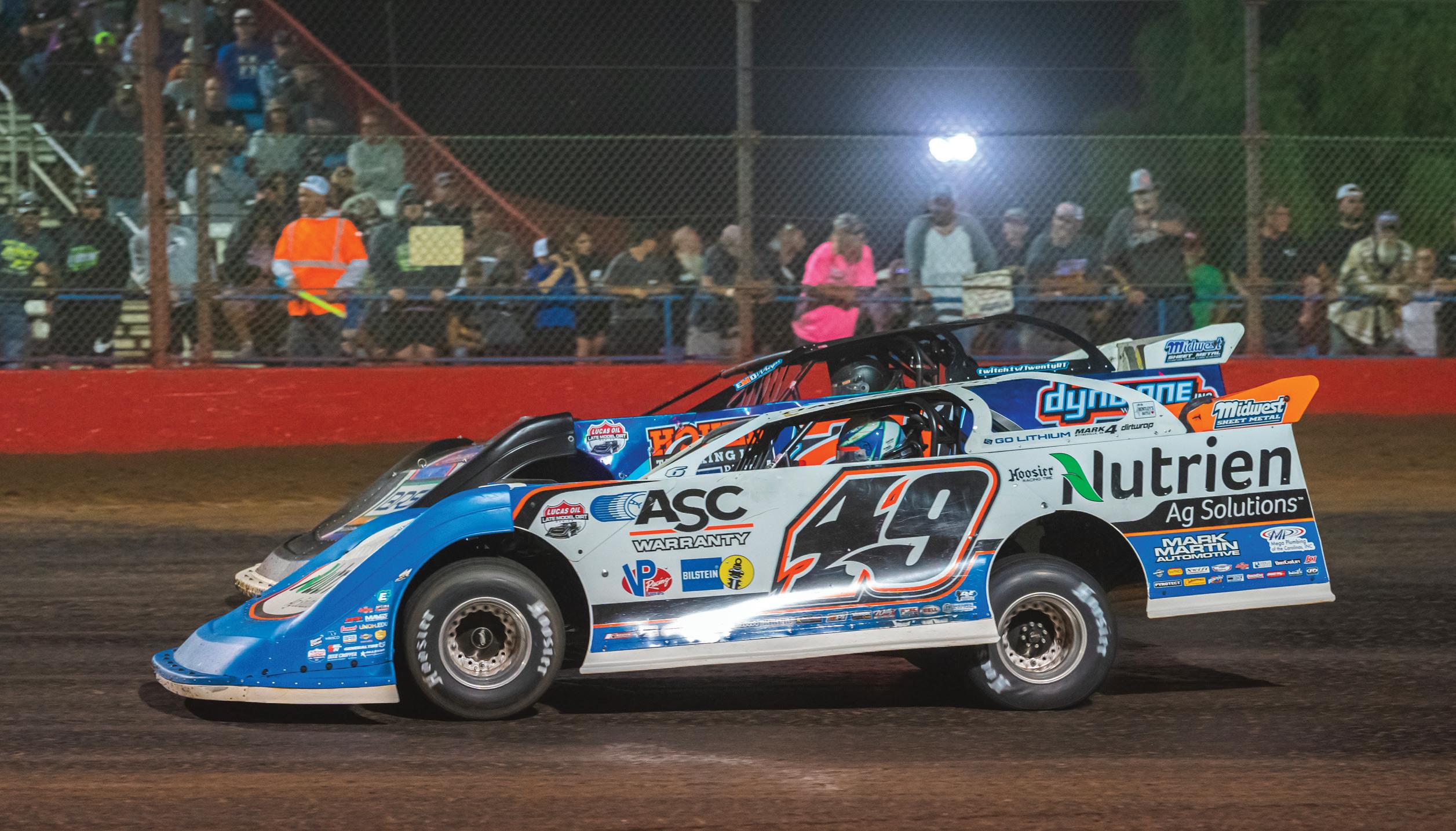 Photos: Mike Musslin
Photos: Mike Musslin
18 DIRT EMPIRE MAGAZINE • ISSUE 15 - APRIL/MAY - 2023
Davenport runs to the inside of Ricky Thornton Jr. at East Bay Raceway during what could potentially be the final year of racing at the Florida oval.
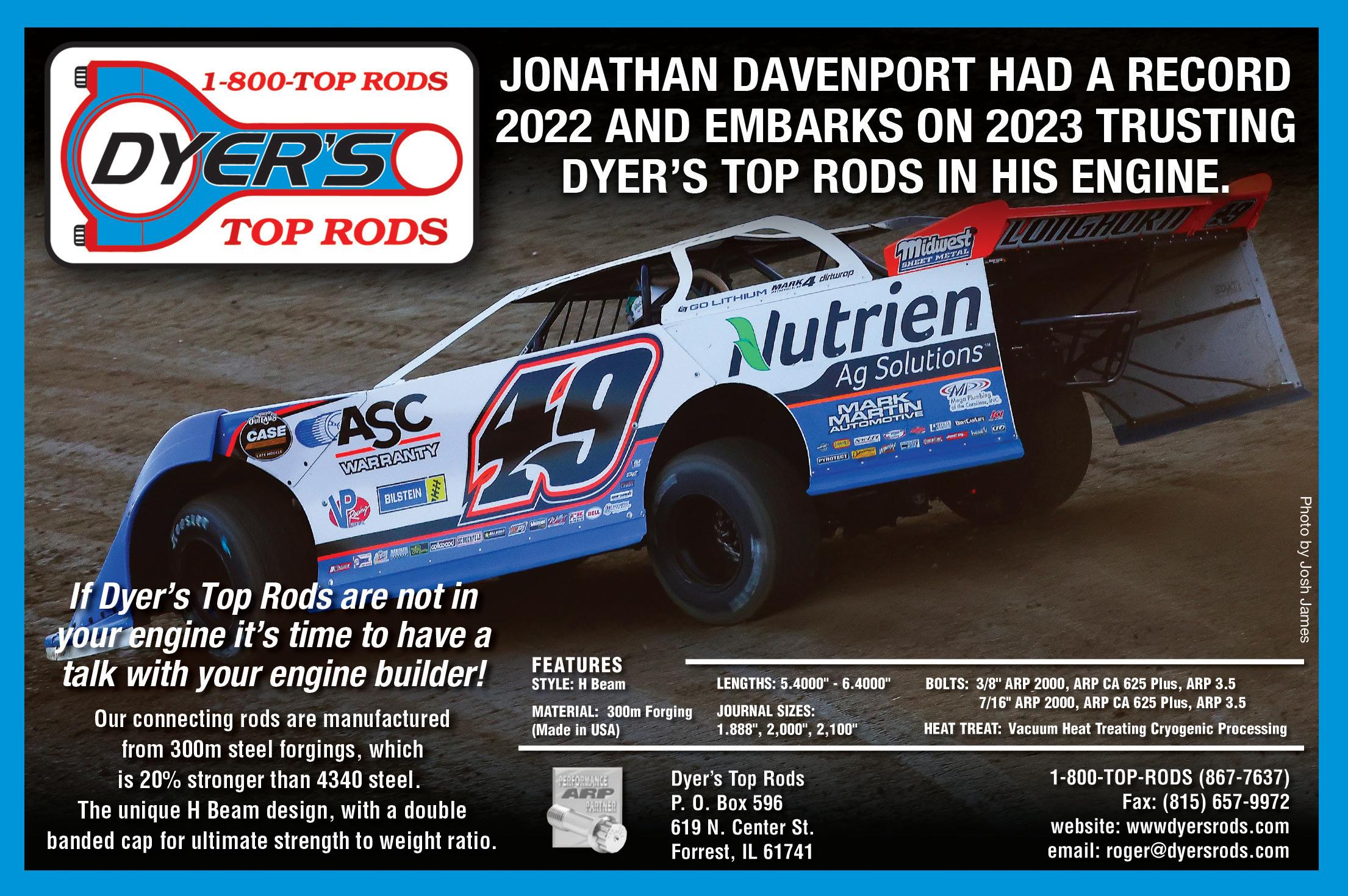

RacingJunk.com DIRT EMPIRE MAGAZINE • ISSUE 15 - APRIL/MAY - 2023 19 Dyer’s Top Rods
review in PICTURES
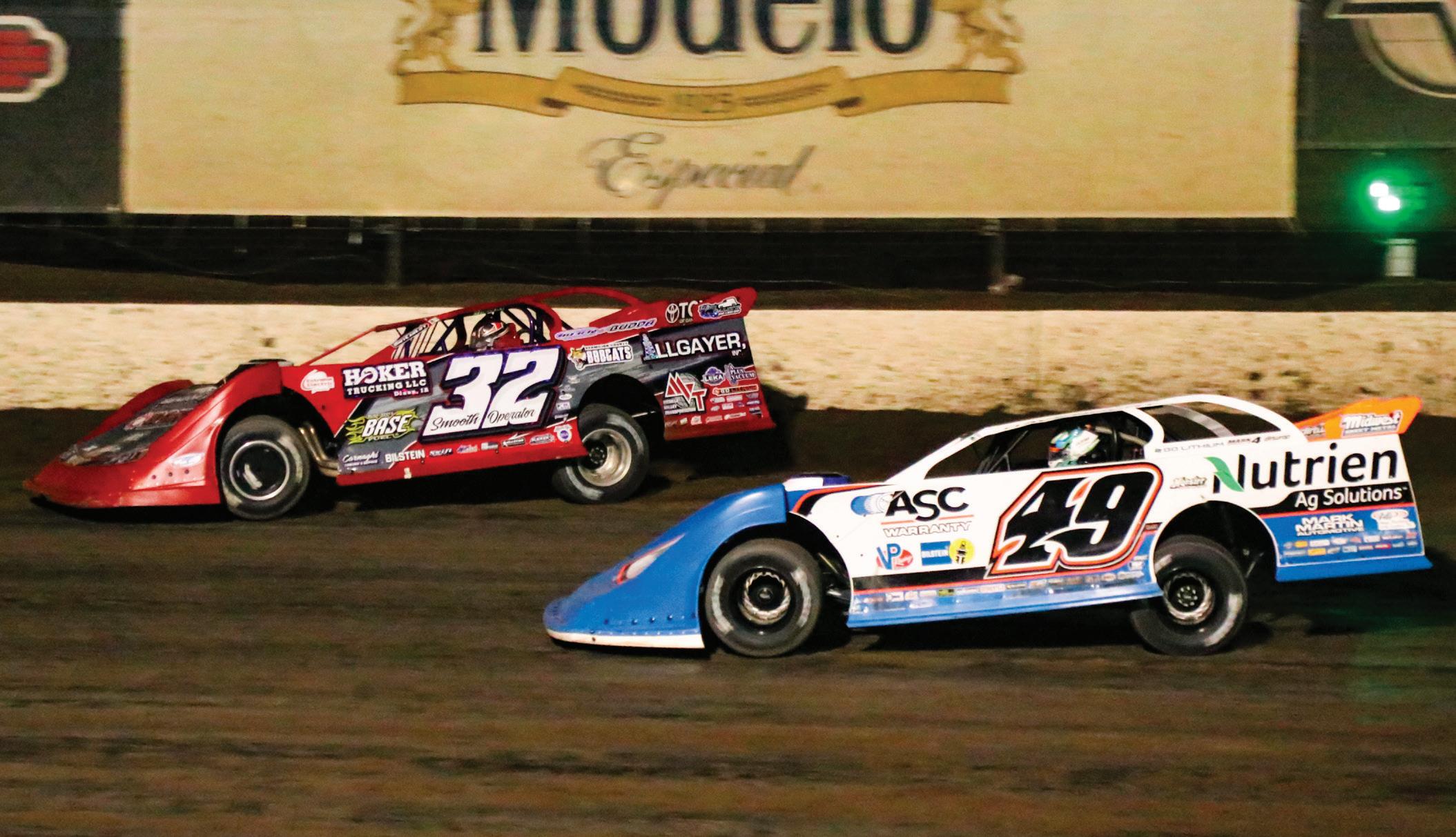

PIERCE VERSUS DAVENPORT
THE WILD WEST SHOOTOUT was just that as the annual race found a new home in 2023 at the Vado Speedway Park in New Mexico. Jonathan Davenport quickly found the location to his liking as he swept the first three nights of action and hung on to win the title over Kyle Larson and Bobby Pierce. Pierce walked away with the main feature win and $25,000 on the final night of racing, netting two wins on the week and four top-3 finishes.
Throughout the six night series, Dereck Ramirez bested all modified entrants to win the weekly title in a field that boasted over 150 cars spread over three divisions.
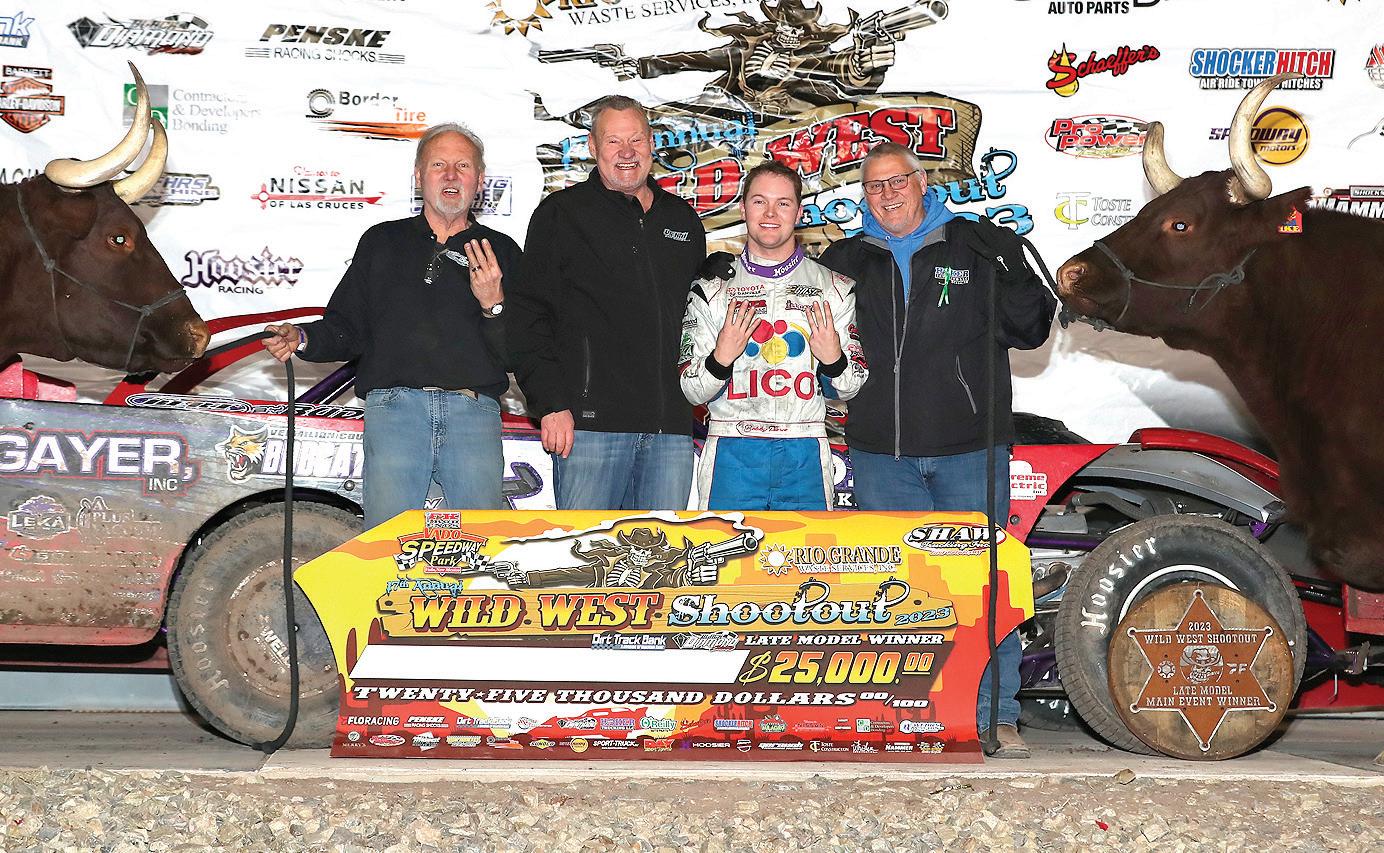
WILD WEST SHOOTOUT 2023 TOP LATE MODEL SHOOTERS
January
January
January
January
January
January

1.
7
Jonathan Davenport
2. Brandon Sheppard 3. Ricky Weiss
8 1.
Jonathan Davenport 2. Kyle Larson 3. Bobby Pierce
11 1.
Jonathan Davenport 2. Bobby Pierce 3. Brandon Sheppard
13 1.
Bobby Pierce 2. Jonathan Davenport 3. Garrett Alberson
14 1.
Mike Marlar
2. Kyle Larson 3. Ricky Weiss
15 1.
Bobby Pierce
2. Kyle Larson 3. Mike Marlar
Photo: Mike Ruefer
20 DIRT EMPIRE MAGAZINE • ISSUE 15 - APRIL/MAY - 2023
Photo: Tanner Dillin
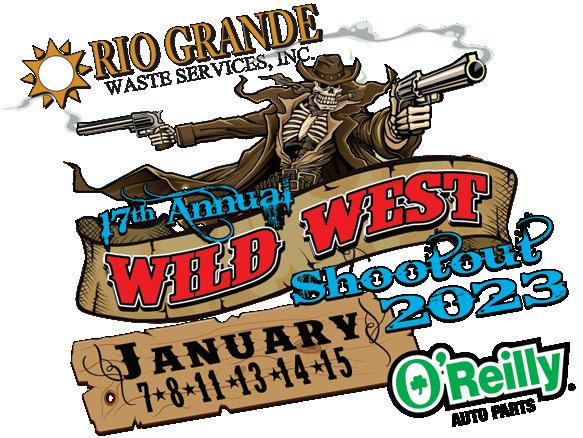
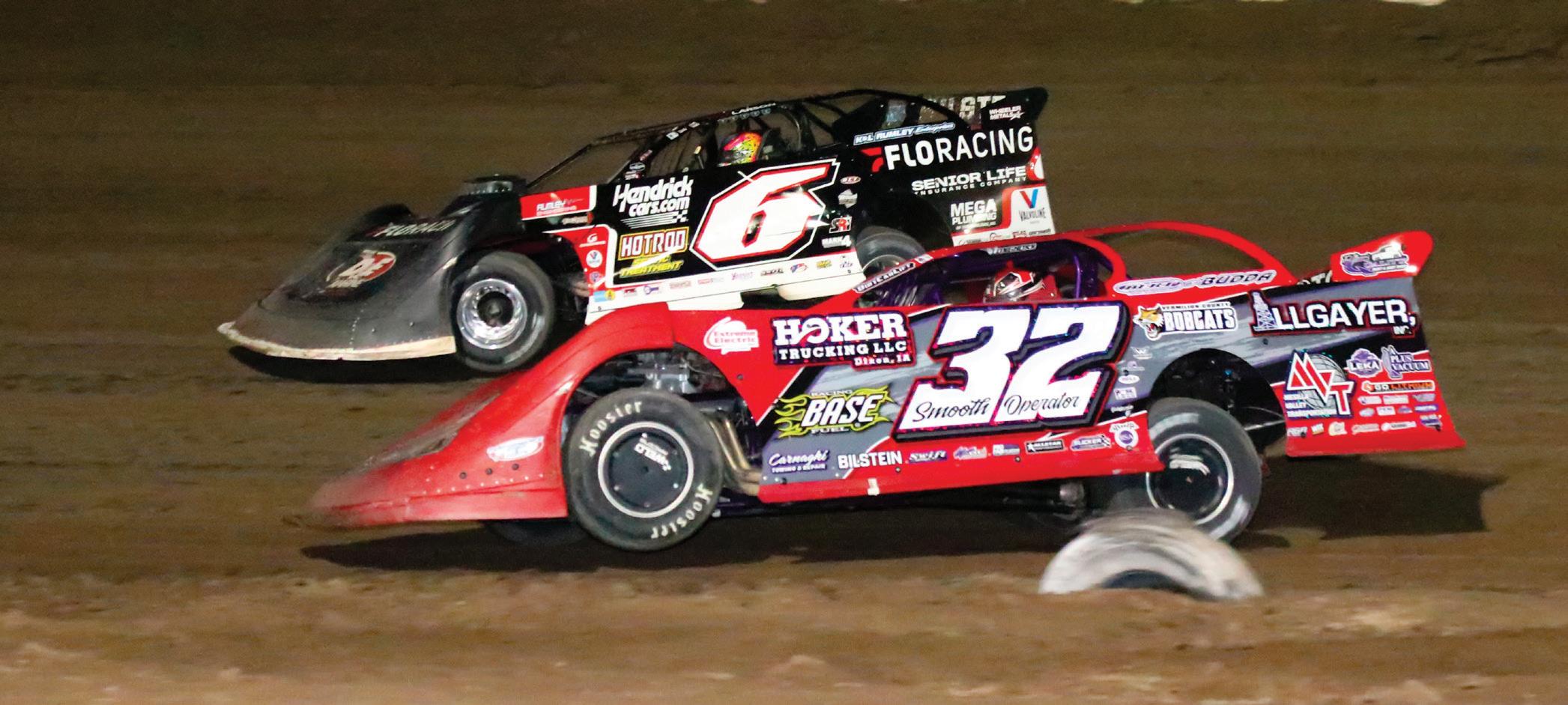
On the final night of racing, when $25,000 was on the line, it came down to Pierce (32) and Larson (6). Proving true to his nickname, Pierce was the Smooth Operator and drove his red hot rod to victory lane.
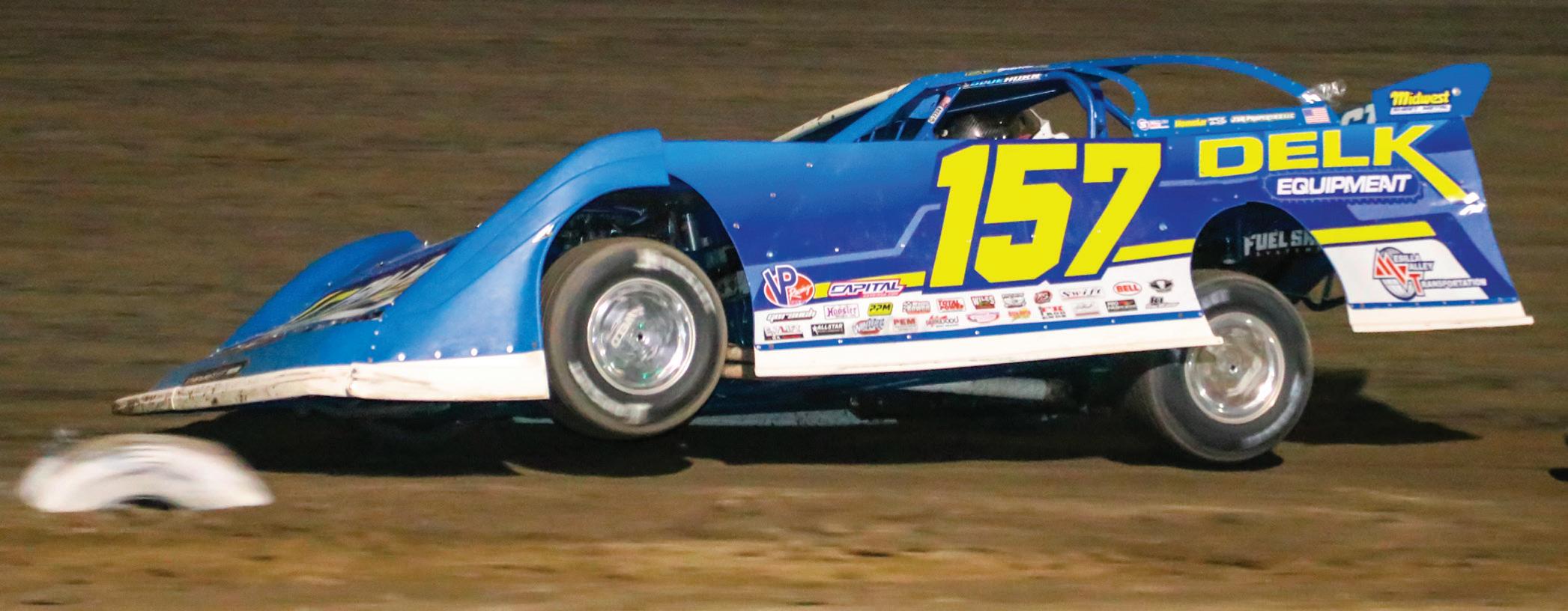
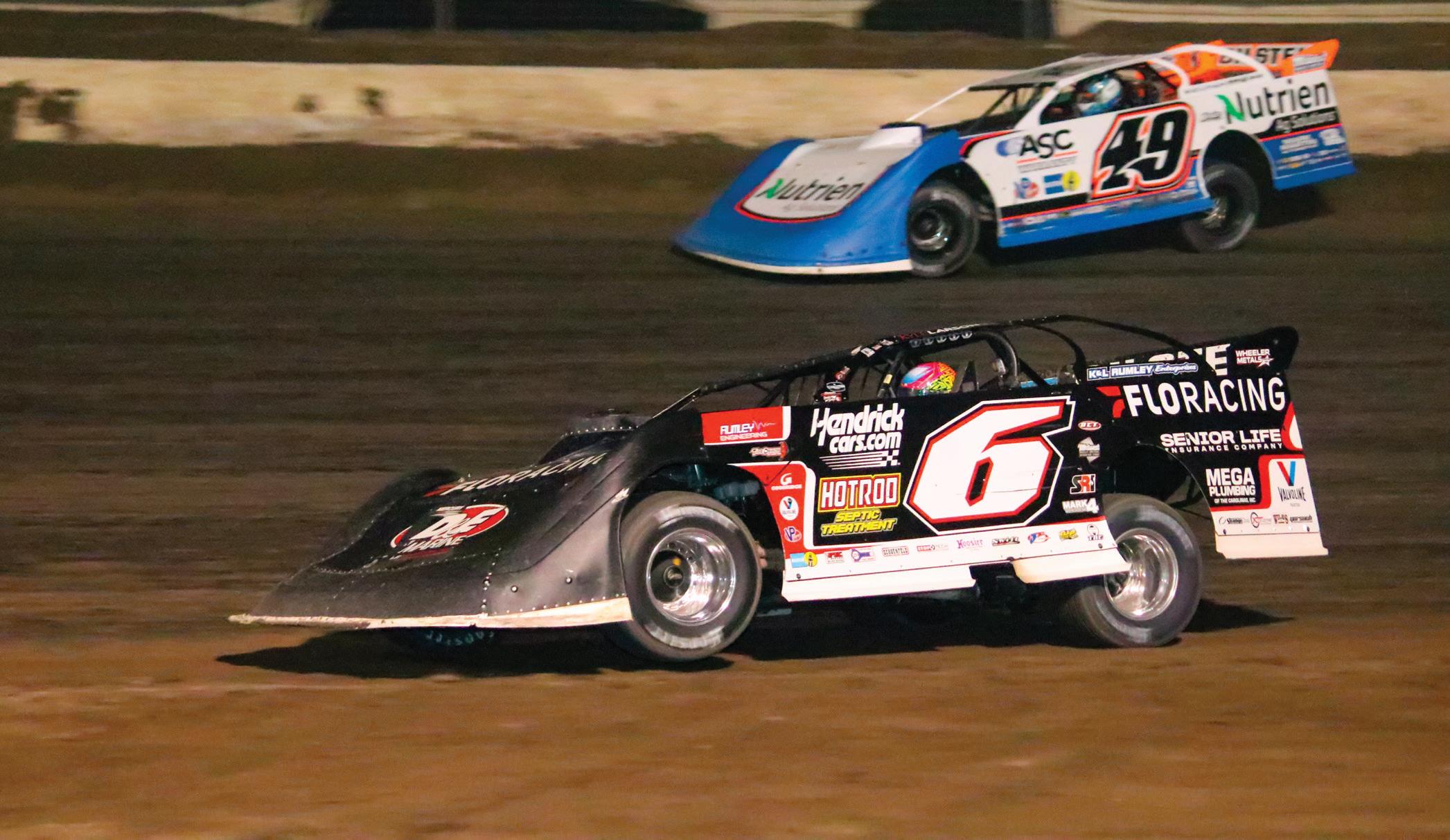
Though he didn’t have a victory at the 2023 Wild
Kyle Larson was consistently in the running, finishing in second-place three times during the week. He came up short for the title behind Davenport who benefited from sweeping the first three
Photo: Tanner Dillin
Mike Marlar finished off the week of racing with a victory on the second-to-last night and a third-place finish on the final night of the Wild West Shootout.
West Shootout,
nights of competition.
Photo: Tanner Dillin
DIRT EMPIRE MAGAZINE • ISSUE 15 - APRIL/MAY - 2023 21
Photo: Tanner Dillin
Brandon
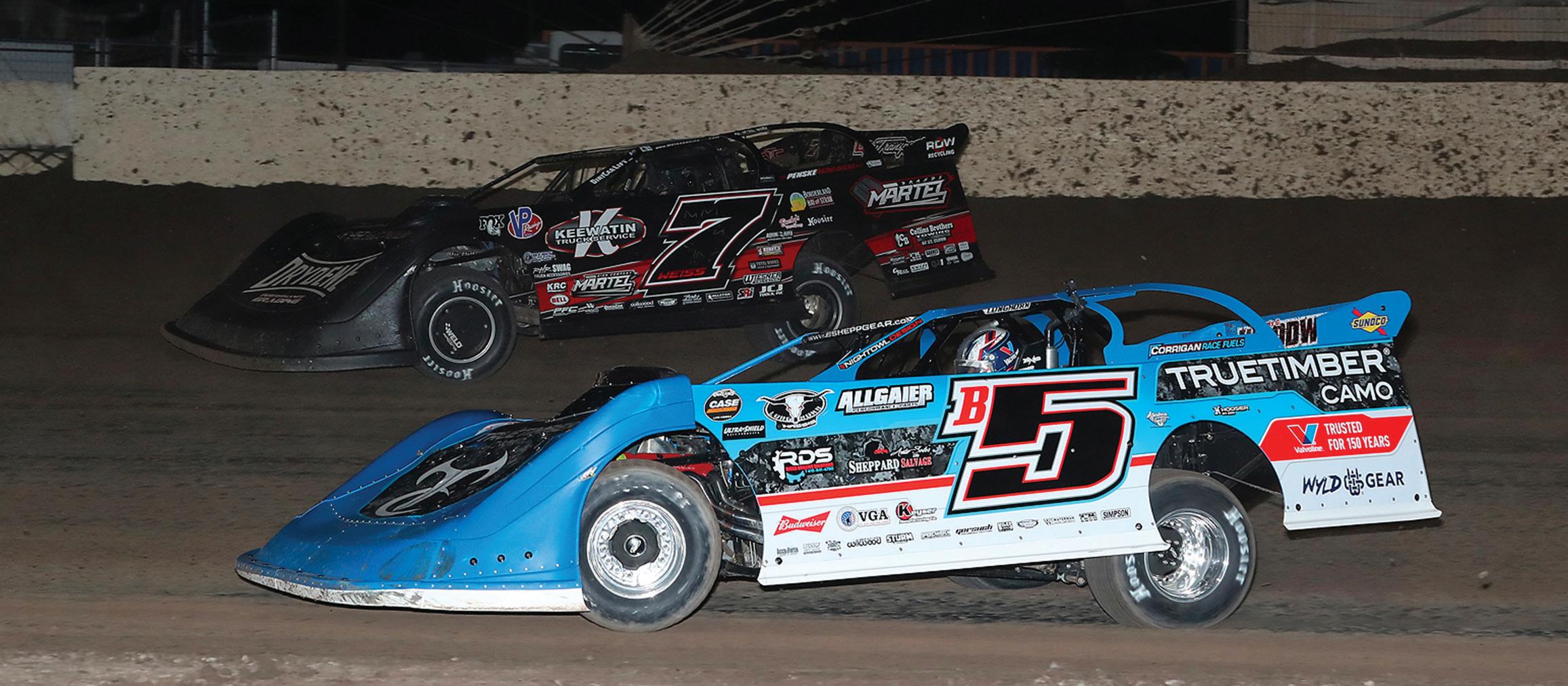

“We were in contention pretty much all six nights of the Wild West Shootout, and we won three of them. Considering how good that field was, we are proud of everything we accomplished,” Wild West Shootout modified title champion, Dereck Ramirez said. “The pill draw buried us a few nights, otherwise we might’ve had one or two more wins in the deal. It’s hard to complain though with how fast we were, and it was pretty cool to win the miniseries championship.”
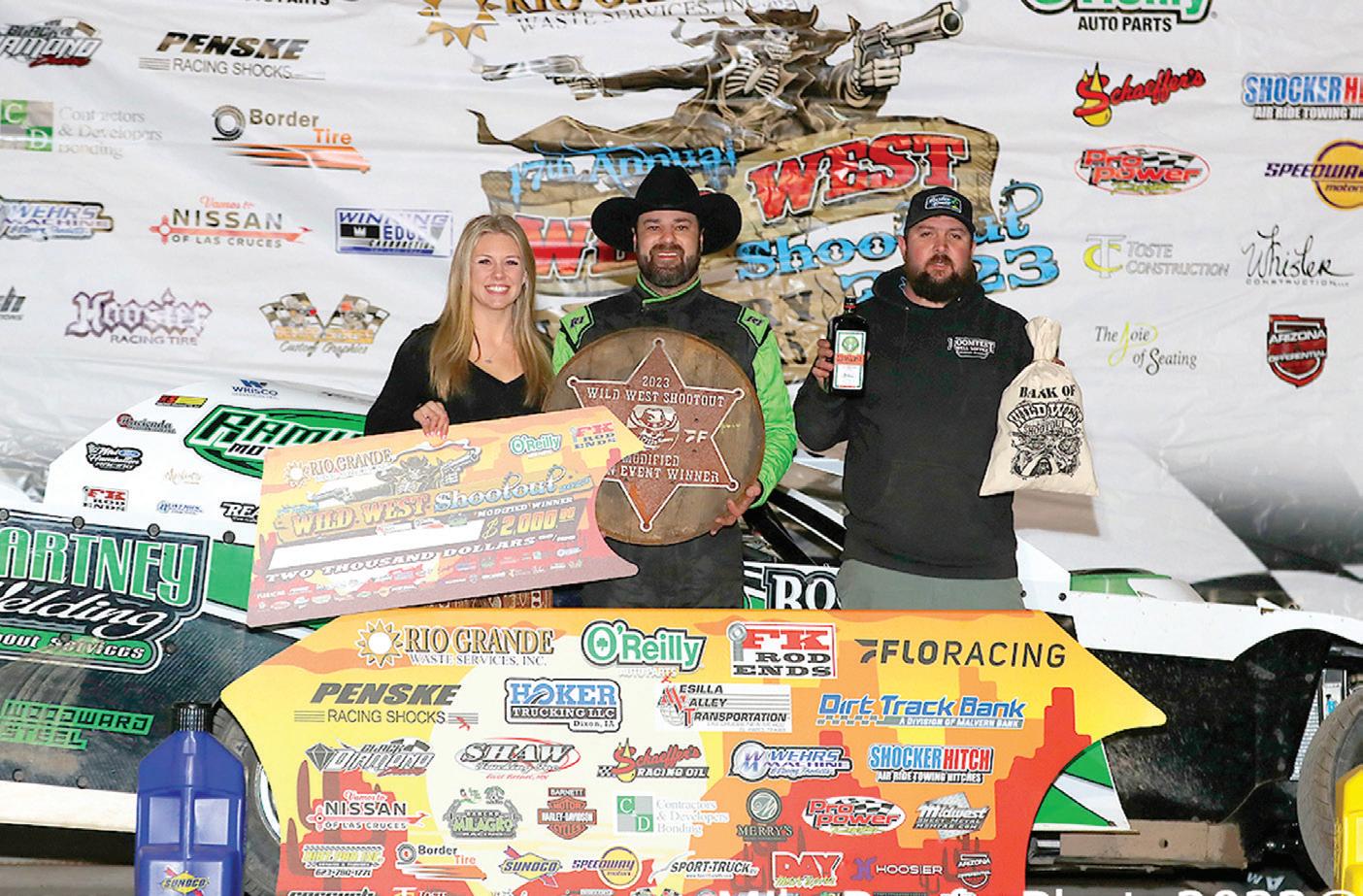
THE WILD WEST SHOOTOUT returns to Vado Speedway Park in New Mexico in 2024 for an even bigger shootout!
January 6,7,10,12,13,14, 2024
For more information, to register or to buy tickets, please visit: wildwestshootout.net
 Sheppard returned to the B5 for 2023 and had a good showing at the Wild West Shootout, finishing second the first night to Jonathan Davenport and third on night three behind Bobby Pierce, and Davenport.
Photo: Mike Ruefer
Photo: Tanner Dillin
Sheppard returned to the B5 for 2023 and had a good showing at the Wild West Shootout, finishing second the first night to Jonathan Davenport and third on night three behind Bobby Pierce, and Davenport.
Photo: Mike Ruefer
Photo: Tanner Dillin
22 DIRT EMPIRE MAGAZINE • ISSUE 15 - APRIL/MAY - 2023
Photo: Mike Ruefer
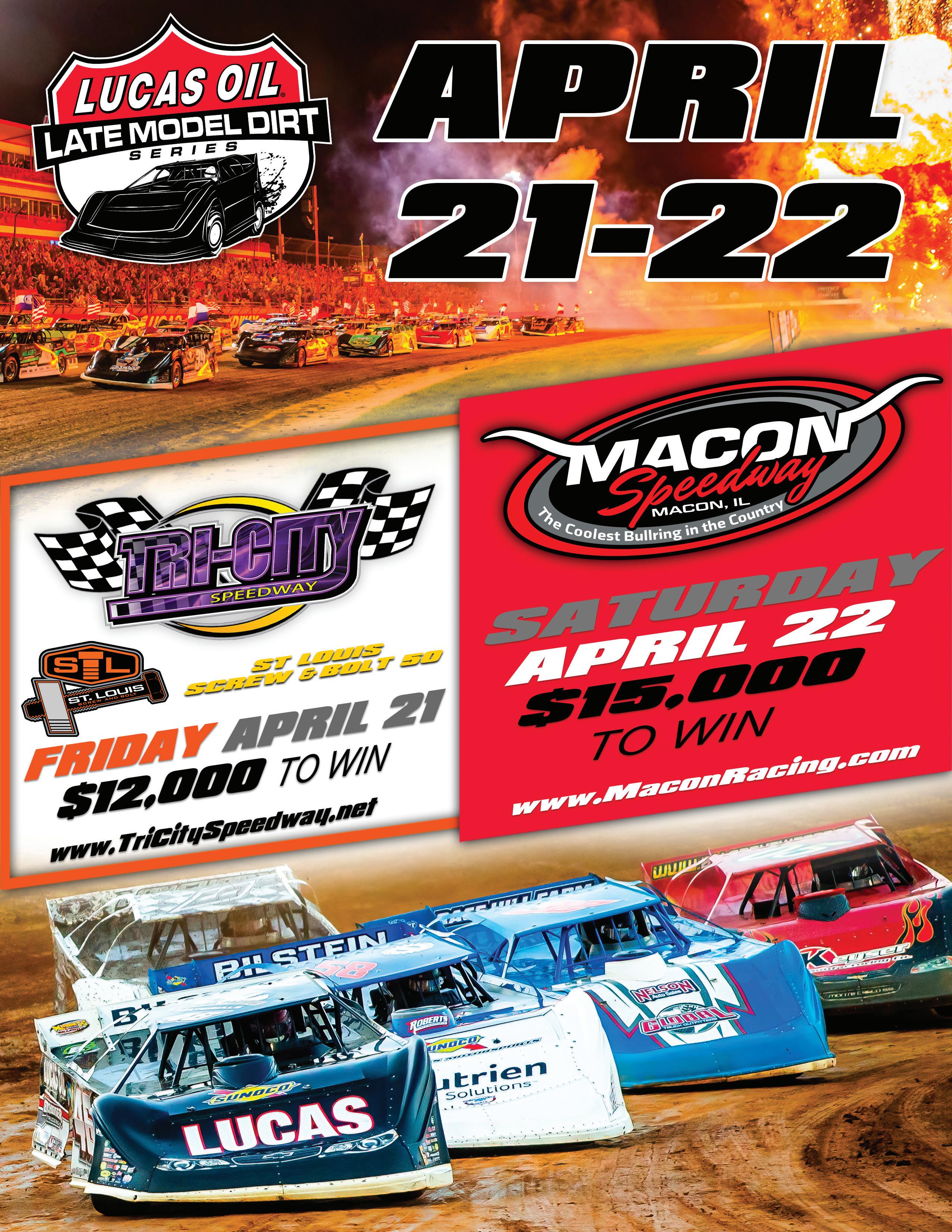
review in PICTURES

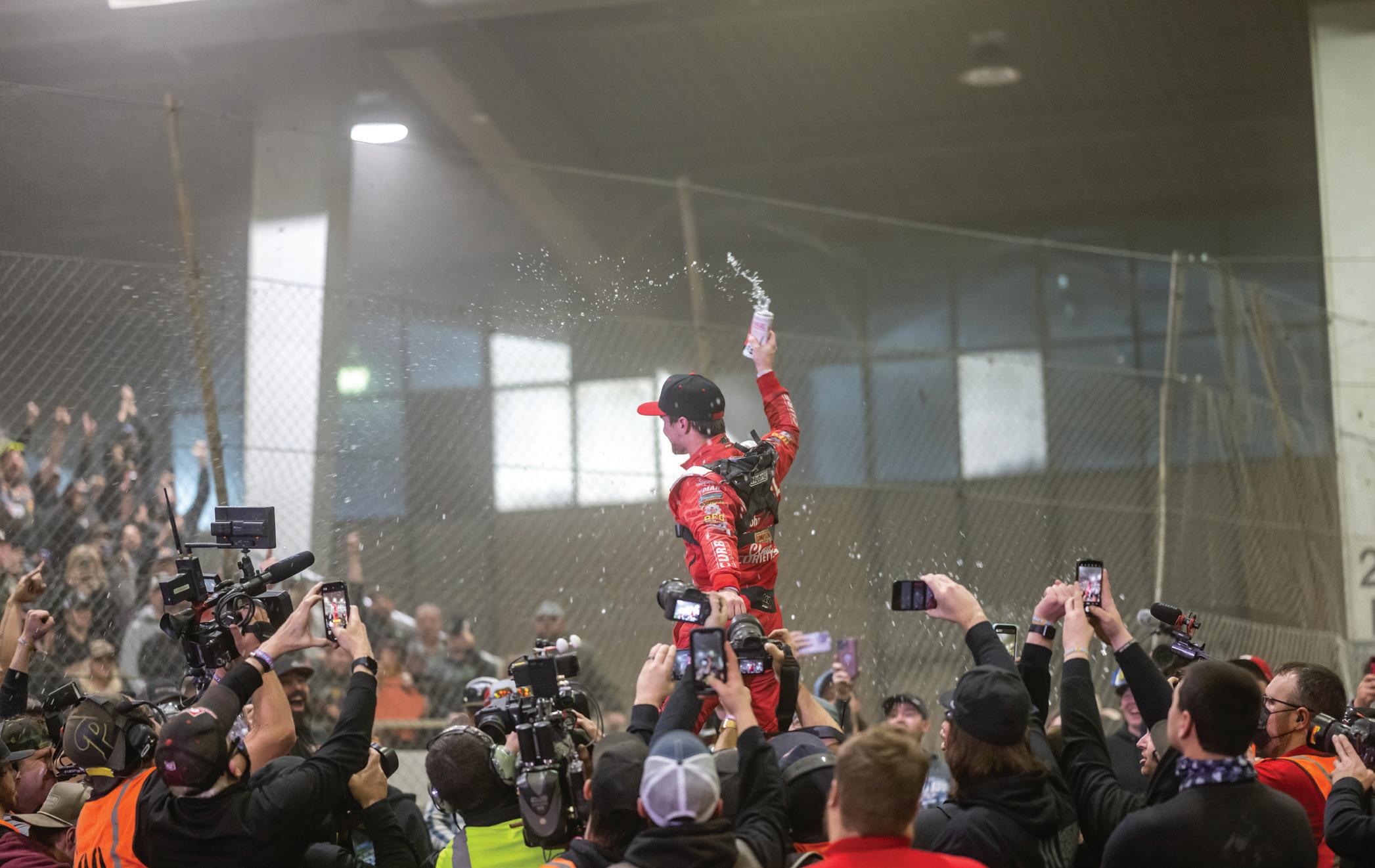
SEAVEY SENDS SWINDELLS TO TENTH TITLE
THE SWINDELLS are back and best at the Chili Bowl thanks to a legendary week by Logan Seavey. Over a five year stretch from 2008-2013, the Swindells ruled over the Chili Bowl with wins by Sammy in 2009 and then an unprecedented four straight by his son Kevin Swindell from 2010-2013. Then, it ended. Kevin was injured in a sprint car accident at the Knoxville Nationals and shifted into the role of car owner in Tulsa while Sammy struggled to find the old magic that made him the only five-time champion of the event.
Now, ten years later, a Swindell car again ascended to the top of the massive event and took the top spot with Californian Logan Seavey piloting their car to a victory over defending champion Tanner Thorson after a mid-race battle with Cannon McIntosh. “I’ll let you know tomorrow, but for now, it feels awesome. It really set in when they handed me the Driller, and I got to talk to Kevin a little bit. He deserves it, and will probably get a lot more, so to win this race is special, but to win it in the number 39 on our first try is really cool,” said Seavey.
Ten years after Kevin’s final Oklahoma indoor score, the Swindell name earned its tenth overall title.
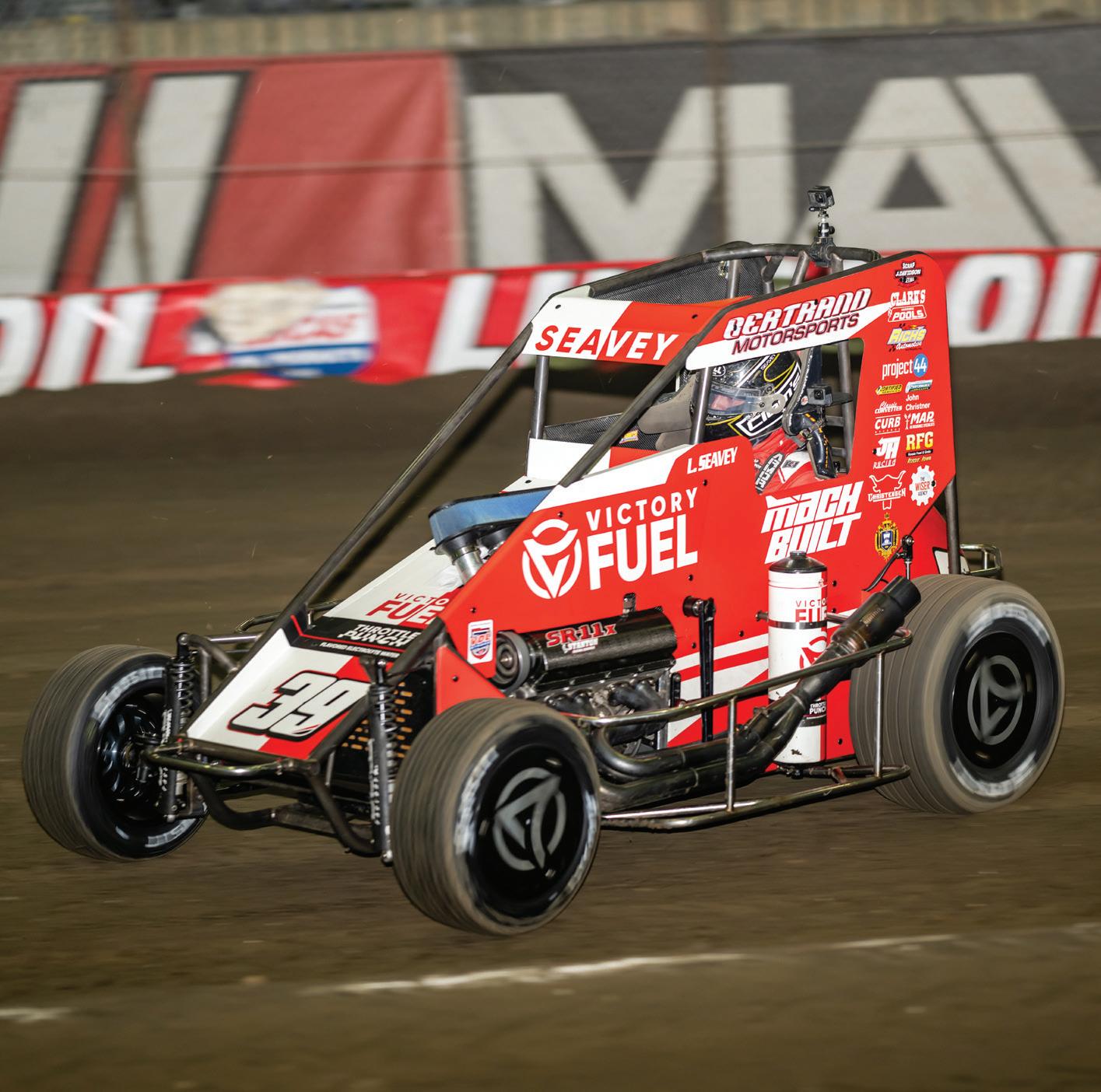
24 DIRT EMPIRE MAGAZINE • ISSUE 15 - APRIL/MAY - 2023
Photo: Buck Monson Photo: Buck Monson

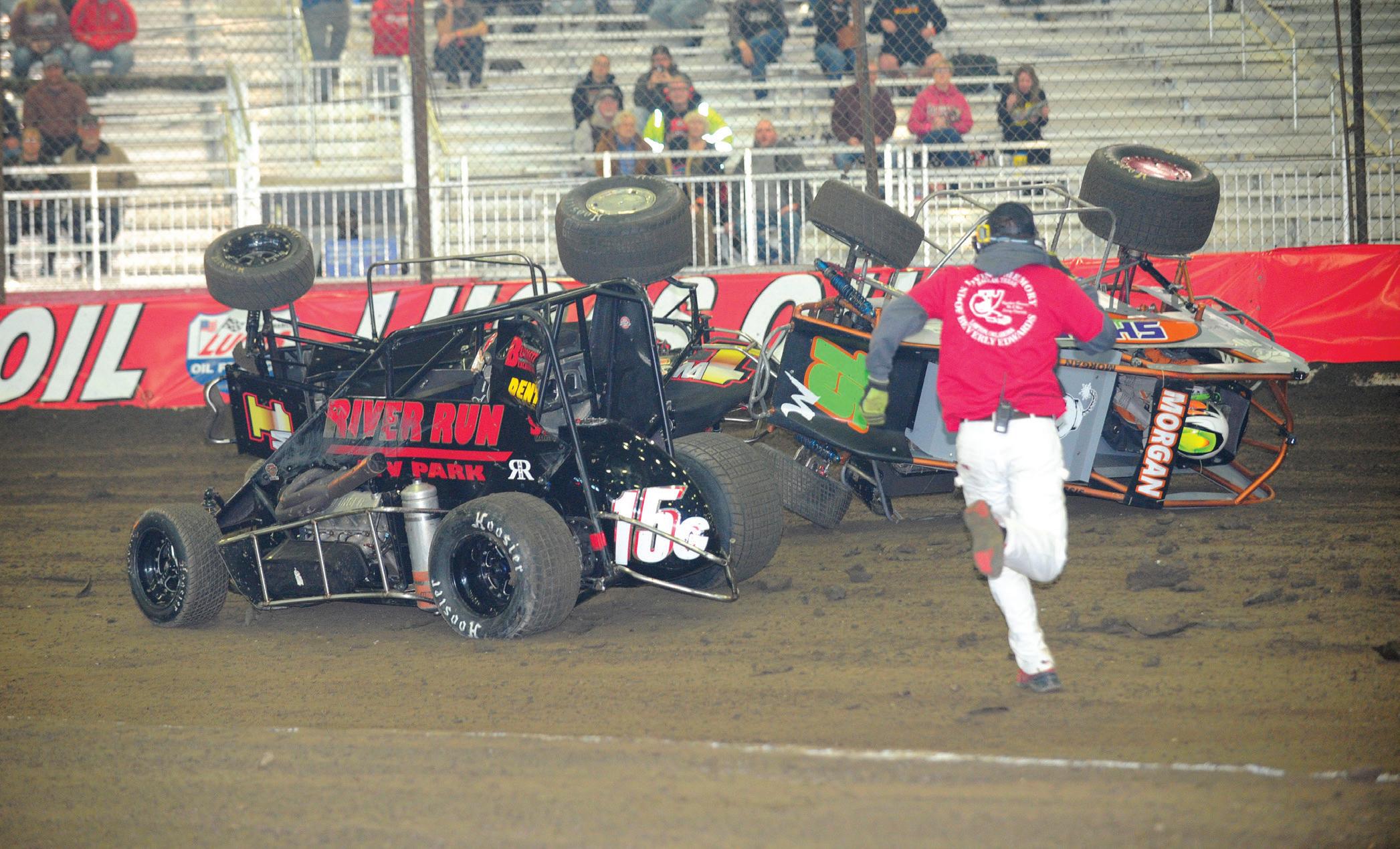


A FEATURE (55 LAPS):
1. 39-Logan Seavey[1]
2. 88-Tanner Thorson[4]
3. 08-Cannon McIntosh[3]
4. 17W-Shane Golobic[6]
5. 19T-Emerson Axsom[7]
6. 7U-Kyle Jones[16]
7. 89X-Mitchel Moles[9]
8. 32T-Trey Marcham[14]
9. 29-Tim Buckwalter[23]
10. 2J-Justin Grant[10]
11. 39T-Tim McCreadie[24]
12. 5T-Kevin Thomas Jr[19]
13. 26R-Zeb Wise[17]
14. 89-Chris Windom[11]
15. 19A-Daison Pursley[22]
16. 40M-Chase McDermand[12]
17. 7X-Thomas Meseraull[18]
18. 84-Jade Avedisian[13]
19. 67-Ryan Timms[21]
20. 29S-Hank Davis[2]
21. 24-Rico Abreu[5]
22. 71-Kaylee Bryson[20]
23. 1S-Spencer Bayston[8]
24. 71M-Brent Crews[15]
Photo: Dave Condit
Photo: Dave Condit
Photo: David Campbell
It’s early on Saturday but the M-feature had plenty of action for fans still drinking coffee and eating donuts. Shane Morgan (15M) was the only car to restart after this entanglement with Dennie Geiber (15G) and Bryon Walters.
Tanner Thorson did everything he could to pull off the repeat win in Tulsa - except get by Logan Seavey. He ended his title defense in second.
DIRT EMPIRE MAGAZINE • ISSUE 15 - APRIL/MAY - 2023 25
It was another solid effort for California’s Shane Golobic after locking in on his prelim and then running just off the podium on Saturday night in fourth.

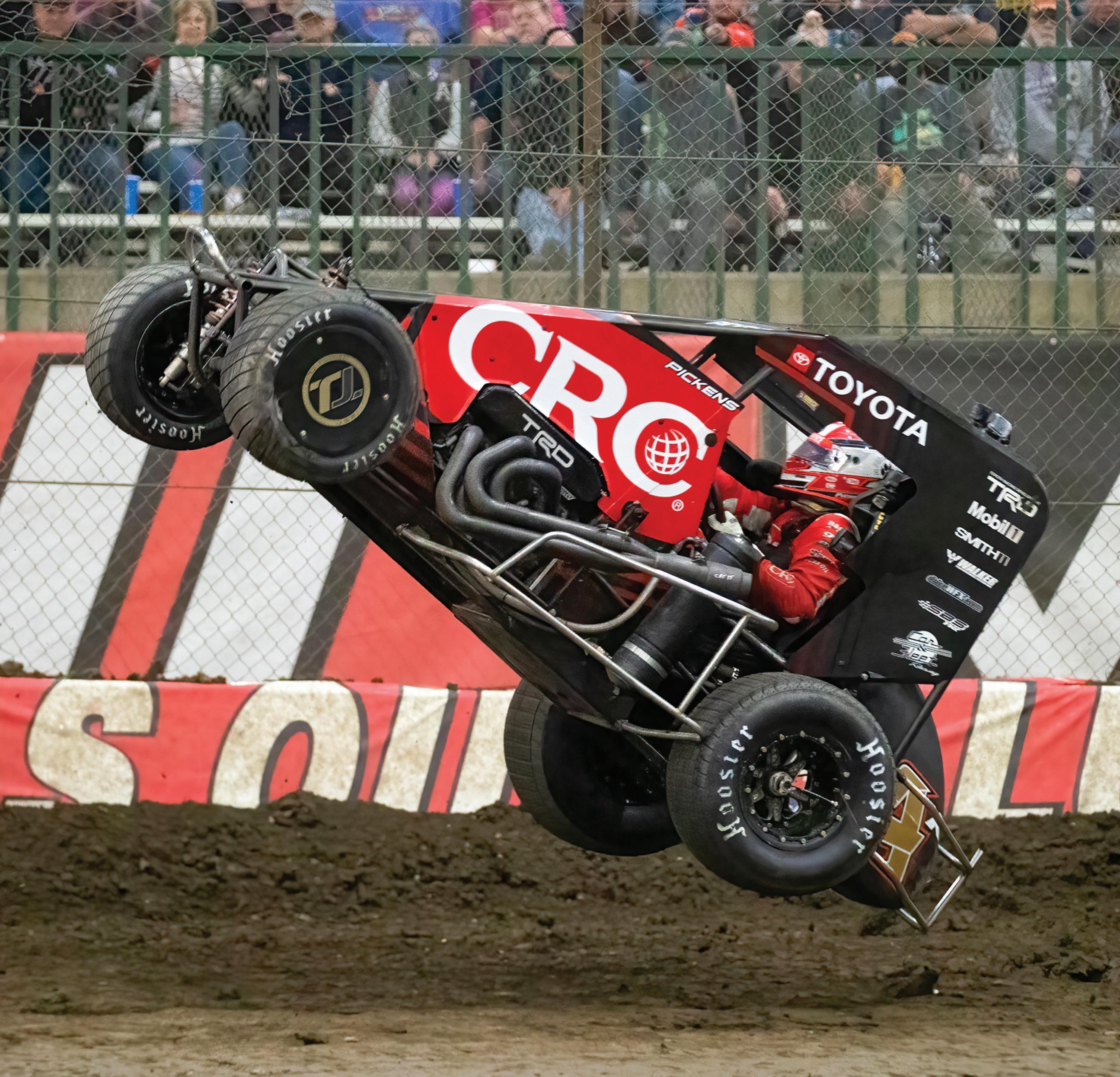
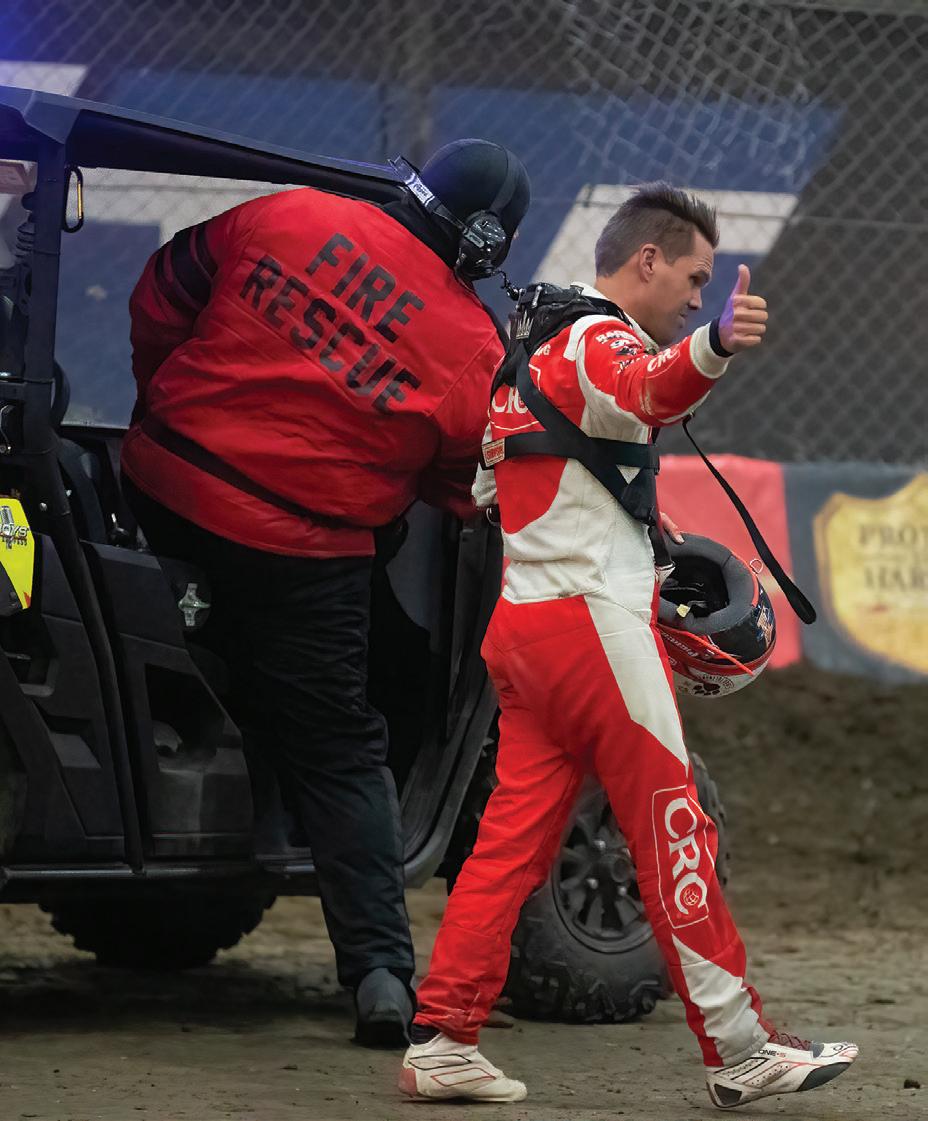
Photos: David Campbell
Michael Pickens - New Zealand’s fastest import - went for a wild one Tuesday night battling for the lead with eventual winner Hank Davis, who said ““I feel really bad for getting into Pickens there. I checked up earlier for him in the race, but I still want to apologize to him... I’m not here to destroy race cars, and that was never my intention.”
26 DIRT EMPIRE MAGAZINE • ISSUE 15 - APRIL/MAY - 2023
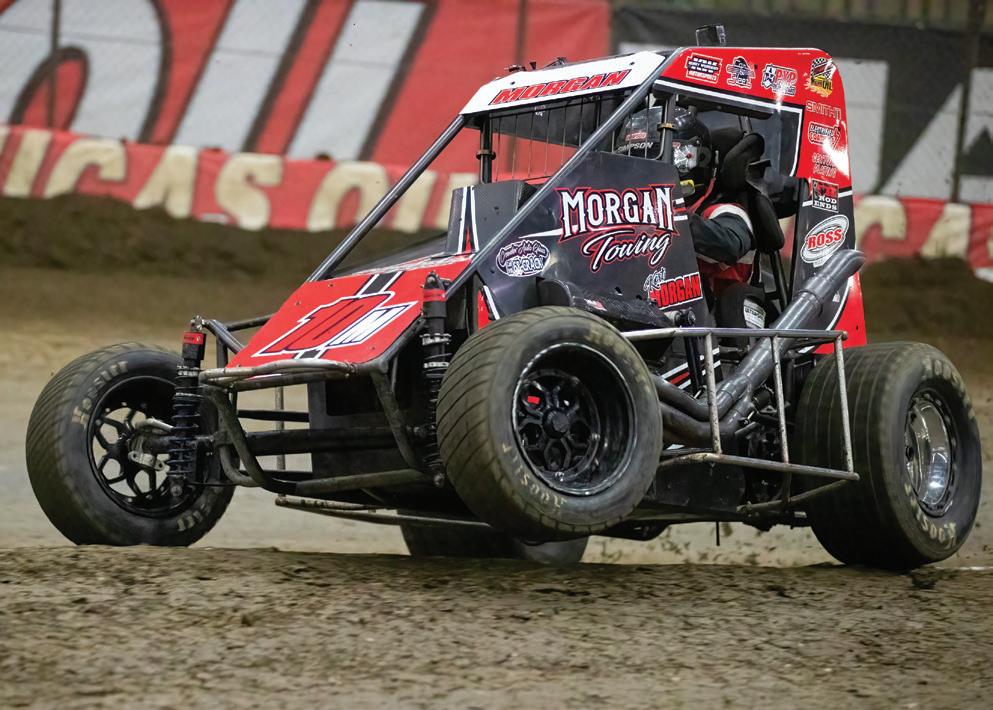
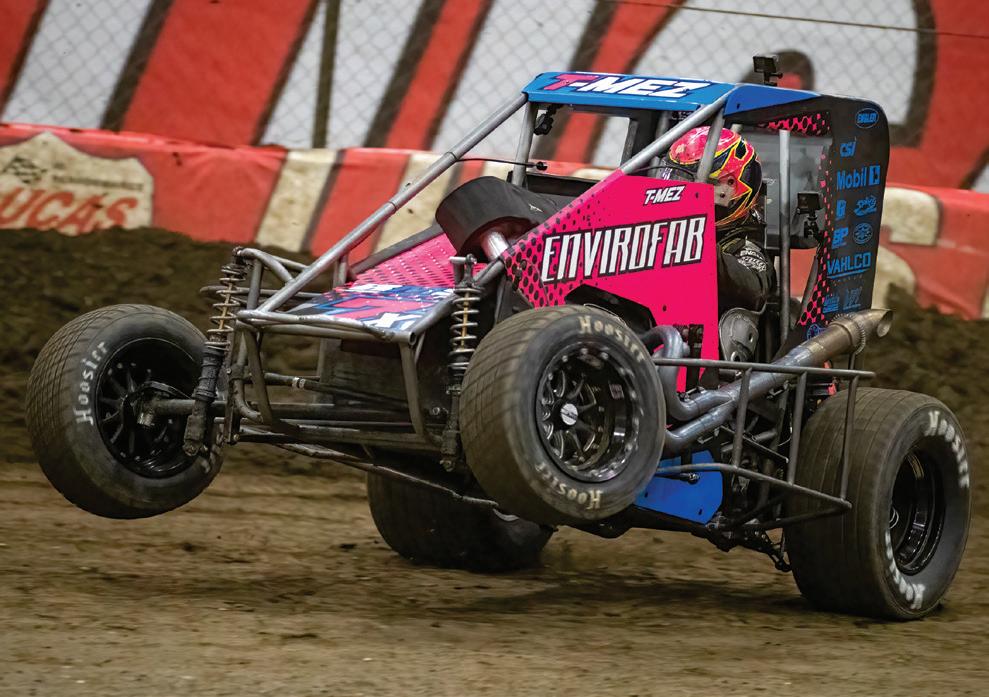
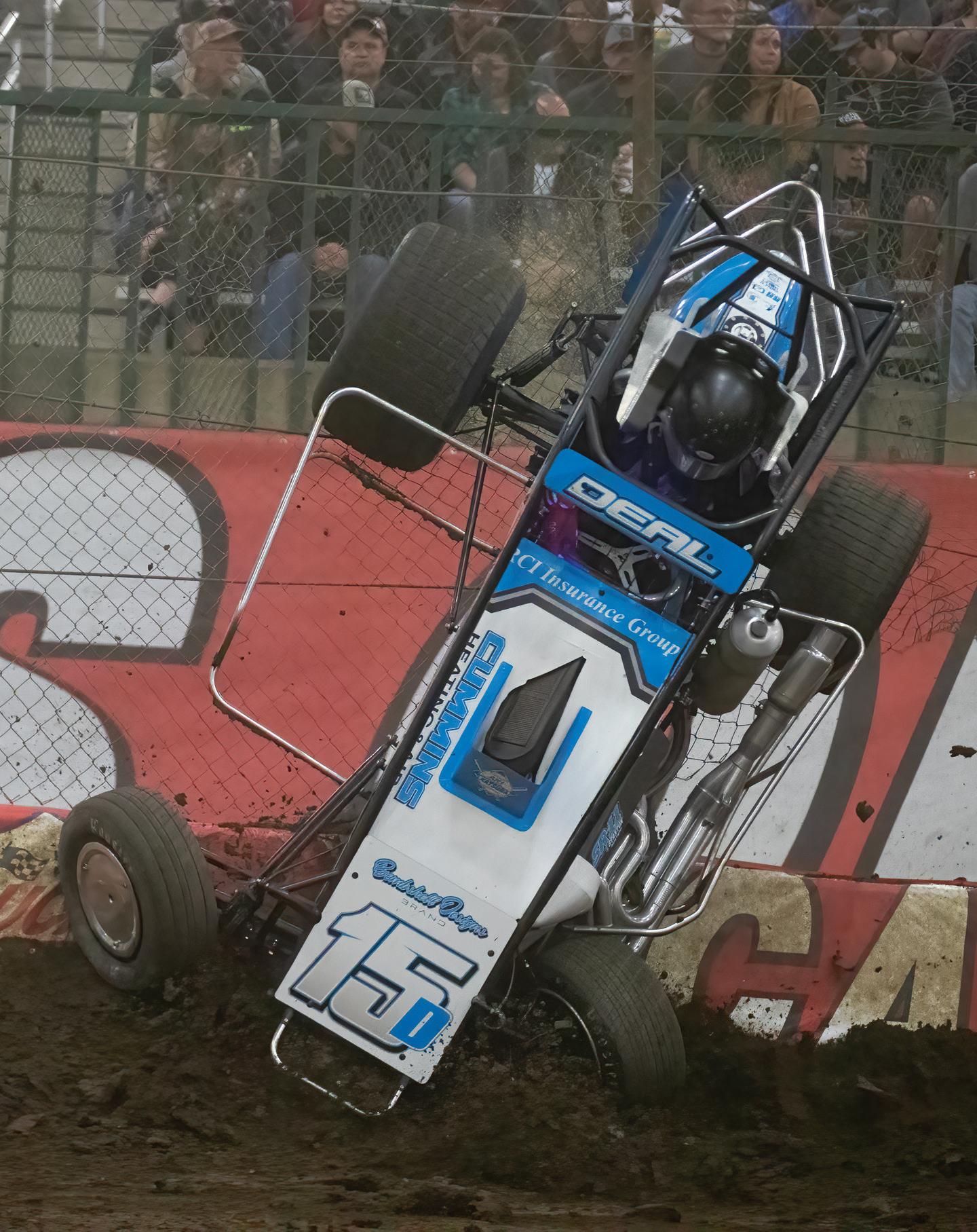
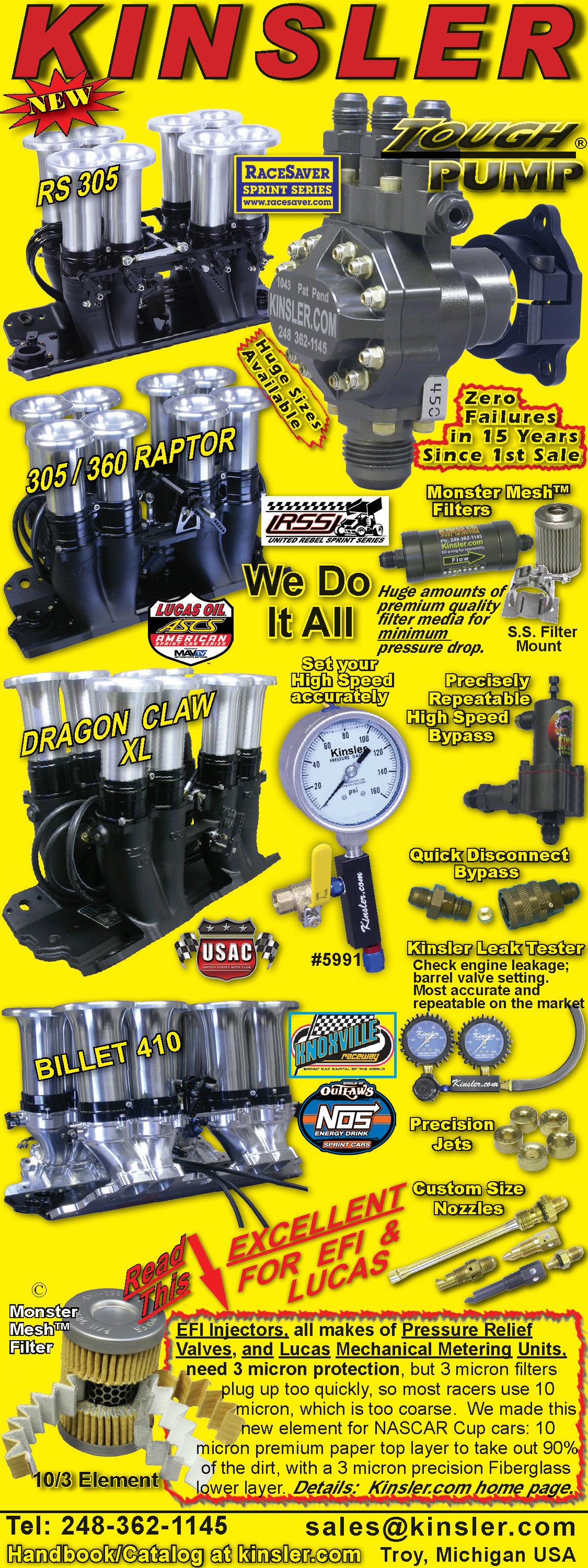 Photo: David Campbell
Photo: David Campbell
Photo: David Campbell
Kort Morgan: wheel up.
Thomas Meseraull: wheels up.
Photo: David Campbell
Photo: David Campbell
Photo: David Campbell
Kort Morgan: wheel up.
Thomas Meseraull: wheels up.
DIRT EMPIRE MAGAZINE • ISSUE 15 - APRIL/MAY - 2023 27 Kinsler
Andrew Deal: wheels up and over.
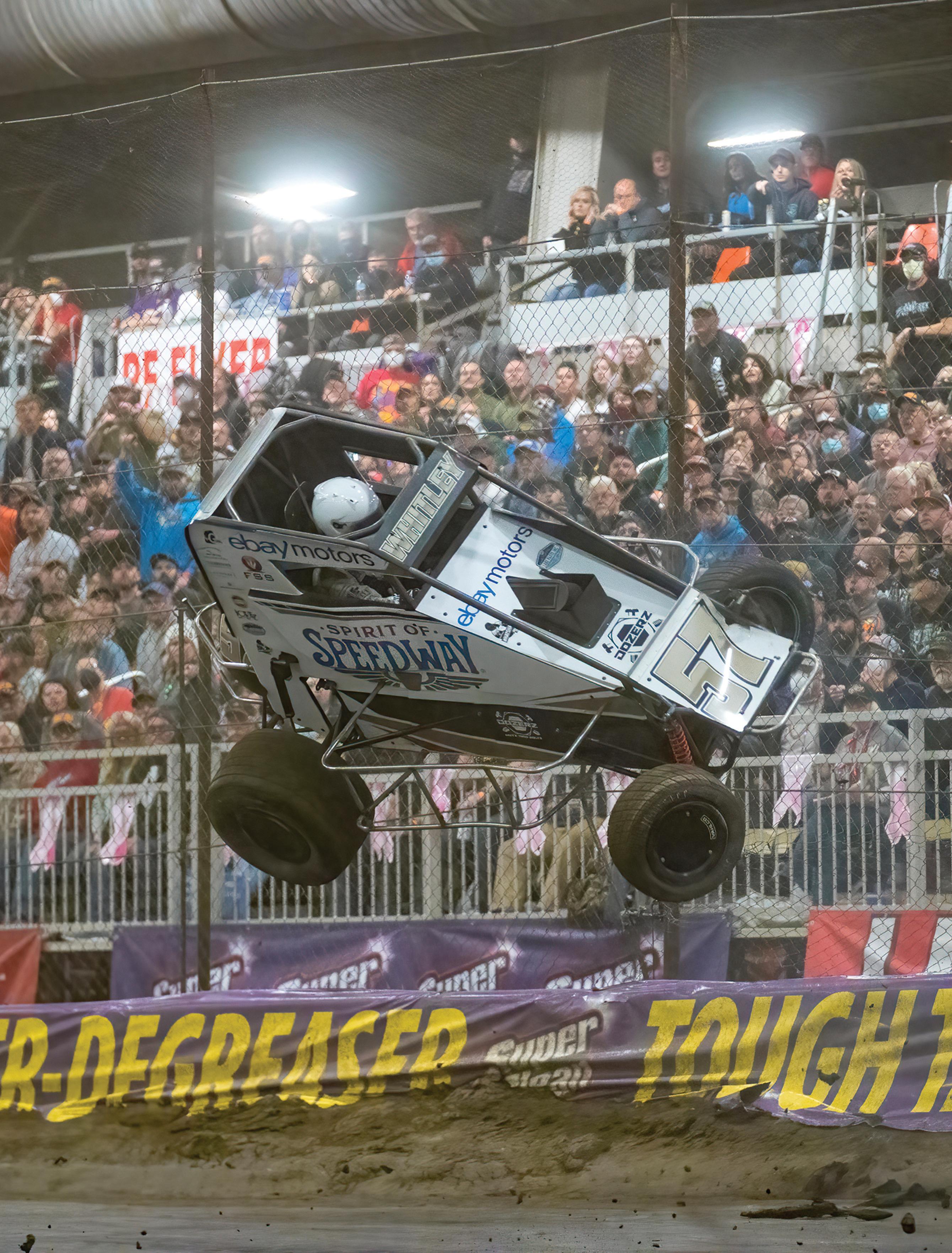

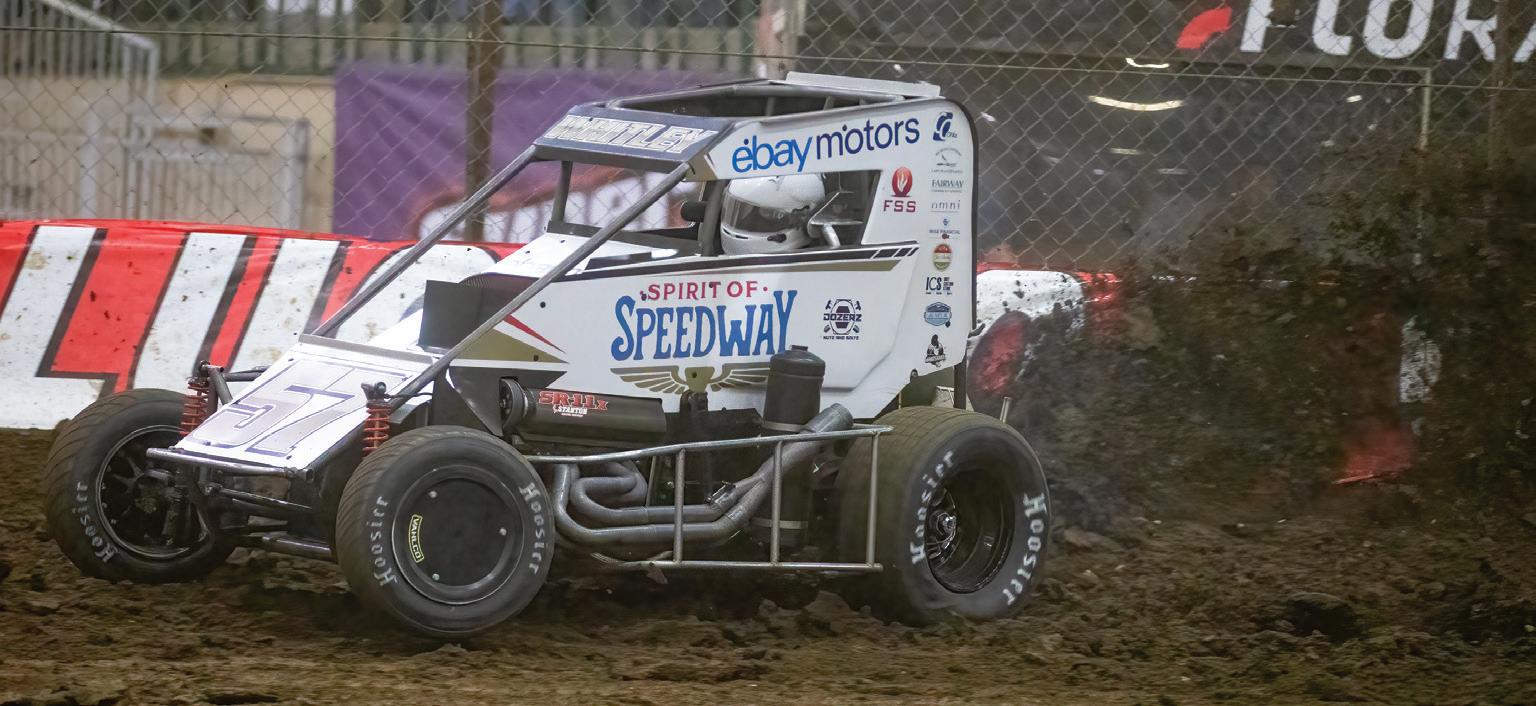
Daniel Whitley had an exciting finish to a great week when he crashed down the frontstetch in one of the C-mains on Saturday night. The car caught fire when it hit the ground but was quickly exstinguished and Whitley ended his first Chili Bowl unscathed. Learn more about Whitley on page 32 of this issue.
Photos: David Campbell
28 DIRT EMPIRE MAGAZINE • ISSUE 15 - APRIL/MAY - 2023
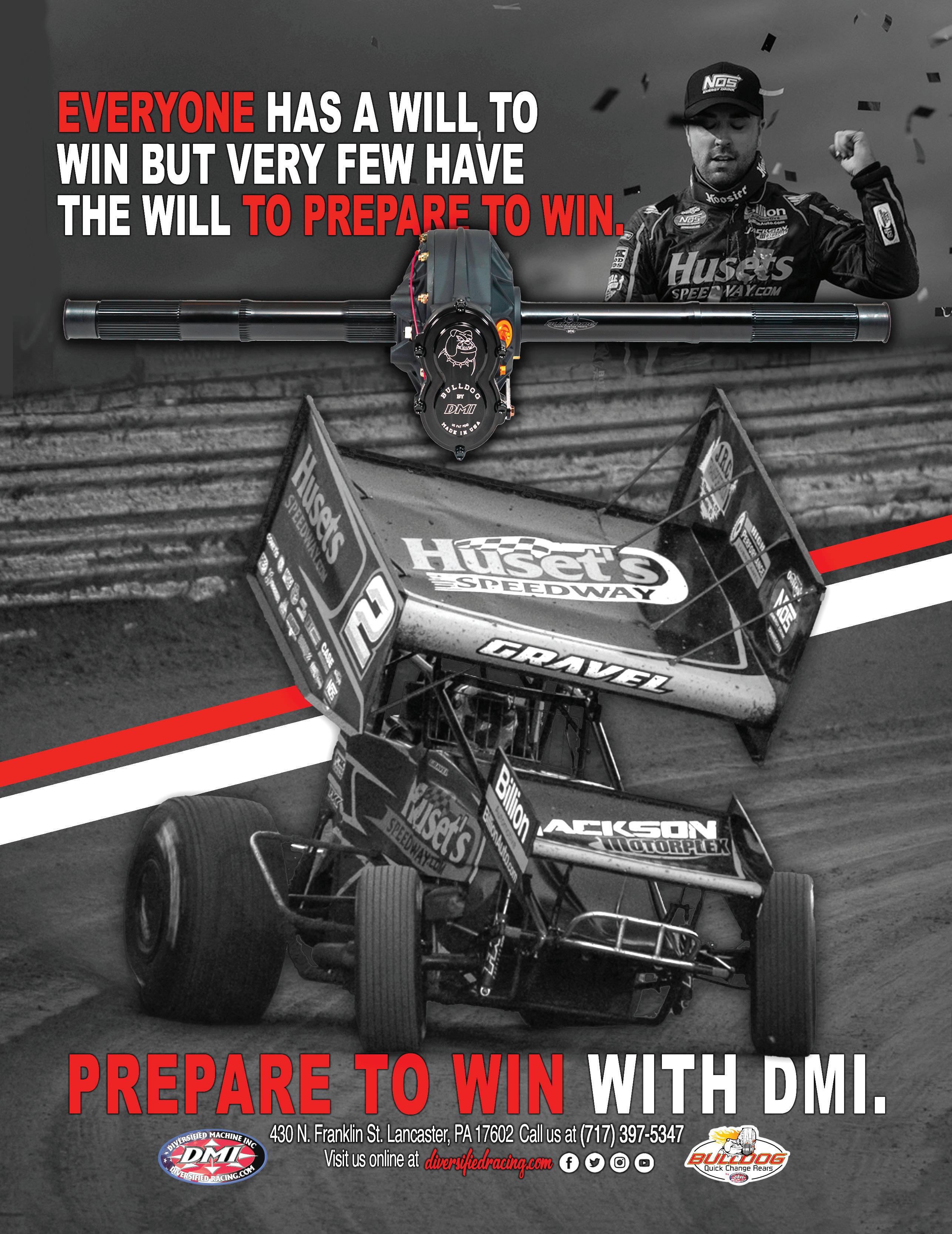
extra LAPS
THE TRACK
The building boasts 10 acres that easily fits all 370 cars as well as seating for 15,000 of the most diverse racing fans you have seen. With everything under one roof and no fear of a rain out and no sweltering summer nights, seeing it in person gives you a true understanding how special this event is.

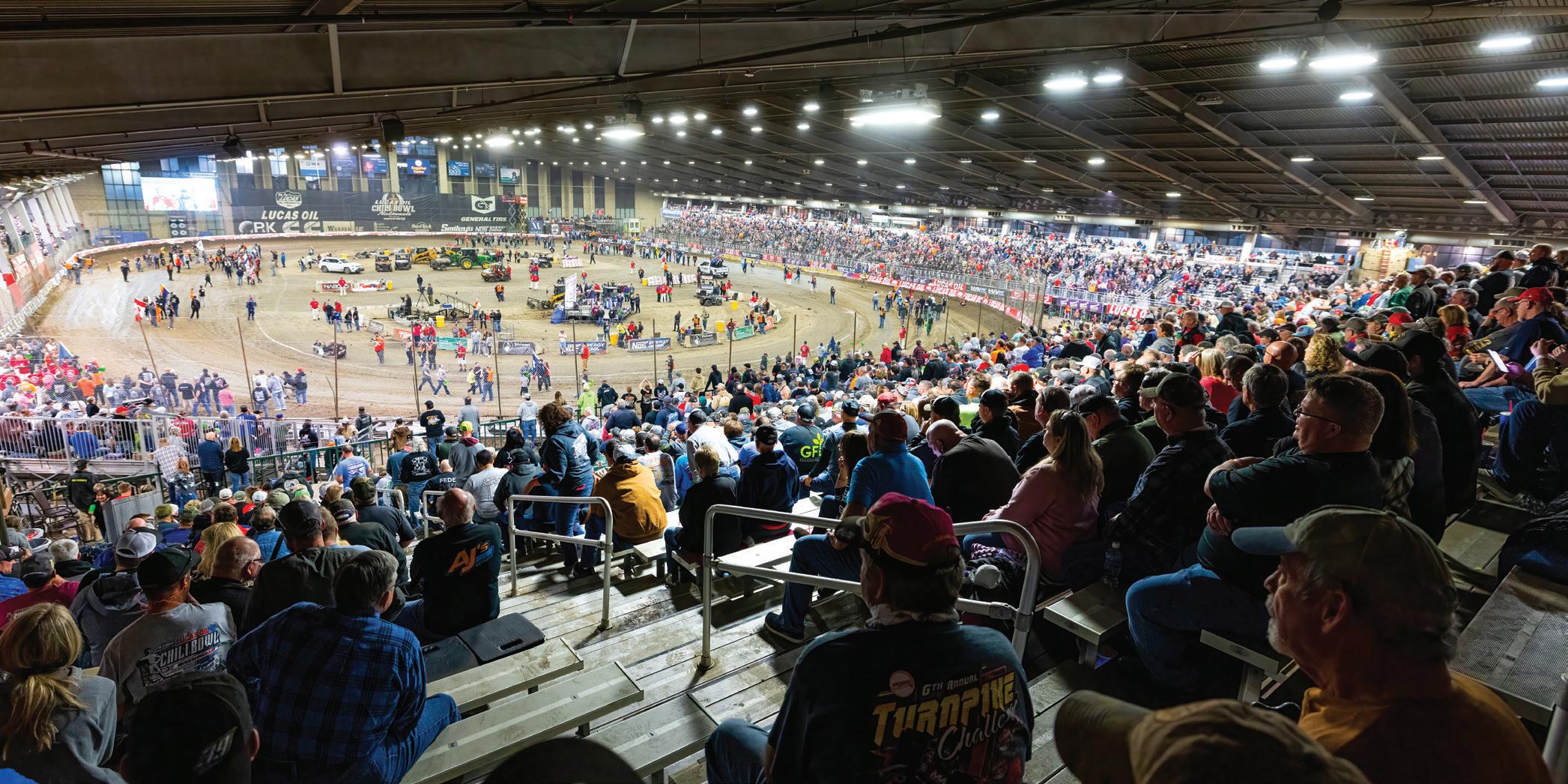
NEVER BEEN?
HERE’S WHAT YOU’RE MISSING THE MOST
WORDS AND PICTURES
BY PATRICK GRANT
IT WAS 37 YEARS AGO when 48 midgets showed up in Tulsa, Oklahoma, for an indoor dirt race after founders Emmett Hahn and Lanny Edwards came up with their own “Field of Dreams”. Build it and they will come and come they did! It started out as a lightly attended race that provided a chance for race fans to get their racing fix in the depths of winter.
The Chili Bowl Midget Nationals has now turned into a yearly pilgrimage for hundreds of racers and thousands of fans to be a part of a huge event, a spectacle if you will, that now spans over six nights, plus a full day of practice.
Because of the enormity of this event, Dirt Empire Magazine felt it was time to introduce those of you who still have the Chili Bowl on their “Bucket List” to the coolest things about this unequaled freefor-all.
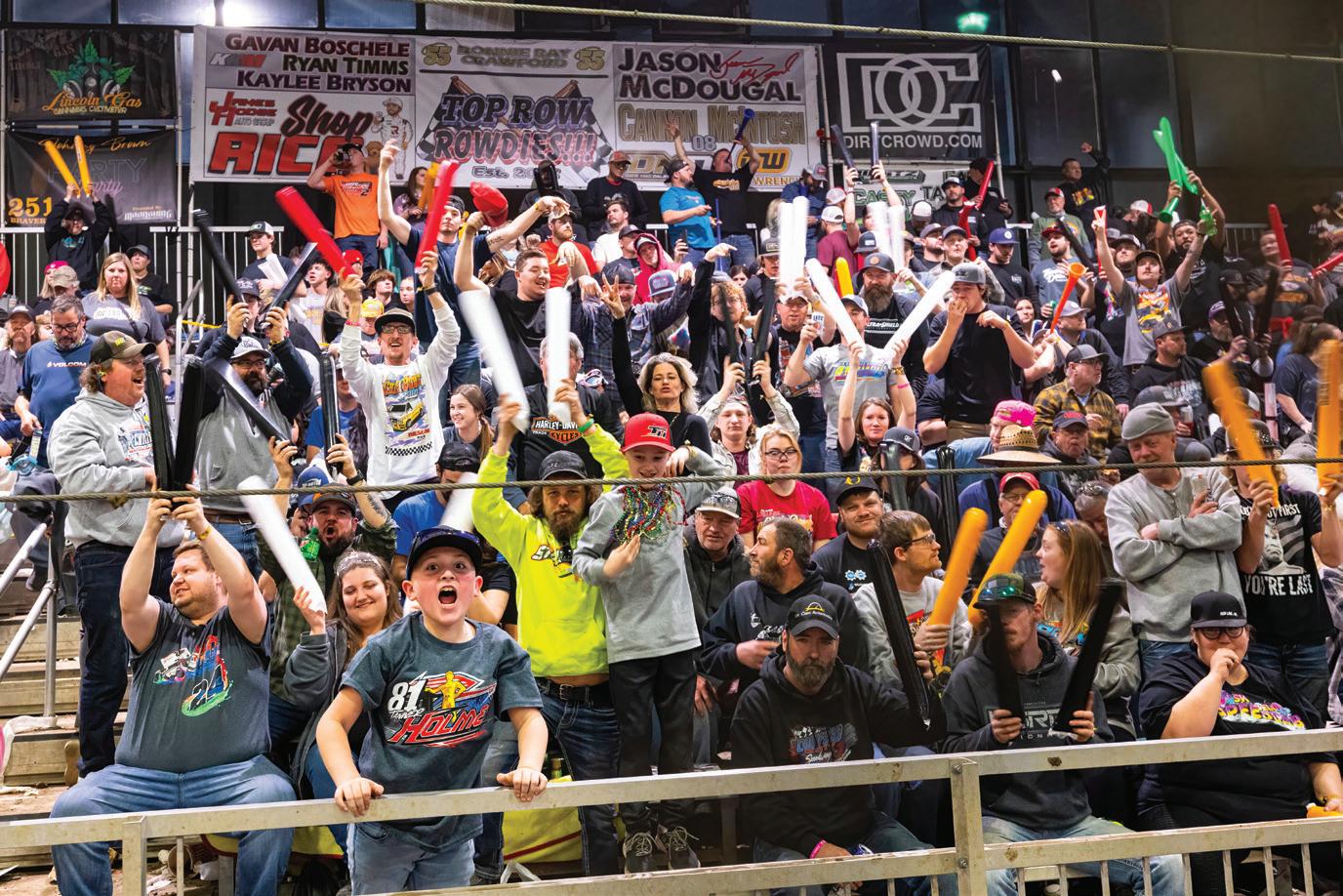
THE CONFETTI AND ROWDIES
There are the confetti canons that go off on the frontstretch just prior to push off, the parade of states prior to driver introductions, and of course the “Top Row Rowdies” off of turn 2 on the back stretch. Probably the most energized group of race fans on the planet! It creates a hype that culminates in 55 laps of intense racing.
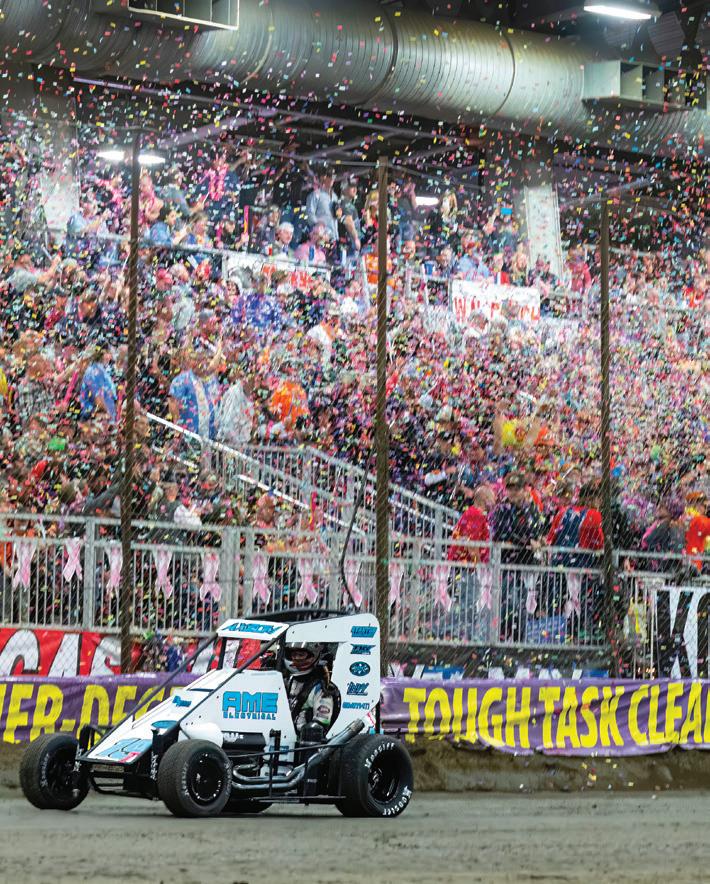
30 DIRT EMPIRE MAGAZINE • ISSUE 15 - APRIL/MAY - 2023
THE KEITH KUNZ OPERATION (KKM)
There are too many multiple car teams to count, but the Keith Kunz Motorsports (KKM) team operation is a sight to behold. With none other than 2001 Chili Bowl Champion Jay Drake (center of top photo) heading up the behind-thescenes organization required for the daily care and feeding of 14 entries, surrounded by a cadre of ace mechanics. It is an expertly orchestrated operation with a deep history of winning big races and championships.
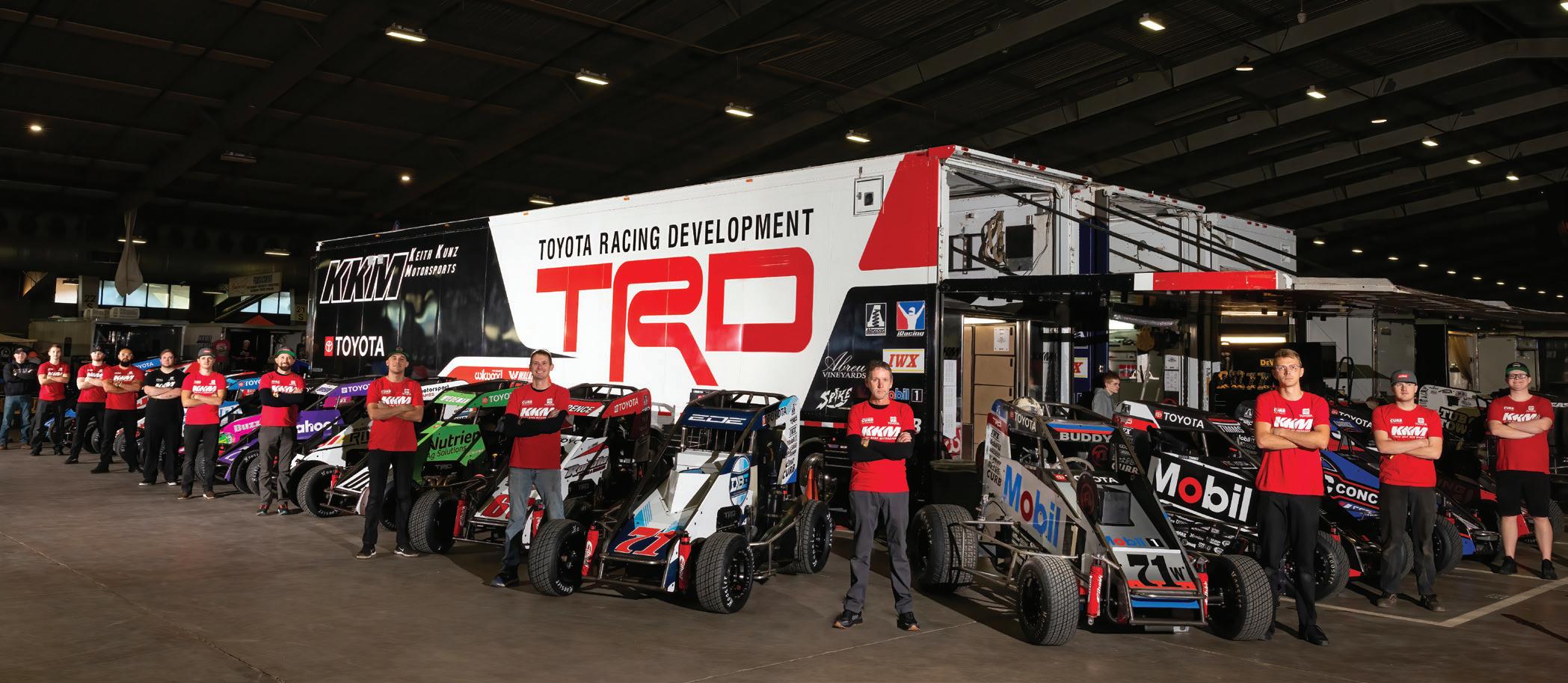
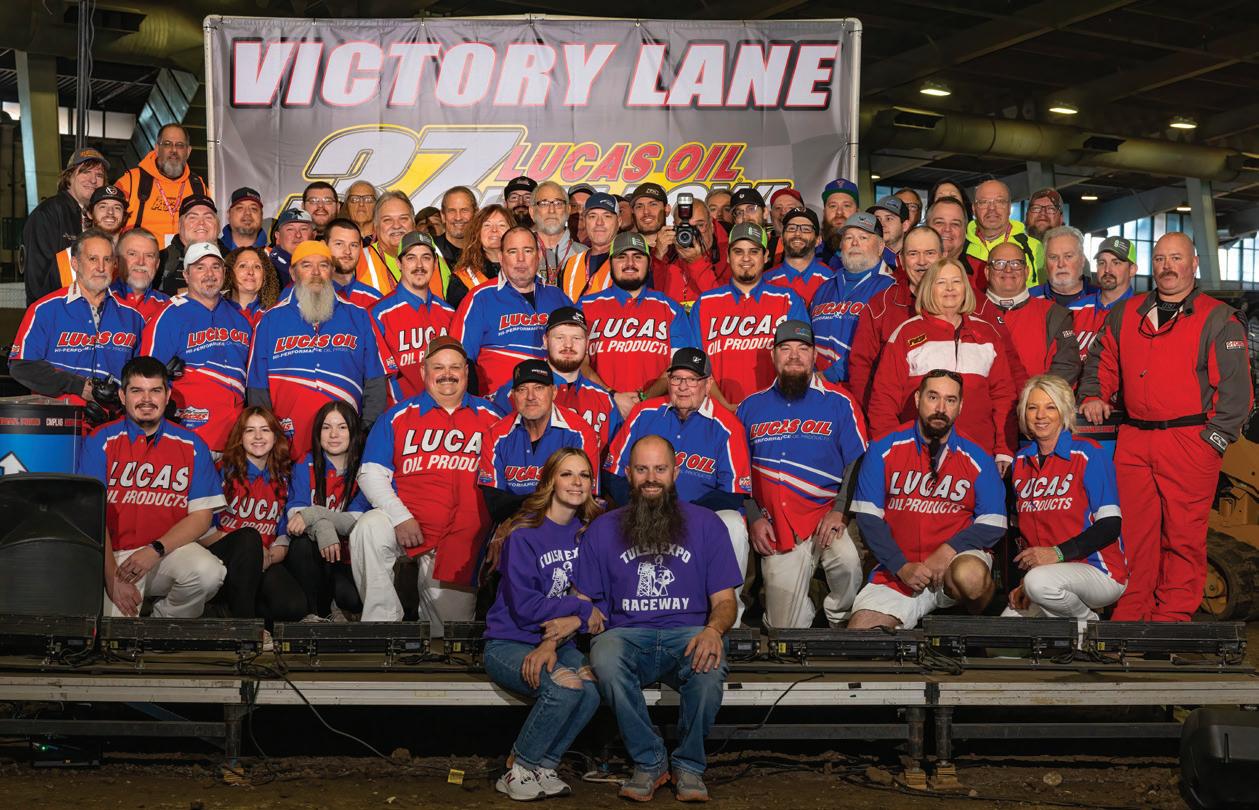
THE CARS
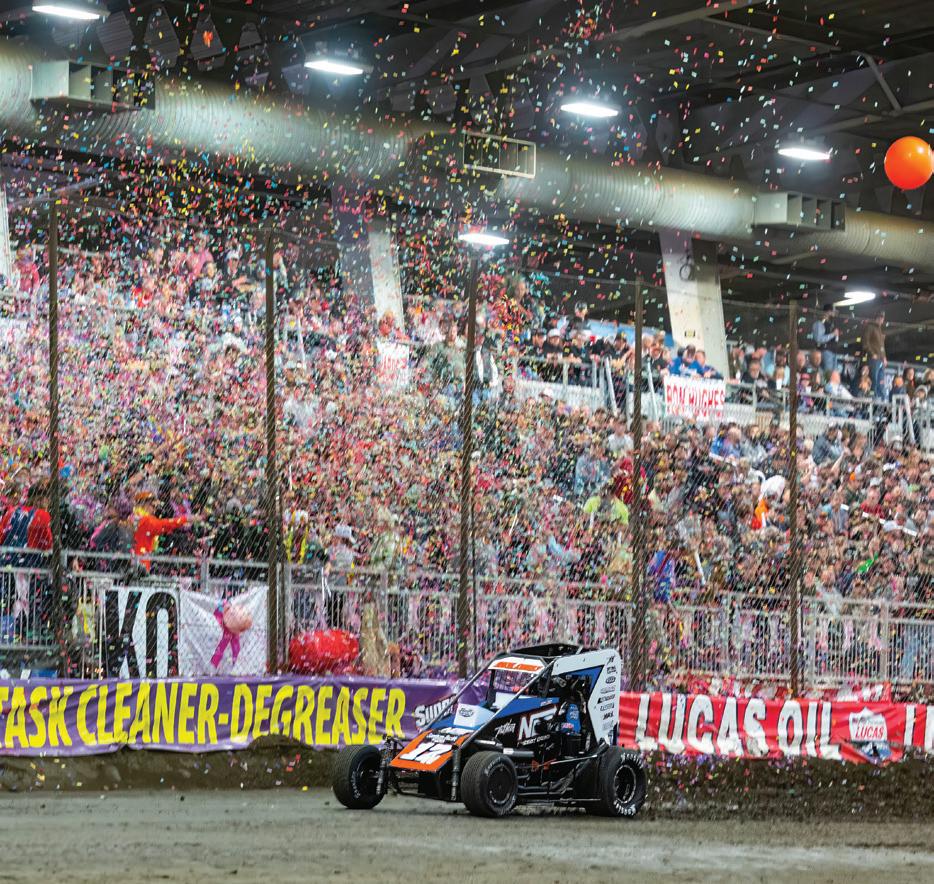
THE CAMRADERIE
One thing this photographer thinks is pretty cool about the Chili Bowl is the camaraderie between the swarm of photographers who travel to Tulsa from around the world and the Chili Bowl track workers. Many of us have been working together year after year and have developed a close bond with everyone who works the infield.
One of the coolest things is the wide variety of liveries on race cars at this enormous event. This year, one car stood above the rest. Andrew Felker brought this unique scheme this year that caught everyone’s attention.
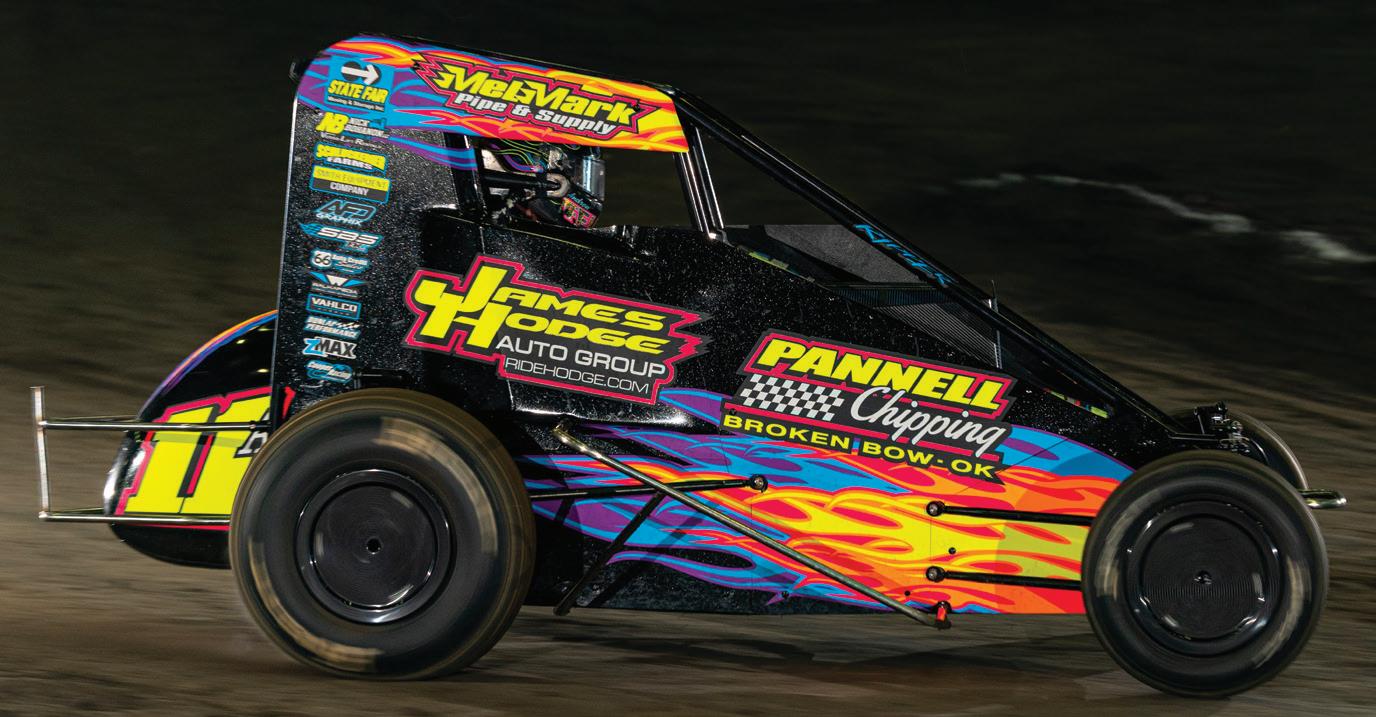
DIRT EMPIRE MAGAZINE • ISSUE 15 - APRIL/MAY - 2023 31
extra extra LAPS FOOT TO THE FLOOR CHILI BOWL ROOKIES
WORDS AND PICTURES
BY DAVID CAMPBELL
DANIEL WHITLEY – He has to be the Hinchman Indy firesuits spokesperson at the ChiliBowl with the great interview line “I was surrounded by fire and we’re still looking clean” but don’t let the fireball overshadow his rookie run in 2023. This wheelman from Ferndale, California, was just a ball of energy that carried over into his style of driving and I expect to see a better run 2024 if the opportunity presents itself.
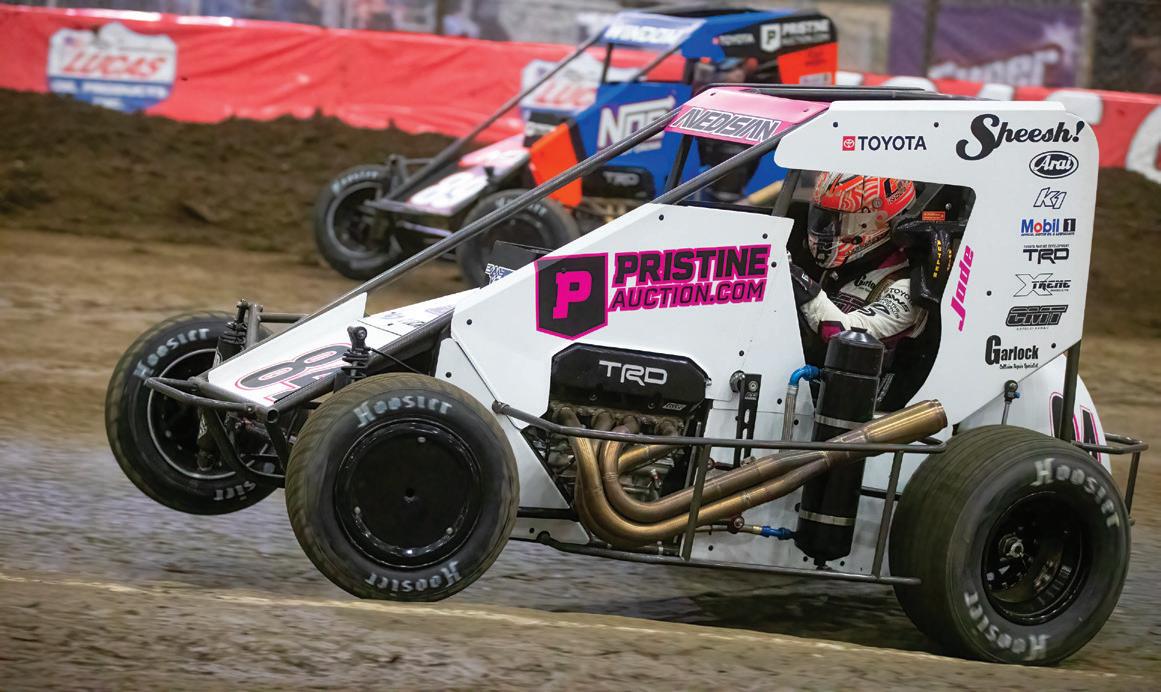
JADE AVEDISIAN – This young lady showed out for her 2023 ChiliBowl rookie campaign. Showing that she wasn’t afraid of letting it all hang out made her look like a midget veteran inside the Tulsa Expo. She already has a Driller in the trophy case from winning at the Tulsa Shootout in 2020. A quick look at her first Chili results - Tuesday preliminary night second, third in the qualifier, third in the A-main, second in the B-main Saturday and 18th in the finale. Those are Rookie of the Year numbers! Keep an eye on this driver for your Dirt Draft in the 2023 season.
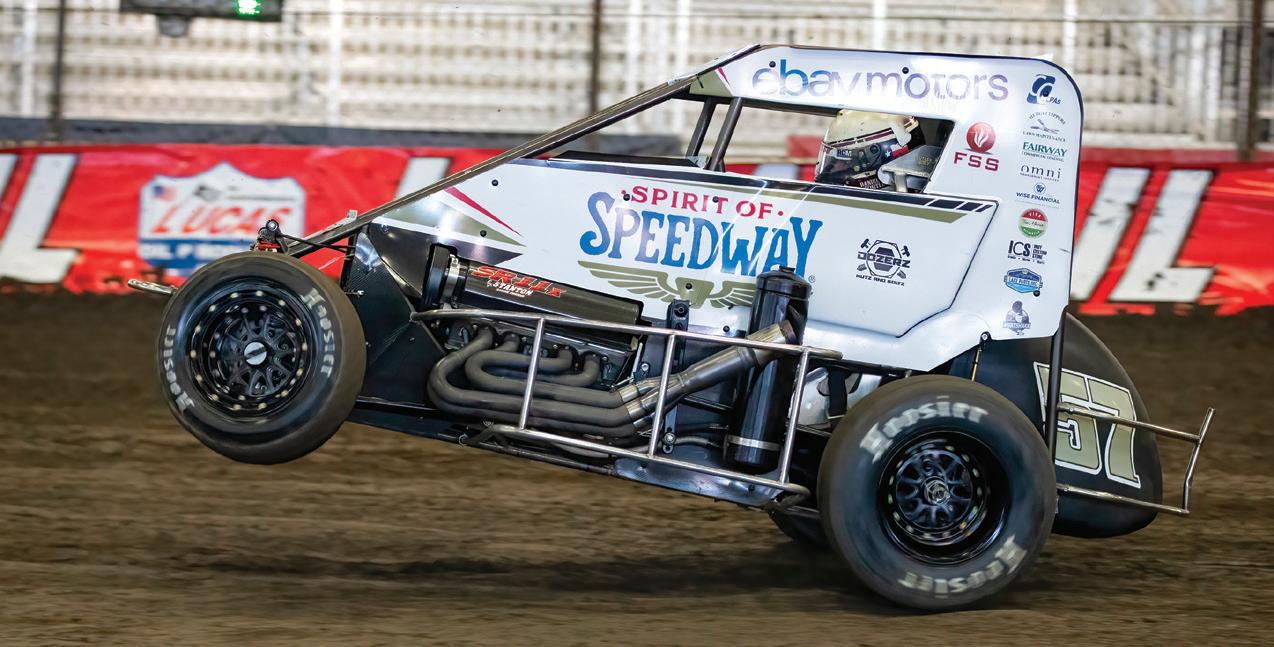
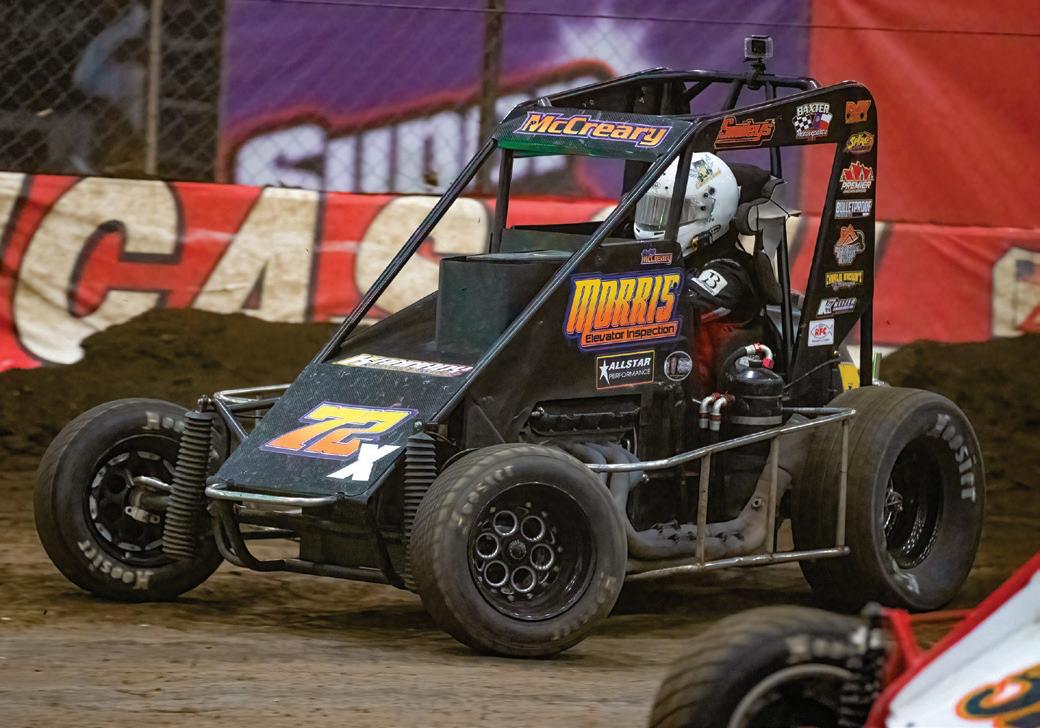
KRIS CARROLL – Say hello to the new King of the Soup at 7! Although a rookie at the ChiliBowl, he isn’t a rookie to the Tulsa Expo as he owns a Shootout Driller from 2021 in the non-wing outlaw class. With a rough ending on his preliminary night, it buried him deep in the soup which led to a run that got the early crowd on their feet and making some noise. His was the longest run of the soup – N – M – L – K – J – I – H with a total of 53 cars passed. Tip-Of-The-Hat to ya Kris!

CADEN MCCREARY – The kid is the type of driver that everyone roots for. When you look up the word underdog, his name is right there. The ChiliBowl is not for the faint of heart or drivers that have never sat in a midget BUT when you get an opportunity you have to jump on it. The biggest thing I saw out of this young driver on the track and talking to him off the track is that he has heart. He’s been running with the ASCS Elite Non-wing series and has a couple of wins and is a driver that is going to be competitive in anything he drives. At the age of 16, his work ethic alone is going to take him places. Watch for this name in the future.
32 DIRT EMPIRE MAGAZINE • ISSUE 15 - APRIL/MAY - 2023

Salina, Oklahoma
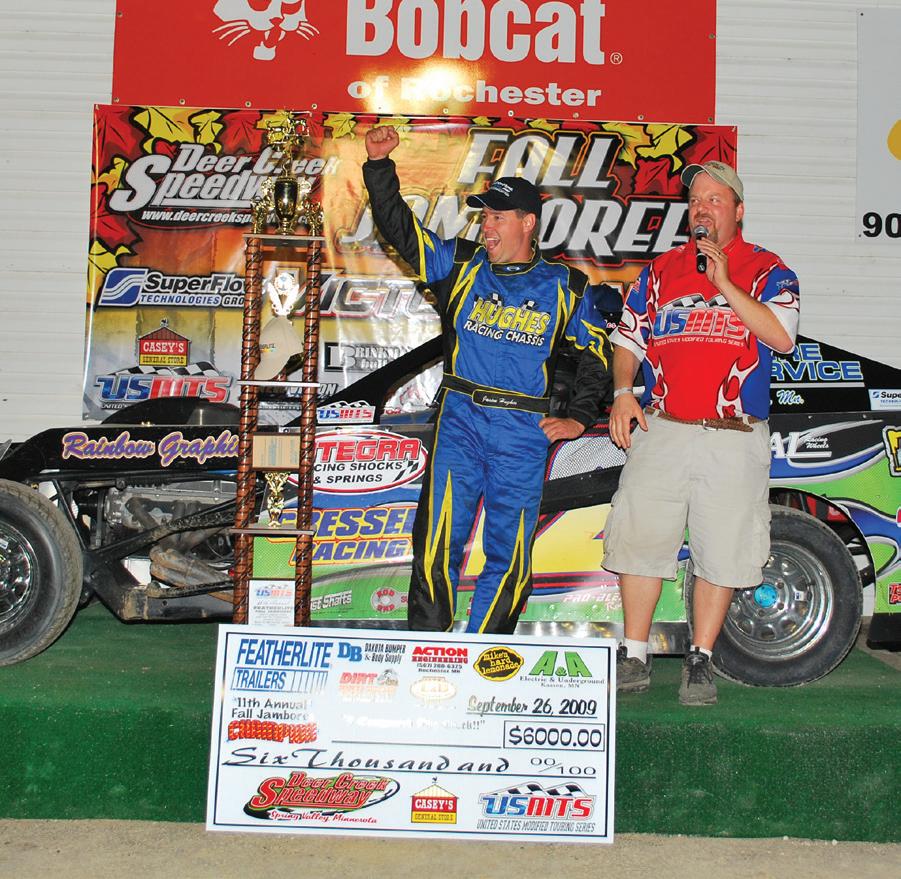
JASON HUGHES
A REMARKABLE RACER AND BUILDER
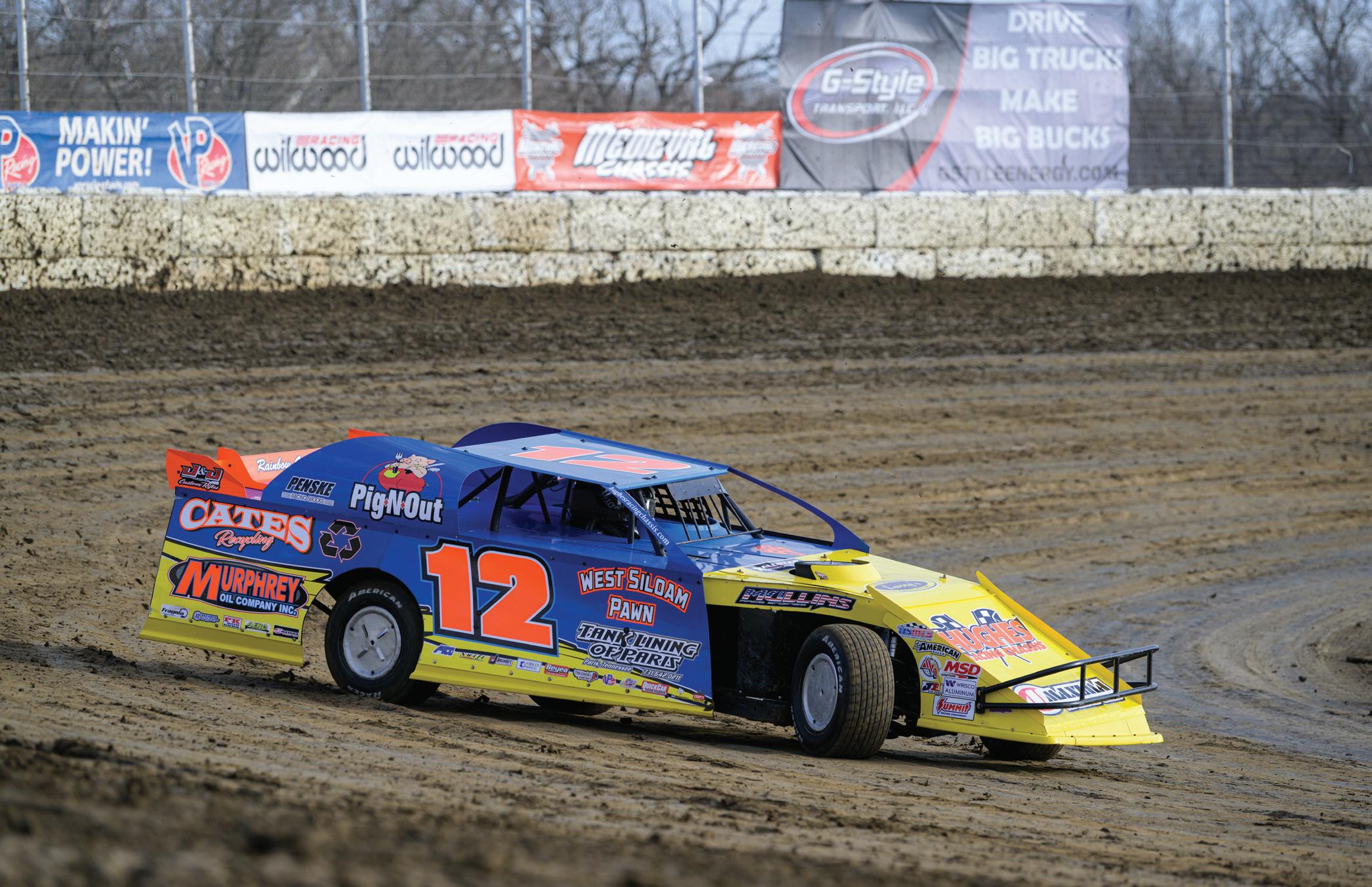 WORDS BY DOUG KENNEDY PHOTOS BY BUCK MONSON
WORDS BY DOUG KENNEDY PHOTOS BY BUCK MONSON
MIKE HARRISON and Hughes Racing Chassis just completed their first DIRTcar racing UMP Modified National Championship title together this past season. It was a classic season for the team under the guidance of the car builder - 48 year old Jason Hughes of Salina, Oklahoma. Hughes and Harrison went on to win an incredible 25 features in 2022.
Not only is Hughes an outstanding car builder but he is a very accomplished racer as well having raced from 1988 through the 2022 season. Hughes, the driver of the 12 Hughes Chassis, Mullins racing engine modified started building his own chassis in February of 1998. These days, his chassis are custom designed for modified dirt track racing all over the country. Hughes Racing Chassis can take care of USMTS, UMP, and B-mod/Economy Mods.
We took some time to check in on his incredible career and get some high, lows and favorites as he begins a new chapter with his son racing, too.
Dirt Empire: Let’s start from the beginning with the basics. How long have you been behind the wheel of a racecar and what types of cars have you raced?
Jason Hughes: I started racing stock cars in 1988 before getting into a modified seven years later. In 2014, I ran the Lucas Oil Late Model Series. I found out that its way out of my league expense wise. The modifieds are a little more cost friendly, plus the modifieds were in my area. So, that’s what we had so that is the direction I took.
DE: You’ve had an incredible career. What stands out to you the most?
JH: I have over 500 wins in my career. That’s with the stocks and modifieds combined. I also have 155 USMTS wins and four career championships. The biggest win in my career would have to be the World Modified Championship at Deer Creek. The Fall Jamboree is our biggest race. We’ve won that race five times and, in 2015, I swept all three nights. That would have to be my biggest win. As for the accomplishments, my biggest would have to be those four USMTS championships. I also have won a handful
of track championships.
DE: What about your favorite tracks you have raced?
JH: I like West Salina Highbank Speedway right here. I also like Ogilvie Raceway and Deer Creek in Minnesota and of course Eldora. I qualified for both the Dream and the World in 2014 and was named Rookie of the Year. I did well at those tracks and they were fun to race.
DE: Let’s talk about Hughes Racing Chassis from the time you started it to now.
JH: I started building race cars full-time in 1998. I was doing it on nights and weekends. Separating the business from racing is difficult. At the shop you have to take care of your customers and on the track, you have to take of them as well because some of them are your customers. There is really no separating them. We have customers all over the country. I have cars in Alaska, California, Florida, and all across the country. We have national championships in UMP, USTMS, USRA, and IMCA.
Right now, we have five guys in the shop. I oversee all of it. One of the guys,
short track STARS
34 DIRT EMPIRE MAGAZINE • ISSUE 15 - APRIL/MAY - 2023
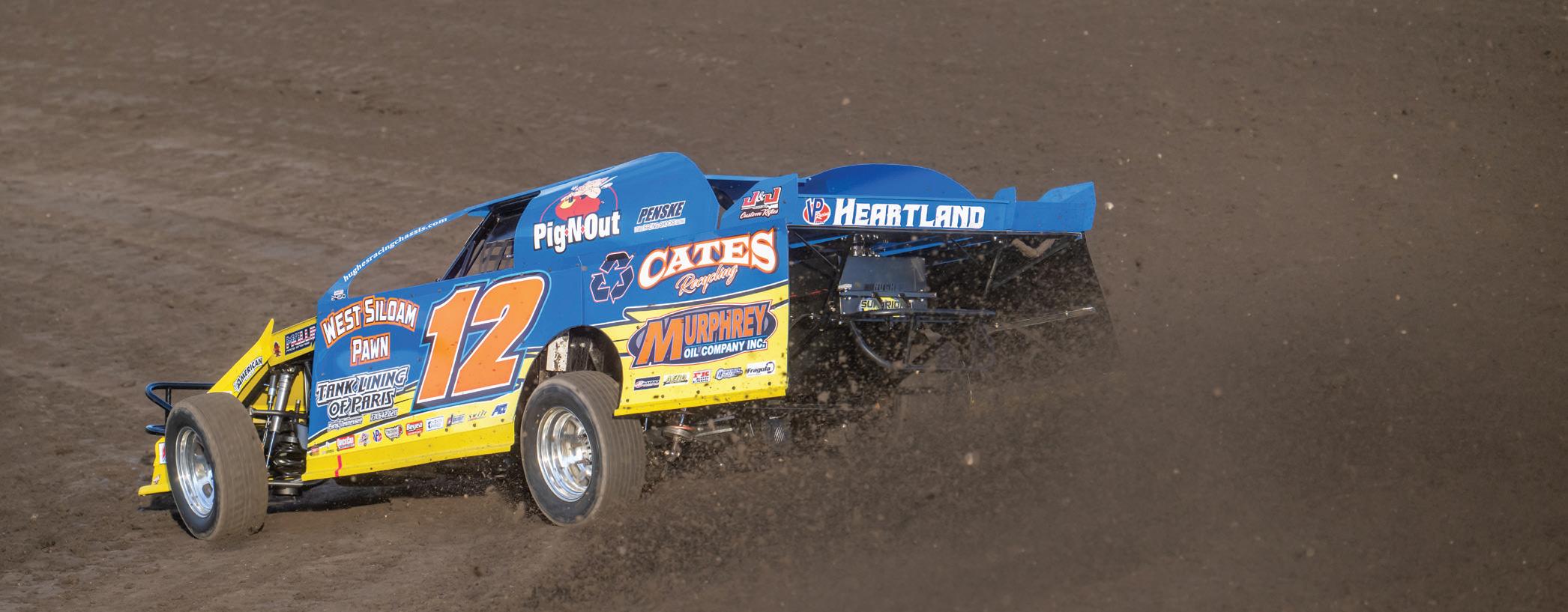
Brian Williams, has been with me since 2004 and takes care of everything when I’m on the road. The building is located in West Siloam, Oklahoma, and is 5,000 square feet. I also have a 1,500 square foot shop that I use for my racing and a 4,000 square foot shop that we use for storage and powder coating. Overall, we build about 15 to 20 cars a year. The most we ever had was in 2006 when we did 53. At the time we were doing just frame and chassis sheet metal work. We had the option of selling the chassis with only the sheet metal. So, in 2010 I decided to just build a complete roller. There are getting to be so many car builders out there. I do consider ourselves to be one of the top tier quality race car builders out there. We have a couple hundred clients around the country. I don’t know where we rank nationally as far as quantity, but I do know the quality is there.
DE: Let’s talk about the racing career of your son, Trevor, as he had been getting going on track, too.
JH: He’s been racing modifieds for the last two seasons. He’s 24 now and has done really well. He crews for me when I’m travelling so that doesn’t allow him to race full-time. We’re going to change that this year, so he’ll go wherever he wants to race. Our plans this year is to run two cars out of the truck. With Trevor increasing his racing schedule, we will need to find a new crew chief for this season.
DE: What about your racing career? How long do you plan on racing and what’s 2023 look like for you?
JH: I plan on racing for quite some time. As far as travelling full-time, well I don’t see that happening as much anymore. I
want to spend more time with my son. I would rather be watching him when he’s out there instead of driving against him.
DE: Have you too had the chance to race against each other and if so, how have the results been?
JH: Yes, we have. It’s fun to race with him. I like watching him and help to coach him, but it’s hard to do that when I’m out there racing against him. He’s hasn’t got to the point where he has beat me, but he’s getting closer. If we keep racing against each other, he’ll pass me sooner or later. He did get four wins this past season.
DE: How has modified racing changed over the years? Is it for the good or the bad?
JH: It’s like anything, the technology has come in and changed things a lot. It seems like they keep putting more rules in so that you can’t lay under your car to try new things. If you do, then they will take it away from you. When I was younger, you had a little more leeway for trying to do things that would make your car faster. I think they are way too worried about that now. They act sort of like the government. They want to make everybody feel as if everyone is on the same playing field and give some drivers that reward when they don’t put in the work. I think you should reward the guys that put in the time and effort to make their car faster and keep trying to make everybody equal.
 Hughes gets around one of his favorite race tracks - Deer Creek Speedway in Minnesota. He has won their hallmark event - the Fall Jamboree - an incredible five times!
Hughes gets around one of his favorite race tracks - Deer Creek Speedway in Minnesota. He has won their hallmark event - the Fall Jamboree - an incredible five times!
DIRT EMPIRE MAGAZINE • ISSUE 15 - APRIL/MAY - 2023 35
Hughes has raced stock cars and late models but he’s always been most at home and best known as a master in the modified.
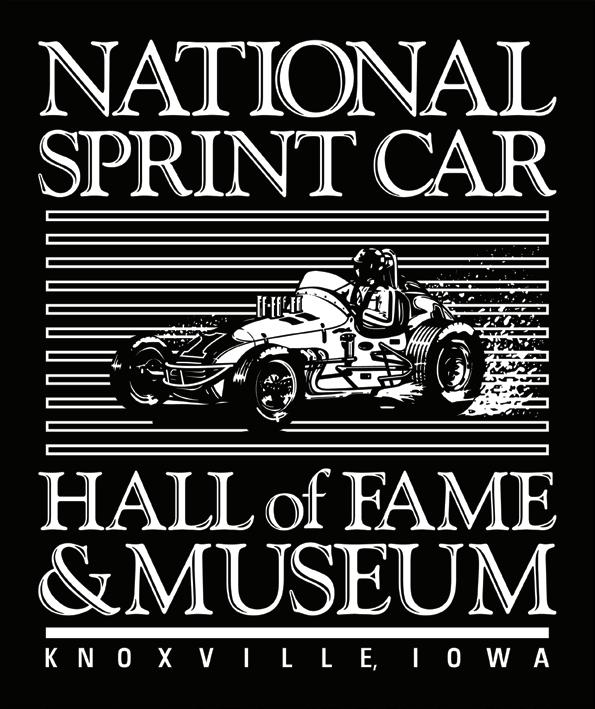
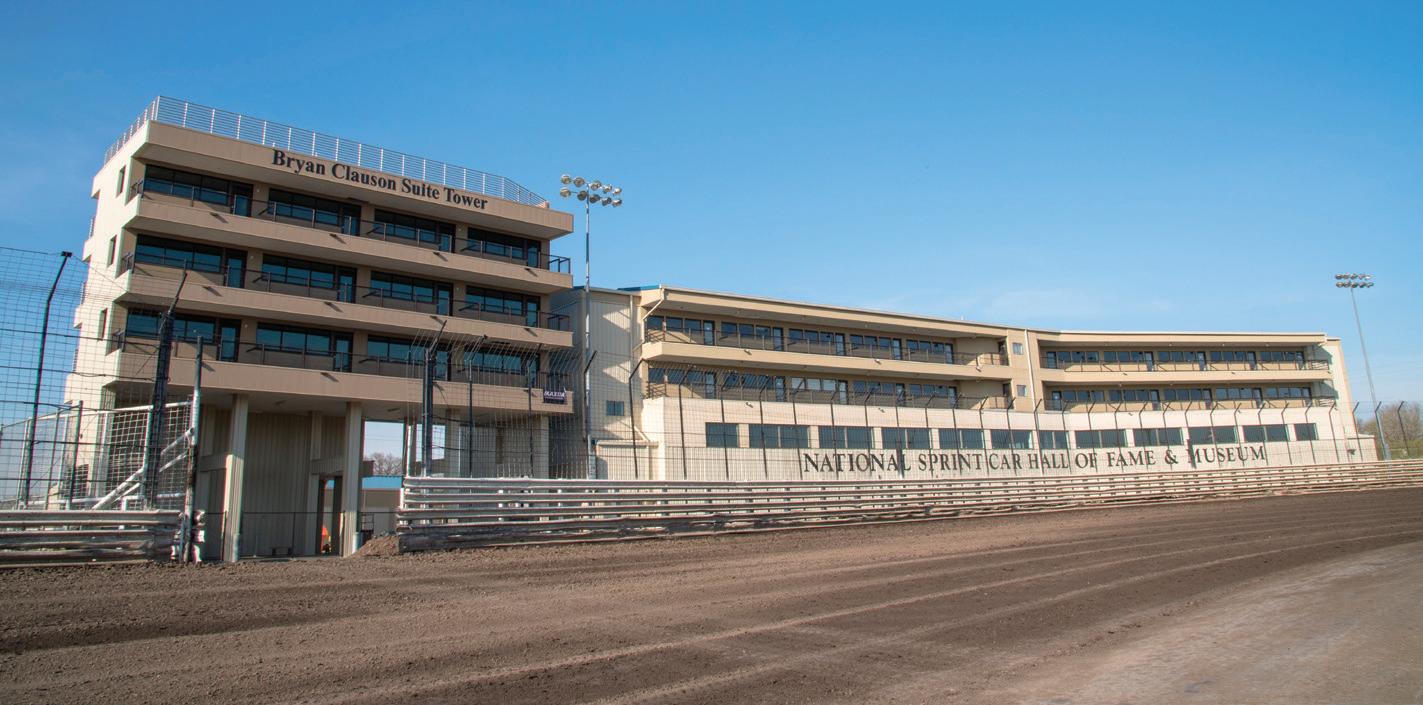
CLASS OF 2023
Dirt Empire Magazine is pleased to present our second National Sprint Car Hall of Fame issue and are honored to have partnered with the NSCHoF to prepare and publish the official Hall of Fame biographies for all 13 of the 2023 inductees into the class of 2023. Every
year, the Hall of Fame inducts a select group of drivers, owners, wrenches, innovators, media members and officials into an elite club housed off the second turn at Knoxville Raceway in Knoxville, Iowa. Thanks to Bill Wright and Bob Baker with the National Sprint
Car Hall of Fame and everyone who contributed to this special section. This year’s class will be officially inducted into the National Sprint Car Hall of Fame on Saturday, June 3, 2023 in Knoxville, Iowa.
Congratulations to all the inductees!
JOEY SALDANA - DRIVER
By Ashley Zimmerman
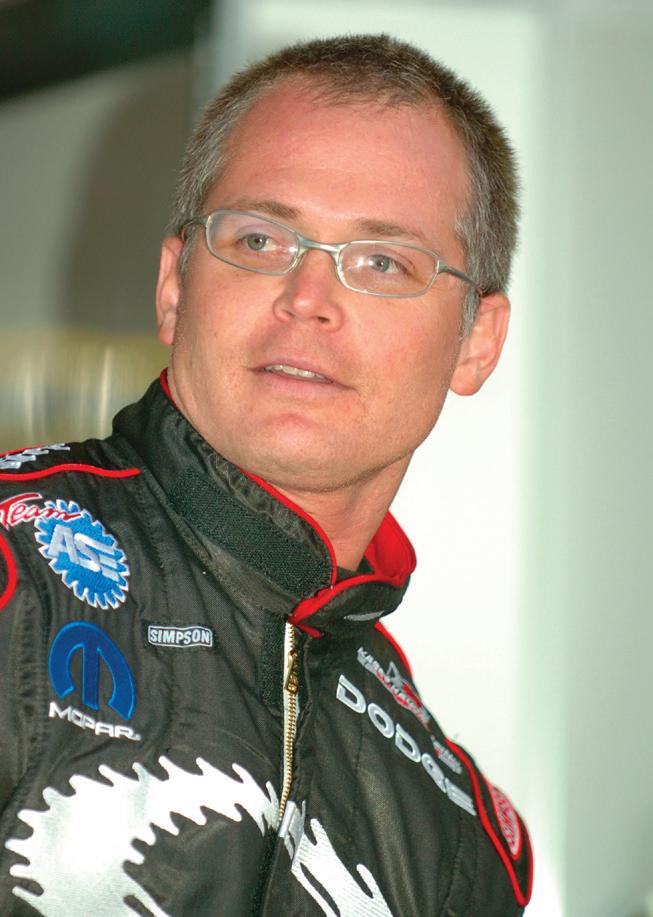
BORN THE SON of a legendary driver and now fellow Hall of Famer, Joe Saldana, Joey Saldana carried the pressures and weight of the rather large footprints he followed with ease. Born March 14, 1972, in Indianapolis - a town known to produce racing legends – he wasted no time chasing the same

dreams as heroes Lee Osborne and Doug Wolfgang.
Joey first scratched that itch in 1986, after stumbling upon a kart in Steve Stapp’s race shop and he raced it for two years. Through the wisdom of his father, he left karts behind and began learning engine building from Donnie Ray Everett,
and chassis design from his hero, Lee Osborne.
In 1988, he started racing winged sprint cars throughout Indiana, Illinois, and Ohio, honing his skills and experience lap by lap. His first win came in 1989 at Spoon River Speedway in Canton, Illinois. Joey took a short hiatus from winged
2008 Knoxville Nationals.
Photo: Paul Arch
Photo: Paul Arch
36 DIRT EMPIRE MAGAZINE • ISSUE 15 - APRIL/MAY - 2023
Circa 2006.
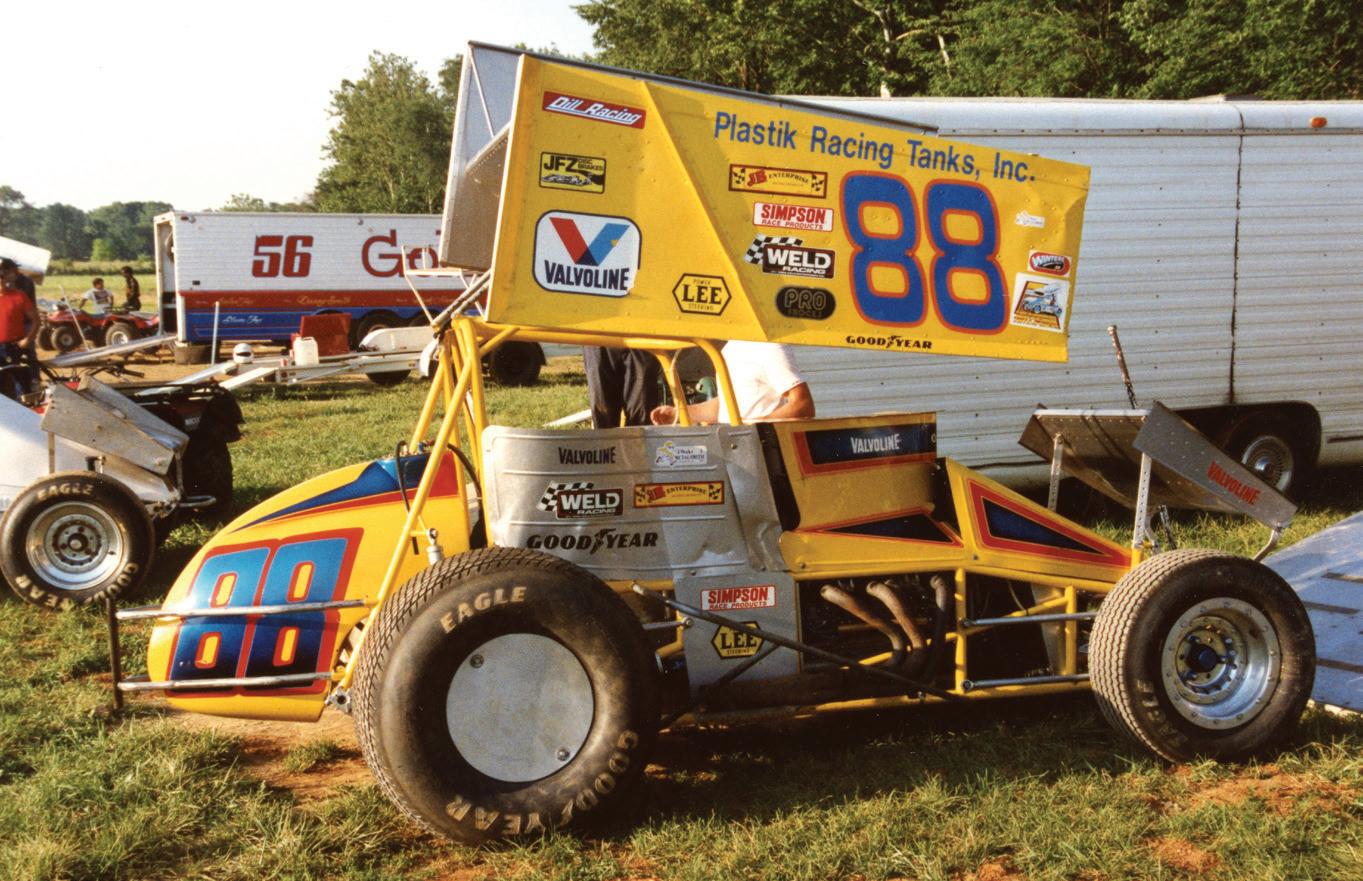
racing to racing on pavement with USAC from 1990 to 1991. Not able to shake the dirt track itch, he made his return in 1992, earning his first All Star Circuit of Champions win, doubling up on the sentiment by earning the victory in a car he built while at Stealth Chassis.
With his success with All Stars, he committed to the tour for 1993 and 1994, running the Tim Hughes 94 and the Warren Johnson U2 respectively. In 1995, he went racing with Art Wendt and Larry Hazelwood in the 77w and visited victory lane a total of 22 times, 18 of which with the All Star Circuit of Champions. Those 18 wins stand as a record even decades later and he remains third on the series’ all-time wins list in 2023 with 74 wins. Those wins did not come easily as he battled the likes Bobby Allen, Jack Hewitt, Kenny Jacobs, and Danny Smith. Joey’s win at I-96 would be the cherry on top of his breakout year and he went into the history books with his first World of Outlaws win.
Capitalizing on his 1995 success, he
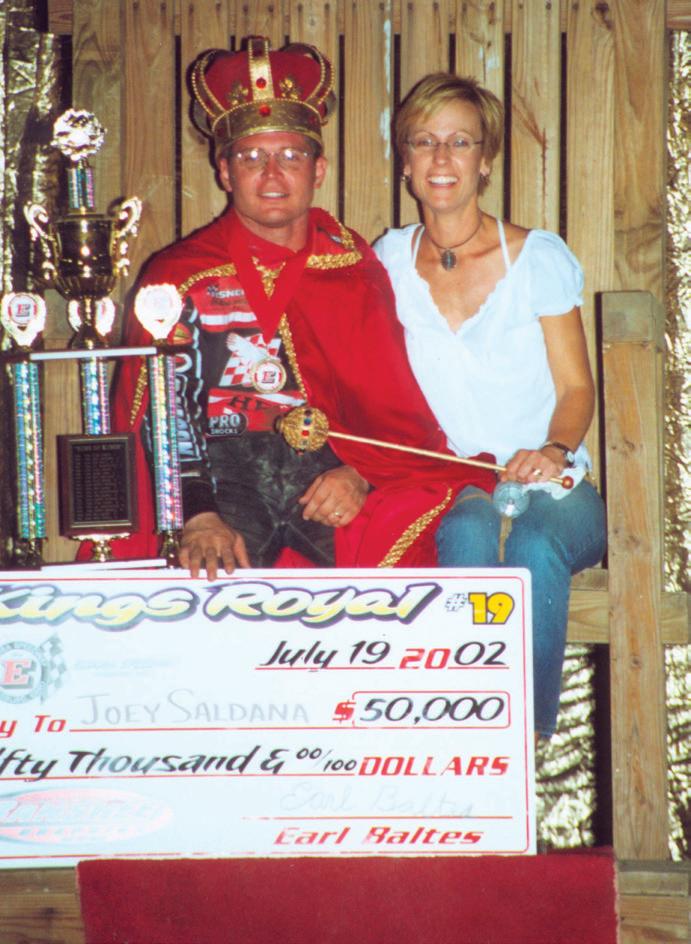
shot for the moon and joined the World of Outlaws for his rookie tour partnering with Dennis Roth in the coveted 83 of Roth Motorsports. After securing his Rookie of the Year title in 1996, Joey split his seat time amongst various teams, however his efforts would not go unnoticed with nine trips to the trophy stand.
However, as a new century began in 2000, a new era of “The Brownsburg Bullet” emerged with a nearly two decades stretch running with the World of Outlaws, while not always in the Saldana owned #17, Joey again solidified his name into the record books with 108 feature wins. Overall, Joey left the tour ranked seventh on the all-time win list. Joey is one of the only a handful of drivers to win 20 WoO features in a season, successfully completing this feat in 2009. During this stretch, Joey amassed some of his most prestigious wins such as the 2002 and 2006 Kings Royal, 2007 Brad Doty Classic, 2007 and 2009 Gold Cup, 2009 Iron Man 55, the Four Crown Nationals at Eldora in
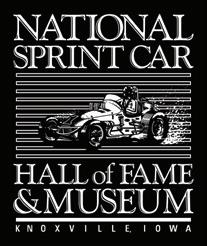

2007, 2008, 2011, and 2014. Joey has qualified for 19 Knoxville Nationals, and finished runner up in the finale second on three separate occasions. He has ten top ten finishes at the Knoxville Nationals. He was successful abroad and won the 2003 Grand Annual Sprintcar Classic in Australia and the 2006 New Zealand International Sprint Car Classic
While the story may have begun with a young Saldana following in the footsteps of his legendary father, the records clearly indicate Joey Saldana emerged upon a path he cleared through his own historical statistics. With over a three decade career and the school of hard knocks training in engine building, chassis fabrication and even car ownership, Joey not only raced with the best in the business, he became one of the best in the business. There is no better descriptor for over 105 World of Outlaws feature wins, 74 All Star Circuit of Champion wins and with victories against the best throughout the world.
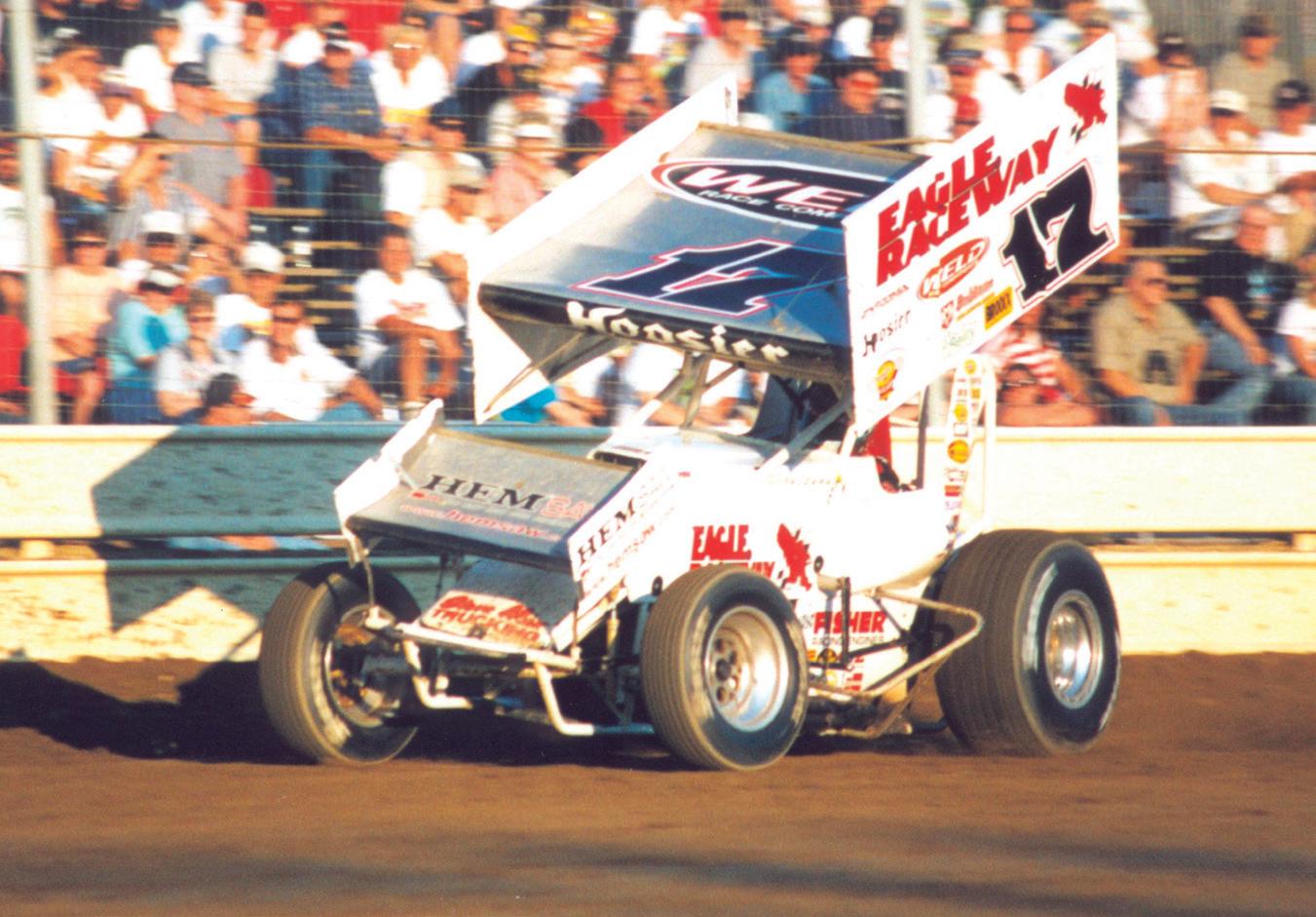 Circa 1992.
Poised for action at Bloomington Speedway in 1989, his second season.
Hanging out with wife Shannon after winning the Kings Royal.
Photo: Paul Arch Photo: Paul Arch
Photo: Paul Arch
Photo: Paul Arch
Circa 1992.
Poised for action at Bloomington Speedway in 1989, his second season.
Hanging out with wife Shannon after winning the Kings Royal.
Photo: Paul Arch Photo: Paul Arch
Photo: Paul Arch
Photo: Paul Arch
DIRT EMPIRE MAGAZINE • ISSUE 15 - APRIL/MAY - 2023 37
2002 at Eagle Raceway.
JOIE RAY - DRIVER
By Patrick Sullivan

OF THE MANY RACERS who have been enshrined in the National Sprint Car Hall of Fame, Joie Ray may hold the distinction of having the fewest career wins. In this case statistics are irrelevant. Ray was one of this sport’s great ambassadors. More importantly, he appealed to our greater selves and by example reminded us of all we could be better people.
Born to Joseph Ray Sr. and his wife Ella on September 29, 1923, all things considered, he could not have been reared in better circumstances. Louisville had a vibrant African American community and Ray Sr. was a recognized civic leader. He served as the President of the First Standard Bank, and later joined the Eisenhower Administration with a focus on housing. .
As a young boy, Ray became friends with others who made their mark. One was Georgia (Montgomery) Davis Powers, the first African American woman to serve in the Kentucky State Senate. She was a close confidant of Dr. Martin Luther King Jr. Another friend, Muhammad Ali, grew up four doors away. Despite his supportive surroundings, the world outside of Joie’s enclave was less kind. To underscore this, consider that one grandfather and a great uncle had been slaves.
Ray tried to emulate the life of his father but he was too restless. He was ready for action. In fact, he wanted to get involved in auto racing. He sometimes played the numbers and one day he got lucky. Flush with cash, he purchased a Dodge powered race car.
On Easter Sunday, 1947, he headed to Mitchell, Indiana, to try racing for the first time. His first attempt scared him. Still, he stuck with it. He became a regular in a blue collar group known as the Midwest Dirt Track Racing Association, better known as the Kerosene Circuit. As a Black man he was an outsider and a curiosity, but what he possessed was a magnetic personality. In this period, there was no one more important to Ray than James Bernard “Chick” Smith. Smith had been racing since 1929. He was not only successful, he was also well-regarded. Smith had a soft spot for Joie Ray. A defining moment came at Franklin, Indiana. Announcer Hank Heald was looking trackside when he exclaimed to all “Who is the [obscenity] in
number seven?” MDTRA standouts Smith, Bill Cantrell, and Cliff Griffith were not amused. They motioned to Ray to stay put as they headed to the press box. A quick chat with Heald followed. With their message delivered Hank then pronounced to the crowd “Ladies and gentlemen in the red number seven is Joie Ray, the world’s greatest colored driver.” In his fashion he and Heald later became friends. That’s Joie Ray.
Joie improved and was hungry to hit the road. He raced with the IMCA, and he didn’t shy away from tough places like Jungle Park Speedway, the Belleville High Banks, or the so called hills of death closer to home. In less than stellar equipment, he did his best. More importantly, he earned everyone’s respect.
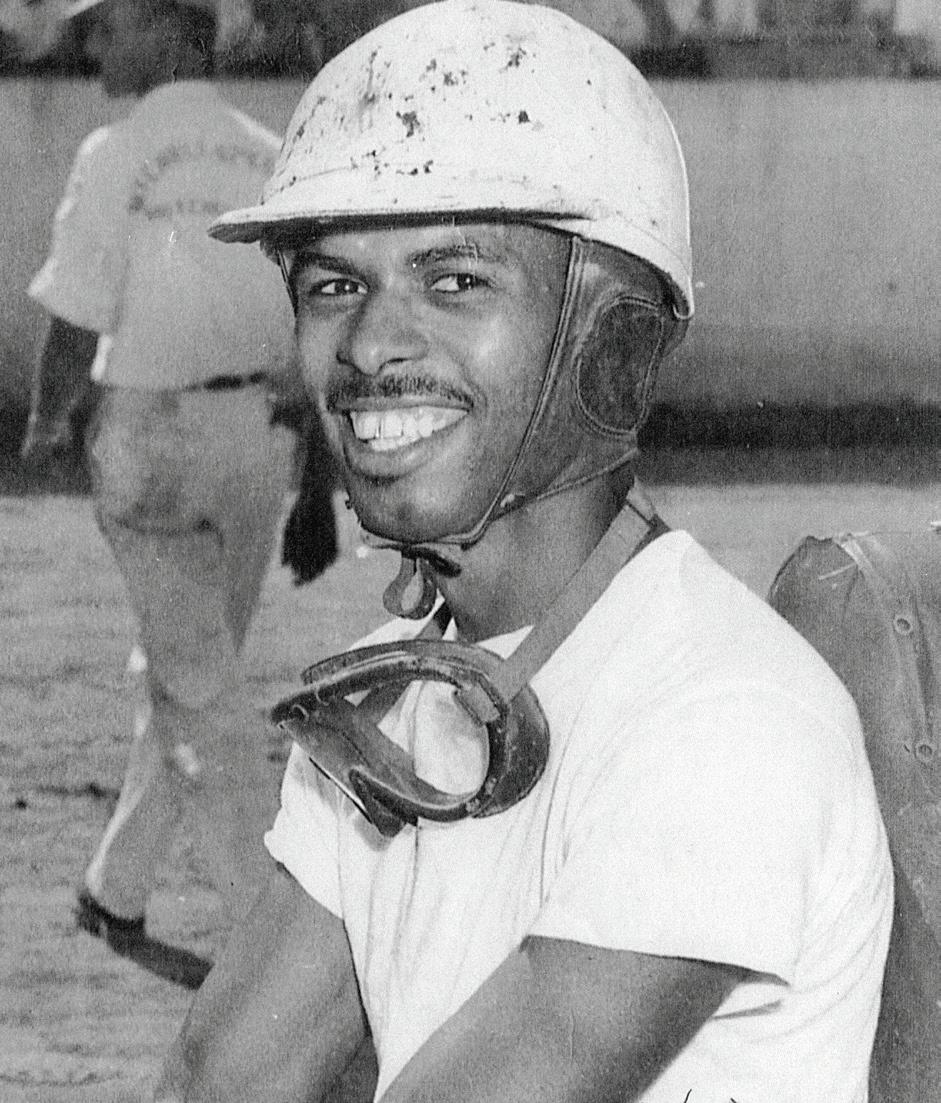
consolation race. He did it. The race was won by Troy Ruttman who, predictably, became a friend.
The movie “Green Book” documents the travails of African Americans as they travelled across a segregated country. Joie Ray lived this. During his sojourns, local authorities once suggested the safest place Ray could stay was in the jail. So, he did. Once he was directed to a place run by “Miss Peaches”. That was okay, too. Yet, at critical times, his racing peers stood up for him. Once when he was told he could not eat his post-race meal in the public area, Bobby Grim interceded. Grim told the proprietor if Joie wasn’t allowed to eat with them no one was paying their bill.
He won three feature events. He took an IMCA race at Wausau, Wisconsin, but admits some frontrunners mistook the white flag for the checkered flag. Ray also won two features in Carrolton, Kentucky. Joie never embellished his record. Ever.
What he did do was break the color barrier with the country’s leading sanctioning body – the American Automobile Association. It occurred on June 26, 1949, at Salem Speedway. Ray qualified 13th in a 25 car field and transferred to the feature via the
Some were unhappy that Joie was allowed to compete. It took the sometimes gruff Travis “Spider” Webb to get to the point. Webb said “Joie, number one you passed your test, that’s the main thing. Two, your blood is red, and my blood is red. And, finally, you’re a race driver.” Enough said. Ray would be back.
Joie was once asked to join the Gold and Glory Sweepstakes, a series designated for African American drivers. He declined. His reason was simple. He felt to improve you must compete against the very best. That’s what he did. In the history of sprint car racing, there have been better drivers, but there have been few finer people than Joie Ray. Ray died on April 13, 2007 – just over 60 years after his first race.
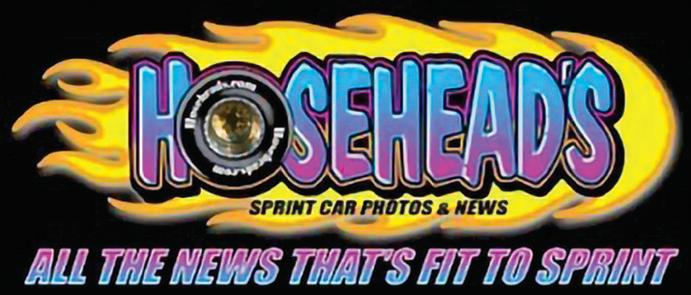
Hoseheads 38 DIRT EMPIRE MAGAZINE • ISSUE 15 - APRIL/MAY - 2023
BOBBY MARSHALL - DRIVER
THERE WAS NO WAY Bobby Marshall was going to avoid being bitten by the racing bug. One of his earliest memories was his curiosity about his grandfather’s supermodified in the garage of his Austin home. His father also wrenched and campaigned a race car. His destiny was then, and always, racing. “The Texas Marshall” proved himself behind the wheel and his dedication to racing continued after vacating the seat as he spent countless hours promoting the sport after hanging up his helmet,
His father Bob told him that he could get behind the wheel after graduation if he helped with dad’s race car. In 1972, a Jim McElreathbuilt sprinter was purchased from Shady McWorter and it was off to the Sportsdrome in Grand Prairie, Texas. Bobby captured his first heat race on the dirt ¼ miler before getting upside down.
Undeterred and ready for more, Marshall headed to Ft Smith, Arkansas for asphalt action, which he did for the rest of his career. He drove, and won, in 100” supermodifieds and sprint cars on dirt and asphalt - generally in his family-owned cars. After his successful first year, he was named the Texas Sprint Car Association Rookie of the Year.
The Marshalls and McElreaths (Jim and James) formed a cadre of marauding speedsters, seeking out competition across the land. Jim wanted the youngsters to get as much pavement experience as possible with Indianapolis the goal. James and Bobby raced regularly across Texas, Oklahoma, and along the Gulf coast with the Houston SuperModified Racing Association. The paved ovals at Jackson, Mississippi; Mobile, Alabama; and Pensacola, Florida were among their stops. Bobby was game to hit the road as he sought to learn by experience in a variety of machines on different surfaces. One trait remained constant and that was his ability to smoothly run the course. He charged to the front, mostly with his low-budget family operation. Much of his racing was done in cars powered by engines his father assembled, not the high-dollar, name-brand motors. There were exceptions during his career, such as a period with John Singer supplying the horses and also, while being sponsored by drag racer, Raymond Beadle, Wesmar Engines were generally used.
Hall of Famer Shane Carson remembers when Marshall first came to Oklahoma City. “I’m like wow! Who is this guy from Texas? He was really fast! We became friends and all the racers looked up to him. He was a real role model and was always willing to help. You really had to be on your game to run with him. The Marshall home was always a must-stop when we raced at Devil’s Bowl. He and his dad had all the stuff and advice for working on the cars and there was always good barbeque.”
By Tony Martin
The 1976 season was a banner year for Marshall. He won the first of two Winternationals at Devil’s Bowl and he was tabbed to drive Bill Smith’s Speedway Motors car, winning four of the six races they entered. It was here he first worked with fellow inductee Tommy Sanders. A bounty was put on Bobby after he won the first four features at West Memphis. Unfortunately, he was injured in a Haubstadt Speedway crash and that nixed the extra prize.
The next year saw Sanders come onboard the Marshall team bandwagon. They built a new car and Tommy lived with the Marshalls while serving as crew chief. He had a serious crash in the car while racing at home against the Outlaws and sat out the remainder of the season. His dad continued to putthe car on track and won with Norman Martin and Danny Smith. Smith’s victory came at Knoxville in the “Race of States”, a race Bobby won in 1982.
The World of Outlaws first race was held at the Devil’s Bowl in ’78 and Marshall was an entry, having been asked to join by Ted Johnson. Bobby won preliminary races with the Outlaws and has two Knoxville wins to his credit, but his most noted event came during the 1980 Nationals when he finished second, nearly overtaking Steve Kinser in the closing laps on a hot August afternoon. Saturday night’s event was fogged out so the race was held on Sunday afternoon that suited Marshall’s smooth style and throttle control. No need for a monster engine, just save the tires and go. He came within four car lengths of depriving Steve Kinser of his first Nationals title.
Bobby loved sprint car racing but his priorities were always God and family. In 1985, he pondered the loss of friend James McElreath (to whom his sister, Toni, was engaged) and debilitating injuries to his mentor, Jan Opperman, and he decided it was time to quit racing and help with the family RV business and spend time with his young

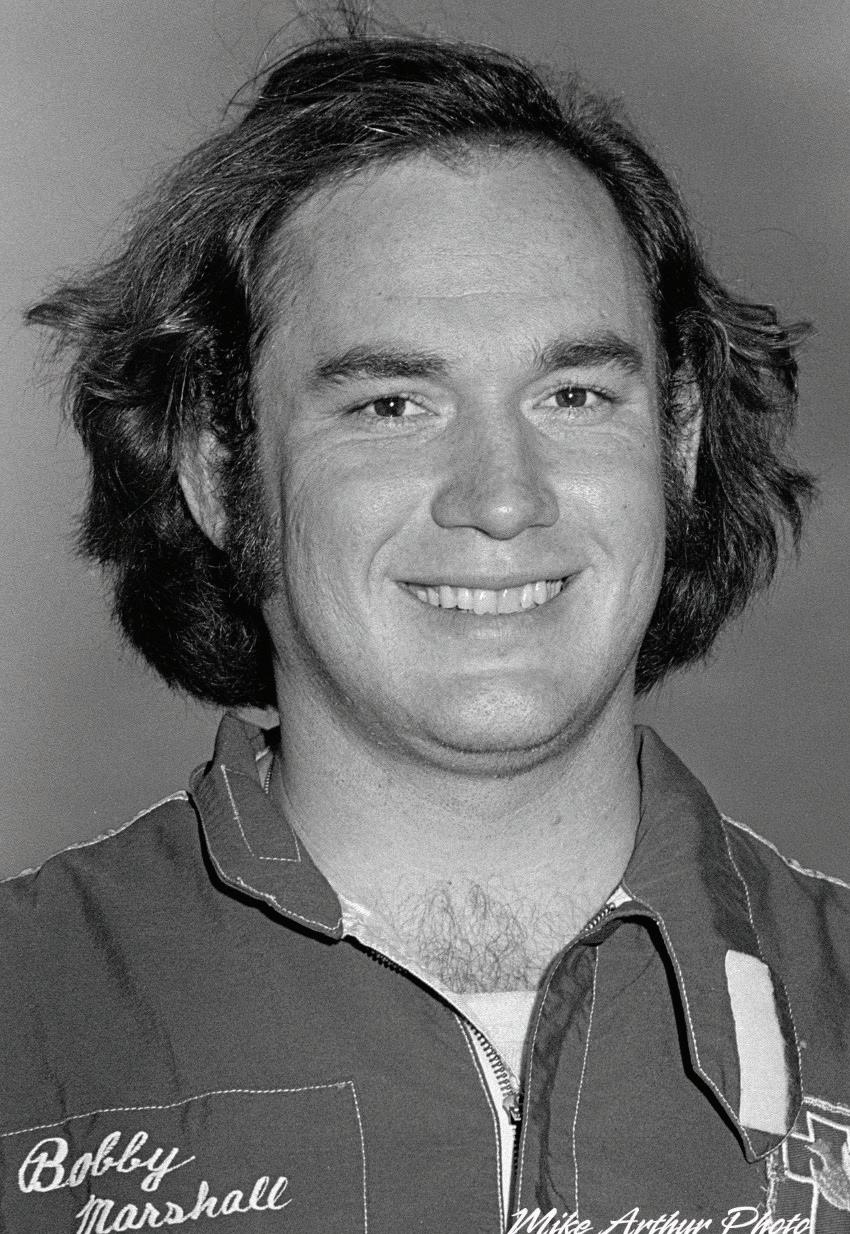
daughter, Allison. Marshall’s racing legacy lives on as his she now has a management and marketing service working with numerous NASCAR teams and drivers. Her husband Ryan has been the crew chief with NASCAR teams and now serves as the competition director for SRX.
He never turned his back on racing. From his Mooresville, North Carolina, home, where he relocated to in 2015 to be close to grandchildren, Kendall and Colt, he toiled at the computer sending out volumes of photos and stories of open wheel racing and his faith. In a unique combination of his passions, he was proud to tell about being baptized in Montana’s Bull River by Jan Opperman.
Thought he raced just 13 years, Marshall tallied 108 wins in 19 different states before settling into a more quiet life.

RemShift
DIRT EMPIRE MAGAZINE • ISSUE 15 - APRIL/MAY - 2023 39
Photo: Mike Arthur
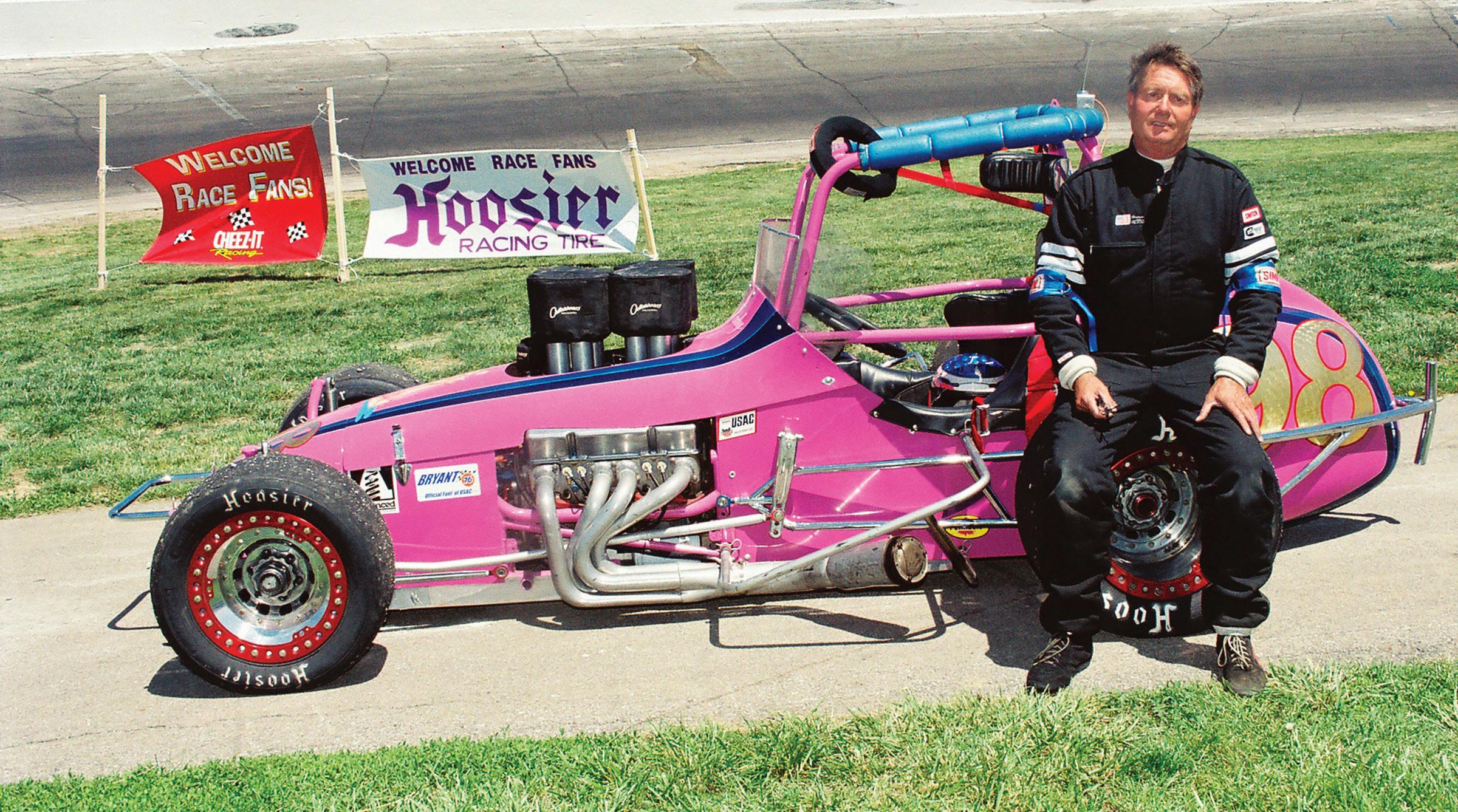
KEN HAMILTON - DRIVER
KEN HAMILTON was born on May 23, 1941, in Concord, California, as the oldest of two children to parents Lenard and Maxine Hamilton. Hamilton is the father of longtime IndyCar Series competitor Davey Hamilton and daughter Debbie Hamilton Allen. He is also the grandfather of King of the Wing and Southern Sprint Car Shootout Series champion Davey Hamilton Jr.
Hamilton became interested in auto racing at the suggestion of a farm hand who worked for his father. “When I was five years old, while living in California, there was a racetrack called Pacheco Speedway about three miles from where we lived,” explained Hamilton. “My dad’s hired hand took me to the races over there. Back then they were just running midgets. The first time I saw them, I told myself if I ever had the opportunity, I sure would like to race cars when I got older. Of course, my dad hated cars. If they didn’t have four legs like a horse or cow, he didn’t want anything to do with it. My father raised quarter horses and cattle”.
The family eventually moved to Palmer, Idaho, and Ken started attending races regularly at the nearby Meridian Speedway.
“I traded a 650 Triumph motorcycle for my first race car. A guy from Nampa,
Photos & Text
Idaho, had bought the car and took it out one time. He spun it out and it had scared him. I heard he had parked it. I went over and talked to him and said I’d be interested in trading him my motorcycle for it. He was glad to take the trade.”
Hamilton made his racing debut at Meridian Speedway in 1964 at the age of 23 in the B-Class. The B-Class was an entry level open wheel class utilizing inline 6-cylinder engines in modifieds. Hamilton took to the cars instantly and garnered Rookie of the Year” honors that first season.
By late 1966, Hamilton caught the attention of Ontario, Oregon’s Art Sugia. Hamilton had already driven for a couple of other guys and had traveled around the Pacific Northwest competing in select CAMRA events. Sugia offered Hamilton a ride in his car for the 1967 racing season. The duo began winning races immediately including the Meridian Speedway A-Class title in 1967.
Sugia purchased a brand-new Grant King sprint car prior to the 1968 racing season. The car was painted pink, as was customary for all Sugia’s cars, and affectionately dubbed “The Pink Lady”. The longer 90-inch wheelbase car was fast right out of the box. The car was 4-inches longer than any sprint car
By David Sink
Hamilton had competed in prior to the new Grant King car. Hamilton won the first night out with the new car and won a whopping 17 non-wing sprint car feature events in 1968.
The car became a regular participant of Pacific Northwest sprint car activity for over 50 years with Hamilton behind the wheel much of its career. Hamilton purchased the car from Sugia in 1978.
Hamilton never chased any series for points due to his job commitments as a newspaper press operator despite running several CAMRA and NSRA events over the years. But he did secure a championship points accumulation between Meridian Speedway and the Ontario Fairgrounds Speedway. He also claimed a sprint car track championship at the Firebird Super Oval in Emmett, Idaho, before the track was shuttered after the 1983 season.
Despite limited traveling during Hamilton’s career, he won many of the most prestigious pavement sprint car races in the Northwest. He captured the 1971 Copper Cup Classic at the Salt Lake City Fairgrounds and again a few years later at Bonneville Raceway.
Hamilton made his Copper World Classic debut in 1978. At the time, the Copper World Classic was the richest and
40 DIRT EMPIRE MAGAZINE • ISSUE 15 - APRIL/MAY - 2023
most prestigious pavement sprint car race on the entire west coast. The “Pink Lady” felt right at home on the one-mile Phoenix oval. In 10 Copper World Classic starts, Hamilton finished outside of the top 10 only three times. He was victorious in 1980 and 1984. Hamilton finished second in 1987.
In 1976, he was invited to compete in non-winged sprint car events in South Africa along with three other Americans. He won at every track he competed and was awarded real silver trophies after each of his wins.
Closer to home, he dominated the competition at Meridian Speedway. He was the winged sprint car champion at the track in 1984, 1989, 1995, 200106, and 2008. A chance to try his hand at promotion saw Hamilton promote Meridian Speedway from 1989-2008. During his years as the speedway promoter, he debuted an entry level, cost effective, non-winged sprint car class using 602 crate engines that still exists today.
From 1981-82, Hamilton attempted Indy Car racing on his own dime. After two failed attempts to crack the Indy 500 starting lineup due to an abundance of


entrants, Hamilton bowed out of Indy Car competition due to the cost to compete. He also competed in a significant amount of super-modified events during his career. He was crowned the 1986 United States Auto Club (USAC) Supermodified champion.
Hamilton lists his Copper World Classic wins and the development of his son Davey’s career as his proudest accomplishments. Hamilton was previously inducted into the Western Idaho Racing Association Hall of Fame in 1987.
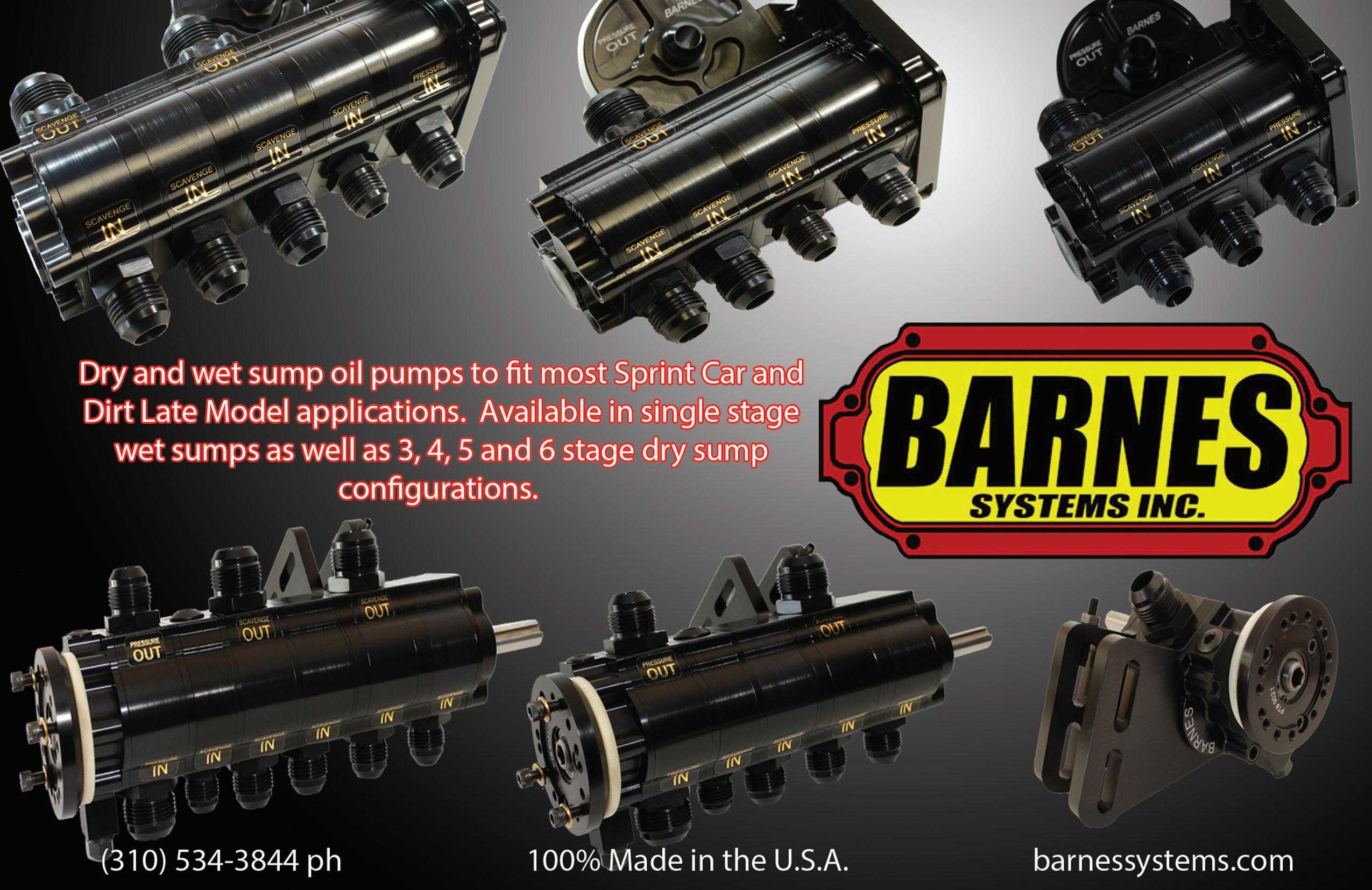
Barnes Systems Inc.
DIRT EMPIRE MAGAZINE • ISSUE 15 - APRIL/MAY - 2023 41
CORY KRUSEMAN - DRIVER
By Richie Murray
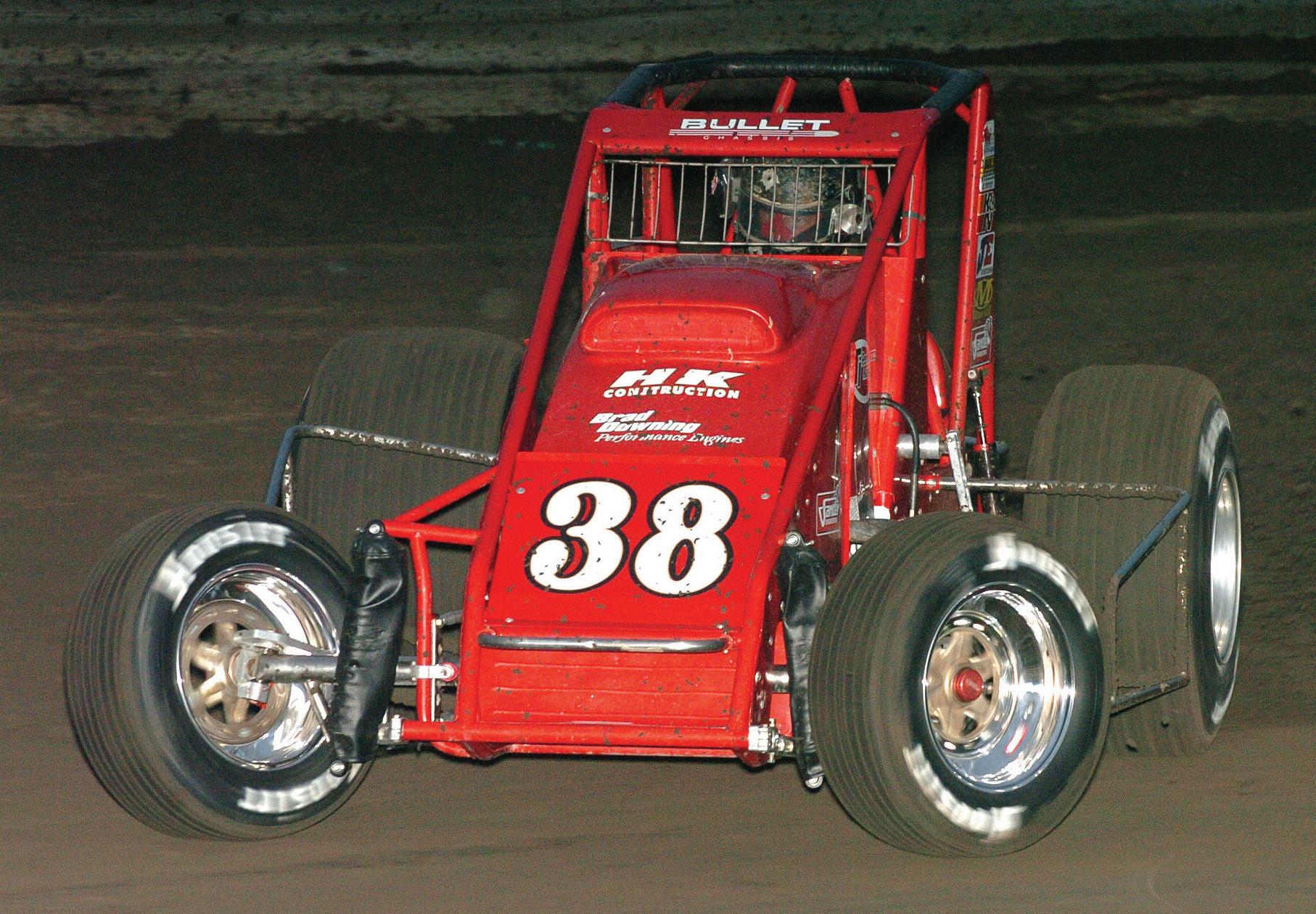
CORY KRUSEMAN’S early racing career could be defined by his undaunted desire to overcome significant personal setbacks. Kruseman was of his own mold, and in time, he became one of his era’s greatest behind the wheel.
Born on September 20, 1970, Kruseman received his racing initiation from his father, Ron, who was a regular on the National Midget Racing Association Three-Quarter (TQ) circuit and an occasional competitor with the California Racing Association (CRA) Sprint Cars.
However, tragedy struck in 1984 at El Centro, California’s Imperial Valley Speedway when Ron was fatally injured during a hot lap session. The Kruseman family promptly retreated from the sport, but the pull proved too strong, and months later, 13-year-old Cory soldiered on, participating in karts for two years at his hometown Ventura Raceway.
By 1989, Cory followed his father’s tracks by delving into TQs, garnering 11 victories between 1990-93. He dabbled in higher horsepower machinery in 1992, namely with the USAC Western States Midgets. Along the way, Cory formed a bond with fellow TQ racer Harlan Willis. When Willis jumped to the CRA in 1993, it was Cory who served as Willis’ crewman. Later that season, Willis fell ill and tabbed Cory as his replacement. The following
year, the tables had turned, and the oneoff shot turned into a full-time deal with Cory as the driver, and an iconic pairing was born.
The knocks were hard initially for the team with the newly formed Sprint Car Racing Association (SCRA) in 1994. One lap into the season opener at Manzanita Speedway, he met the turn three wall, which resulted in a broken shoulder. Six races later, and reloaded with a new chassis, he won his first feature in El Centro, the very same place in which his father lost his life a decade earlier. Cory ultimately finished second in the Rookie points behind J.J. Yeley.
An aspect of the deal was Cory’s
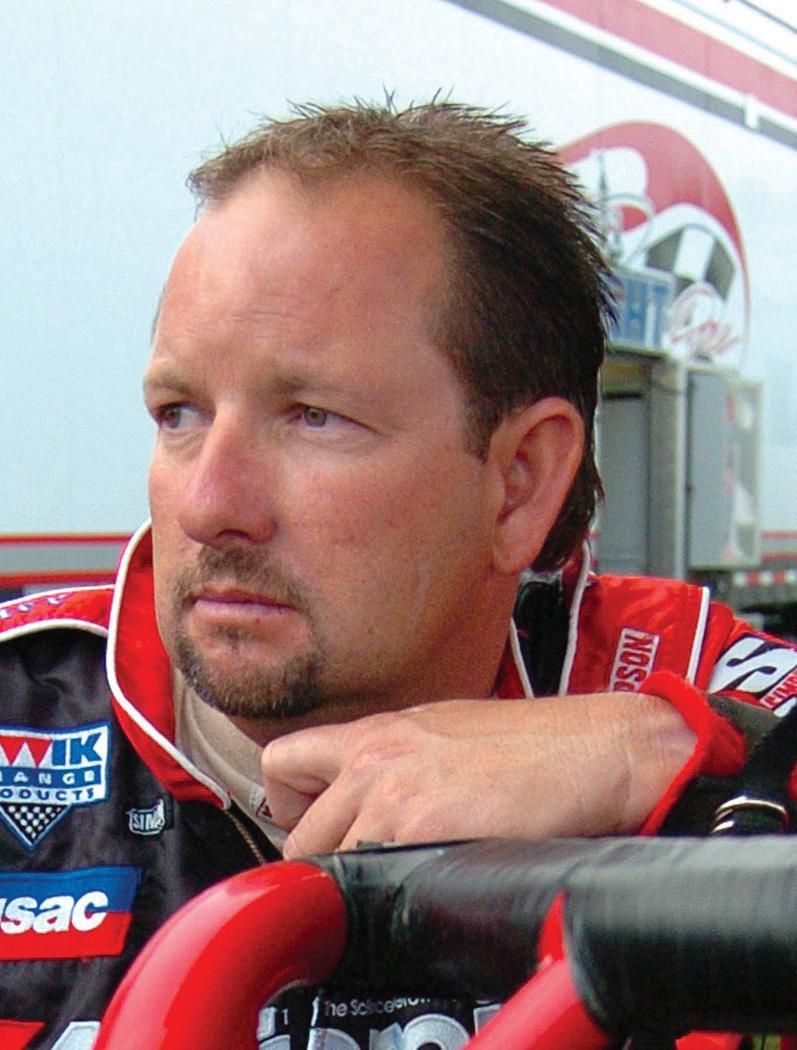
agreement to not accept any prize money, opting to put everything he earned back into the team. The dividends paid off in 1995 with six SCRA wins, including all four at Santa Maria.
A seminal moment in Cory’s career came in late 1995 when he took on a USAC Western States Midgets show at the Cal Expo State Fairgrounds one-mile dirt oval with Andy Bondio’s midget. At the start of the semi-feature, Cory beared the brunt of 15 devastating flips down the main straightaway. The aftermath left Cory with a concussion, a shattered forearm that required 200 staples and stitches as well as broken blood vessels in his eyes that left him temporarily blinded.
After four days in intensive care and five months of rehabilitation, Cory returned with a vengeance. Cory won in all 11 full seasons of SCRA competition between 1994-2004, winning 64 features, 57 of them with Willis, as well as the inaugural Non-Wing World Championship in 1999.
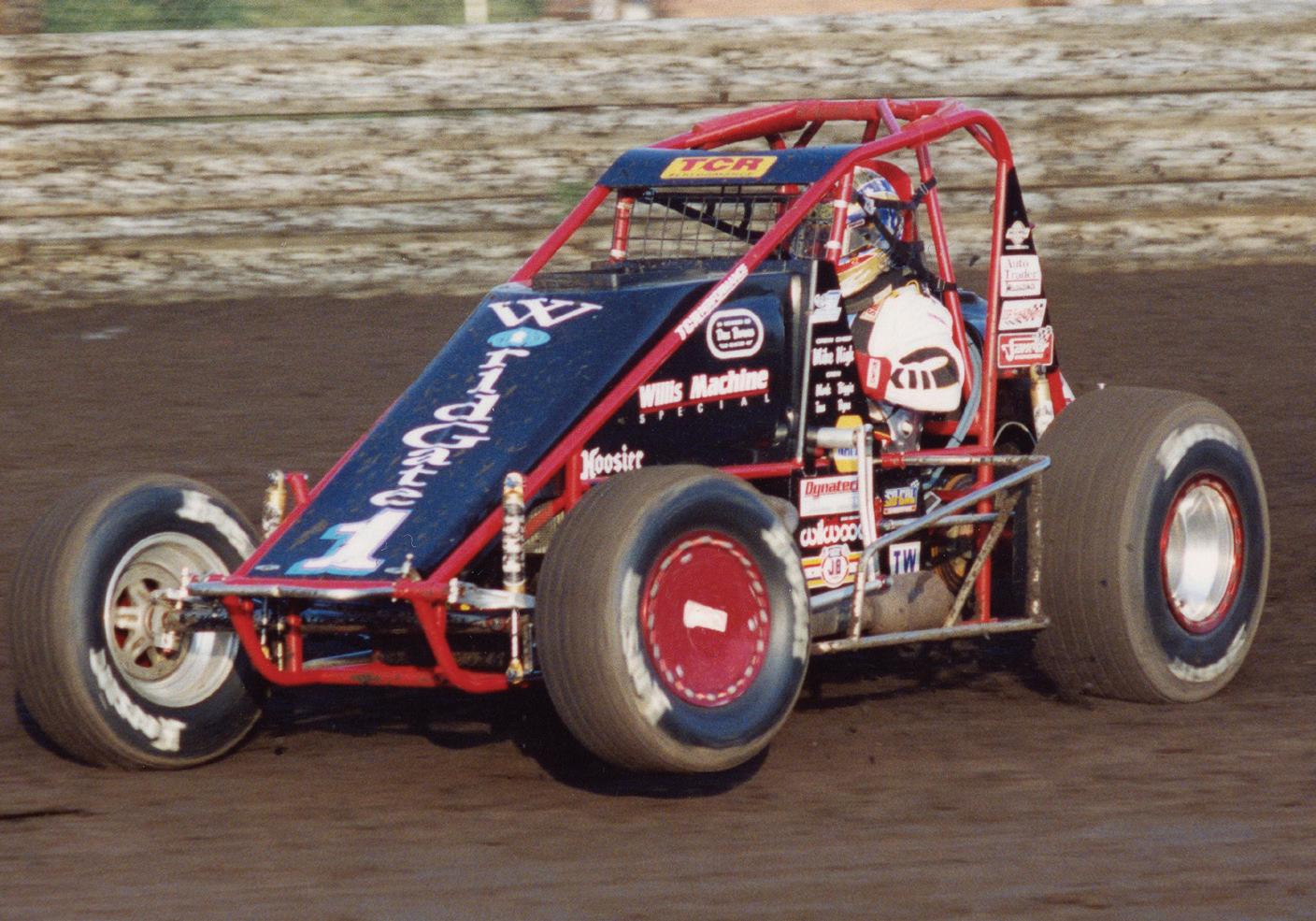 Kruseman and
Photo: Paul Arch
Photo: Paul Arch
Photo: Paul Arch
Kruseman during his 2006 SCRA championship season with Glenn Crossno.
Kruseman and
Photo: Paul Arch
Photo: Paul Arch
Photo: Paul Arch
Kruseman during his 2006 SCRA championship season with Glenn Crossno.
42 DIRT EMPIRE MAGAZINE • ISSUE 15 - APRIL/MAY - 2023
The Kruser at Oskaloosa, Iowa, in 2002 - his final year in the Harlan Willis 1.
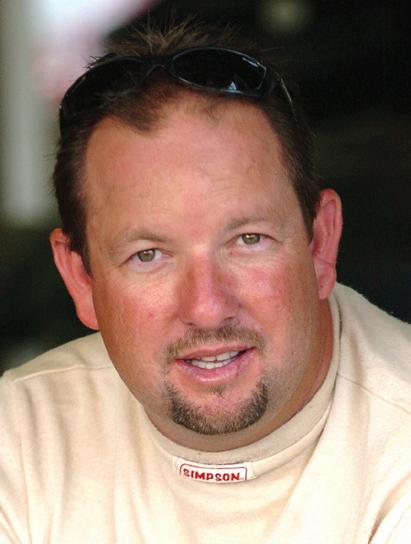
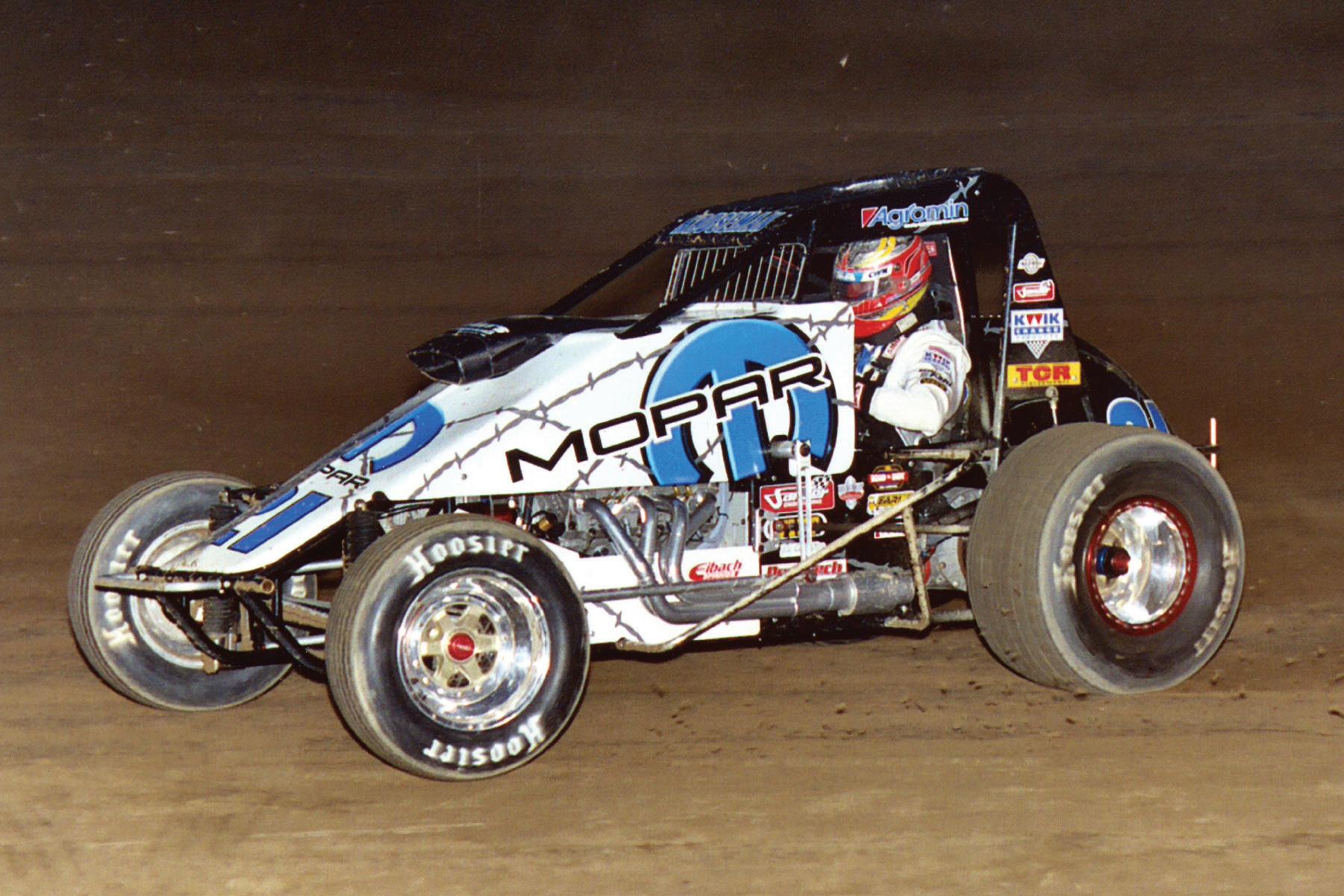
Willis’ highwater mark came during their 2002 championship season in which they ruled the roost with 15 victories.
Ultimately, that was the curtain call for Kruseman and Willis. For 2003, Kruseman received an offer to go fulltime USAC National Sprint Car racing with owner Tony Stewart. By then, Kruseman had thoroughly demonstrated his prowess nationwide, winning the first of his 15 national features during the 1999 Bloomington round of Indiana Sprint Week for car owner Dave Ellis. In 2002, Kruseman reeled off four wins in the seven-race Hoosier state series for owner Keith Kunz.
Following a frustratingly winless USAC National season with TSR in 2003, Kruseman hit his stride in 2004, finishing third in points with five feature triumphs, including the Tony Hulman Classic at the Terre Haute Action Track as well as his second straight Oval Nationals worth $30,000 following a last lap pass of Josh Ford at California’s Perris Auto Speedway.
Parting ways with TSR, Kruseman returned to the west coast for 2005, but still made his presence felt nationally. That summer, he won three in a sevenday span to score a second Indiana Sprint Week crown with Keith Kunz. The ensuing 2006 season saw Kruseman return to championship form with the USAC CRA Sprint Cars as he won four en route to the title for car owner Glenn Crossno. In all,

Kruseman was the victor of 35 USAC CRA main events between 2004-13.
Kruseman’s exploits expand to the midgets as well, collecting Chili Bowl glory in both 2000 and 2004, and even adding a 2011 USAC Western States Midget driving title to his accolades. Kruseman maintained a presence on the west coast scene, introducing his own sprint car driving school in 2000 while owning and operating sprint and midget teams.
Kruseman hung up the helmet in 2016,
giving one last go in the familiar black 45 sprinter during the Turkey Night Grand Prix at Ventura. Fitting, as it was where it all began more than three decades earlier when he was just a teenager. It was where the legend of Cory Kruseman was born and where he capped off a career that made all those who witnessed him race satisfied with delight, and a career that most definitely would’ve made dad proud to the nth degree.

E3 Lithium Batteries
Photos: Paul Arch
DIRT EMPIRE MAGAZINE • ISSUE 15 - APRIL/MAY - 2023 43
Kruseman during his first year in the Tony Stewart Racing USAC sprint car in action at Attica Raceway Park in 2003.
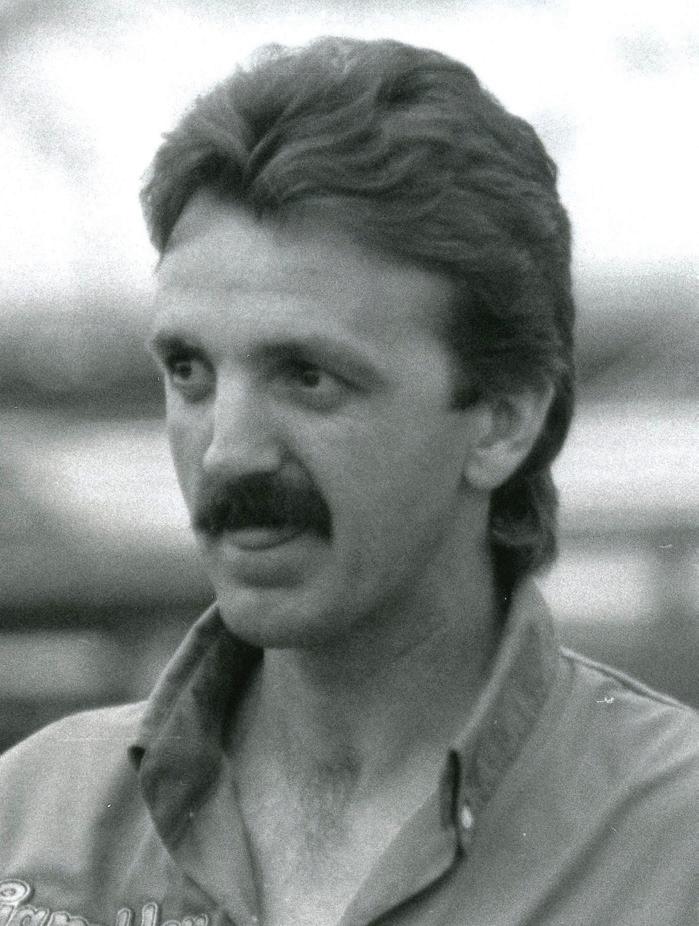
PENNSYLVANIA
NATIVE Tommy Sanders worked for some of sprint car racing’s greatest drivers during his time as a lead mechanic and car builder and he is joining a lot of those same drivers in the National Sprint Car Hall of Fame in Knoxville, Iowa.
Sanders was originally from Hanover, Pennsylvania, and started out as a mechanic for the Ken Appler Racing Team, which consisted of two cars - one driven by Gene Goodling and the other by Sanders’ uncle Willie Musselman.
During his time working on the Appler cars, the operation won the Lincoln Speedway track championship with Goodling in 1962 and 1963.
Goodling also captured championships at Susquehanna Speedway in 1962 and 1964. Goodling gained a single championship at Williams Grove Speedway in 1964.
Sanders’ career really took off when he teamed up with Bobby Allen in 1968 and they enjoyed a great run together through 1976 and won an impressive 65 races together. They captured track championships at Lincoln, Susquehanna, and Reading. Sanders worked with Allen to build his first sprint car in 1968. They built winning sprint cars for noted drivers such as Van May, Rick Ferkel, Smokey Snellbaker, Jimmy Edwards, Kenny Slaybaugh, Rod Albright and many more. Working for car owner Harry Fletcher and driver Johnny Grum, the team won nine consecutive features in 1975 and captured a Port Royal Speedway track championship.
After leaving Allen Racing in 1976, Sanders was the mechanic on top
TOMMY SANDERS - MECHANIC
By Todd Heintzelman
contending sprint cars and future Hall of Fame drivers. Driving the Bobby Davis Electric machine, with Sanders turning the wrenches, Sammy Swindell won the 1976-77 Riverside Speedway point titles. Swindell, in 1977, won 14 of 16 races and finished second in the remaining two races. In 1980, driving the Nance Speed Equipment car, Swindell had 16 victories. The following year Swindell drove the Nance car to over 10 wins.
Sanders and Doug Wolfgang were together in 1978 with the famed Speedway Motors Sprint Car. The duo won 18 of 33 races. They finished second to Jimmy Boyd in the first-ever World of Outlaws race. Wolfgang won one of the Devils Bowl preliminary World of Outlaws races. Later, Sanders teamed up with Brad Doty and the Bowers Coal car and they had two All Star Circuit of Champions wins. Doty gained one ASCoC victory in 1982. Doty and Sanders had five Sharon Speedway victories during their two-year span.
Tommy Sanders joined owner Al Hamilton and driver Keith Kauffman for the 1983 and 1984 seasons. Kauffman
won nine features in 1983 with Sanderstuned cars. During 1984, Kauffman had 22 victories in a span from March through June 1st.
Tommy Sanders has been the lead mechanic on sprint cars that have won at 45 tracks. His major victories have come in the Williams Grove National Open, the Lincoln Speedway State Championship four times, the Western World at Manzanita, the East Bay Nationals, Dirt Cup, Eldora 360 Nationals, Florida State Fair and the Spring and Summer Nationals at Devils Bowl. He also wrenched a second place finish with Jan Opperman in the 1974 Knoxville Nationals after leading 29 laps
Sanders designed and built the 1997 World of Outlaws championship car driven by Sammy Swindell. Sanders was named the 1997 Builder/Manufacturer of the Year. Sanders worked as a Sales Manager for Gambler Competition in Hendersonville, Tennessee. He then advanced to VicePresident until retiring from racing in 2001. In 2002, Sanders began working with the Wirtgen Group and remained there until retiring in 2021.

Brinn Inc. 44 DIRT EMPIRE MAGAZINE • ISSUE 15 - APRIL/MAY - 2023
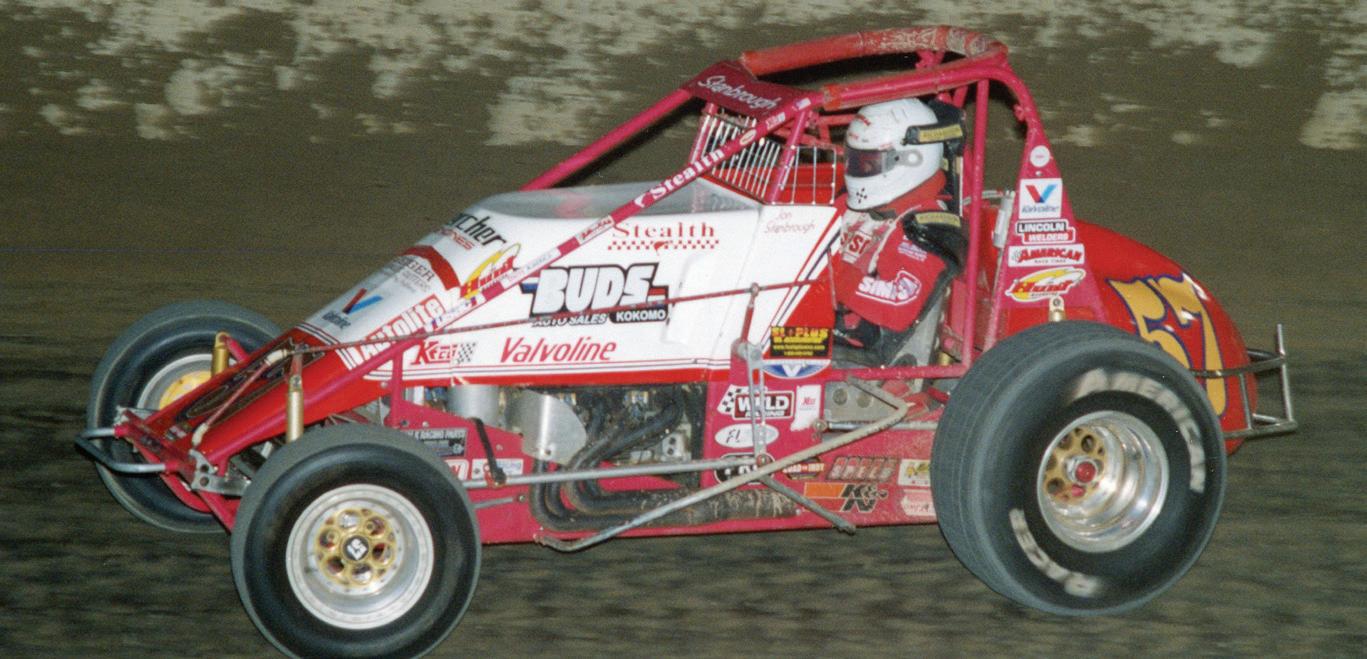
PAUL HAZEN - OWNER
AS WITH ALL FORMS of racing, if you know a region or a series, there are certain images, moments, and individuals that immediately paint a mental image of the sport. When it comes to Indiana sprint cars, it’s Paul Hazen, and it’s the iconic number 57. An image that has been consistent with racing there for nearly sixty five years, and an image that will remain consistent for likely more than another 65. Paul Hazen has defined and redefined the facets of not only competing amongst USAC’s finest, but the fairy tale of the underdog rising to stand amongst the defining members of Indiana’s sprint car history.
While Paul Hazen at 85 continues to push the limits across Indiana’s finest dirt ovals and test USAC’s newest generations, his extensive five decades surviving and thriving in an environment tough enough to turn dirt to diamonds covers pages upon pages of racing’s most coveted history books.
A native of Indiana, Paul began his career wheeling a 1937 Ford stock car at Warsaw Speedway [Indiana] in 1957. It would be quite some time before Paul would first print his name into history, earning Warsaw Speedway’s modified track championship in 1965. The ink barely dry and pages barely turned, he suffered a back injury and, paired with more responsibilities from his employer, a new plan was formed to put Jim Elliott behind the wheel. They dominated all competition at Warsaw Speedway for five consecutive years, amassing countless feature wins and three track championships from 1970-1972. However, a motorcycle accident in 1973 claimed Jim Elliott’s life so Louie Mann
By Ashley Zimmerman
took over and added two more chapters of Warsaw track championships to the book of Hazen in 1973 and 1979.
In 1981, Hazen handed over the driver’s seat to someone new, yet familiar - Jim Elliott’s son Tony. It was a decision that picked up where Jim had left of - victorious. The duo stayed together through much of the early 1980s and revisited success multiple times throughout the 1990s. They had over 75 wins together and nine track championships (five at Kokomo, two at Gas City, and two at Warsaw Speedway). Elliott earned Hazen his first USAC National Sprint Car features in 1987, first at Santa Fe Speedway, and just one month later at famed Eldora Speedway at the 4-Crown.
Hazen wrenched for Larry Contos in 1990 and sat out 1991 but, up his return in 1992, he paired with Kevin Thomas and got another USAC win, this time at Lawrenceburg. Throughout the mid1990s, Hazen filled his seat with some of the best in Indiana racing history, including the late USAC champion Robbie Stanley, before taking a hiatus after 1997.
Paul returned with Jay Drake but it was the Jon Stanbrough chapters that followed for four and a half years that put Hazen into new successful territory with 37 wins, 19 of which came in just the summer of 2003.
As the book of Paul Hazen begins to transition into its epilogue after 65 seasons, the chapters have been filled with the most dreamed about stories in race car ownership. Paul Hazen has amassed 16 track championships, one as recent as 2010 with Thomas Meseraull at Gas City, and 10 USAC national sprint

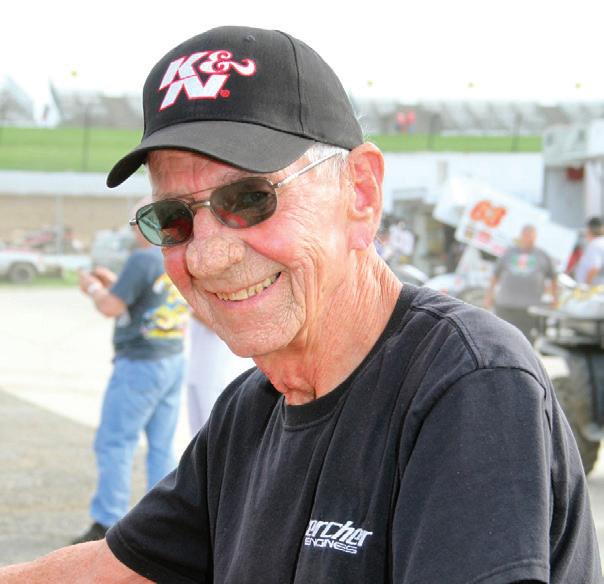
car feature wins, including his most recent in 2013 with Chad Boespflug. With a confirmed 147 wins, Hazen estimates a minimum of 200 feature victories, including moments such as scoring second in the 1978 Little 500. The list of drivers whom have bolted seats into the Hazen 57 is not only extensive, but a who’s-who of racing, including the likes of Ted Hines, Tracey Hines, Jason Robbins, Casey Shuman, Kevin Briscoe, Josh Spencer, Bryan Stanfill, Critter Malone, Shane Hollingsworth, Travis Welpott, Scotty Weir, Colten Cottle, Shane Cottle, Tim Creech, Tye Mihocko, Tyler Hewitt, AJ Anderson, Bryan Clauson, Billy Puterbaugh, Matt Hardin, Marc Arnold, Jon Scisco, Clinton Boyles, Max Adams, Justin Grant, Isaac Chapple, Billy Jo Havens and many, many more!
While the book of Paul Hazen will continue to fill chapters yet numbered, filled with more mechanical knowledge than most can fathom, stories as long as the miles it took hauling, the epilogue ends so perfectly with his induction in the in the National Sprint Car Hall of Fame.
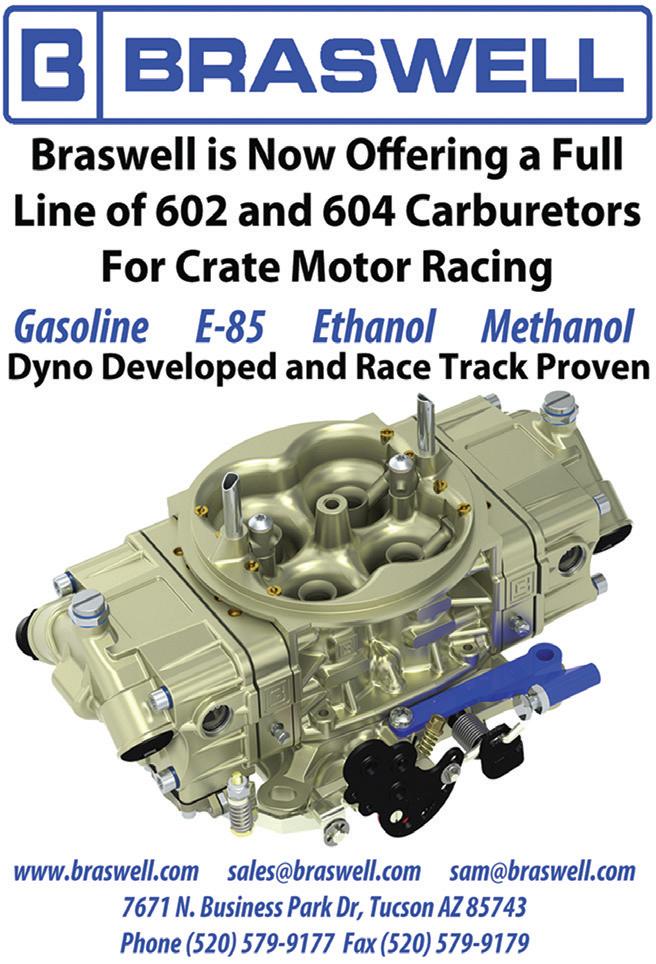
Braswell
Photo: Paul Arch
DIRT EMPIRE MAGAZINE • ISSUE 15 - APRIL/MAY - 2023 45
Photo: John Mahoney
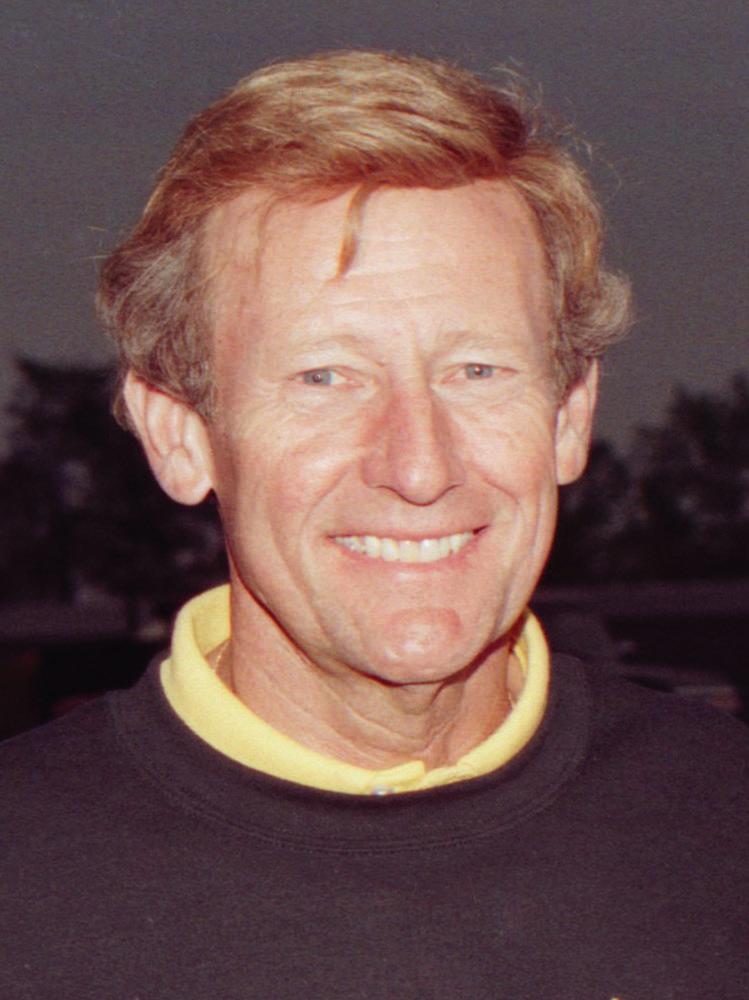
BORN ON OCTOBER 5, 1937, to John and Harriet Lowrey Vance, John C. Vance II followed in the footsteps of a man who was successful in every life activity –including racing. As a car owner, the elder Vance provided rides for Hall of Fame talents such as Bob Carey, Wilbur Shaw, Mauri Rose, and Travis “Spider” Webb. He was active with the Central States Racing Association and the American Automobile Association often in leadership roles. His deep involvement in the sport resulted in enshrinement in the National Sprint Car Hall of Fame in 1992.
Settled comfortably in Dayton, Ohio, John purchased the Standard Venetian Blind Company and promptly renamed the firm Aristocrat Products. He drew a firm line between his vocation and avocation – and it was a lesson he made sure to pass on to his eager son. Johnny was equally bitten by the racing bug, and as one could imagine, he too would daydream of feeling the wind in his face and standing before an appreciative crowd in victory lane. It was not to be. In the halcyon days of Spider Webb, Johnny would sometimes get the rare privilege of warming up his dad’s race car. As exciting as this was, as the younger Vance noted, the opportunity was extended with a stern caveat, “Every time I would be out there and squirt it a little bit, my dad would say ‘you might as well take it easy, because you’re not going to be a race driver.’”
Johnny was resigned to his fate but staying totally out of racing was never an option. However, when family friend Russ Clendenen, a noted AAA and later USAC staffer, suggested to Vance Sr. that his son might make a good official, the lad thought everyone had lost their mind. A little coaxing was all it took and, by the early 1960s, he was a USAC


JOHNNY VANCE - OWNER
By Patrick Sullivan
technical chairman and later a steward at the Indianapolis Motor Speedway. Like everything he did in life, from running a business or race team, playing tennis, or caring for his beloved dogs, he took his role seriously. He admits that he dreamed of one day becoming the Chief Steward at IMS but a series of events led to a dramatic change in direction.
Vance already had plenty on his plate. By 1963, he was at the helm of Aristocrat Products and was settled in his role as an official. Then something dramatic happened. In 1980, hot shoe Rich Vogler had captured the USAC sprint car championship for owner Don Siebert. Sadly, just before the 1981 season was launched, Siebert suffered a fatal heart attack, leaving the defending king without a ride. Clendenen suggested to Vance that he take over the squad. Perhaps there was a desire to continue his father’s racing legacy. Whatever the motivation soon thereafter, Vance was the owner of a sprint car and Silver Crown operation. Vogler scored Vance’s first Silver Crown win at Knoxville in June, and as a sprint car owner at Eldora in July.
From the 1981 season on, Johnny Vance was a steady presence on the USAC scene for over three decades. The drivers who sat in a Vance prepared car, are truly a who’s who of the eras short track stars, and includes Jim Mahoney, Gene Lee Gibson, Joe Saldana, Tracy Hines, Steve Butler, Dave Steele, Steve Kinser, Jack Hewitt, Kenny Irwin Jr., Cole Whitt, Tony Elliott, Jimmy McCune, Brian
Tyler, Jac Haudenschild, Tyler Walker, Ryan Newman, and Damion Gardner. Sprint car titles came in 1990 with Steve Butler, and in 1998 Vance and Jeff Walker teamed up to help Tony Elliott win his first of two USAC titles. All told, Vanceowned cars won 44 USAC sprint car races and eight in the Silver Crown series. He is already a member of the USAC Hall of Fame.
One of Vance’s enduring contributions occurred while he served as a USAC official. He felt USAC needed to have a premier event at Eldora Speedway. Working with Earl Baltes, the 4-Crown Nationals was born. In a great irony, in the inaugural event Vance was on the precipice of a Silver Crown entrant’s championship but lacked a driver. He turned to a young and promising second generation hand from the outlaw ranks named Steve Kinser. Steve won the sprint car portion of the event and then topped the field in big ground pounders securing the title for his owner. Today, those who compete at the 4-Crown Nationals are fighting to add their name to the Johnny Vance Trophy.
Johnny Vance took pride in his racing operations and his business. It showed. He was guided by a quest for excellence, and in that quest, he succeeded far more than he failed. He was the epitome of class. At his passing on June 22, 2017, Vance left his wife of 30 years and four children.
Photo: John Mahoney
46 DIRT EMPIRE MAGAZINE • ISSUE 15 - APRIL/MAY - 2023
Brian Tyler driving for Vance in 2002.

JOHNNY CAPELS
- MECHANIC AND ADMINISTRATOR
FROM BUILDER TO DRIVER to chief mechanic to team manager to car owner to series president, Johnny Capels’ highly decorated career took him to all fields of the auto racing landscape.
Capels was born on May 20, 1936, in Albuquerque, New Mexico, to John and Jane (Anderson) Capels. By the time Capels turned 15, he began his lifelong involvement with automobiles. After school, he worked at a local auto repair shop, which just so happened to be owned by New Mexico’s modified racing champion.
Armed with an innate desire to learn and succeed, young Johnny was soon constructing and piloting his own modifieds in his home state. That journey led him to becoming a driving champion with the New Mexico Motor Racing Association, and later, dipping his toes into the administrative side of the sport as series president.
By 1968, Capels had migrated to Indianapolis at the urging of fellow New Mexico racers, the Unsers, to assist in their burgeoning USAC National Championship racing programs while simultaneously embarking on a driving career of his own in the USAC National Sprint Car division.
Capels, as a USAC Rookie in 1968, won his only National Sprint Car feature at New York’s Erie County Fairgrounds in a car owned by Al Unser. Also competing at vaunted venues such as the Terre Haute
By Richie Murray
Action Track, Reading Fairgrounds and Eldora Speedway that year, Capels’ victory arrived in just his second career USAC start. Yet, as it turned out, it was a role outside the limelight of the driver’s seat that provided him his greatest success in the sport.
As a mechanic, he was instrumental in capturing back-to-back Indy 500s with Al Unser and the famed Johnny Lightning Special for the Vel’s Parnelli Jones USAC National Championship team in 1970-71, working alongside aces George Bignotti and Jimmy Dilamarter.
In fact, it was Bignotti who Capels last drove for in USAC Sprint Car competition during 1970. Following a ninth place finish at Williams Grove Speedway in October of 1970, Capels never appeared in the box score as a driver again. But don’t you dare call it a retirement. Capels once quipped, “I never retired as a driver; I just didn’t come out and strap on the gear in 1971.” Instead, Capels shifted gears in his career and never looked back. It was a move that paid off big time.
With a new focus, Capels reached uncharted heights, following up his Indy triumphs by crew chiefing back-to-back USAC National championships for driver Joe Leonard during 1971-72, winning four races over the two-year period at Ontario, Michigan, Pocono and Milwaukee, including top five finishes in all eight of their starts in 1972.
Capels’ mechanical wizardry on

the dirt was just as superb as it was on the pavement. He earned USAC Championship Dirt Car titles as a mechanic on the famed Viceroy cars for Al Unser in 1973 and Mario Andretti in 1974, and as a car owner and constructor for Pancho Carter in 1978, which made Carter USAC’s first Triple Crown champion.
In 1975, Capels partnered with car owner Alex Morales as the team’s chief mechanic and team manager. There, Capels directed marquee victories in the inaugural Michigan 500 in 1981 for driver Pancho Carter and once again in the 1986 event with Johnny Rutherford in the seat, the final victories for both legendary wheelman. Capels eventually purchased the team following the death of Morales in 1988 and introduced the Alfa Romeo engine to Indy Car racing in 1989.
Christened “The Golden Greek,” a nickname given to him by National Speed Sport News’ Bill Hill, Capels was named the president and COO of Championship Auto Racing Teams (CART) in 1989.
Capels ventured to USAC in 1992 as Director of Competition, and later, Senior Vice President before becoming USAC President and COO in 1997, directing the ship in a transition period following USAC’s split from the Indy Racing League. In the coming years, Capels led a renaissance period for the venerable club as its young talent became the pipeline to both Indy Car and NASCAR.
Capels retired from his term as USAC president and COO in 2001 and was formally awarded with the Sagamore of the Wabash by Indiana Governor Frank O’Bannon.
In 1999, Capels formed the USAC International Road Racing Officials Team to officiate the Formula One World Championship Series under USAC from 2000-07 and for Moto GP from 2008-10. Capels further served as the Director of the Automobile Competition Committee for the United States (ACCUS) and was USAC’s Chairman of the Board of Directors from 2002-10.
Capels died on June 9, 2022, at age 86. That same year, USAC named its National Chief Mechanic of the Year in honor of Capels with the first recipient of the “Golden Greek Award” being Keith Kunz/Curb-Agajanian Motorsports’ Jarrett Martin.
DIRT EMPIRE MAGAZINE • ISSUE 15 - APRIL/MAY - 2023 47
Photo: John Mahoney

ALAN KREITZER HAS been a fixture in the sprint car pit areas of Central Pennsylvania dirt tracks for a very long time. From racer to track owner to track promoter and everything in between, Kreitzer has seen and done it all when it comes to dirt track racing in Central Pennsylvania.
Whether it was the super sportsman racing at Silver Spring Speedway or the sprint cars at Williams Grove Speedway, Kreitzer has always been a hands-on promoter running the grader, fixing fencing or running the water truck. Kreitzer was always willing to do whatever the job of running and promoting a
ALAN KREITZER
- PROMOTER
By Todd Heintzelman
speedway required and made a life-time commitment to the sport.
Kreitzer was born into racing as his family owned and operated Silver Spring Speedway in Mechanicsburg, Pennsylvania. At a young age, he promoted go kart races at the family raceway and helped put together the weekly program books and year books at his family’s speedway, which is located near Mechanicsburg, Pennsylvania.
He helped his parents, Will and Betty, operate the family’s Silver Spring Speedway featuring winged super sportsman, limited late models and street stocks on the tight 3/8-mile. Albeit very brief, he did race the super sportsman cars as well. The “Springs” had a very successful 50-plus year run. The track closed and the property was sold following the 2005 season.
His involvement stretched well beyond Silver Spring as he’s owned or promoted numerous other sprint car tracks in Central Pennsylvania. His hands-on approach and willingness to listen to the drivers, and others, are two of the reasons he’s one of the most respected men in the pit areas.
In the early 1990s, he owned and promoted Susquehanna Speedway for several years featuring the sprint cars and

super sportsman on Sunday nights.
In 1993, Kreitzer, along with brothers Bob and Don Leiby, purchased Lincoln Speedway in Abbottstown, Pennsylvania. Kreitzer and the Leibys helped bring the speedway back and onto the national sprint car map. He remains involved at Lincoln with a new ownership group in place a few years ago.
Kreitzer’s promoter resume also includes the historic Williams Grove Speedway. He spent several seasons there as a co-promoter. He still helps out at the Grove with track prep when needed. More recently, he spent a few seasons helping promote Selinsgrove Speedway.
While he no longer owns any speedways, he’s very much involved in the Central Pennsylvania sprint car scene. He helps coordinate and promote the annual Pennsylvania Sprint Car Speedweek. The series has grown tremendously and many of the track involved have their biggest crowds of the season during Speedweek.
His involvement in motorsports goes beyond the on track action as well. He is also very much involved with the Eastern Museum of Motor Racing and has been one of the driving forces behind it since its inception in the 1980s.
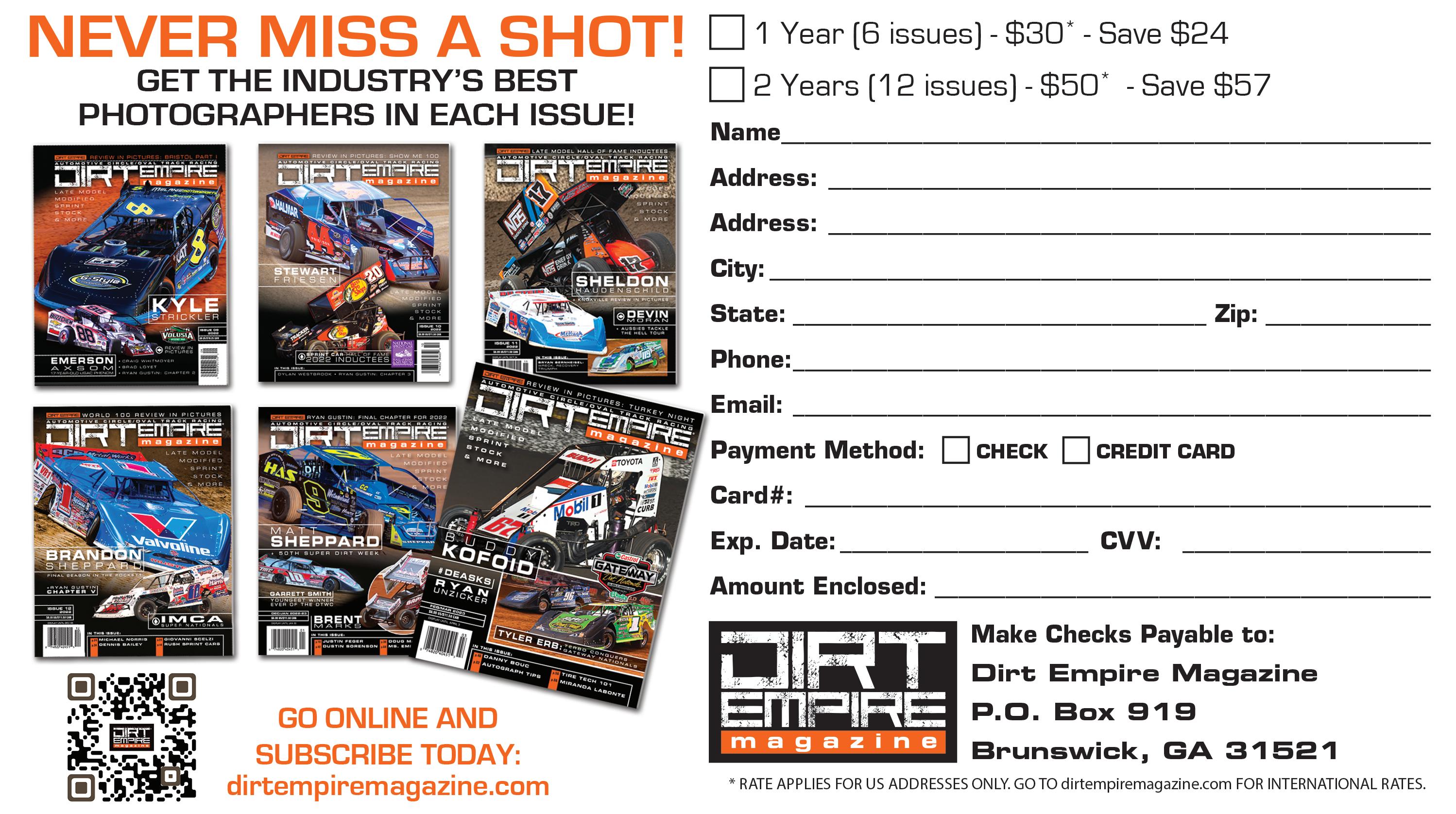
48 DIRT EMPIRE MAGAZINE • ISSUE 15 - APRIL/MAY - 2023
Photo: Paul Arch
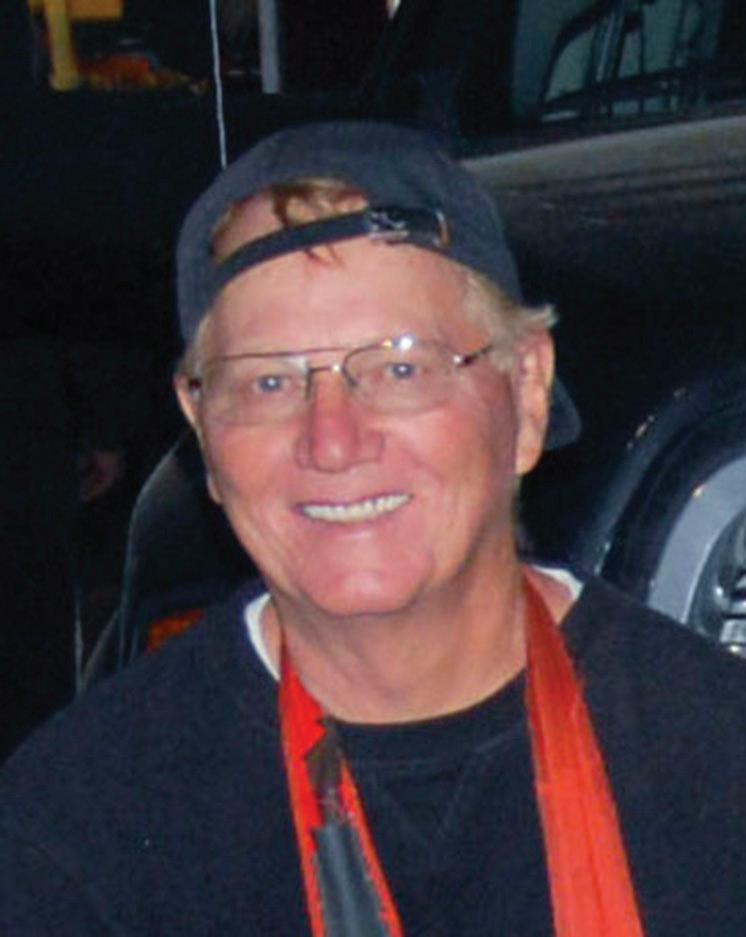
MAX DOLDER was born on November 28, 1950, to parents Bud and Corrine Dolder in Fort Dodge, Iowa. Dolder was one of five children. After moving to Newton, Iowa, at the age of seven, Dolder quickly caught racing fever after a trip to the local Newton Speedway.
“One day my father asked me if I wanted to go to the races,” Dolder remembers. “I was thinking a track meet or something like that. He said ‘no, auto races’. They used to have a quarter-mile dirt track on the north side of Newton that ran on Sunday nights. After that first night, I would beg my dad to take me to the races every Sunday night”.
“I was fascinated how all the cars were different and all cut up. They had doors cut off and cut out. Watching these cars sliding around the corner, coming off turn four, is really what got me. They had two divisions. A late model and an early
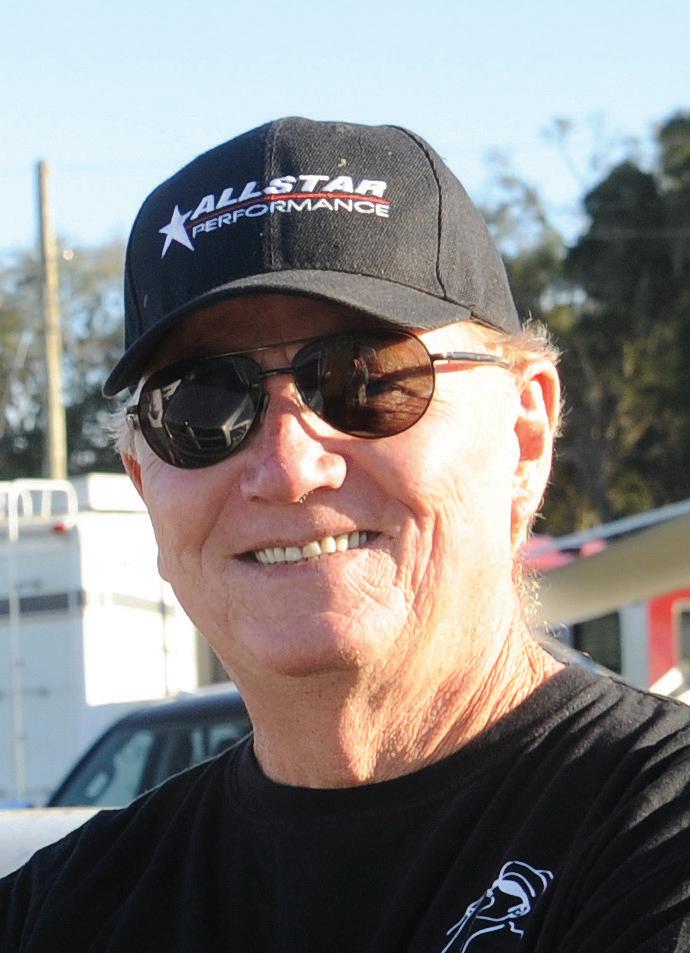
MAX DOLDER
- PHOTOGRAPHER
By David Sink

model. They were stock cars basically.”
A trip to the famed Knoxville Raceway a short time later, to see early versions of sprint cars, really caught Dolder’s attention. “My mother told me one day ‘wait until you see them at Knoxville. They really go down there.’ So, we went and that was really cool. They were all home built modifieds. They all looked different, were built different, and all worked different.” To Dolder, they were much more exciting than the stock cars he had been watching. “I liked the modifieds better, but I liked the smaller track at Newton a lot better than Knoxville.”
Dolder continued to attend races locally until he left Iowa for college in 1969. Dolder headed to Denver to attend Western Technical College, a trade school. In 1973, Dolder headed to Florida with a friend on the spur of the moment. It is the place he has called home ever since. “I started running around with this guy who was from Clearwater but had been living in Iowa for a couple of years. One day he tells me ‘I just can’t take these winters anymore. I’m going home.’ I asked him if I could go with him. I was only 22. I’ve been here ever since.”
Once he got to Tampa, he continued to go to the races at tracks in Florida, particularly Tampa’s Golden Gate Speedway and East Bay Raceway in Gibsonton, just south of Tampa. Dolder even got behind the wheel of an entry level stock car for a couple seasons. “It only lasted a couple years on and off. I didn’t have the money to race. My girlfriend Janice had a camera and I started messing around with it. I always wanted to be a photographer. I thought it would be cool. In Junior High School, the library had all kinds of magazines and newspapers. I’d always go in there and read Sports Illustrated. I remember thinking how cool it would be to go to all these games and take pictures.”
“I started going to East Bay to shoot the southern modifieds because they didn’t have sprint cars back then. It was a learning curve, and it still is to this day. I didn’t know what I was doing back then.”
Dolder became the track photographer at East Bay Raceway in the early 1980s and eventually the Florida State Fairgrounds in 1984 until it closed for good in 1988. His East Bay tenure ended
after the 2003 season. During this period, Dolder was able to successfully make a living off his racing photography.
After the Florida Fairgrounds shut down racing activity after the 1988 season, Dolder used this opportunity to travel the country shooting sprint cars. “When the fairgrounds closed, I asked myself what I was going to do now. I took off and went racing, trying to sell pictures.” He brought all his printing equipment and set up a mobile photo lab at hotels as he traveled the country, using the money made off his photo sells to get to the next race.
Along the way, his photos appeared in numerous open wheel print and digital media publications including Open Wheel Magazine, National Speed Sport News, Circle Track Magazine, National Sprint Car Calendar, and Sprint Car & Midget Magazine among others.
The Little 500 is the race Dolder claims as his favorite race of the year and has attended the vast majority of them since his first one in 1985.” If I could only attend one race a year, the Little 500 would be it.” He was inducted into the Little 500 Hall of Fame in 2015.
Dolder credits long-time girlfriend Janice Reeves for supporting him and allowing him the chance to chase his dreams, shooting sprint cars all over the country. “There is no way I could have done this all these years without her. Racing photography is my fishing. I enjoy trying to get a good wheels-up shot or three-wide shot.”
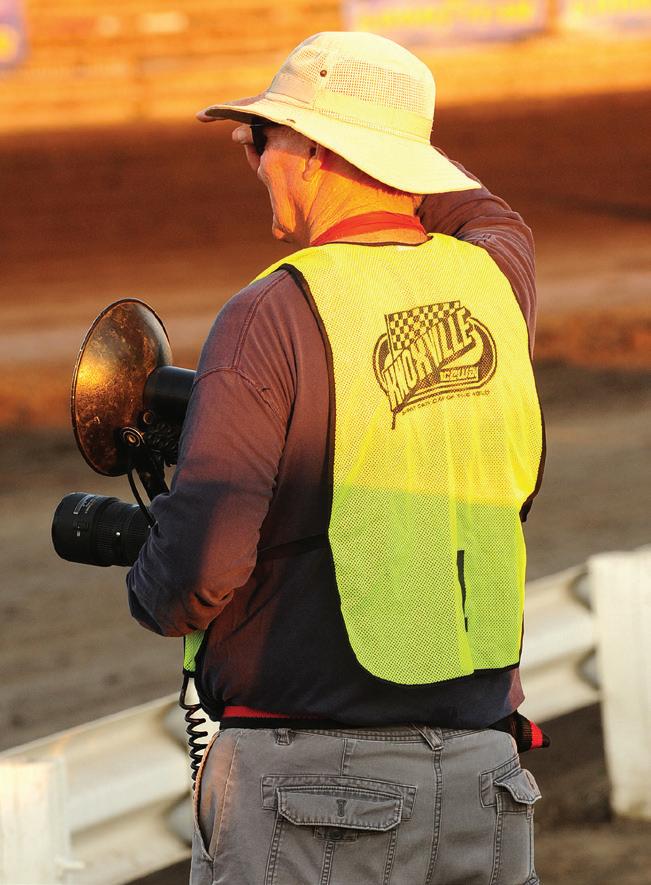 Photo: Gene Marderness
Photo: Gene Marderness
DIRT EMPIRE MAGAZINE • ISSUE 15 - APRIL/MAY - 2023 49
Photo: Paul Arch Photo: Paul Arch
CHAD KEMENAH - DRIVER
By Doug Kennedy
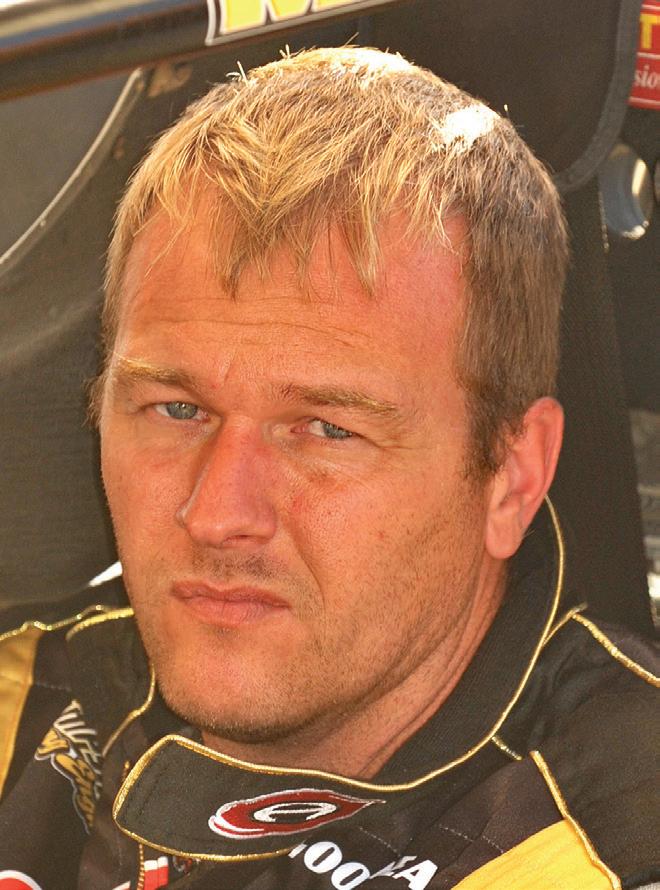
BORN AND RAISED in Fremont, Ohio, and a current resident of Alvada, Ohio, 51- year-old Chad Kemenah began his racing career humbly in a street stock in 1988. Four years later, he converted to a Sprint Car and ended up doing that for the balance of his career.
Kemenah came from racing roots and his father, Harold, was a great car owner, campaigning the familiar 3X cars that saw drivers like Frank Linder, Jack Hewitt and Kenny Jacobs behind the wheel.
Throughout his Sprint Car career, Kemenah has better than 100 feature wins with six World of Outlaw wins and 35 All-Star Circuit of Champions victories. Six times, he won the All-Star Circuit of Champions title. Kemenah is fourth in the series in A-main starts and third in topfive and podium finishes.
From 2002 through 2005, he was the scourge of sprint car racing around his home state, winning four straight All-Star Circuit championships and four Eldora track championships. During that four year period, Kemenah won 21 features driving the 15k. He also captured a second-place finish at the Knoxville Nationals, a third place at the Kings Royal and two fifth-place finishes at the Knoxville Nationals.
After leaving the All-Star Circuit in 2006 to race with the World of Outlaws, Kemenah experienced a rough transition. Being away from his family for long stretches was a difficult adjustment as
was parting ways with his older brother and chief mechanic Brian Kemenah. Finally, there was a bad accident at Knoxville.
On the positive side, he was named the Kevin Gobrecht Rookie of the Year with the World of Outlaws and, as mentioned. captured six career wins. Following a decade with the WoO Series, Kemenah returned to his familiar stomping grounds of the All-Star circuit.
By 2020, Chad Kemenah had reduced his racing to a handful of events and that is due in a large part to his 16-year-old son, Creed, who is starting to amp up his involvement with being a race car driver. “The more Creed wants to get into racing, the more I slow down to focus on him and his career,” said Kemenah.
Creed drove a 305 Sprint last year until the final six races, when he drove a 410. This year, Creed will run a handful of 360 races but the majority of time on the track will be in the family owned 410.
Chad will be the first to admit that his career has slowed down drastically. “Over the last two years, I raced maybe 20 times, “said Kemenah. “I’ll do some races big races and maybe run some others for other people. We went to Knoxville last year and I plan on doing that again this year, so I’ll to kick Creed out of the seat for this one.”

Chad and his wife, Tracy, also have a 19-year old daughter Mackenzie.
When he’s not helping Creed or driving for himself, Kemenah owns a big rig for CK Trucking. He’s mostly does local logistics runs in Ohio but does regional travelling to Indiana and Kentucky to name a few. “I could definitely drive this rig seven days a week, but I try to keep things down to five.”
Attica Raceway has always been the home track for Chad. The highlight of his career is winning the last WoO race ever at Manzanita Speedway in Phoenix, Arizona in 2008. “That was always a very prestigious Outlaw race.” As for his biggest win, Chad said the win he got in an Outlaw race at I-55 in Pevely, Missouri in 2006. “That was my very first World of Outlaws win.”
“It probably hasn’t sunk in just yet,” said Kemenah commenting on his election to the National Sprint Car Hall of Fame. “It’s rare company to be a part of it. It’s just a great honor. You sometimes wonder if it will ever happen. When I got the call, I’m usually not speechless, but on this one, I was. To be a first ballot Hall of Fame nominee was unreal. I thought honestly that I might be waiting five to ten years. To go in on that first time ballot was incredible.”
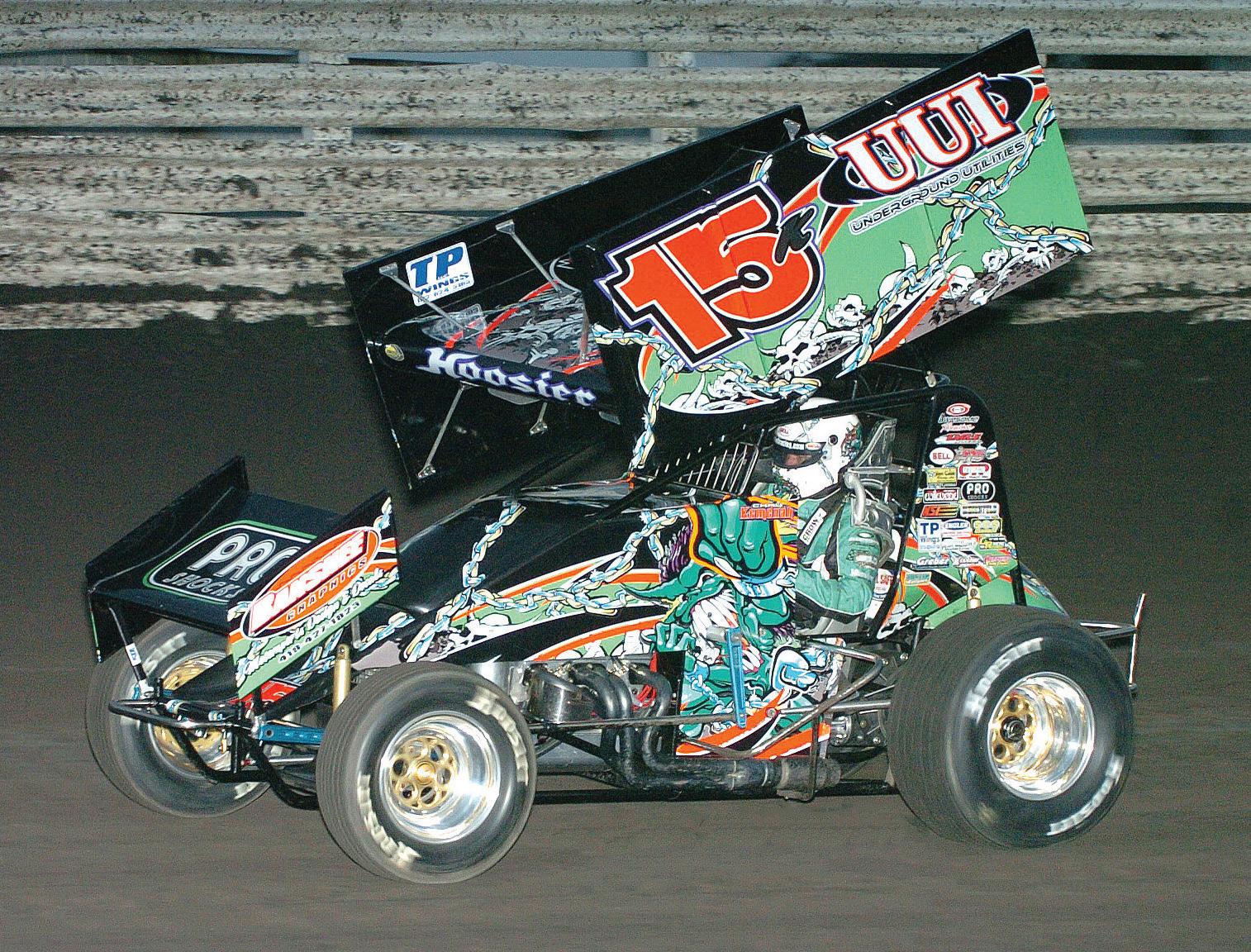 Photo: Paul Arch
Photo: Paul Arch
Photo: Paul Arch
Photo: Paul Arch
50 DIRT EMPIRE MAGAZINE • ISSUE 15 - APRIL/MAY - 2023
Kemenah with a memorable livery at the 2006 Knoxville Nationals, during his rookie campaign with the World of Outlaws.
RALPH SHEHEEN - MEDIA
By Doug Kennedy

BORN IN UTICA, NEW YORK on August 23, 1964, and a current resident of Mooresville, North Carolina, Ralph Sheheen will be part of the group of the National Sprint Car Hall of Fame class of 2023. In between, Sheheen lived in Sacramento, California until his move to Mooresville in January of 1990.
Sheheen is the lead broadcaster for the NASCAR Xfinity Series on NBCSN. He also was the lead commentator of Feld Entertainment’s AMA Supercross Championship from 2006 through 2020. He is the co-owner of the Speed Sport franchise through his association with Turn 3 Media, LLC, which are the publishers of Speed Sport magazine, the Web site, and both radio and television shows.
His work at the Speed Channel included anchoring SpeedNews and was the lap-by-lap announcer for the World of Outlaws and coverage of the Knoxville Nationals.
His career began in 1988 when he called an IMSA sports car race for ESPN. He has also worked for ESPN2, FSN, TNN (Parliament Network), and CBS. Beginning in 1992, he became involved with announcing for the ASA, starting as a pit reporter and then moving to the lapby-lap announcer.
He then moved onto the lead announcer for TNN’s NHRA Drag Racing Series and then as a pit reporter for the Daytona 500 for CBS. Sheheen also did lap-by-lap announcing for the San Marino Grand prix, the Spanish Grand Prix, the Canadian Grand Prix, and the German Grand Prix.
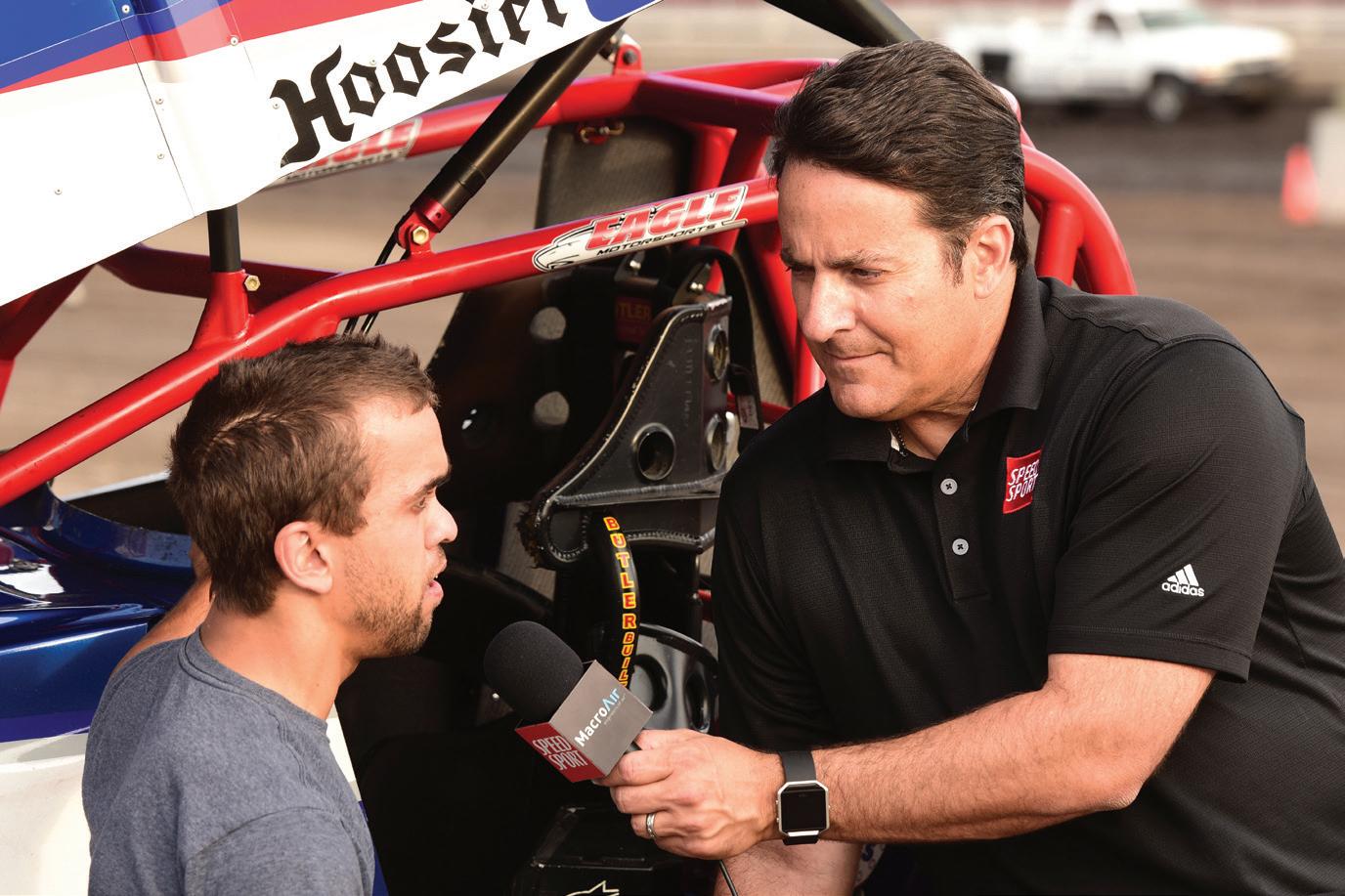
Since 2007, Sheheen has been a pit reporter for Speed produced NASCAR on TNT. Besides his network duties, Sheheen has been the track announcer for many local tracks.
He is currently at the top of the editorial team at Speed Sport News and also holds an executive position with the West Coast Stock Car and Motorsports Hall of Fame.
His knowledge makes him a natural to be a keynote speaker. He has two favorite moments that have occurred in his illustrious career. “The first one is me calling the first ever live Knoxville Nationals on TNN,” said Sheheen “and the other was working as a pit reporter for CBS when Dale Earnhardt won his very first Daytona 500.”
But nothing compares to his induction into the Sprint Car Hall of Fame. “It is mind blowing,” said Sheehan of the nomination. “It’s something I never ever thought would be a possibility. It’s a tremendous honor because that nomination comes from your peers. As a broadcaster, it’s different as opposed to being a driver. For a driver, it is numbers driven like the number of wins, top-tens, poles, and so forth, but for me as a broadcaster, it’s not about the numbers. It’s what they think of you and how you covered the sport. That leads to the respect you gain and the feeling that you belong in there.”

PopBit DIRT EMPIRE MAGAZINE • ISSUE 15 - APRIL/MAY - 2023 51
Photo: Paul Arch
a main FEATURE
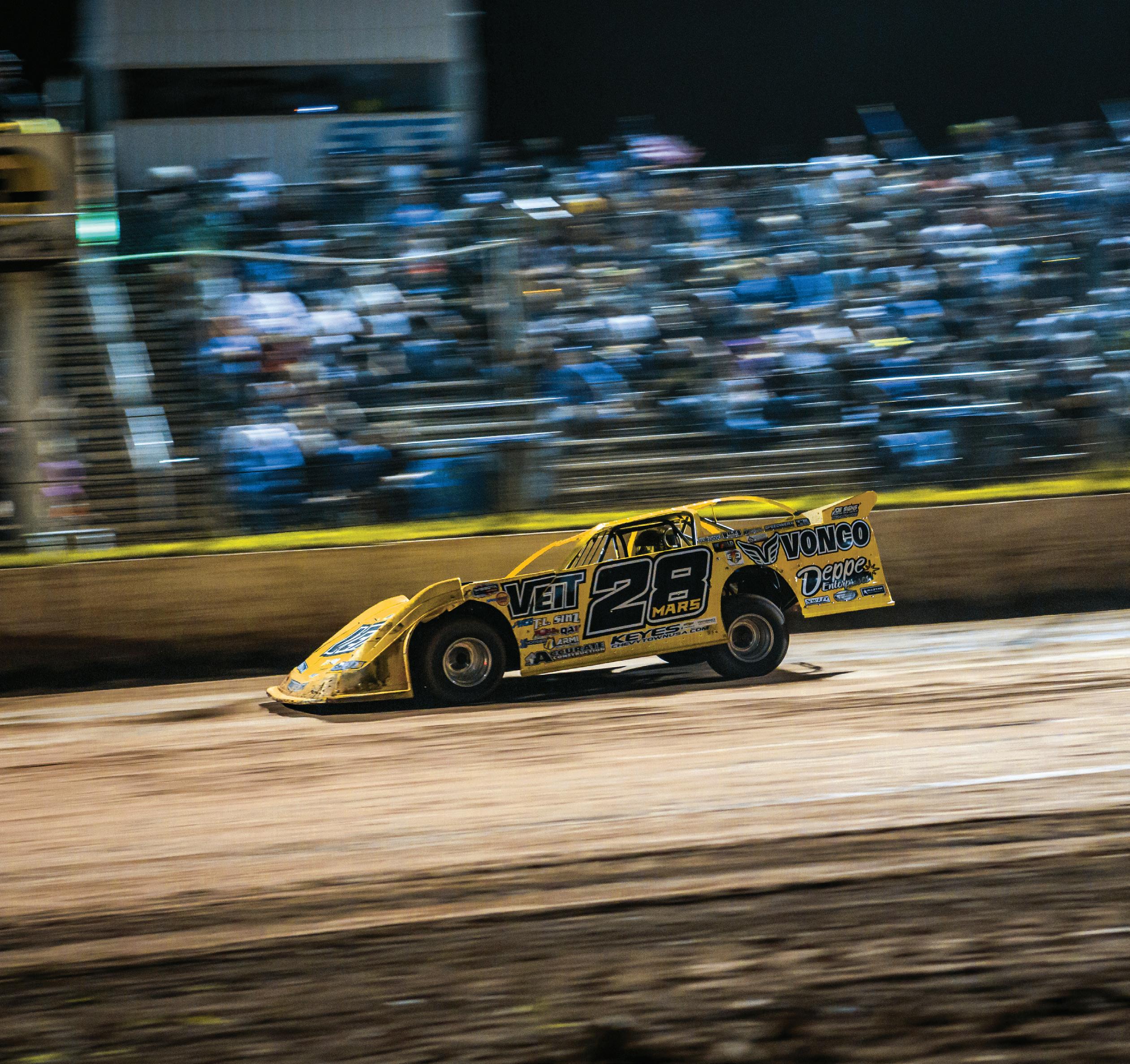
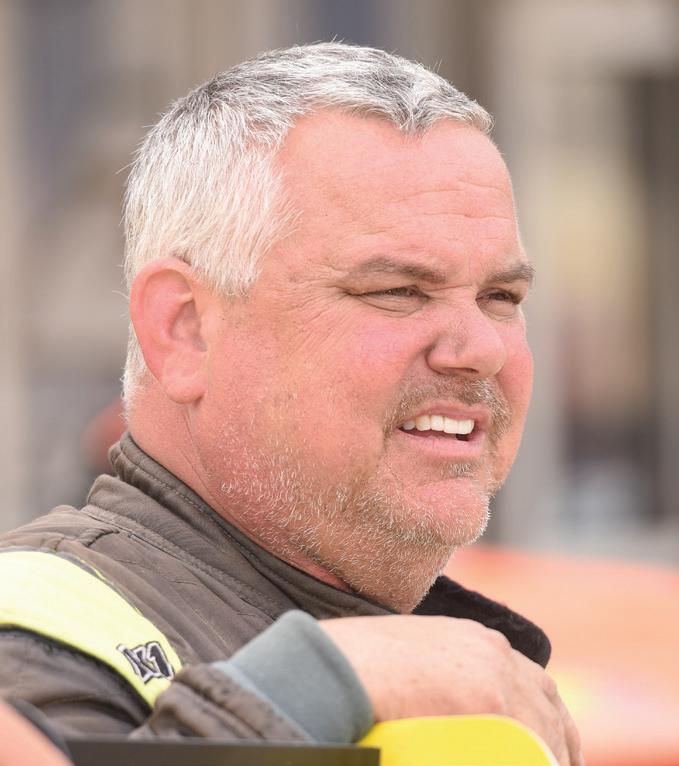
MARS LANDING JIMMY MARS CALLS IT A CAREER
BY KELLEY CARLTON
WHEN YOU TAKE a look back at the racing career of Jimmy Mars, by anyone’s standards, it is pretty damned impressive. Mars is a burly and likable guy who didn’t exactly come from the hotbed of open competition dirt late model racing, Mars calls west-central Wisconsin home. Yet he has amassed a truly remarkable resume in a seemingly quiet way. Mars has won his fair share of the highest profile events including Eldora’s Dream 100, the Topless 100, the Dirt Track World Championship, the North South 100, the Masters, the Prairie Dirt Classic and the list goes on. He has multiple victories with
the top national series in Lucas Oil Series, the World of Outlaws Late Model Series, UMP Summer Nationals and Hav-A-Tampa / Xtreme Dirt Car Series respectively. He has also won countless events throughout the country in both regional and local competition. Still the 2018 National Dirt Late Model Hall of Fame inductee’s extensive resume may catch some folks off guard. Maybe it is because he is the polar opposite of flashy or maybe because they just weren’t paying attention. But make no mistake, the driver who is known as the Iceman has left his indelible mark on this sport.
In addition to his career behind the wheel, Mars and his brother Chris have built and developed a thriving chassis business in MB Customs. The brothers Mars build both late models and modifieds, which have been highly successful. Recently at the Wild West Shootout in Vado, New Mexico, Jimmy was kind enough to take some time away from working on his house car to answer talk about his life, his stellar driving career and what lies ahead.
Dirt Empire: You are still relatively young and obviously still have the
LATE MODEL
52 DIRT EMPIRE MAGAZINE • ISSUE 15 - APRIL/MAY - 2023
Photo: Tim Hunt
Photo: Paul Arch
ability to drive. So, what led you to the conclusion that now was the right time to step out of the driver’s seat?
Jimmy Mars: I always said that when I turned 50, I would evaluate and look at where I was with driving and where our business was. It became really clear to me when I was leading the Wissota 100 last year and I found myself more concerned about how Sam (Mars’ son who also drives) was doing in the race than how I was doing. That was when I really decided it was time. I have been racing for a long time and I love it. But racing is kind of like gambling. Just because you were winning doesn’t mean you are always going to win. You have to know when it’s time to stop. And of course, the age thing starts to catch up with you. A lot of little things start making it harder. You start having to wear glasses and I don’t like to wear glasses. I just knew it was time to put another driver in the car and focus on our business and my son’s racing.
DE: When you look back over your career is there anything you would like to change or go back and do over again?
JM: I mean, hindsight is 20-20 so there is plenty I could have changed to have won some races that I was in. Just like every other guy that races these cars I wanted to win the World 100. I won the Dream but I really wanted to have both. And I wish I could have won a race at Charlotte’s dirt track. Ozzie Altman always said I just needed to win at Charlotte to get that trifecta. If I had won there, I would have won at all the SMI / NASCAR facilities. We had won at both Vegas and Texas. But as far as my career and what I have done in racing I believe that I was too loyal to a team that I was driving for and completely missed out on a very good opportunity to go and race pavement with a very lucrative Busch Grand National team. I raced some pavement stuff and did really well. So that could have been a whole different trajectory.
DE: You won $100,000 at the Dream in 1997. That was a heck of a lot of money in that time. Do you consider that your signature win?
JM: Yeah. I mean I have won a lot of big races but that is right up there. You know some people may say that it was given to us or whatever with the Bloomquist/ Frye deal. But we did everything right to be in the position to take advantage of
that. And who knows what would have happened. We had a really good car that day so you can’t say what the outcome would have been without their incident. It’s 100 laps and you have to race them all to win.
DE: That is a good segue to ask you about Scott Bloomquist. You guys had your share of issues over the years. I know that came to a head with the 2011 Firecracker at Lernerville. And I remember that you took particular exception to Bloomquist’s tire protest. The lab and a lie detector test exonerated you of any wrongdoing. Were you ever able to get over that?
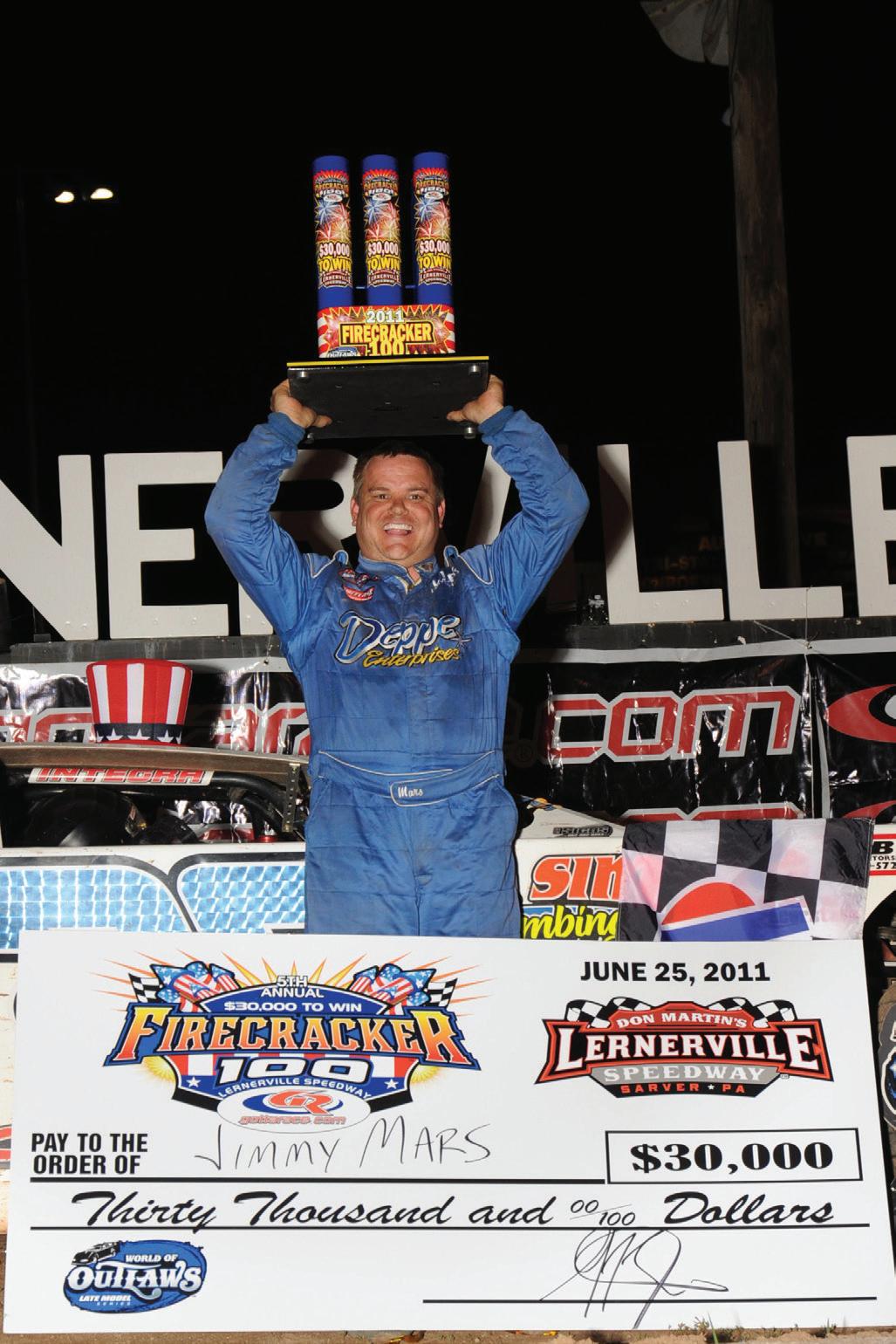
JM: It wasn’t really getting over it. I mean that was just one thing. There was a lot of things that led up to that. It was tough for me. Scott had been someone who I looked up to in racing. He was my idol and when you get treated like that, both on and off the track over and over again, and there are some things that no one really knows about. It really isn’t for the public to know and I won’t go into it but that is something you never really get over. I mean Scott is one of the most talented race cars drivers to ever do it but that isn’t everything. I guess its best just to say it’s all forgiven just not forgotten.
DE: What was most right about dirt late model racing over your career?
JM: The unified rules packages that basically allowed us to go across the country to race and not really have to change much, if anything at all. Mike Swims had the right idea to get everyone on the same page with Hav-A-Tampa. And Wissota and even UMP has done a great job of providing a box for us to operate in. It is structured and organized but still allows us some room for ingenuity. It just keeps everything in check. I remember [Billy] Moyer telling me that they used to weigh everyone before they would race
and guys would have tires filled with water for extra weight when they would scale. And then they would go and change the tires and really lighten the car. So just the sanctioning bodies keeping everything on a level and safe playing field was big.
DE: Inversely, what was most wrong about racing over your career?
JM: I believe it was just a mess when we were on open tires and had all these different compounds and constructions. We had to carry so many tires and it cost us so much money. If we could have just done what they have done now and simplified the tires. We have been talking about this for probably 20 years now. Just cut it down to three or four compounds. It has to save us some money and it should also help with their supply problems. [This] gives us some choices where we can tune and adjust. I wish they had chosen a different tread pattern because the one that they are using makes us have to groove and sipe to get decent life out of the tires. But I believe the new tire rule is a huge step forward. In addition to the tires, I believe we should have kept some limitation on engines. That really got out of hand much the same way that the tires did. We went through several different head configurations that cost tons of money but there wasn’t much
DIRT EMPIRE MAGAZINE • ISSUE 15 - APRIL/MAY - 2023 53
Photo: Paul Arch
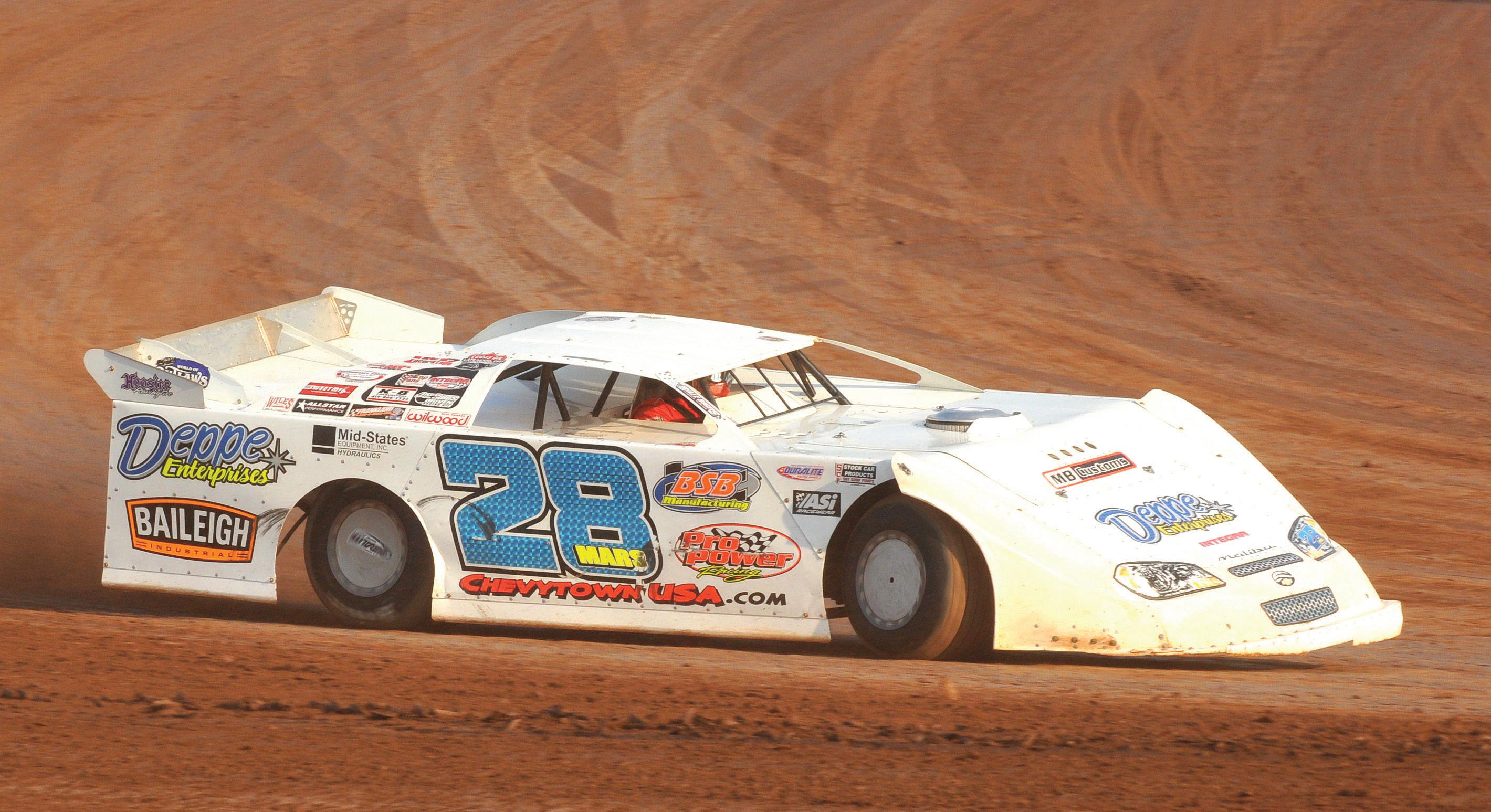
proof that some were better than others.
DE: What has your brother Chris meant to your career?
JM: Well, we started everything together and we will end It together. When we first started racing, we would rotate driving the car. So, we have learned racing together and I just ended up doing more of the driving and he became more of the crew chief. He has become highly regarded as a design and engineering guy. I would put his intelligence up against anyone in the pit area. We both got our degree in engineering from the University of Wisconsin-Stout so we think a lot alike.
When we are clicking, we can finish each other’s sentences. I couldn’t be any closer to anyone. You know we are brothers so we have our ups and downs but at the end of the day we work through stuff really well together. Chris is my best friend. It is a unique bond that you can’t really describe. I couldn’t be here without him.
DE: You were one of the group of drivers who were a part of the Stacker 2 Xtreme Series that Doug Bland created from Hav-A-Tampa. When you look back on that time, what are your thoughts?
JM: I absolutely believe that everything Bland was doing was going in the right direction. It was the most lucrative series at that time. He really believed in the live TV stuff and all the hoopla that came from that. A lot of what is happening with streaming today was based off his conceptions. And, of course, the World of Outlaws Late Model Series is a direct result of what he was doing. It was a
tire war situation that was ultimately the demise of the series but I believe it created a lot of new opportunities in the sport and maybe opened some eyes how to do things differently. I still believe in what he was doing.
DE: What is the next phase of racing for Jimmy Mars?
JM: Well, most importantly, we want to keep growing our business. We have a really good niche in our region of the country. We are going to run our house car program with (USMTS Champion Modified driver) Dustin Sorenson. Dustin is my driver for the equipment that I own. He is going to run the late model and mod stuff. We usually build about 50 Late Models and 50 Modifieds at MB Customs every year. And then we service another 50 of each for recondition or repair every year. I feel like we are in the top tier of
chassis manufacturers volume and size wise. We have 12 full time employees and a full parts department. We have really become a one stop racing shop in our area.
DE: I know that Dave Deppe was very important to your program over the years. Tell us about your relationship and what he meant to you.
JM: We have a lot of great sponsors that allow us to race. Dave was a sponsor but he was also a great friend and just a great guy. I talked to him damn near every day. He was such a good business man and was so helpful to me in so many ways. There were times when he would help me with just good solid advice when I would be lost on a decision. He was very successful but he didn’t flaunt that at all. It was a tough one when he passed away four years ago. I still get teared up
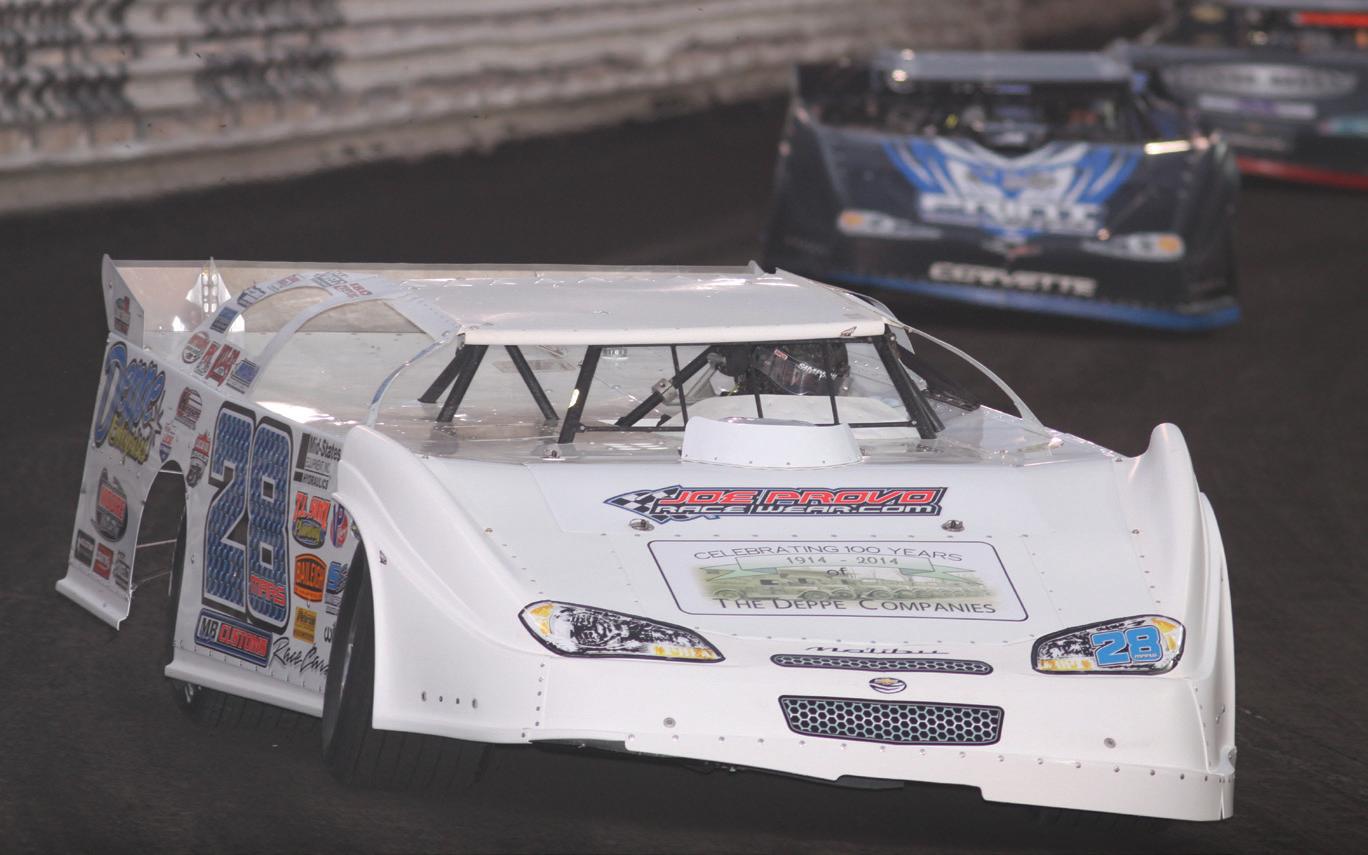 Photo: Ryan Northcote
Mars in his glory, running at Lernerville during the 2010 season in his familiar white 28.
Photo: Ryan Northcote
Mars in his glory, running at Lernerville during the 2010 season in his familiar white 28.
54 DIRT EMPIRE MAGAZINE • ISSUE 15 - APRIL/MAY - 2023
Mars racing hard at Knoxville Raceway in 2014
Photo: Paul Arch

if I start thinking about it. He was with us through good and bad times. There were some years where economics weren’t good and he would say “I can’t do much for you this year.” And I would just tell him, “Look you are my friend and you are on my car.” And he remembered that, too. His family still supports us to this day. Losing Dave was just really tough.
DE: Bloomquist or Moyer?
JM: There really isn’t a right answer. If you look at stats and such you could put Scott at the top. But if you look at longevity Moyer is still very competitive and he is older than Scott. So, from that perspective of how they have aged and where their health is you have to say Moyer is at the top. They are both great and have had incredible careers.
DE: What about your sons’ racing careers?
JM: Sam is 18 and he has been racing for a few years now. He just graduated high school and he is now a Mechanical Engineering freshman at UW Stout. He works at MB Customs and is a big part of our parts program but I wanted him to go and get that education like Chris and I. I think it is important to have that perspective and thought process. Sam will continue to race like he has the last few years and we will see where it goes
“I HAVE BEEN RACING FOR A LONG TIME AND I LOVE IT. BUT RACING IS KIND OF LIKE GAMBLING. JUST BECAUSE YOU WERE WINNING DOESN’T MEAN YOU ARE ALWAYS GOING TO WIN. YOU HAVE TO KNOW WHEN IT’S TIME TO STOP.”
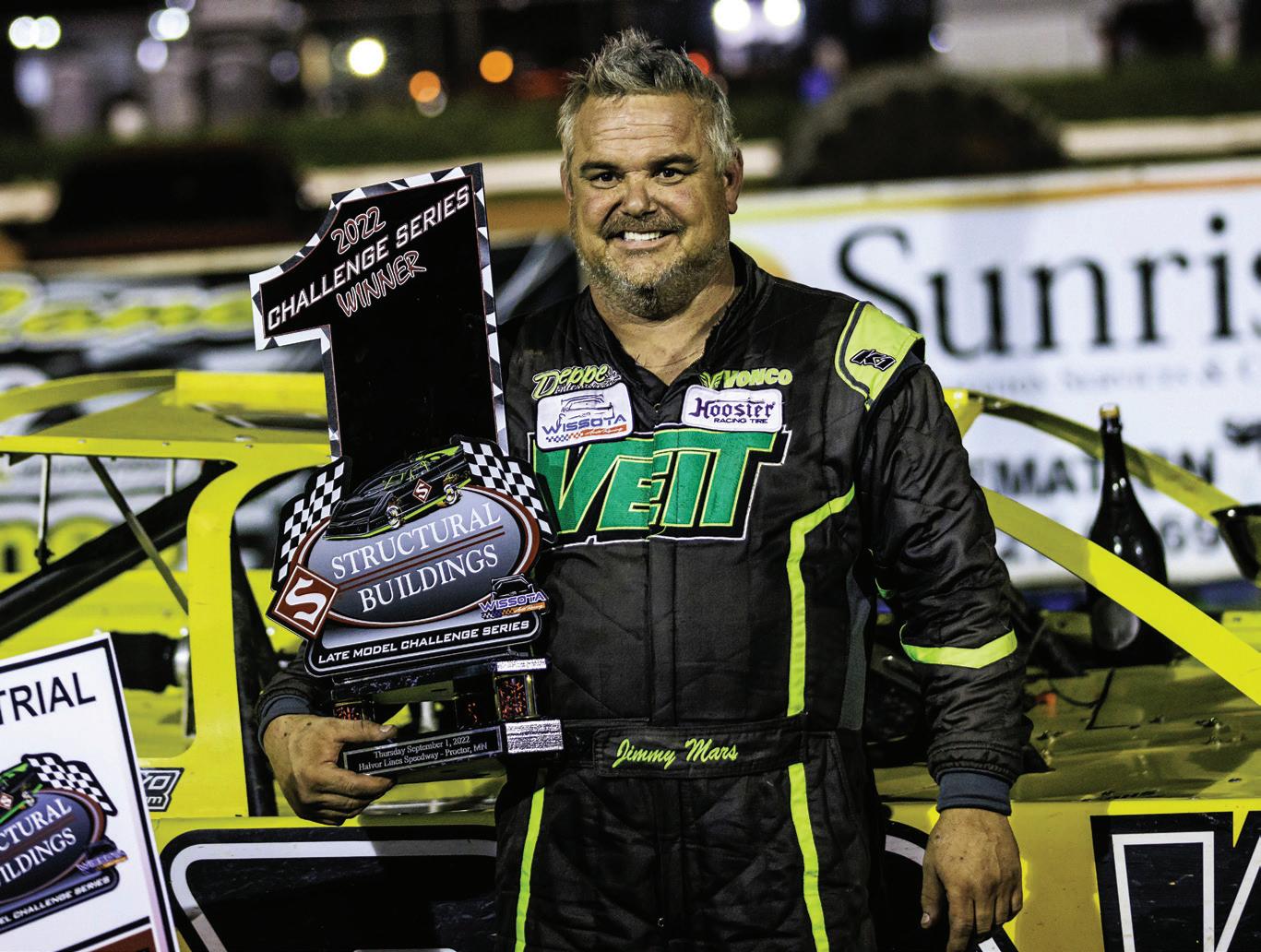
from there. My other son Taylor is 14 and he just recently started racing a winged outlaw kart. And that has been a lot of fun. He is serious about it but he is also our athlete and is involved in all the stick and ball sports. So, we will see what happens there in the future as well. They will be the future of our program I am certain. And they will definitely be the future of our business.
It seems that Jimmy Mars is at complete peace with stepping away from full time driving. And though he will likely still make some starts it seems he is happy with where he is at guiding new talent to success behind the wheel and providing his customer base with the best products and services that he can produce. Yeah, I would say it is just about a perfect landing. A Mars landing.
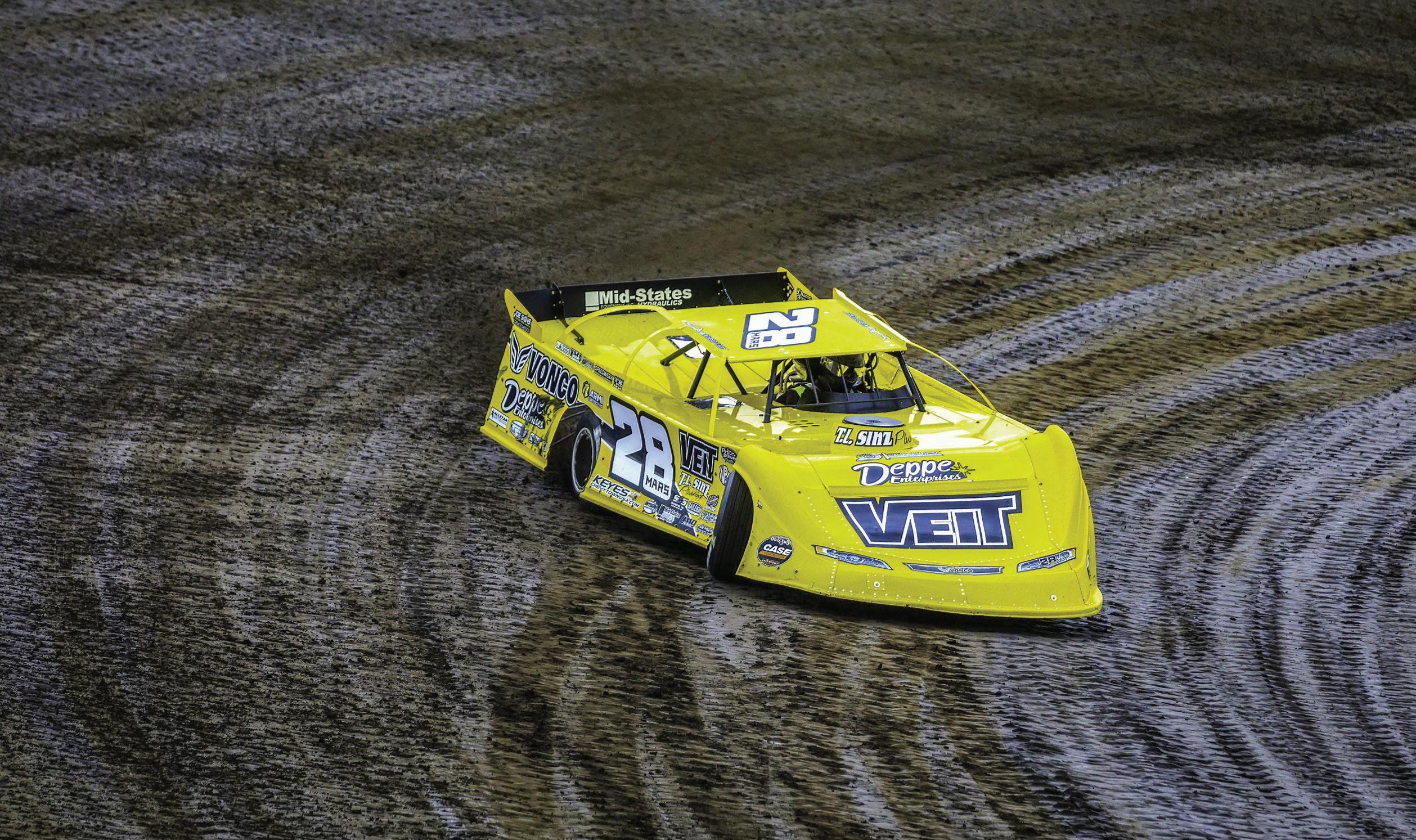 Photo: Tim Hunt
Photo: Tim Hunt
Still winning! Mars grabbed a Late Model Challenge Series win during the 2022 season, which would be his last, in Proctor Minnesota.
Photo: Tim Hunt
Photo: Tim Hunt
Still winning! Mars grabbed a Late Model Challenge Series win during the 2022 season, which would be his last, in Proctor Minnesota.
56 DIRT EMPIRE MAGAZINE • ISSUE 15 - APRIL/MAY - 2023
Mars running wide open and all alone at Mississippi Thunder Speedway against the World of Outlaws early in 2022.


Wehrs Machine Trailer-Alarms.com DIRT EMPIRE MAGAZINE • ISSUE 15 - APRIL/MAY - 2023 57
the world according to KARTS
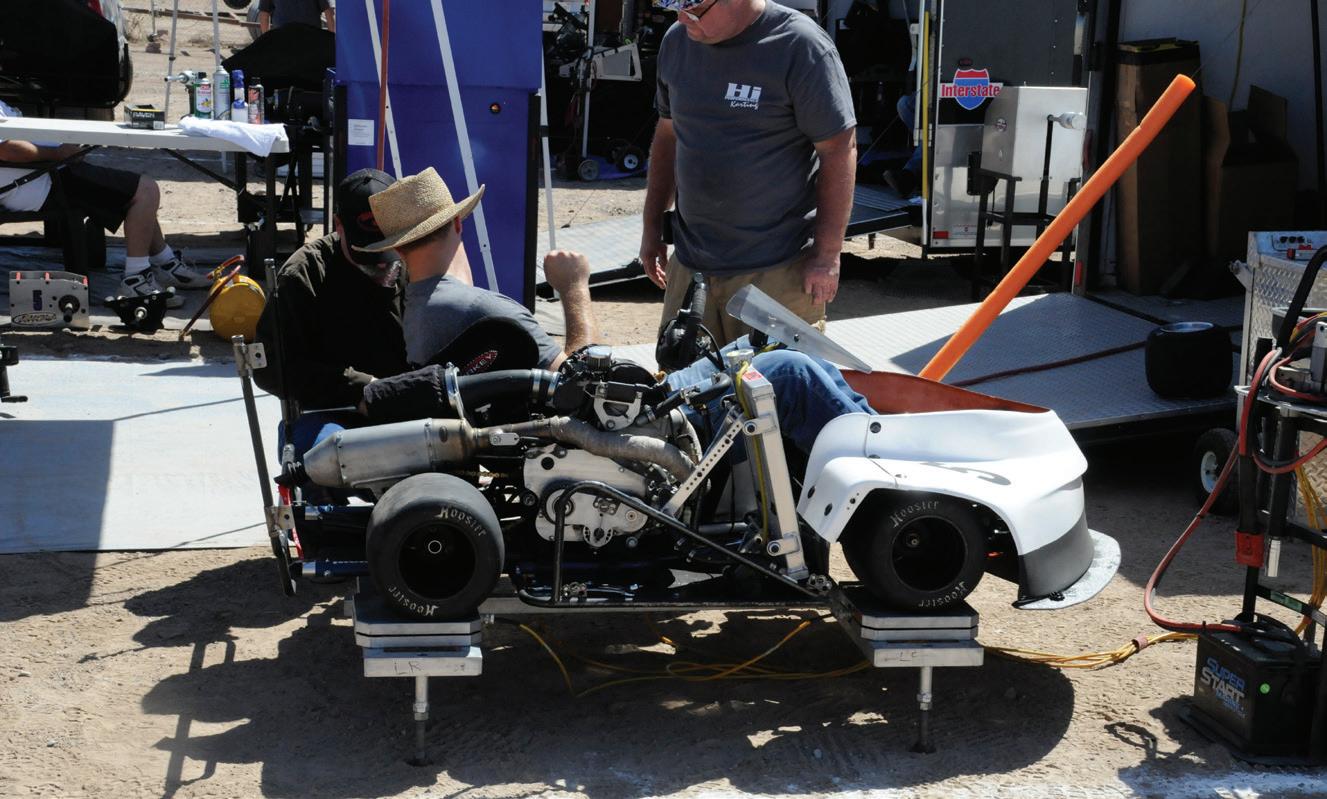 Words and Pictures by Vahok Hill
Words and Pictures by Vahok Hill
Work in the pits may include removal of the body work to make weight and balance adjustments. The use of digital scales and portable stands for the scales when the ground is a bit to uneven to get accurate adjustments and weights.
“THEY STARTED IN KARTS” A QUICK INTRODUCTION TO KARTING
IF YOU HAVE EVER read a driver profile in almost any racing magazine that covers motorsports of any type, you will have read the tagline “They got their start in karts”. These lines are often followed with many sound-bite worthy phrases such as, “they won the first race they ever entered” or “they have multiple national championships in multiple karting classes prior to moving into sprints, midgets or late models”.
While this is a tried-and-true path to the larger racing formulas and professional driving careers, karting gives the new racer just the thing they need - a bunch of seat time for very low cost. It is not as low cost as it once was but in comparison to running a sprint car. karting is much lower cost. It is not, however, cheap. You can find kart tracks all over the country and usually a very thriving racing scene. There are dirt tracks, paved tracks, big tracks and small tracks just for karts. It is very possible that if you can name a track there is a good chance that karts have raced there at one time or another. Not to mention street races and parking lots all across this country. While parking lots do not sound like a glamorous racing venue, its good enough for F1, so it is good enough for karting.
The term kart is a very broad description of various “kart-shaped” racing vehicles. It also does a great disservice to kart racers when journalists or TV announcers, say that karts are just
a stepping stone to the higher formulas. This implies that kart racing is just something that professional racers use to get started and abandon when they get the opportunity to race in the higher formulas. But there are a great number of kart racers that have no ambition to move into different forms of racing. It could be for a variety of reasons, but we should not infer that a racer who has raced karts for more than the period of time from early teens to adulthood is any less of racer.
Karting is a great way to develop and maintain driving skills and learn how a racing vehicle goes from straight ahead to transition through corners. The learning opportunities are high and it is a great way to learn the nuts and bolts of racing from a mechanical perspective and on track race craft, something that is very difficult to learn from a book. These skills, mechanical and race craft, developed in karting are completely transferable to almost all other forms of racing. Karting is a great way to learn how to speak “race car” and yes there is a specific language to race care. Need proof? Just ask one of your friends what loose and tight mean, if they are a stick and ball types, they will have no clue.
Karts come in three basic configurations - speedway karts, these are karts that race on dirt ovals; sprint karts, primarily sprint karts race on small ¼ to ½ mile purpose-built road courses made specifically for kart racing; and
enduro karts which race on larger sports car road courses.
From a learning perspective, karting is a unique learning opportunity. You will learn about driving and car control on either pavement or dirt. Pavement racing teaches about picking lines, finding grip all aspects of race craft. Dirt racing teaches the racer how to deal with traffic. This is a given when racing on small dirt tracks you will always be dealing with lapped karts. You will learn about other aspects of race craft. In both, you will learn about vehicle dynamics and just how to maintain your race kart for your intended usage.
Over the past 50 or so years, kart racers have drawn a very specific delineation between dirt karts and sprint karts. Today, there is a very well-defined line between the two. A speedway kart has developed from basically a sprint kart with dirt tires or grooved pavement tires which were often just implement tires, not racing tires. This has morphed to purpose-built dirt only chassis and a good deal of tire technology has been developed by the tire manufactures and the tire market for dirt karts is much larger than one would imagine. The speedway kart of today is very different animal than when karting was invented in the late 1950s.
The evolution has not just been with the chassis but with the engines that power the modern speedway racer.
58 DIRT EMPIRE MAGAZINE • ISSUE 15 - APRIL/MAY - 2023

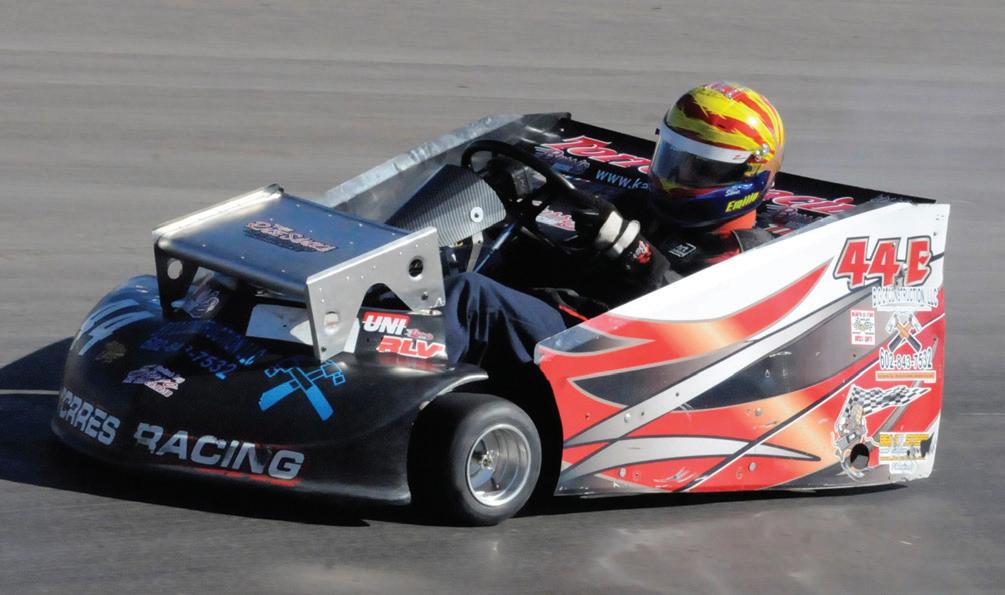

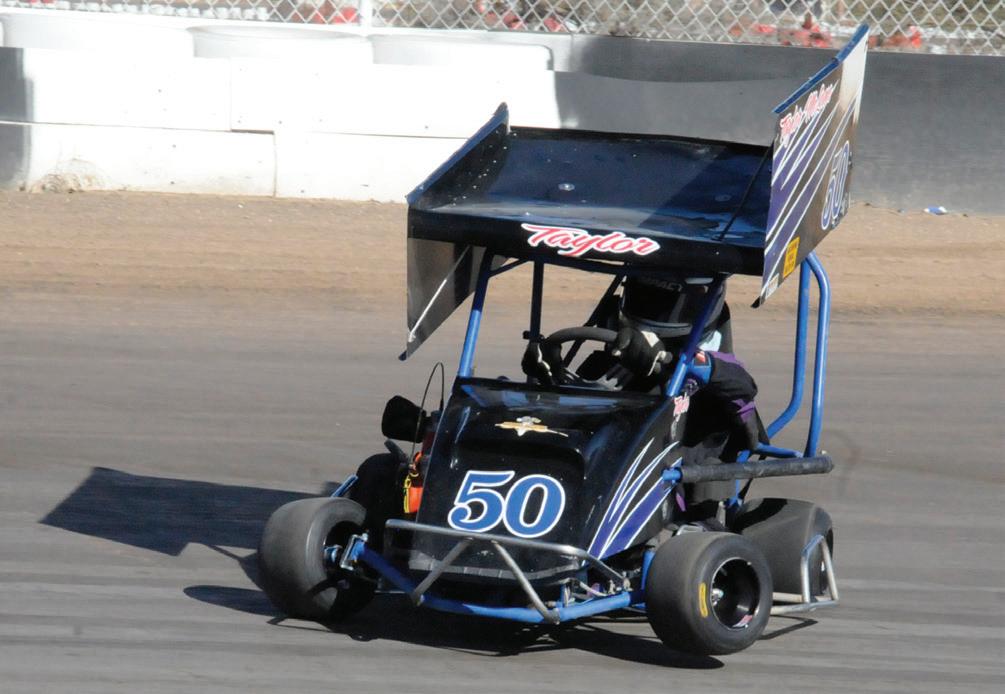
Dirt karts come in a variety of different body types. From the wedge type of kart that resembles a wedge of cheese, the wedge with a nose wing, the lower more streamlined look that has a low and lean design to the cage kart with a roll cage that has the look of a dirt midget. All of these karts could be racing at your local dirt kart track.
Engine types run the full gamut from small four stroke engines that may have been originally designed for industrial power equipment to purpose built two stroke karting engines. And, in recent years the advent of power plants that have their genesis in Motocross motorcycle engines, both two and four stroke types.
As far as governing bodies, the mainstay organizations for the United States have been the World Karting Association (WKA) and International Karting Federation (IKF). WKA has the greatest level of support in the southeastern United States and the IKF has long been popular in the north and western parts of the US. Over the past 30 or so years, there have been more organizations focusing on a more specific dirt-only kart racers. Many areas of the country have no association with the national organizations at all and have an outlaw mentality when it comes to rules.
The Unlimited All-Stars (UAS), a dirt track karting group, have developed an engine formula with rules that favor a more open framework. The engine is really just defined by displacement and type, four-stroke 450ccs or two-stroke 270ccs. The majority of the two stroke engines are a very hybrid type of engine where the engine has its beginnings in a motocross motorcycle and is extensively modified to suit the need of the karter.
For the two stroke racers, the engine has its genesis in a 250cc motocross engine. All of the engine related rotating parts are removed from the engine and set of purpose-built crank cases that no longer has a gearbox incorporated, is utilized to power the kart. The four stroke engines are based on a 450cc motorcycle engine, the popular choice being a Honda or a Yamaha. Many still have the gearbox attached but the transmission may only have one or two of the gears left. There

Freedom Race Lifts
DIRT EMPIRE MAGAZINE • ISSUE 15 - APRIL/MAY - 2023 59
are also some four-stroke Jawa engines that are sourced from Speedway Bikes. These hybrid engines are producing from 50 to 70 horsepower on alcohol. So, there is a great deal of parity in the engines from a power perspective. These engines are not for the faint of heart or the low buck racer as prices range from $5,000 to $15,000.
When looking at the modern speedway kart, it is obvious that the builders are using some very modern manufacturing processes. CNC (Computer Numerically Controlled) machining and a majority of the welding is TIG (Tungsten Inert Gas) welding and the execution is excellent. The machine work is aerospace quality and the execution is first rate. Chassis adjustability is almost beyond what is available in the modern sprint or midget as caster, camber, wheel base and ride heights and track width are all adjustable. Even wheel base from side to side is adjustable. Body panels range from simple plastic sheeting to aluminum panels and even carbon fiber for the aero devices. Front and rear wings often have “wicker bills” for adjustability along with adjustable angle adjustments. The use of body work has reduced the issues from giving a competitor the wheel, but the action on the track can still become very physical.
At the modern kart race, the pits are a hive of activity. Based on how the track conditions may change over the course of the race day, racers often practically tear down their karts between the heats and the main event to further tune their karts to the track and weather conditions. It is not uncommon to see karts on digital scales and the crews adjusting weight bias, cross and side to side weights. There is even thought given to raising and lowering weights on a vertical basis to raise or lower the center of gravity; so, they can develop more or less side bite. Gearing is changed to better match the conditions for the day. But you still have to remember that just because you can adjust it, that does not mean you should. It is still possible to dial yourself out of the park.
Some of the karts in the open classes can develop impressive horsepower to weight ratios of about five pounds of vehicle weight per horsepower. As a reference a NASCAR cup car develops a horsepower to weight ratio in the mid fours. While a World of Outlaws car develops a ratio in the high ones. The numbers are a bit different but they are still quite high. For a reference point, that
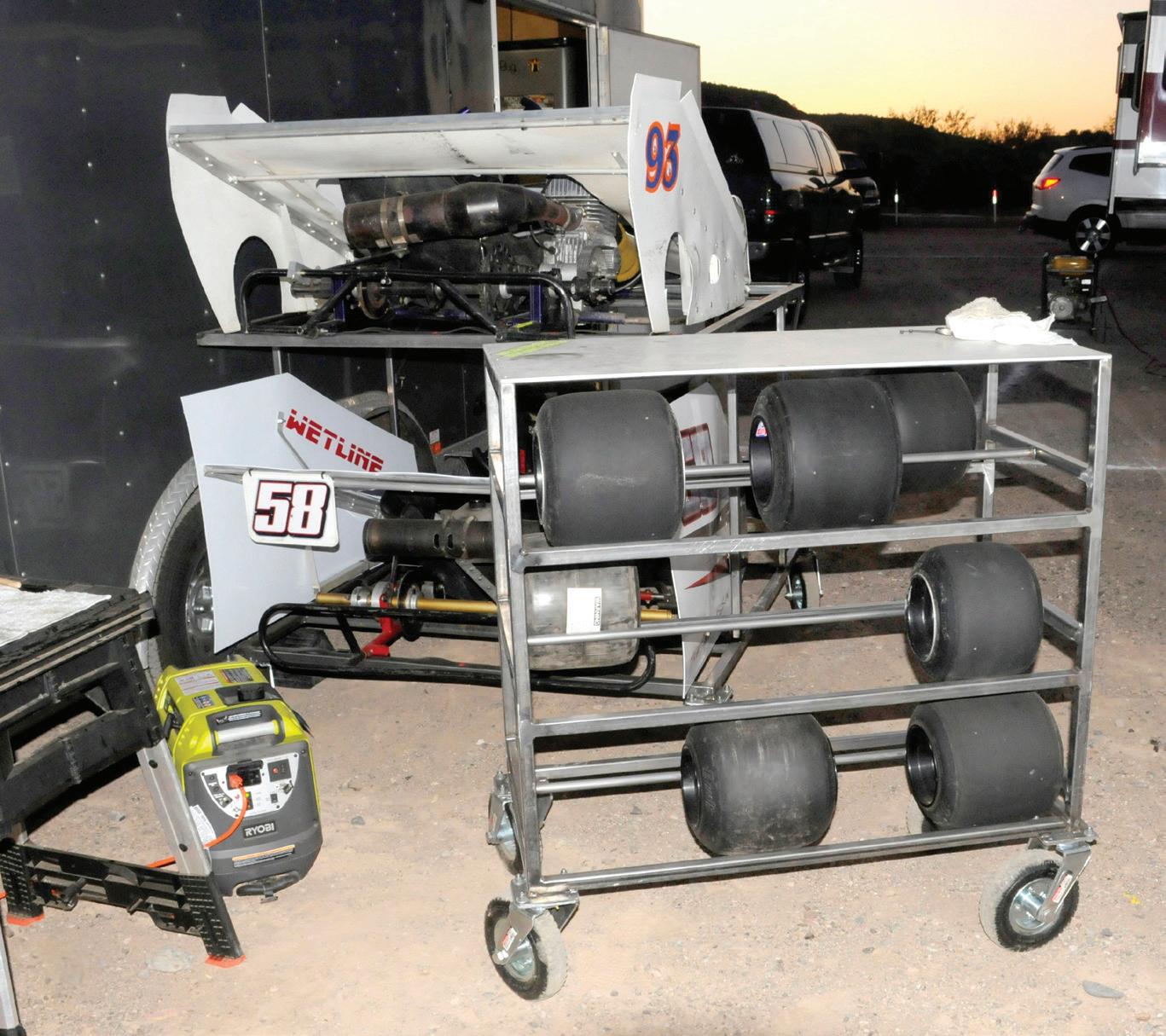
Tires are always a key factor when tuning for the track. This track is in the south west and slicks are the popular option, especially when the track turns black.
most of us can relate to, on your family car the HP to weight ratio is over 15. The point is that the kart is a pretty good ride from a performance perspective. So, who might you have heard of that started in karts? Tony Stewart, Kyle Larson, Buddy Rice, Michael MacDowell, Alex Bowman, AJ Allmendinger and many, many others from every level of motorsports started in karts. The point is that it is so easy to look at almost any
professional racing series and find the folks at the top were or still are karters. In fact, many racers still use karts to keep their skills and reflexes sharp. Not to mention, it is just plain fun. If you want to go racing, karts are a great way to get your feet wet and the added bonus is you develop skills, learn the ins and outs of race craft and you might just be on the receiving end of greatness. It really is just that simple.
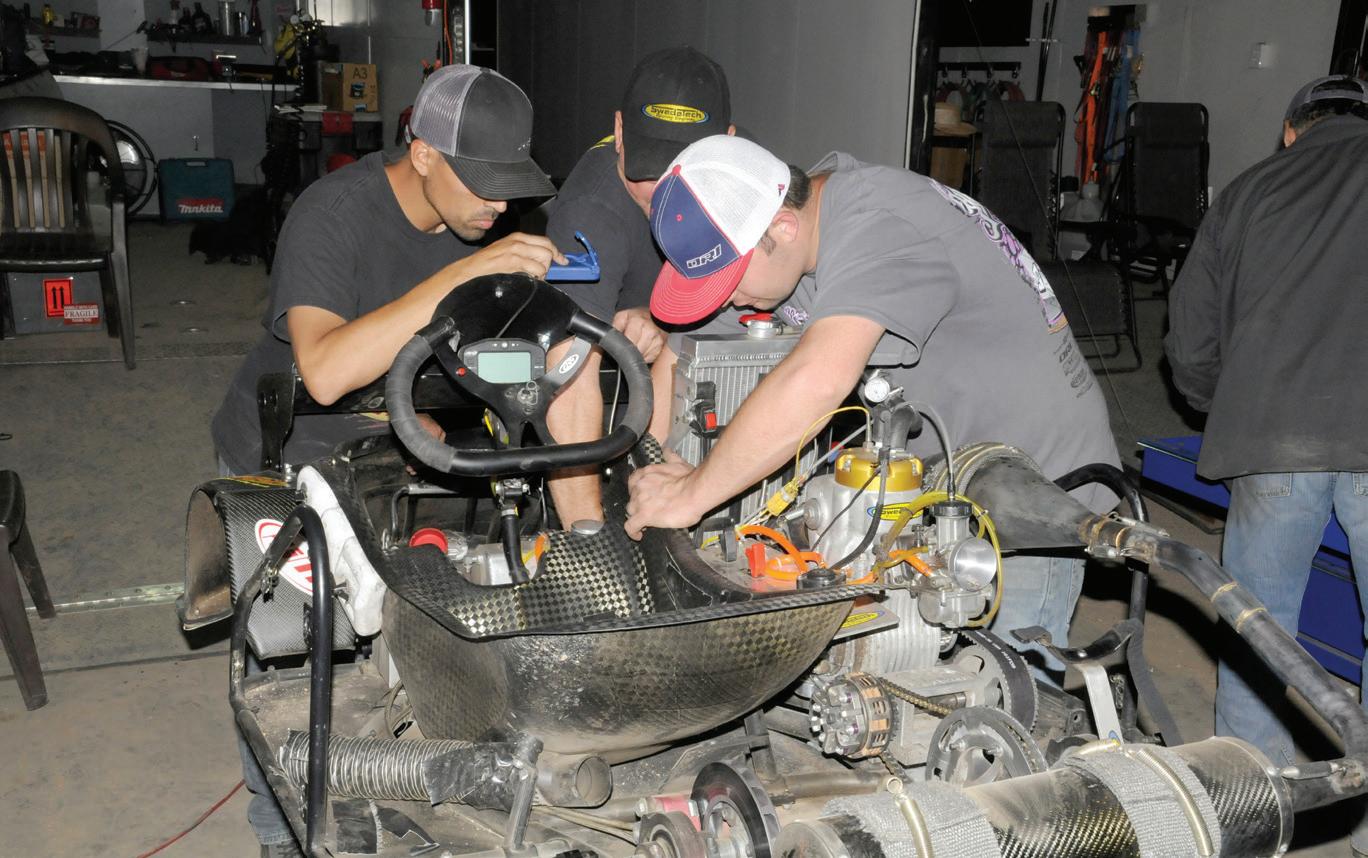
60 DIRT EMPIRE MAGAZINE • ISSUE 15 - APRIL/MAY - 2023
The karts have a very wide range of adjustment. On this kart the front end had a high degree of adjustability, Caster, Camber and front track are all adjustable. The adjustments can be changed with the turn of a couple of wrenches or the movement of the wheel hub.
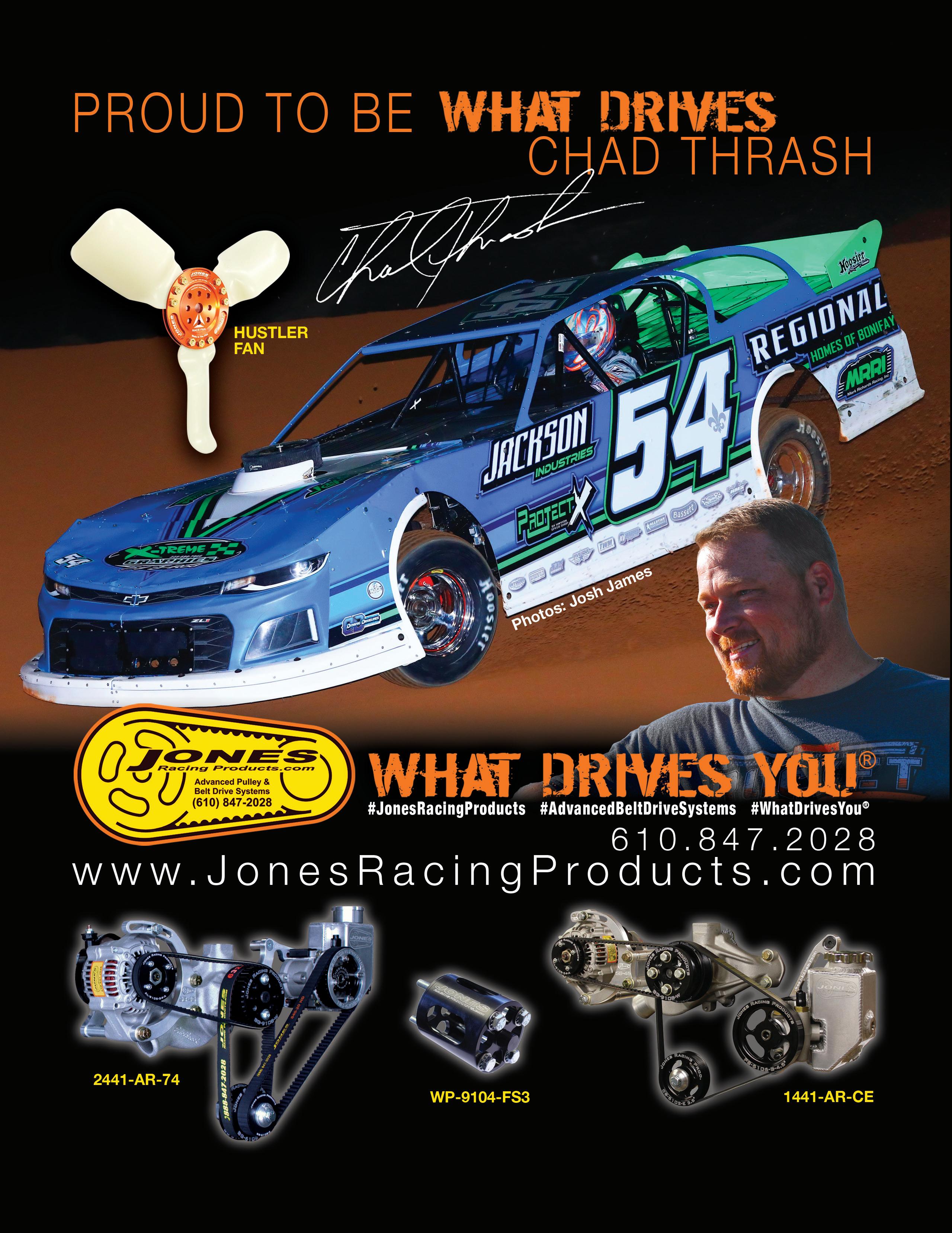
engine builder SPOTLIGHT
By
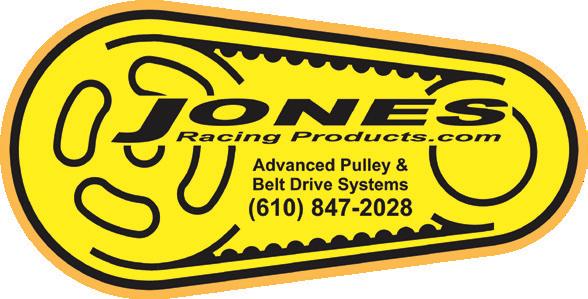
APE ADVANCED PERFORMANCE ENGINES
IF YOU TRACE Advanced Performance Engines (APE) back to its earliest roots, you’d find Kevin Hightower building engines for himself and his buddies starting back in 1976. It took all the way until 2018 before APE became a viable engine building enterprise where everyone could purchase a finely crafted power plant from the Natchitoches, Louisiana shop.
With just two employees, Kevin and his son Brandon, APE churns out over 170 engines each year. They produce high performance engines for the dirt track, from stock car level up to super late models. They also work on engines for drag racing, mud racing as well as streetlegal high performance engines.
“We do it all,” Brandon Hightower said. “So, we’re always busy.”
Staying busy is a good problem to have, and one that always seems to find individuals who create an exceptional product, like an APE engine. But just having an amazing product does not a successful company make. Customer service is an extremely important aspect
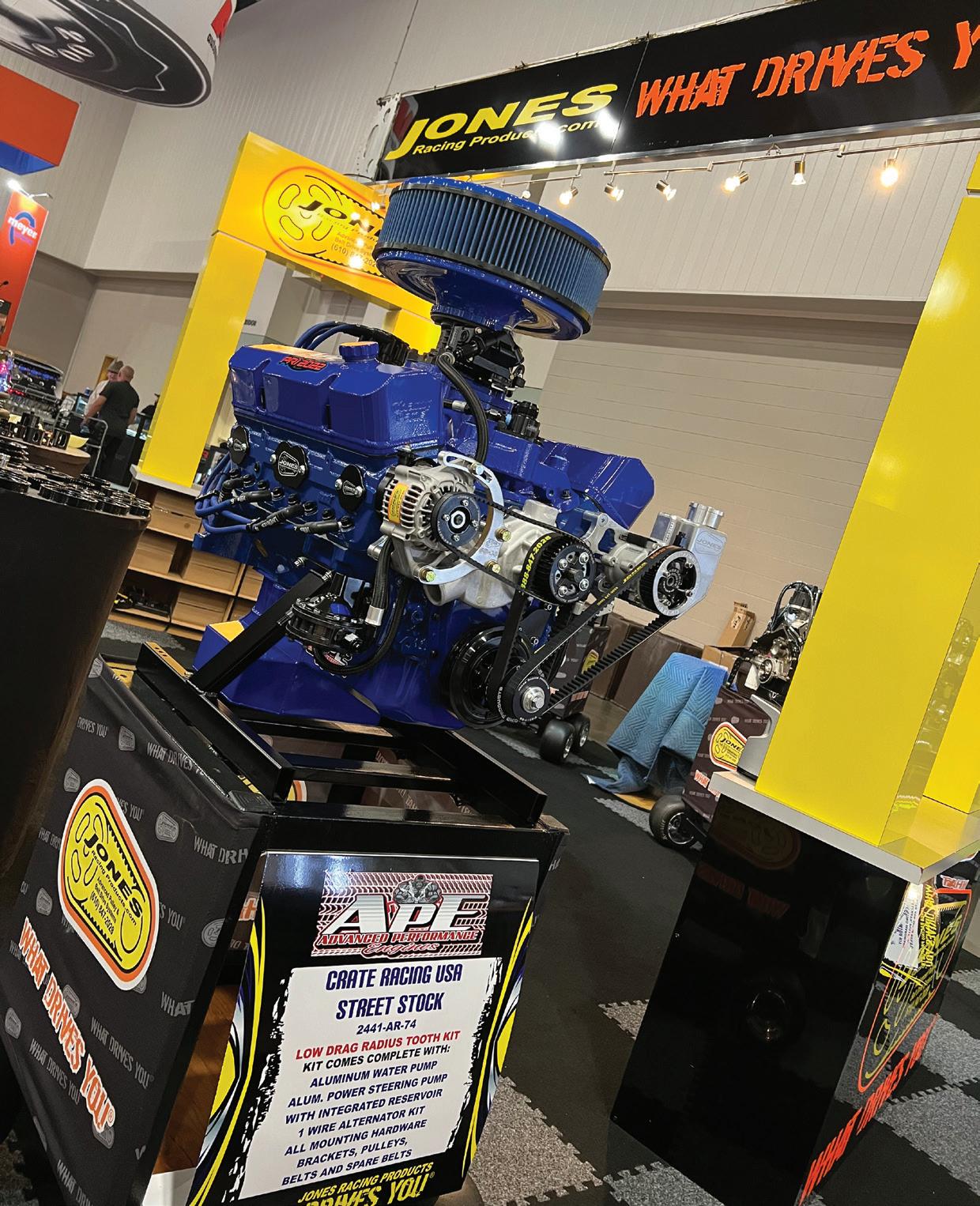
of becoming a prosperous engine builder, and Brandon and Kevin understand this more than most.
“My background as a driver impacts a lot of our decisions,” Brandon said. He was a highly competitive and successful racer for years before injuries forced him to make the decision to hang up the helmet and pivot to focusing on the engine building business. “It certainly wasn’t an easy decision to make. But I’m thankful that I got a chance to chase my dreams and make some great memories. Through it all my dad was there with me. Now we get to work together and help other people chase their dreams and make memories. All in all, I’m a pretty
lucky guy.”
Understanding what it takes to be a success behind the wheel has helped Hightower create engines that are simple for his customers.
“We decided to create one package that works. Sometimes simple is better,” Hightower said. “And as the business has changed in the last few years, where getting parts and components is more and more difficult, we’ve benefited from having a simpler approach to engine building. We have to make sure we have enough inventory so engines keep moving out the door. It would be impossible if we didn’t take this approach and if we didn’t have such great suppliers like Jones

62 DIRT EMPIRE MAGAZINE • ISSUE 15 - APRIL/MAY - 2023
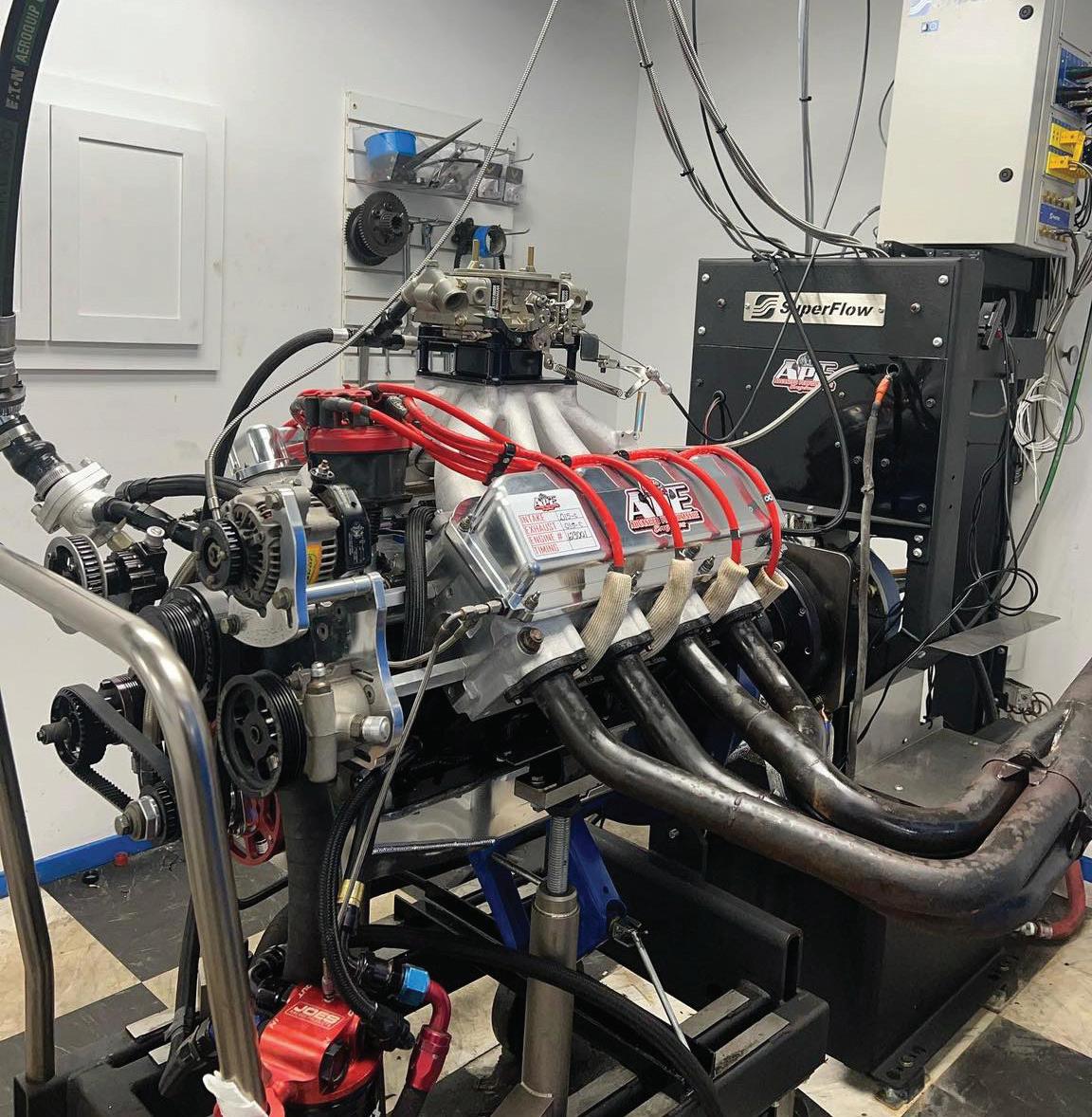
Racing Products among others.”
As APE has become more and more successful and word is getting out, they’ve worked to keep enough in stock to be able to turn out motors quickly and efficiently.
“When you’re working on over 170 engines a year, you have to work efficiently,” Hightower said. “And you can’t be waiting around for a couple of months for parts to come in. So, we stock the parts that go into our engines. Right now, we have enough stock for a USRA factory stock or a USMTS mod motor ready to go. This helps us keep our customers happy.”
When it comes to working with suppliers, APE has chosen Jones Racing Products because of the quality and the customer service.
“They’ve really got it together there and they have the best product on the market,” Hightower said. “Every APE engine rolls out with Jones products on them. Even the non-racing engines. I explain to my customers that we only use the best parts and components, and they understand in the long run we’re
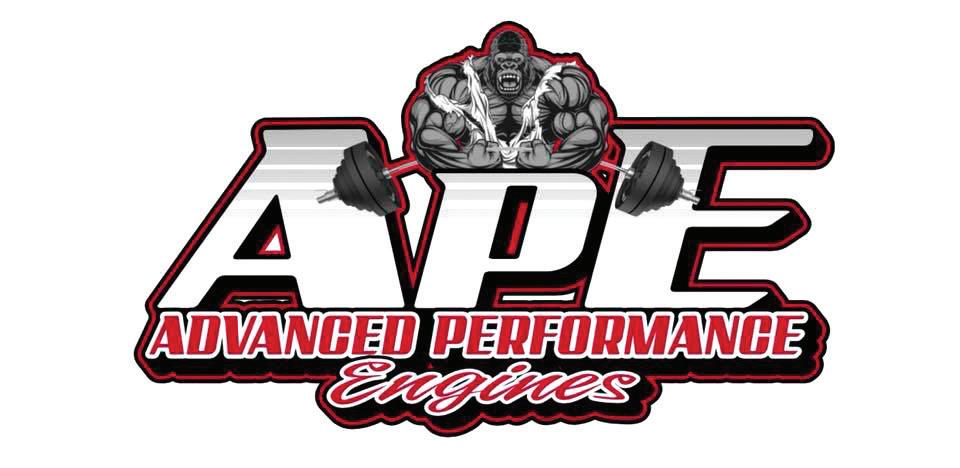
looking out for them by using the best. When it comes to Jones, I won’t install anything else.”
Despite being a commercial business for a relatively short time, APE has accumulated numerous victories and championships. Drivers like Chad Thrash and Shane Hebert continue to gather victories while trusting APE engines in their cars. But sometimes it’s not the big races or track championships that are the most rewarding.
“We had a young customer who got one of our engines and they went out and won right away in only their 8th or 9th race, and they were going up against some of the best drivers in that division,”
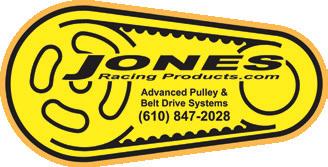
Hightower said. “It just felt really good to see a young driver take our engine and go out and win quickly. That was just great to hear.”
In regards to customer service, Brandon and Kevin Hightower stand behind their products and let their customers know they are always available to help.
“They get my phone number and I always either pick up or call right back,” Hightower said. “I let them know, when it’s race season, I’m up until like three or four in the morning just to make sure if anything happens at the track and they need help, I’m ready for a call to help out. When they buy one of our engines they have the confidence that we’re right here ready to back it up.”
Looking towards the future, APE will continue to produce top-level racing engines while looking for ways to improve.
“I think the next level for us will be getting in some more equipment like a new CNC machine,” Hightower said. “But for now, we’ll just keep doing what we’re doing, making winning engines.”
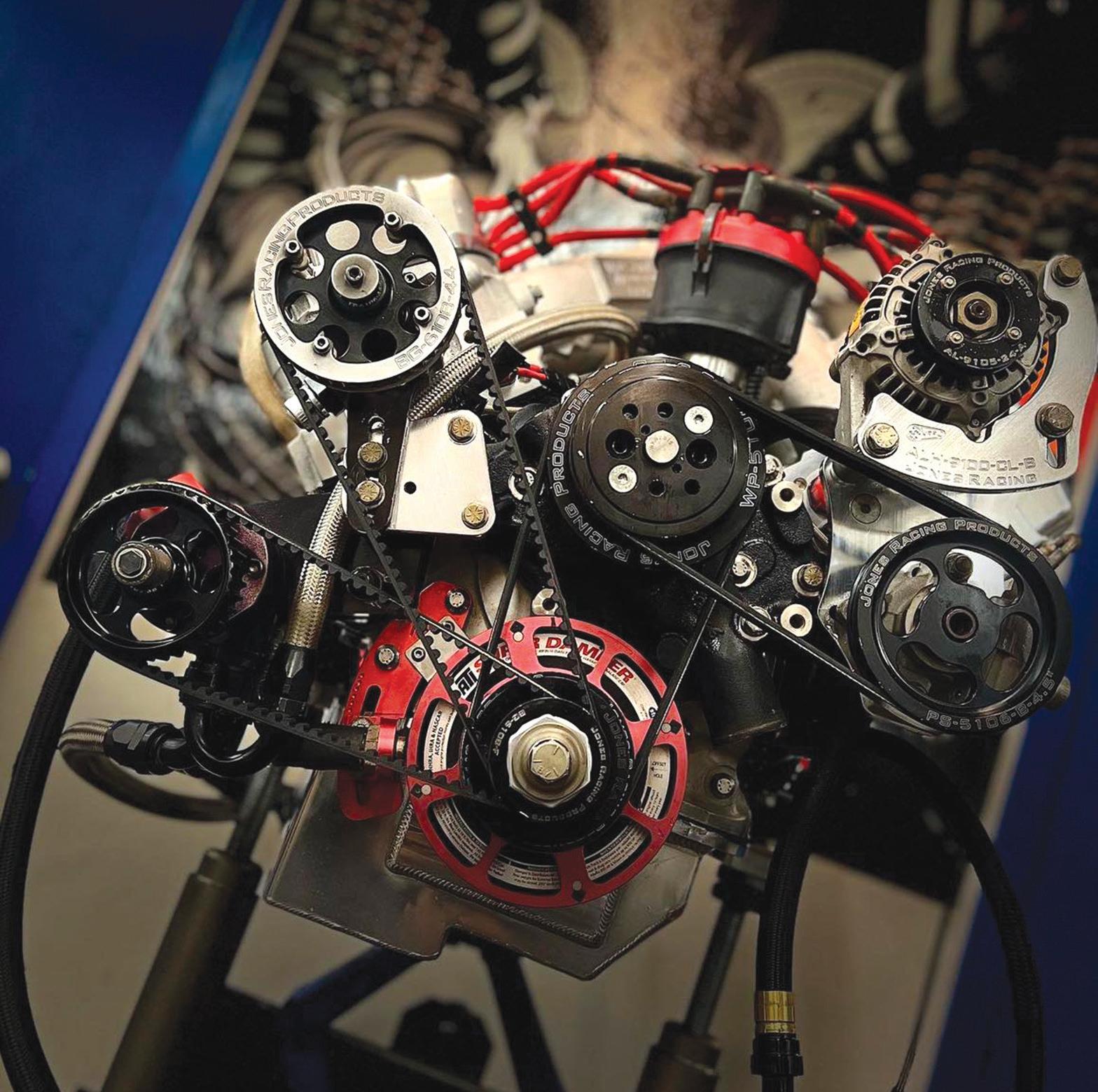

APE Racing Engines 5204 Hwy 1 N Natchitoches, LA 71457 318-794-3898
brandonhightowerracing@yahoo.com
Facebook Keyword Search: APE Engines DIRT EMPIRE MAGAZINE • ISSUE 15 - APRIL/MAY - 2023 63
Photos provided by APE engines.
review in PICTURES GEORGIA FLORIDA SPEEDWEEKS
GOLDEN ISLES SPEEDWAY • BUBBA RACEWAY PARK
ALL-TECH RACEWAY • EAST BAY RACEWAY PARK VOLUSIA SPEEDWAY


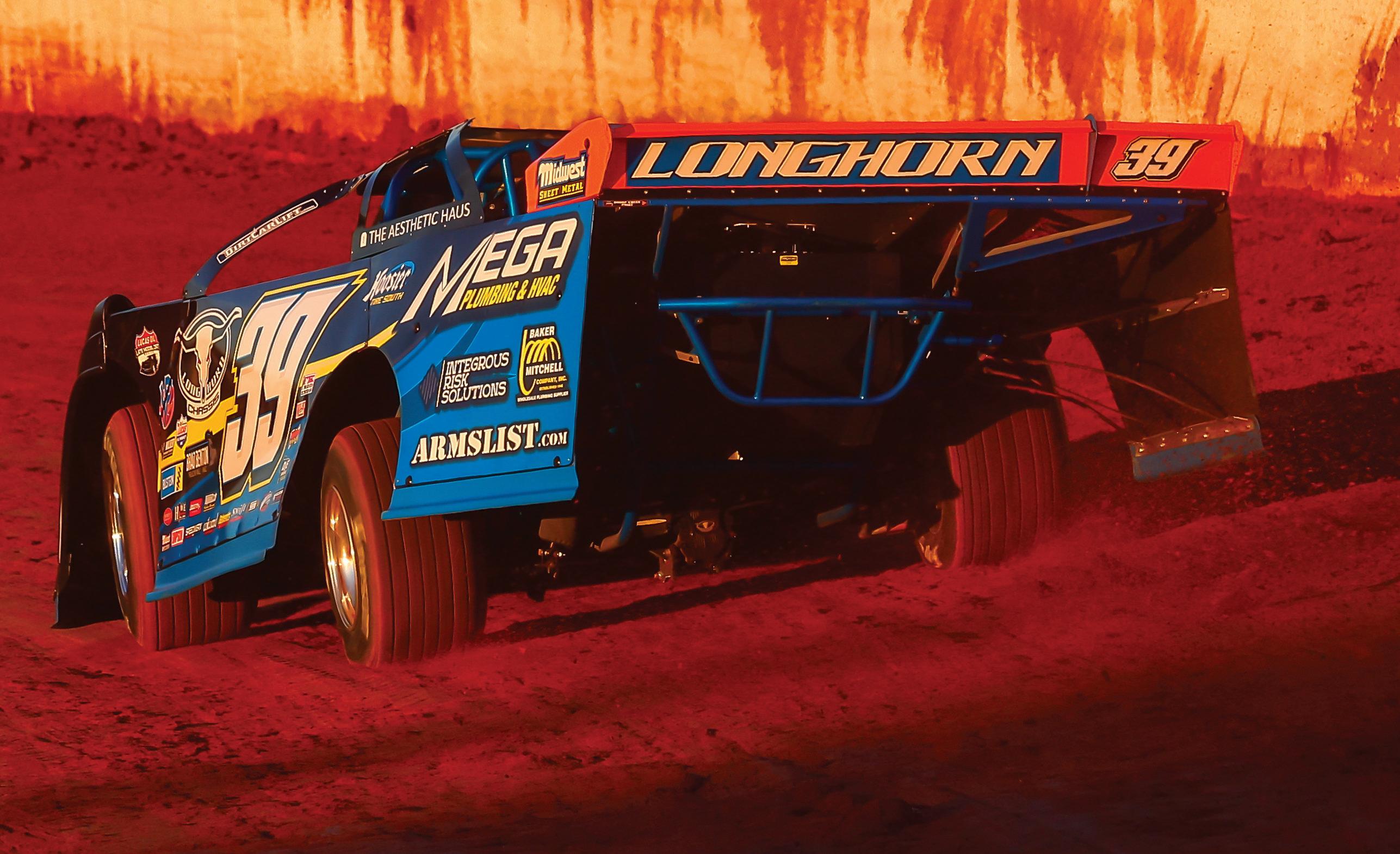
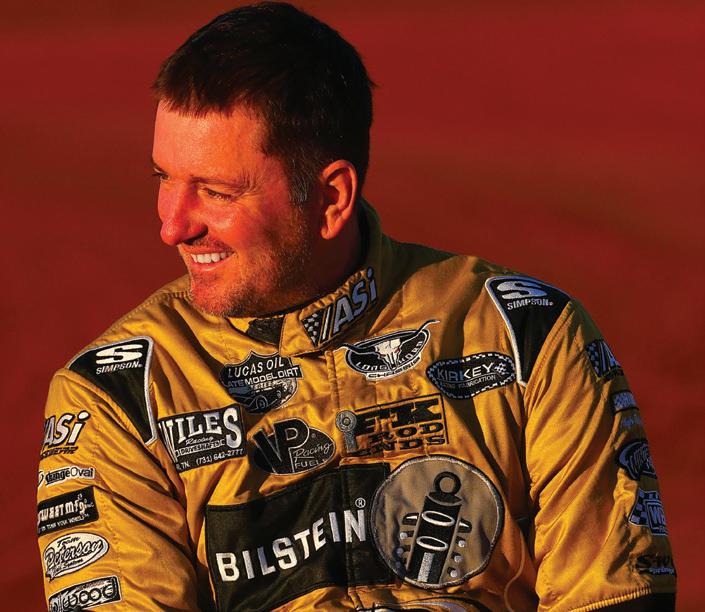 Brandon Overton started his 2023 campaign with a victory at the Lucas Oil Super Bowl of Racing at Golden Isles Speedway in Waynesville, Georgia.
Tim McCreadie seems to always put on a good show at Golden Isles Speedway. He came up just short of taking the 2023 Super Bowl of Racing title, finishing second behind Overton.
Photo: Josh James Photos: Josh James
Brandon Overton started his 2023 campaign with a victory at the Lucas Oil Super Bowl of Racing at Golden Isles Speedway in Waynesville, Georgia.
Tim McCreadie seems to always put on a good show at Golden Isles Speedway. He came up just short of taking the 2023 Super Bowl of Racing title, finishing second behind Overton.
Photo: Josh James Photos: Josh James
64 DIRT EMPIRE MAGAZINE • ISSUE 15 - APRIL/MAY - 2023
The pits were crowded with Top Gun sprints in late January at East Bay Raceway to kick off Speedweeks. East Bay has a message for fans on the wall as they start what could be the final season at the Gibsonton oval.
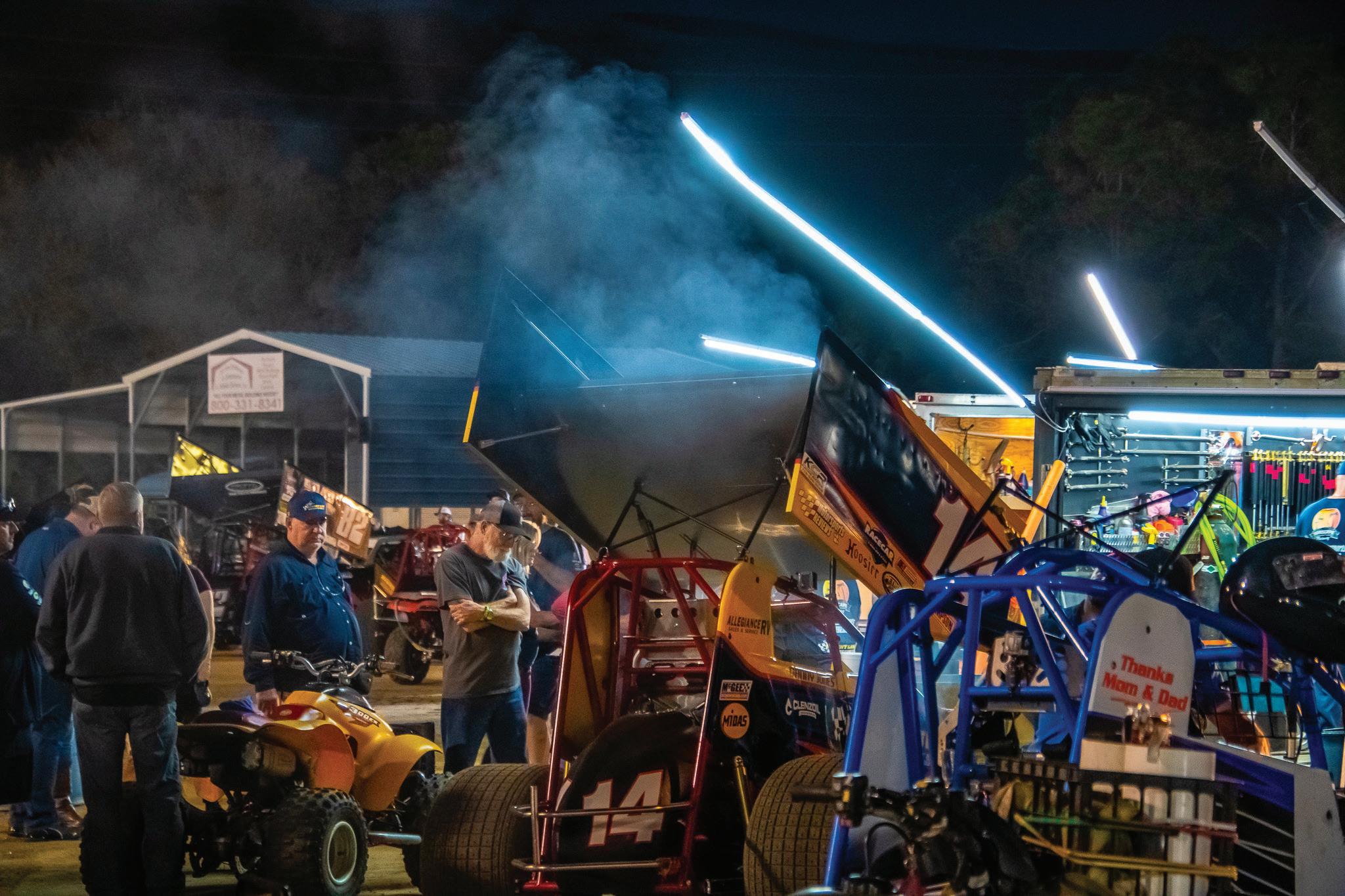
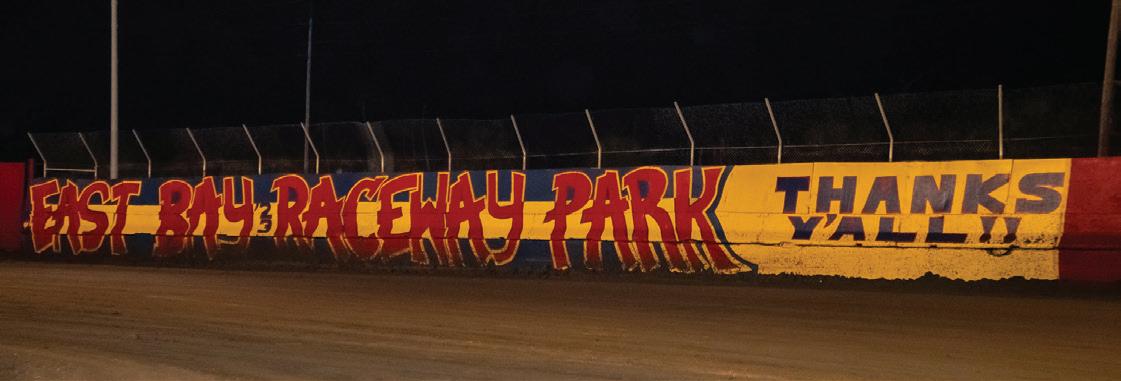
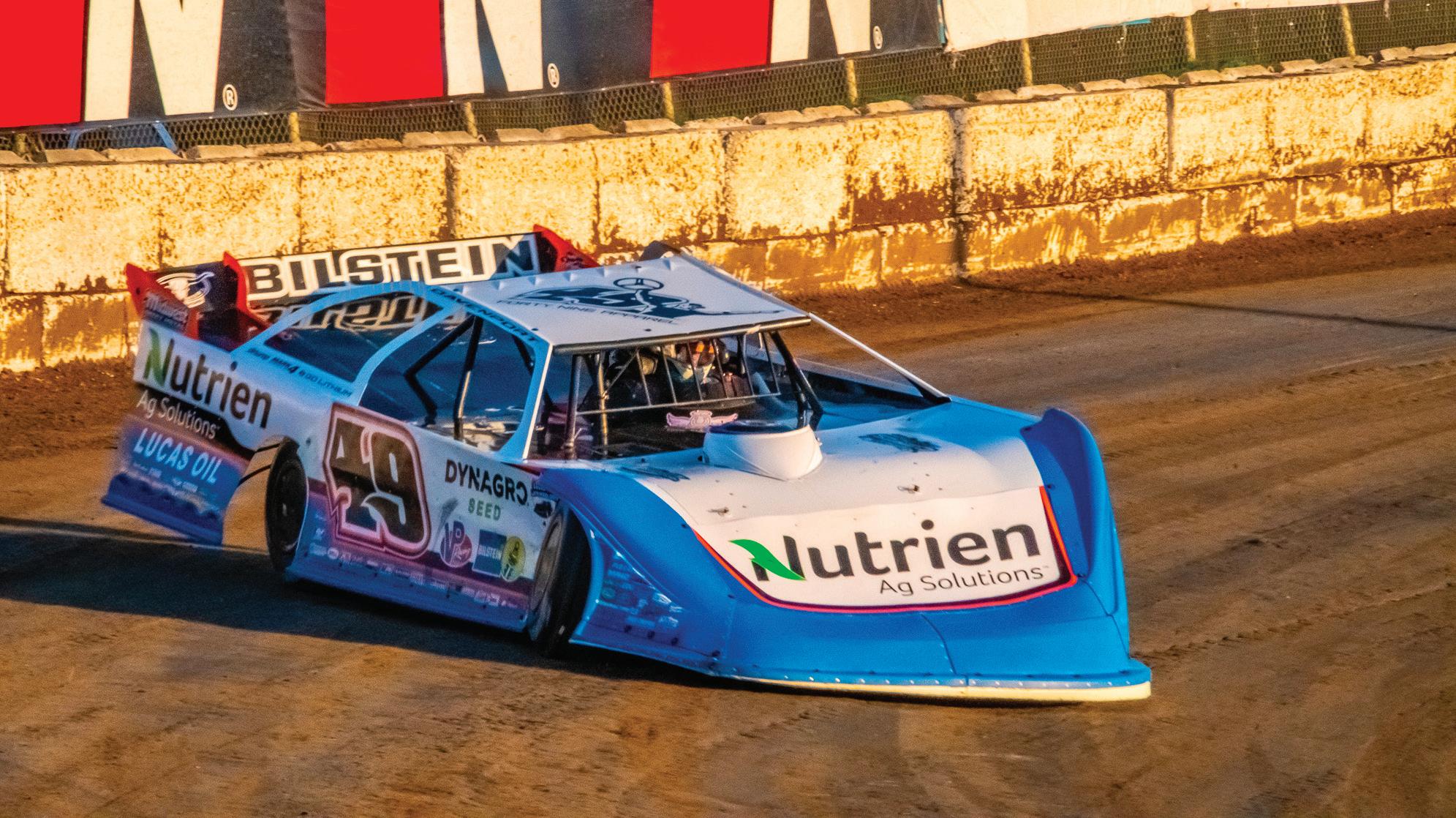
 Jonathan Davenport was able to keep Ashton Winger (not pictured)behind him in second place despite a late race caution that took away Davenport’s big lead at Bubba Raceway Park. Davenport crossed the finishline in first place and collected his $10,000 prize.
Ricky Thornton Jr. was able to keep Tim McCreadie in the rearview to take the victory at All-Tech Raceway.
Photo: Matt Butcosk
Photo: Matt Butcosk
Photo: Matt Butcosk
Photo: Mike Ruefer
Jonathan Davenport was able to keep Ashton Winger (not pictured)behind him in second place despite a late race caution that took away Davenport’s big lead at Bubba Raceway Park. Davenport crossed the finishline in first place and collected his $10,000 prize.
Ricky Thornton Jr. was able to keep Tim McCreadie in the rearview to take the victory at All-Tech Raceway.
Photo: Matt Butcosk
Photo: Matt Butcosk
Photo: Matt Butcosk
Photo: Mike Ruefer
DIRT EMPIRE MAGAZINE • ISSUE 15 - APRIL/MAY - 2023 65
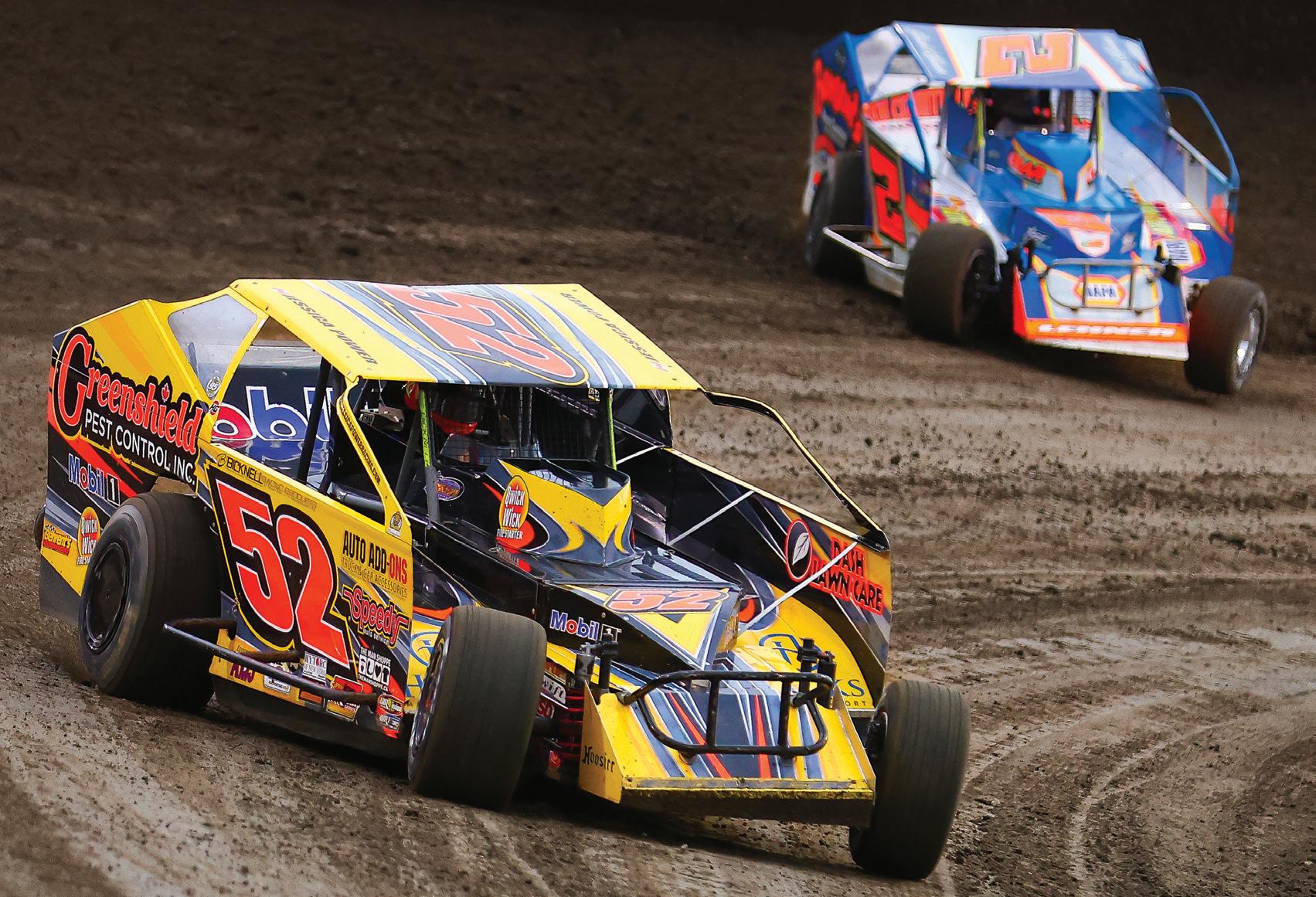
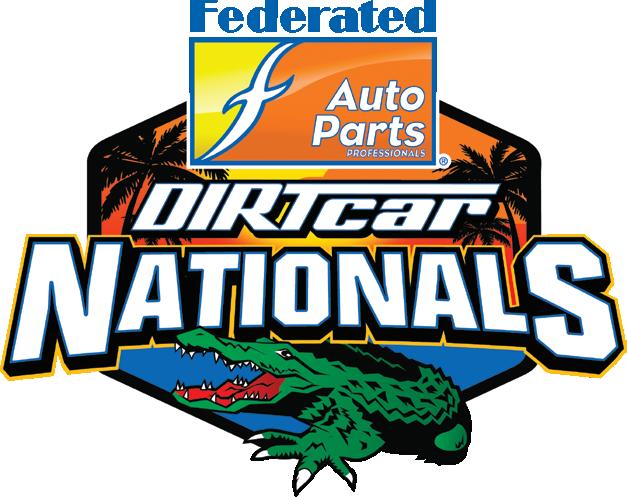
The allure of going home with a golden gator trophy brought drivers in to Volusia Speedway from all over, including Jessica Power from Kingston, Ontario Canada. Jessica traditionally competes in the DIRTcar Sportsman Modified division in Northern New York and Canada, but she gave it her all in a big-block, barely missing the feature in qualifying races.


We had the privilege of sorting through hundreds of photos submitted by our photographers. Be sure to check out the photographers’ list at the end of this issue and visit their web pages for even more photos. See something you love? Consider purchasing a photo to help support them in continuing to provide such amazing art!
Brandon Sheppard returned to the B5 for 2023. He finished 6th in the main feature on the final night of racing at Volusia.
Photo: Josh James
Photo: Josh James
Photo: Josh James
66 DIRT EMPIRE MAGAZINE • ISSUE 15 - APRIL/MAY - 2023

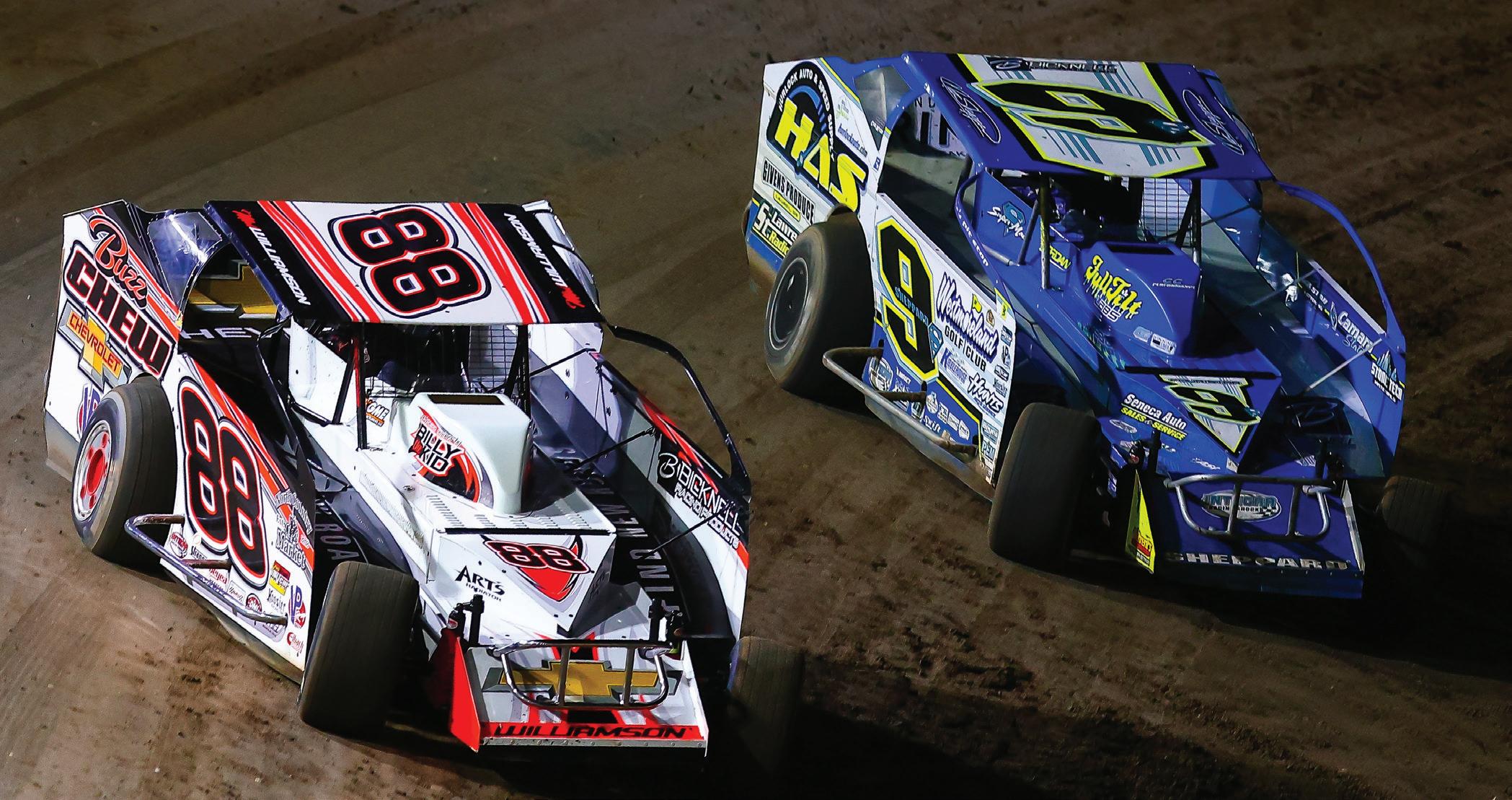
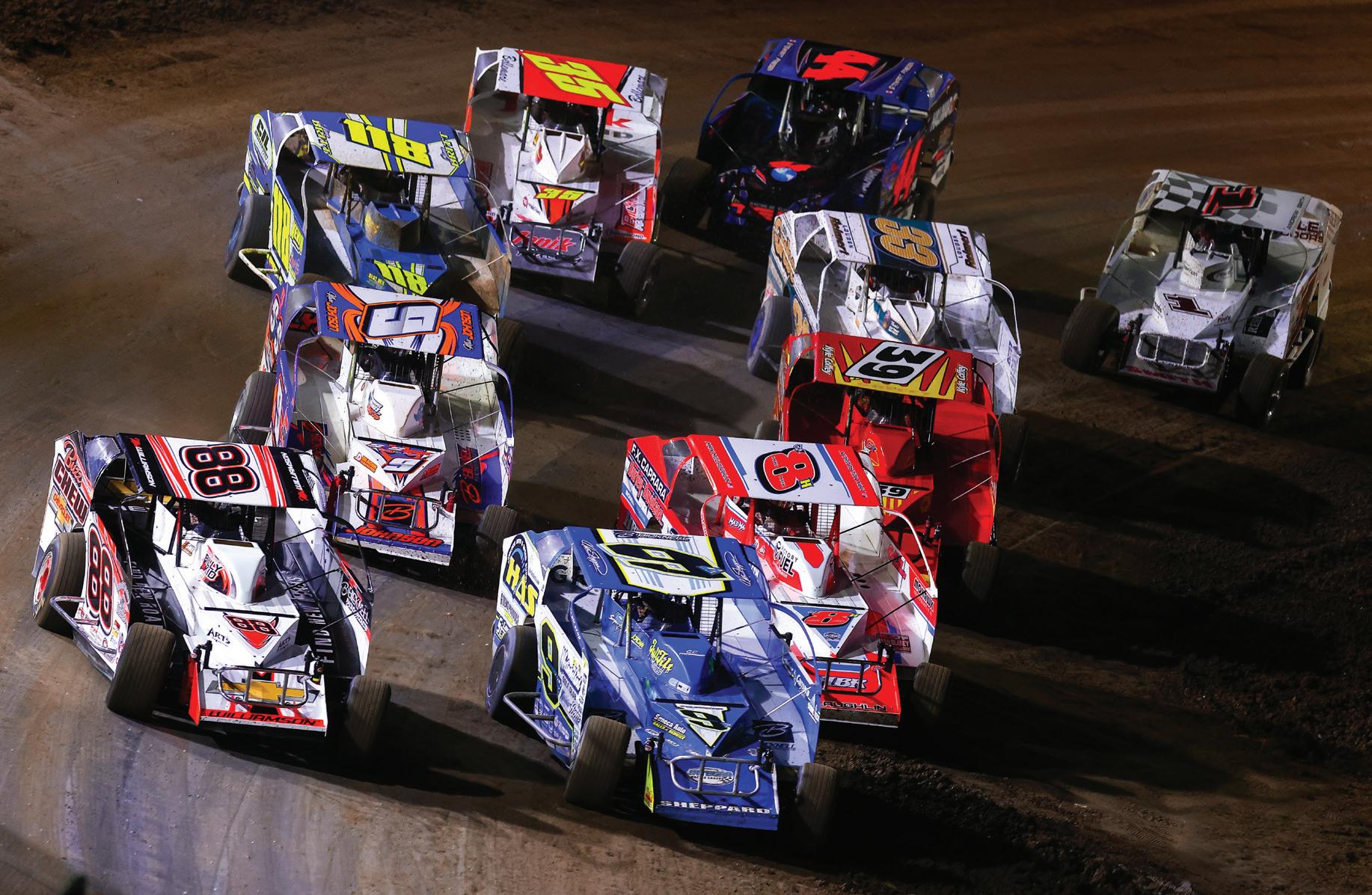
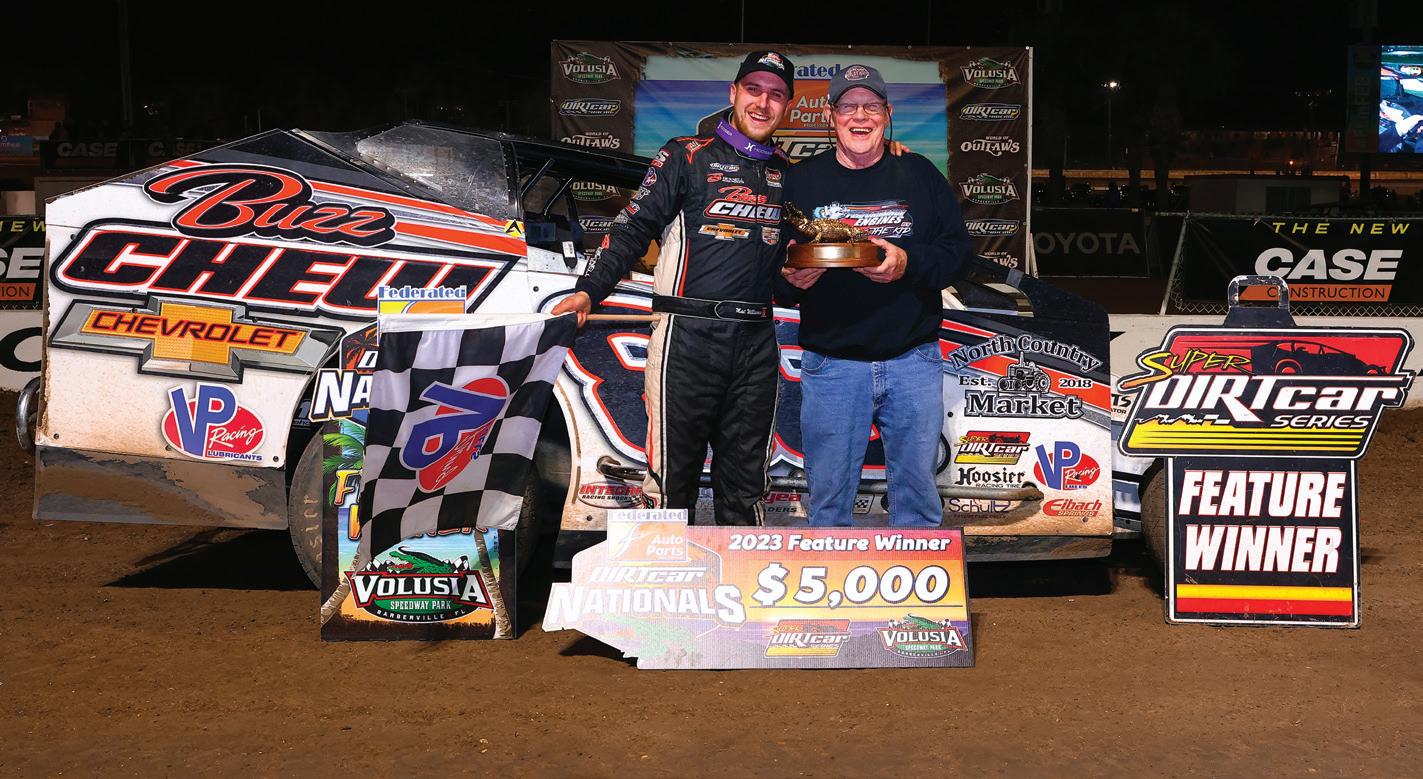

It was a crowded field filled to the brim with talented drivers, but in the end, Mat Williamson in his Buzz Chew Chevrolet 88 took home the golden gator as the Super DIRTcar Feature winner on the final night of racing.
Photo: Josh James
Matt Sheppard (9) wasn’t able to keep up with Mat Williamson (88) as Williamson went on to victory lane and Sheppard had to settle for 6th in the Super DIRTcar series finale at Volusia Speedway.
68 DIRT EMPIRE MAGAZINE • ISSUE 15 - APRIL/MAY - 2023
Photos: Josh James
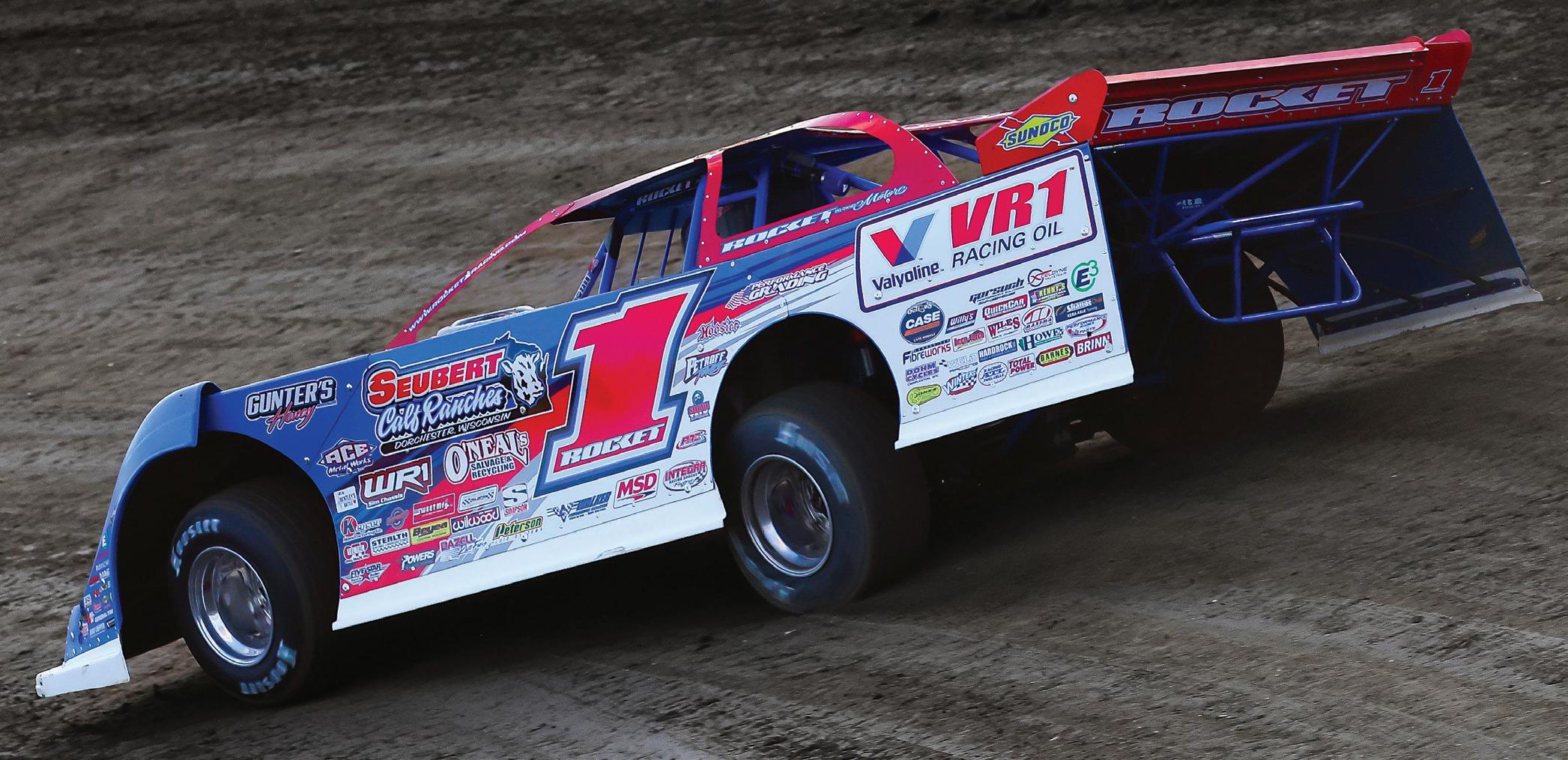
Hudson O’Neal piloted the Rocket 1 to victory lane on the in the World of Outlaws Case Late Model feature at Volusia Speedway. An exciting start to the 2023 season.
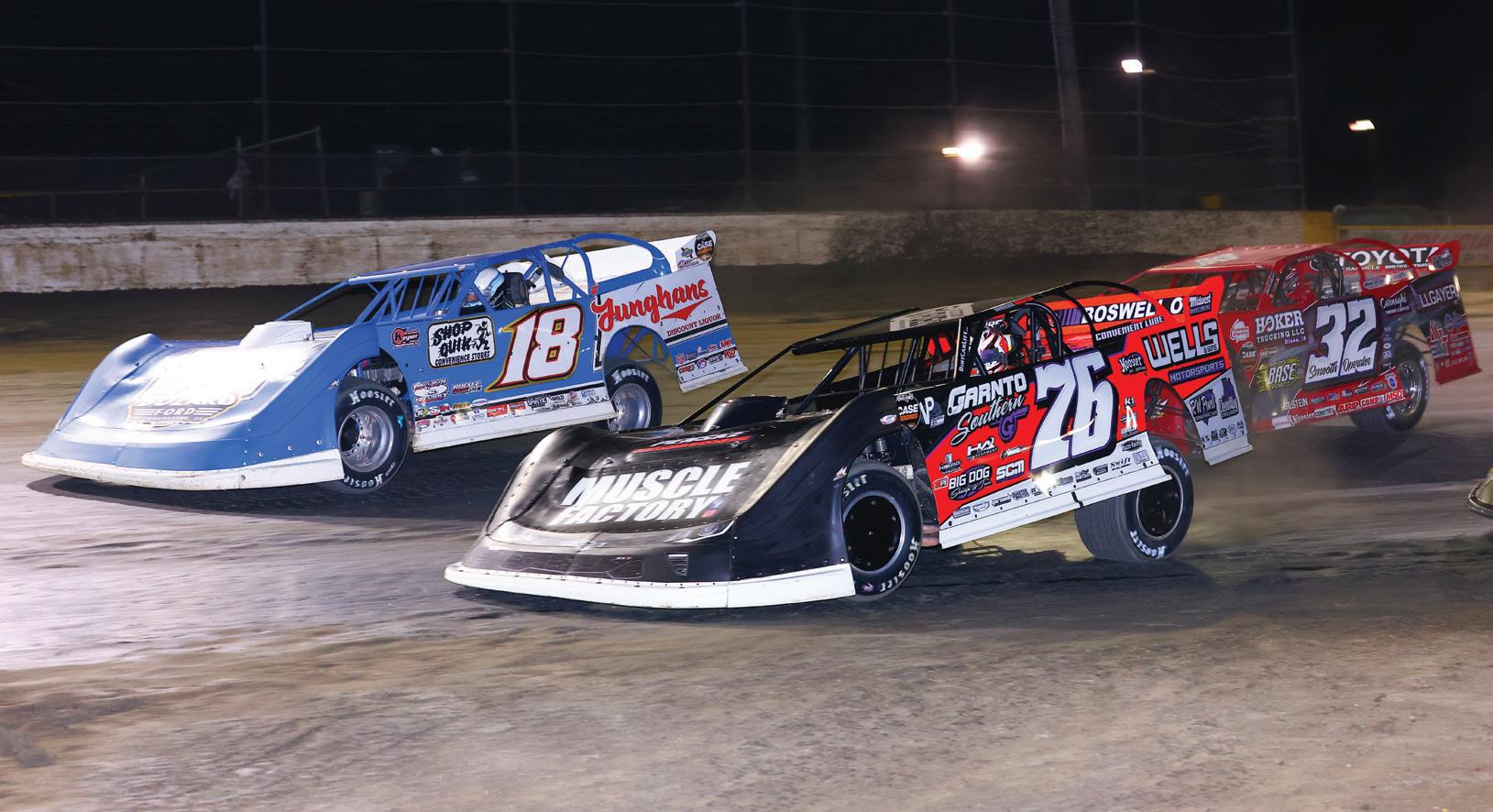
Brandon Overton looked to have the DIRTcar Nationals feature all wrapped up, taking the white flag for the final lap. But Smooth Operator, Bobby Pierce made an incredible final lap pass to steal away the victory.
 Photo: Josh James
Photo: Josh James
Photo: Josh James
Photo: Josh James
DIRT EMPIRE MAGAZINE • ISSUE 15 - APRIL/MAY - 2023 69
Photo: Josh James
dirt
By: Bob Mays
Shorty Templeman started his racing career on the northwest midget circuits in 1945. After a short apprenticeship, he won five Washington State titles and three Oregon State championships. Jumping into national competition, Templeman became the first three-time USAC Midget champion, winning titles from 1956-1958. His biggest victory (or should we say victories) during that span came on May 29, 1956, when he won three features in one day at the 16th Street Speedway in Indianapolis. Lest you think this was some kind of watered down achievement, no less than 54 midgets
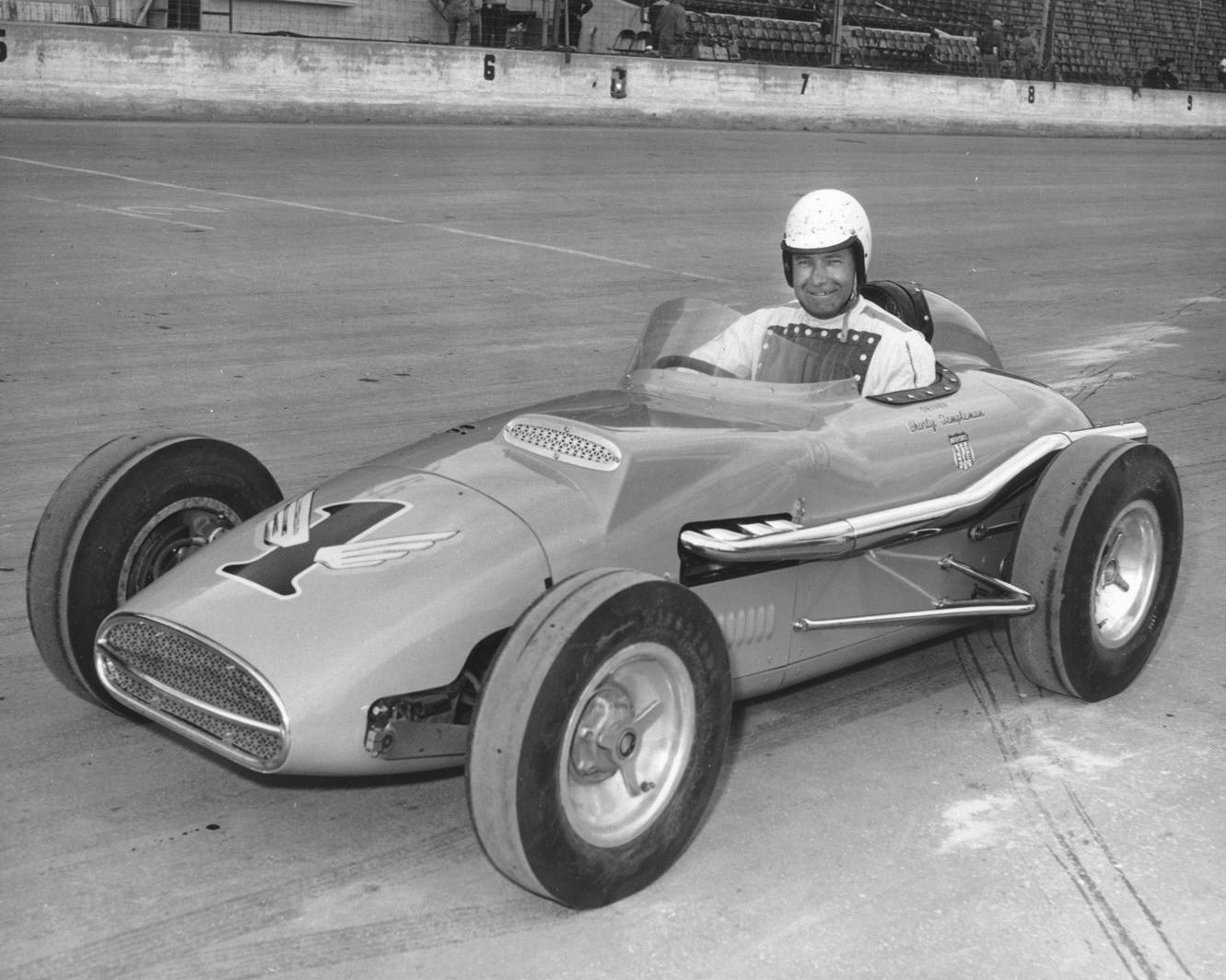
took part in the program with such stars as Don Branson, Jimmy Davies, Rex Easton, Gene Force and A.J. Foyt. A packed house of 15,000 spectators helped celebrate Templeman’s victories in the pair of opening 100-lap victories along with his win in the 150-lap finale. People close to Shorty warned him to be more careful, saying, “you are going to
kill yourself.” Templeman’s reply was, “I’m too tough to get killed in a midget.” But on August 23, 1962, during the running of a USAC Midget race in Marion, Ohio, Shorty was caught up in a crash which resulted in fatal injuries to himself and Jim Hemmings. (Armin Krueger Photo)

“I have to spend so much time preparing the midget. I do all of my own work and I’m not much of a mechanic.” You can choose to believe that if you want, but the fact is Sleepy Tripp scored four wins in his first nine starts en route to a second straight double-digit win season in 1976. The competition shutters to think what the kid would be capable of with a decent wrench on staff.
(Leroy Byers photo)
CHRONICLES MIDGET ICONS
70 DIRT EMPIRE MAGAZINE • ISSUE 15 - APRIL/MAY - 2023
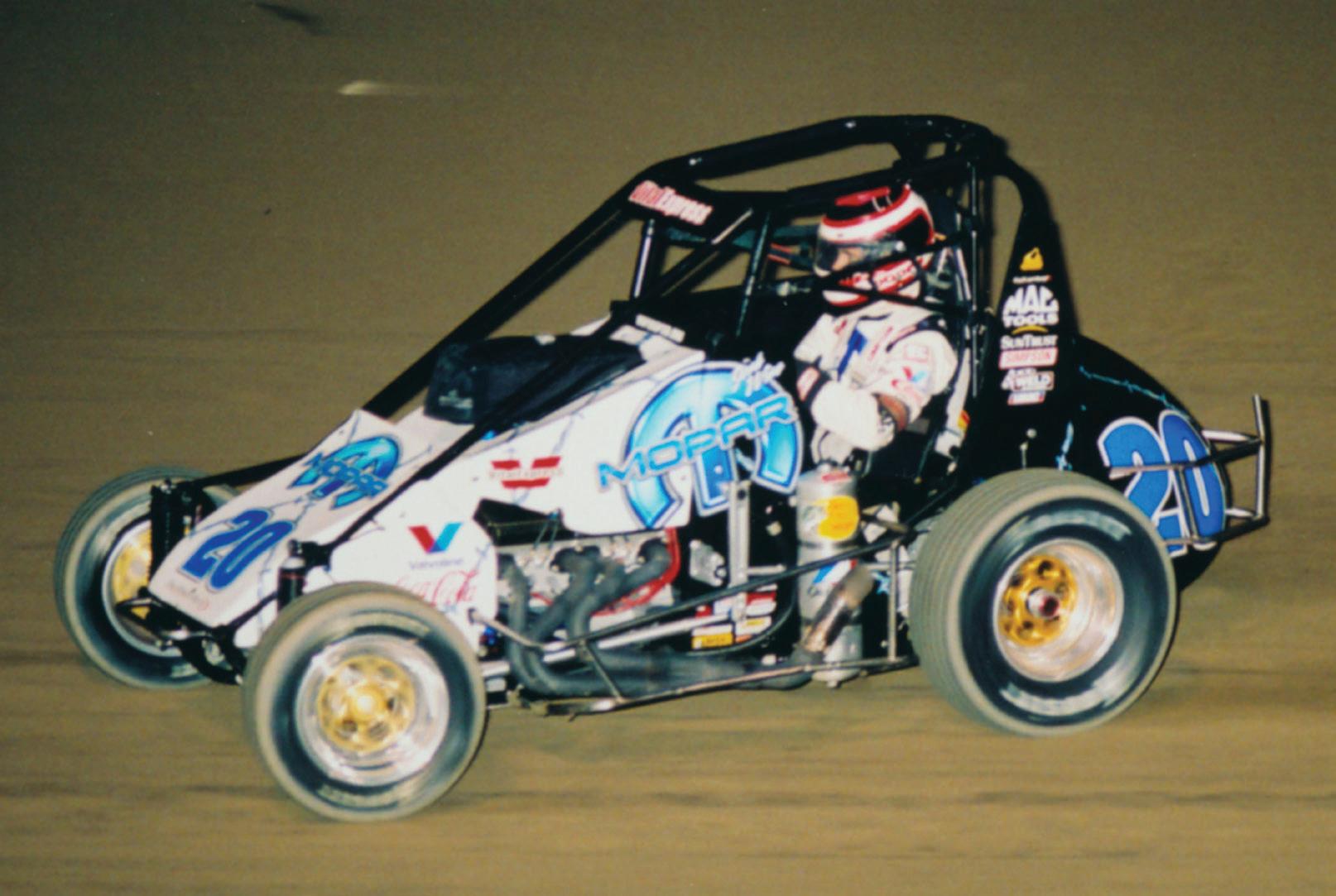
dirt (Beaver Dam and Granite City), short paved tracks (Toledo) and big paved tracks (Milwaukee) during the 2005 season. With such a stout resume, it was impossible to keep him off the top step of the podium at the end of the USAC season. (Bob Mays
amassed 81 career USAC National wins, 38 in a midget. He was a threetime Indiana Midget Week champion; he was the best at the Belleville Midget Nationals three times, twice a Turkey Night Grand Prix winner and added victories in the Hut Hundred and 4-Crown Nationals to his resume. His death led to the Driven2SaveLives program focused on organ donation. In this alone, his legacy, already secured, was polished to a brighter hue. He was gone at just 27 years old but will forever be recognized as a USAC legend, and unquestionably, one of the most beloved drivers in the club’s history.
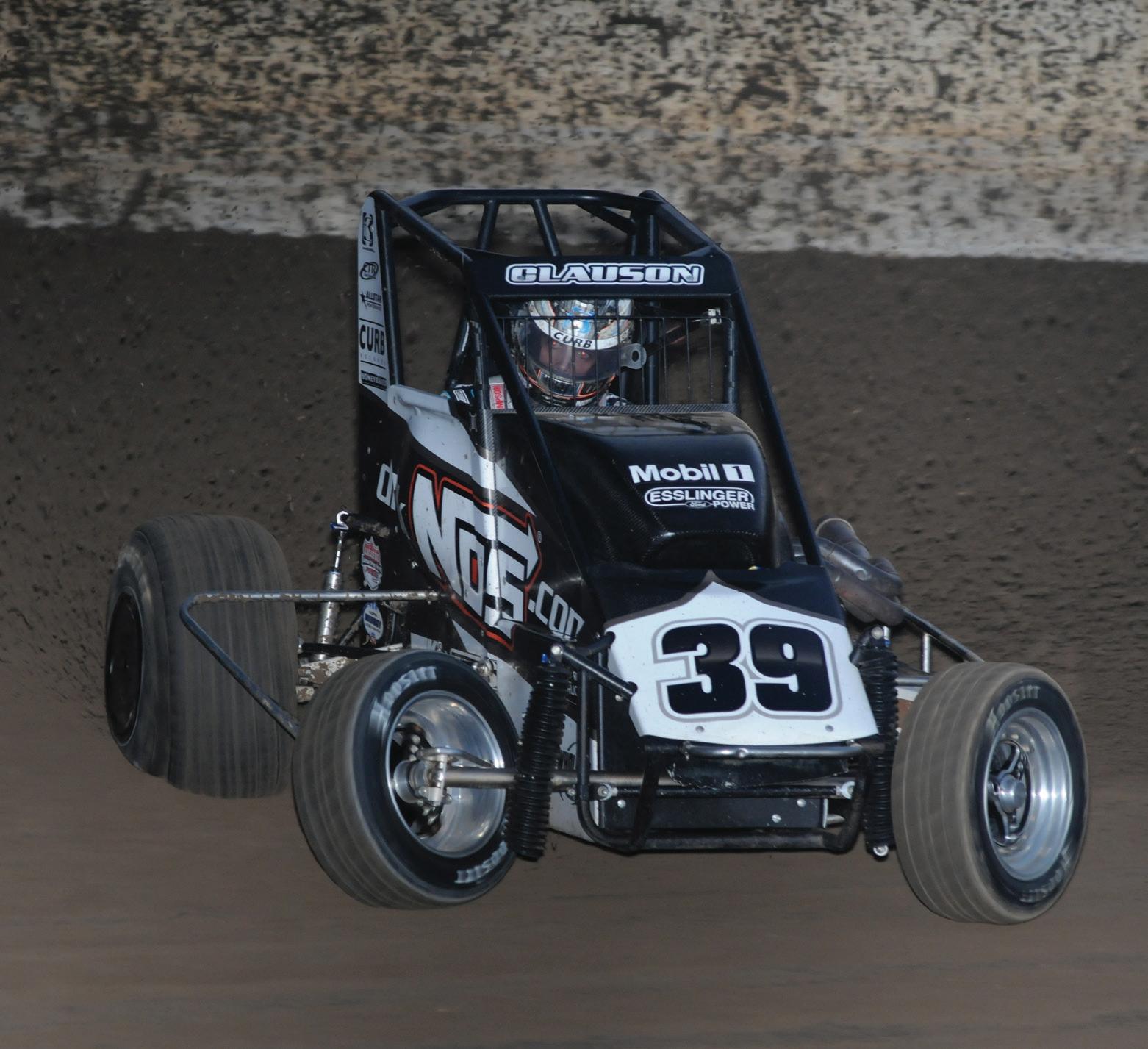 Josh Wise (Tony Stewart 20) scored on
photo)
Josh Wise (Tony Stewart 20) scored on
photo)
DIRT EMPIRE MAGAZINE • ISSUE 15 - APRIL/MAY - 2023 71
Bryan Clauson (Tucker/ Clauson/Curb/Agajanian 39)
(Bob Mays photo)
support CLASS LEGENDS
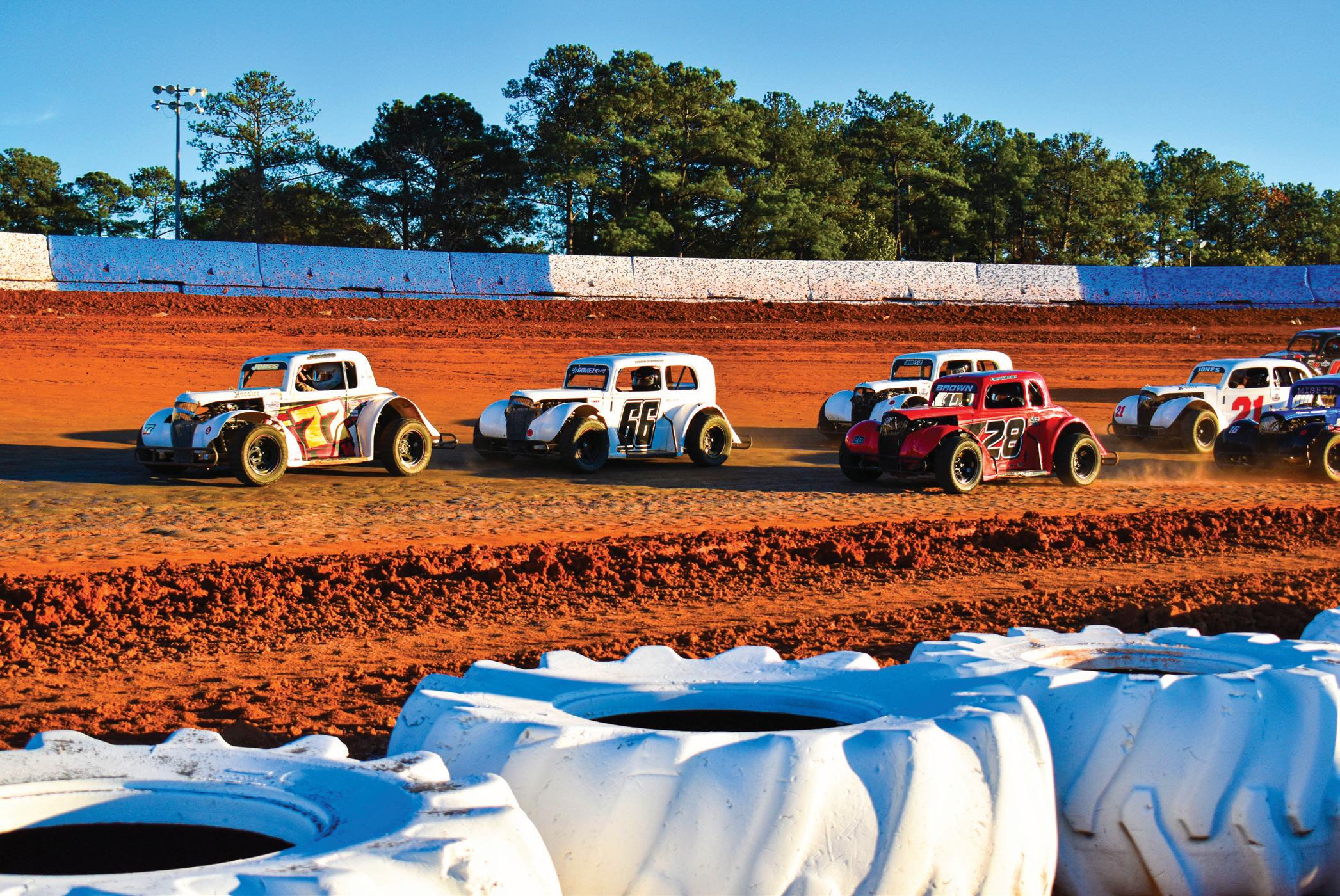
SMALL CARS, BIG STORM
THE STORY OF THE LEGENDS NATIONALS
Words by Bill Blumer Jr. Photos provided by USLCI Comms Staff
THE REMNANTS OF Hurricane Nicole were swirling overhead but it didn’t deter over 120 drivers from competing in the 2022 INEX Dirt Nationals. Teams from 17 states and even a couple of Aussies signed in for what was scheduled to be a three-day event at North Carolina’s Fayetteville Motor Speedway.
Four separate classes - Pro, Semi-Pro, Masters and Young Lions - were on the card, allowing competitors to see how they stacked up against their peers.
Most weekly Legend shows combine all classes for a race. It’s a simple matter of car count. Local points and track championships are kept as a whole, no matter your declared class within the Legend ranks.
During the season, tracks or sanctioning bodies, are required to have a certified INEX tech officials at every race. They report the race results to the national body. INEX then breaks those into their declared classes for national points. i.e. in your hometown race, if you finished third, but were the best in your class, you earn the winner’s points for the national standings. The Nationals level
the playing field, with drivers only racing within their given class.
Teams originally booked rooms in Fayetteville with the idea of being on the road after the races on Saturday. Hurricane Nicole had other ideas. Despite the efforts of the Fayetteville Motor Speedway crew, the off and on, but sometimes heavy rain, forced the cancelation of Thursday’s practice. With a keen eye to the forecast and the track, the choice was made to bump the entire program back one day. Teams then had to scramble to add a room to the weekend, or give up so they could get to work on
Monday. Apparently, there were a lot of sick calls to start the week, as very few teams left.
You couldn’t blame people if they were skeptical. For drivers with heavy clay at their home tracks, such a storm system might have made racing impossible for the upcoming weekend. Back home, after spending a day parked in the pits, many with semis and double stackers, they may have needed a tow just to escape. The sandy soil of the Carolinas and the crew of speedway GM David Mitchell, were up to the task though and Friday was used as a valuable practice day.
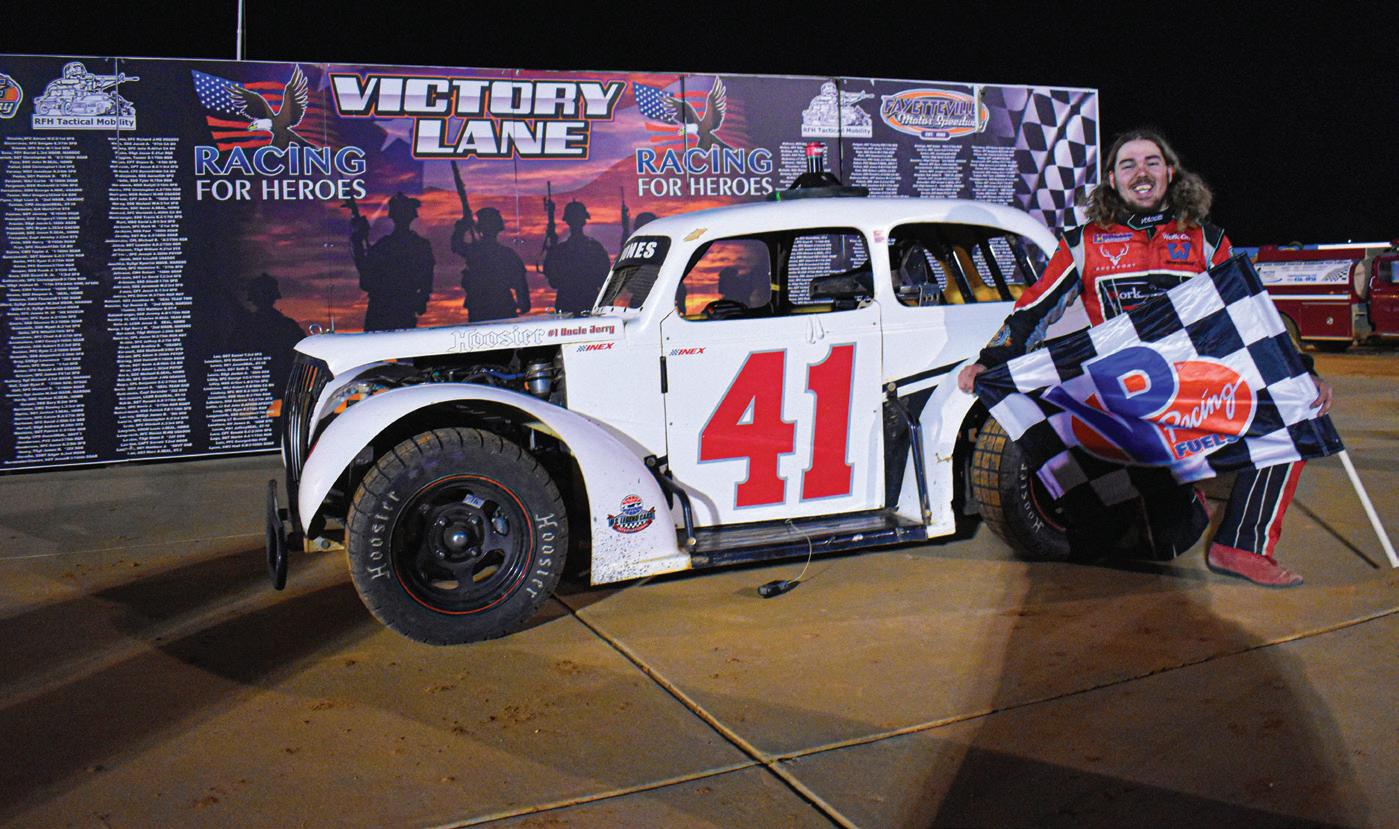
72 DIRT EMPIRE MAGAZINE • ISSUE 15 - APRIL/MAY - 2023
Wisconsin’s Parker Jones won the Semi-Pro feature from 14th spot.
Saturday was nearly a full program, with just the last race of the night, the Pro feature, being cut short due to rain. They ran their rained out feature on Sunday morning and then closed the show out after all of the other classes raced Sunday night.
The Young Lions, a class for drivers age 12 to 15, saw ten cars take the green for their feature. North Carolina’s Ryan Zima, normally a pavement pilot, took the checkers on the championship night. In the Masters class, designed for those 40 or over, Missouri driver, Justin Comer, who wasn’t a player in the title run, won the feature.
Semi-Pro, designed for drivers 16 or older with limited racing experience, was one of the most entertaining runs of the night. Wisconsin’s Parker Jones, took the win from his fourteen starting spot. In the Pros, the race was won by home state hero Jake Tretow of North Carolina.
During the season, Fayetteville Motor Speedway might draw up to 30 Legends on a given night. Their appreciation for the class was evident with special signage, fresh coats of paint and general hospitality they showed those who attended. The feeling was apparently mutual as it was announced the Nationals will be back at Fayetteville in 2023.

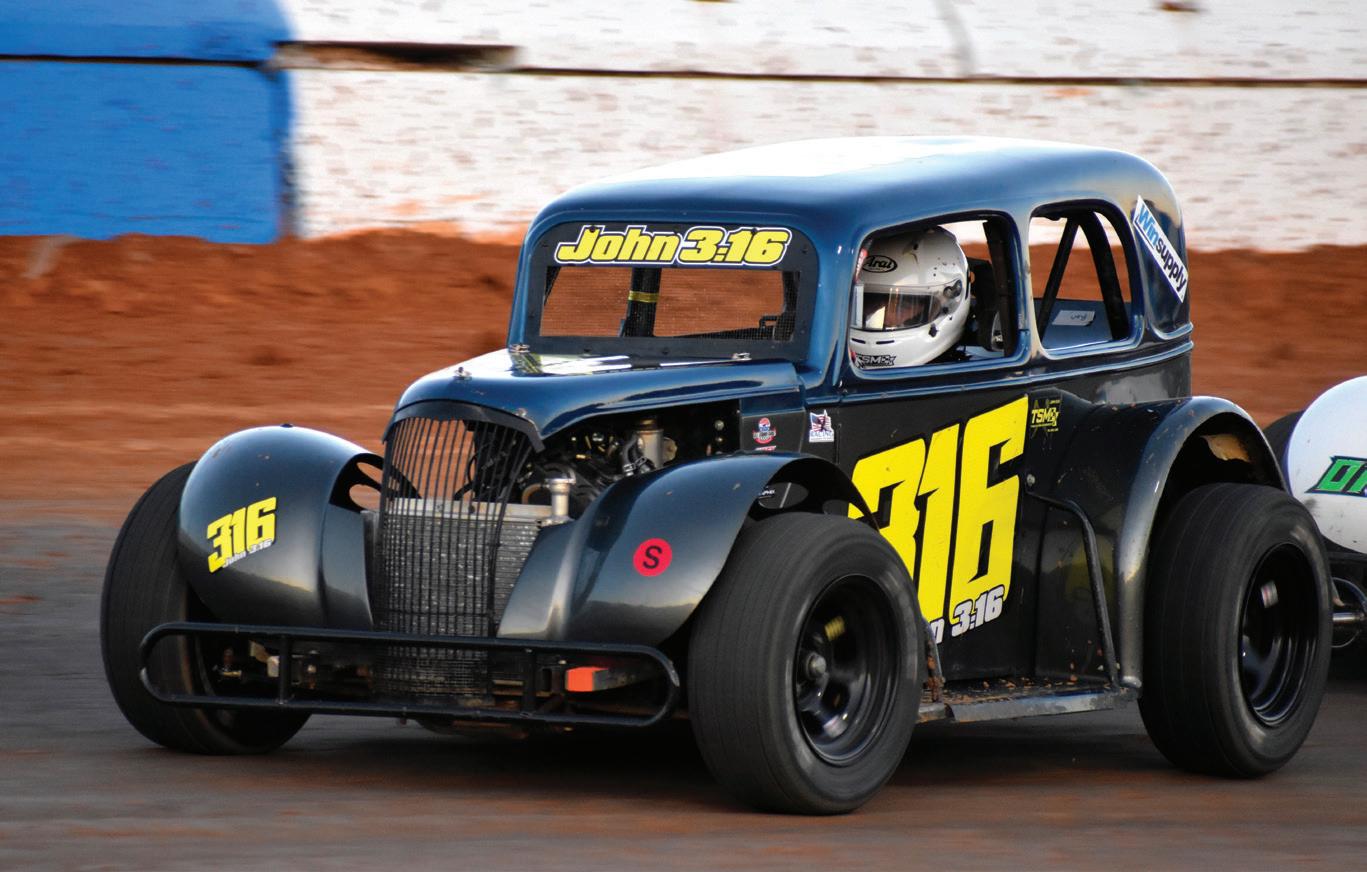
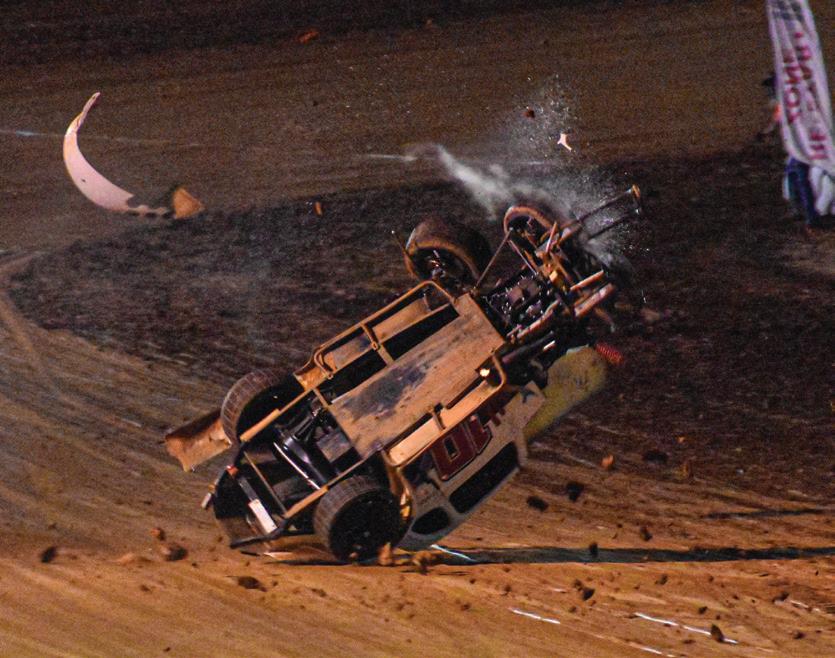
 Jake Tretow scored a popular win in his home state of North Carolina.
Jake Tretow scored a popular win in his home state of North Carolina.
DIRT EMPIRE MAGAZINE • ISSUE 15 - APRIL/MAY - 2023 73
There was plenty of on track action in between the rain showers, including Robby Holt getting up and over at one point.
shooter at LARGE TODD BOYD
MAYBE YOU’VE NOTICED, but we here at Dirt Empire Magazine love us some racing pictures. This is our opportunity to honor the great photographers of our sport who are on the road throughout the season shooting race cars and drivers and chronicalling history. They are our shooters at large. Lone gunslingers who have choosen to wield a camera as their weapon. Ride on, shooters. Ride on.
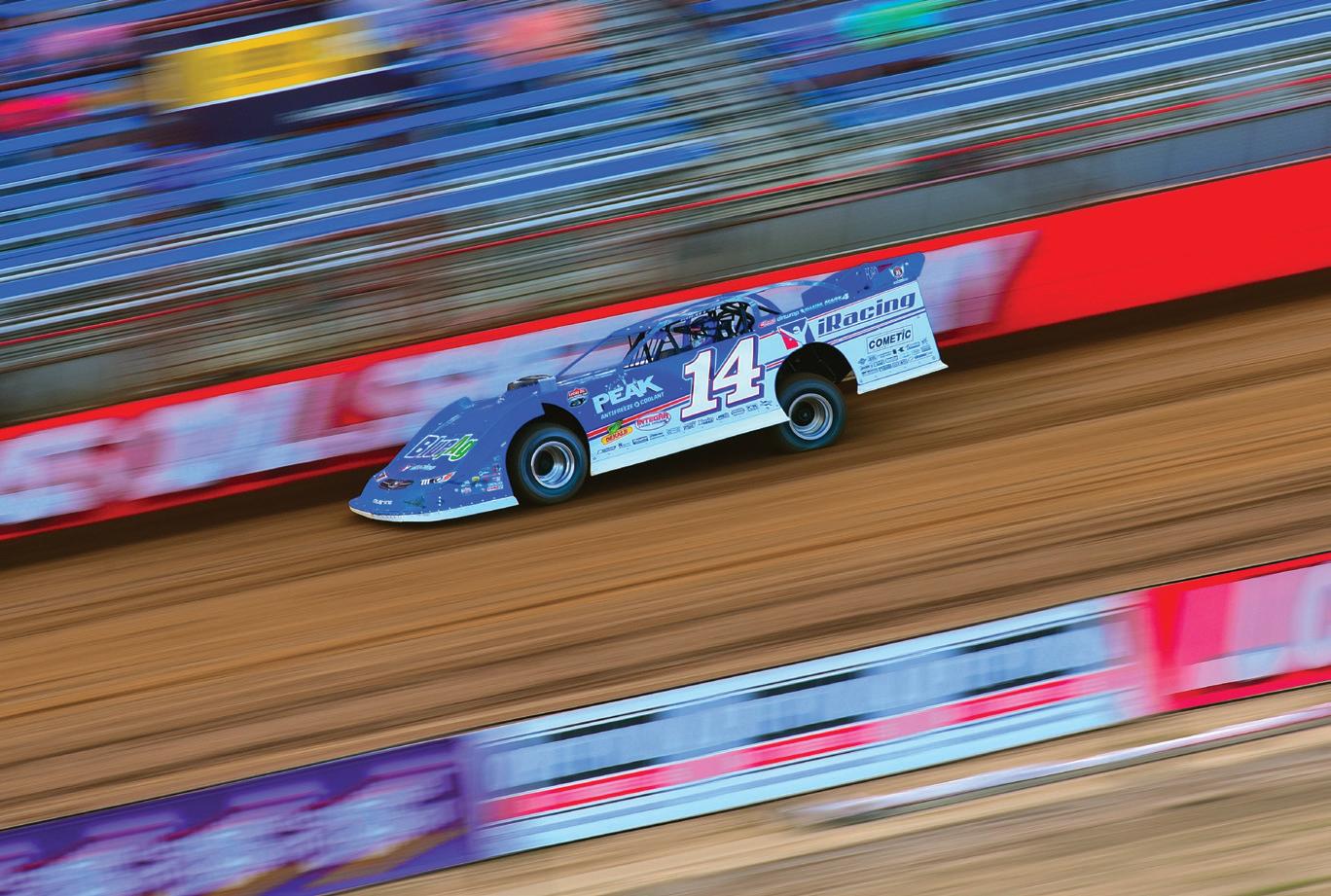
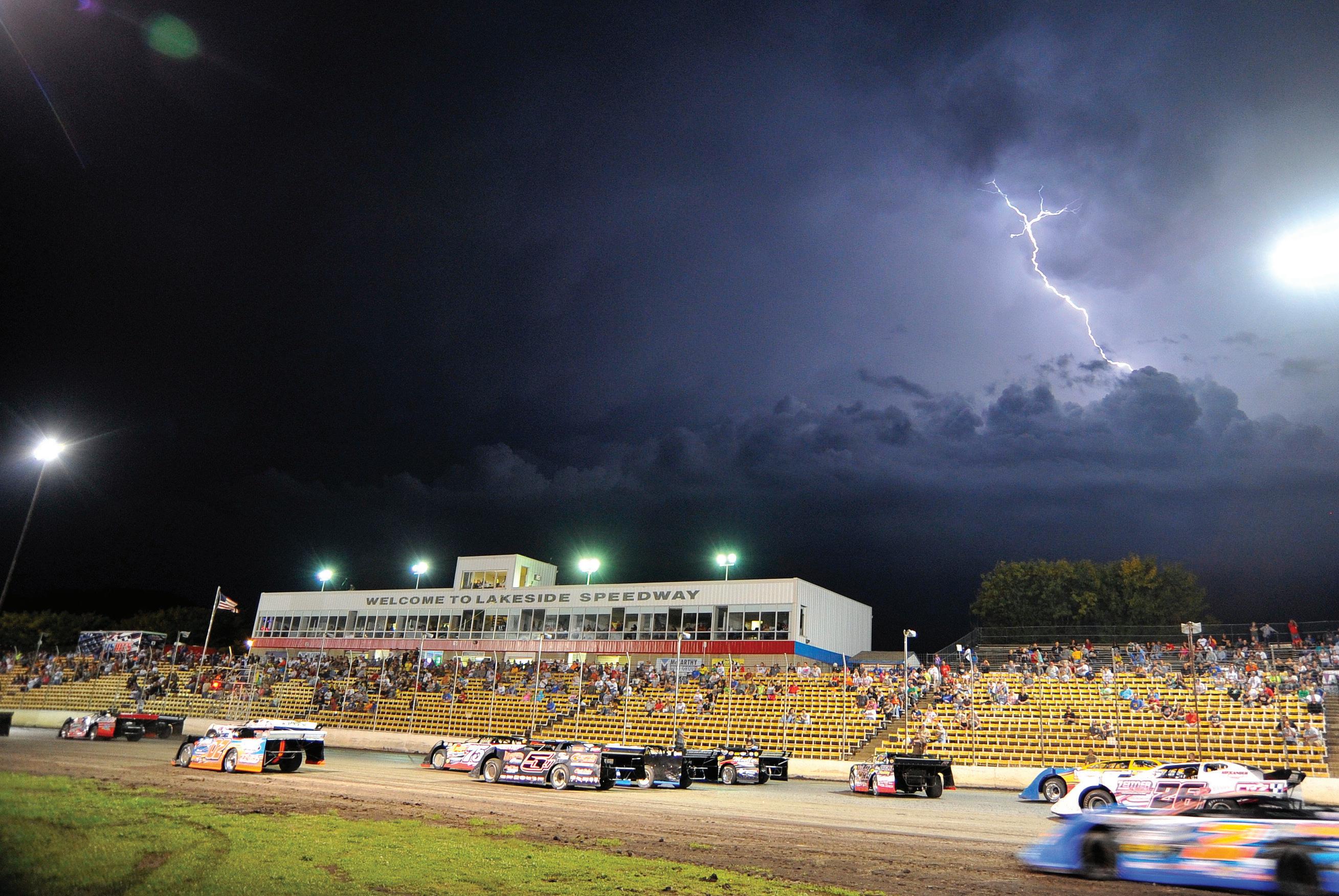
This stunningly beautiful shot shows just exactly how bad some people are addicted to racing at all costs. Boyd, the racers and the hearty fans in the stands have truly got it bad!
Josh Richards gets after it at Lucas Oil Speedway during the summer of 2019.
74 DIRT EMPIRE MAGAZINE • ISSUE 15 - APRIL/MAY - 2023
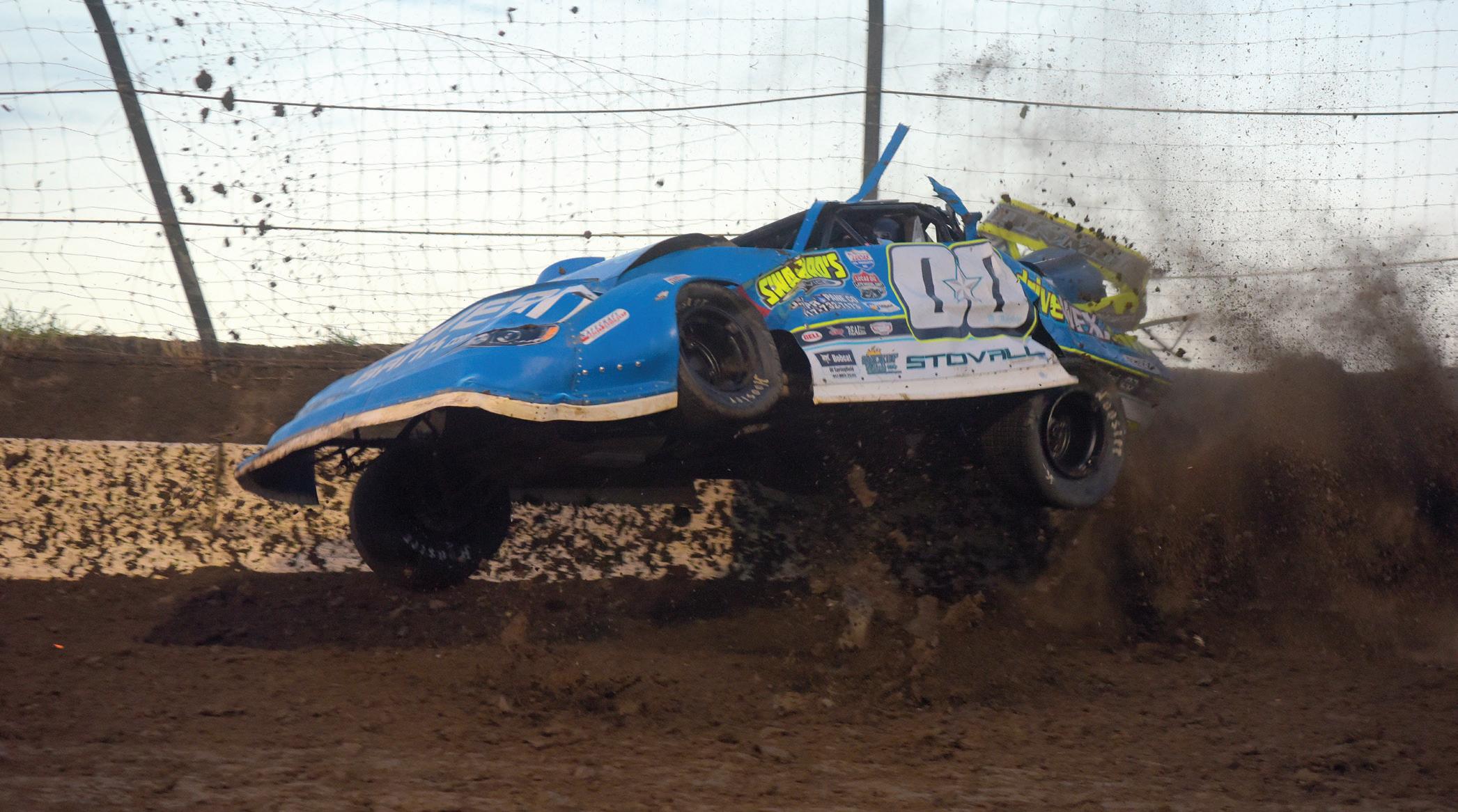

GET TO KNOW TODD BOYD
Hometown: Manhattan, Kansas
Age: 56
Year Started Shooting: As a hobby in 2006 and as a professional in 2012.
First Publication to Print Your Work: Late Model Illustrated
Favorite Track to Shoot: Adams County Speedway, Corning, Iowa
Favorite Division to Shoot: Super Late Models
Remaining Bucket List Races: Prairie Dirt Classic, World 100, Chili Bowl
Favorite Thing About Racing Photography: The racing “family” and the challenges photogs face at dirt tracks shooting in the often less than favorable conditions. Outside of race cars, what do you like to photograph: My daughter’s dance competitions, my son’s baseball games and tornadoes and thunderstorms.
Camera Equipment: Nikon D750 (2), Nikkor 24-70 f/2.8, Nikkor 80-200 f/2.8, Nikkor 300mm f/4.0, Nikkor 50mm f/1.8, Nikkor 85mm f/1.8, Sigma f/2.8 Fisheye
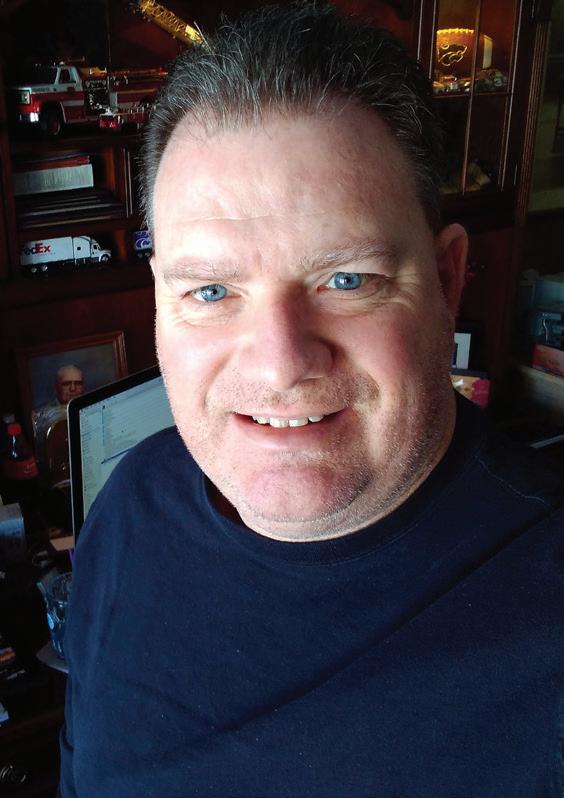 Jesse Stovall gets four wheels up and completely rips his late model apart at the Silver Dollar Nationals at I-80 Speedway in 2017.
Jesse Stovall gets four wheels up and completely rips his late model apart at the Silver Dollar Nationals at I-80 Speedway in 2017.
DIRT EMPIRE MAGAZINE • ISSUE 15 - APRIL/MAY - 2023 75
Johnny Scott blasts around OffRoad Speedway in Nebraska in MLRA action last season.
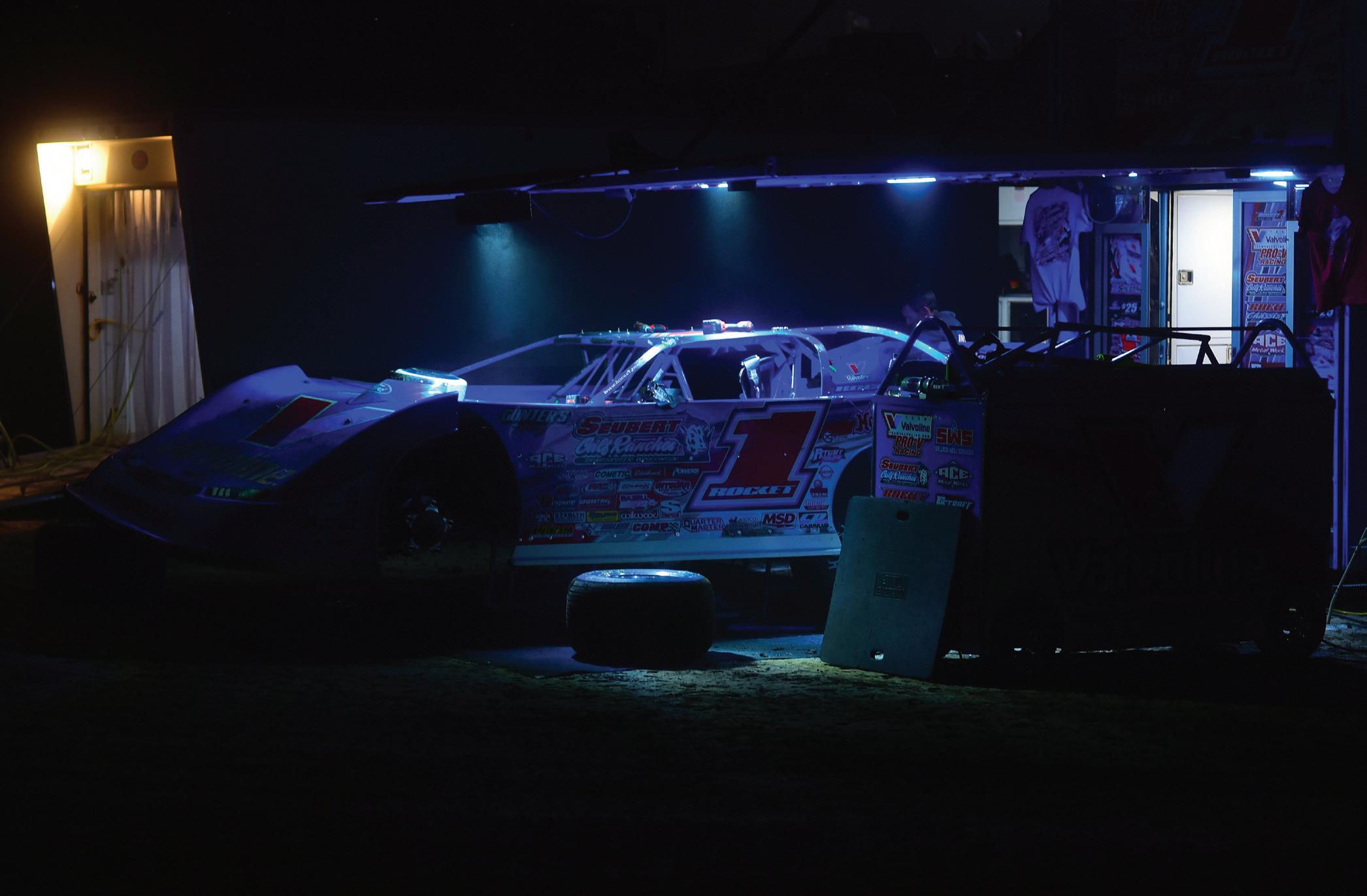
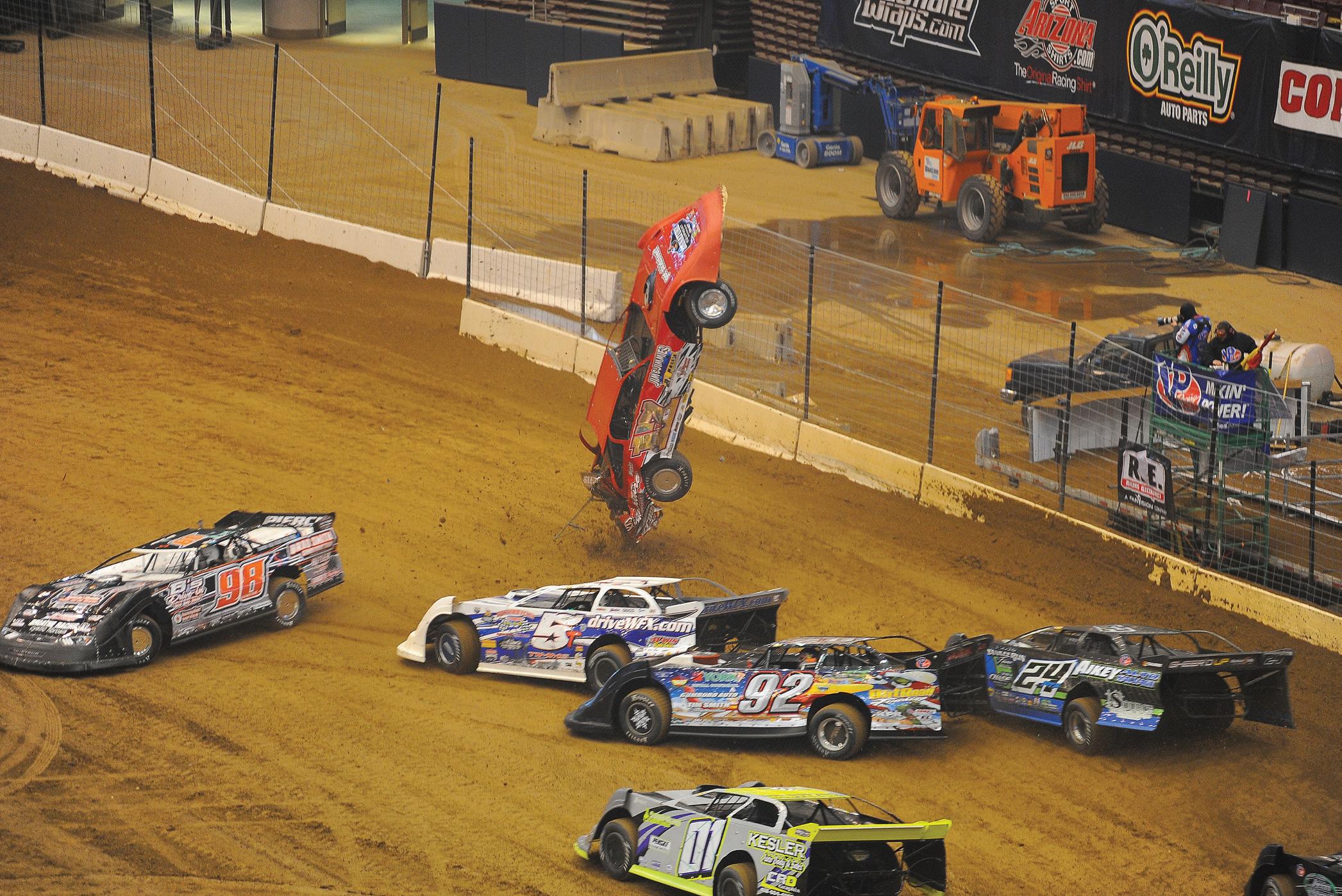 An eerie glow hangs over Brandon Sheppard’s pit area during a 2020 Lucas Oil Series event at I-80 Speedway in Nebraska.
An eerie glow hangs over Brandon Sheppard’s pit area during a 2020 Lucas Oil Series event at I-80 Speedway in Nebraska.
76 DIRT EMPIRE MAGAZINE • ISSUE 15 - APRIL/MAY - 2023
Small track, large car, big trouble as even the late models can get over hard indoors at the Gateway Dirt Nationals in 2016.
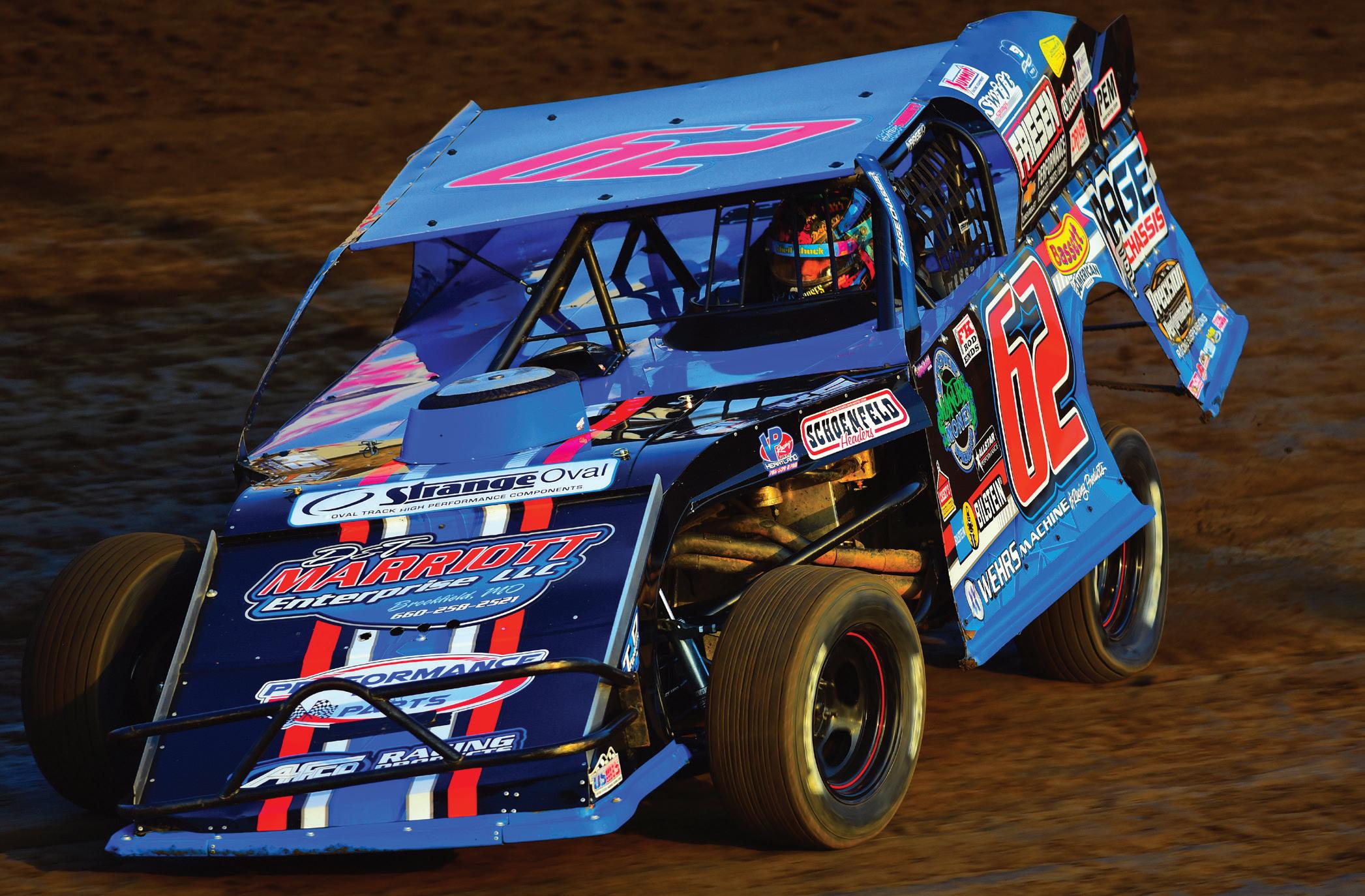

I-80
2019. RacingJunk.com DIRT EMPIRE MAGAZINE • ISSUE 15 - APRIL/MAY - 2023 77 shooter at LARGE
Hunter
Marriott gets twisted at
Speedway’s Silver Dollar Nationals in
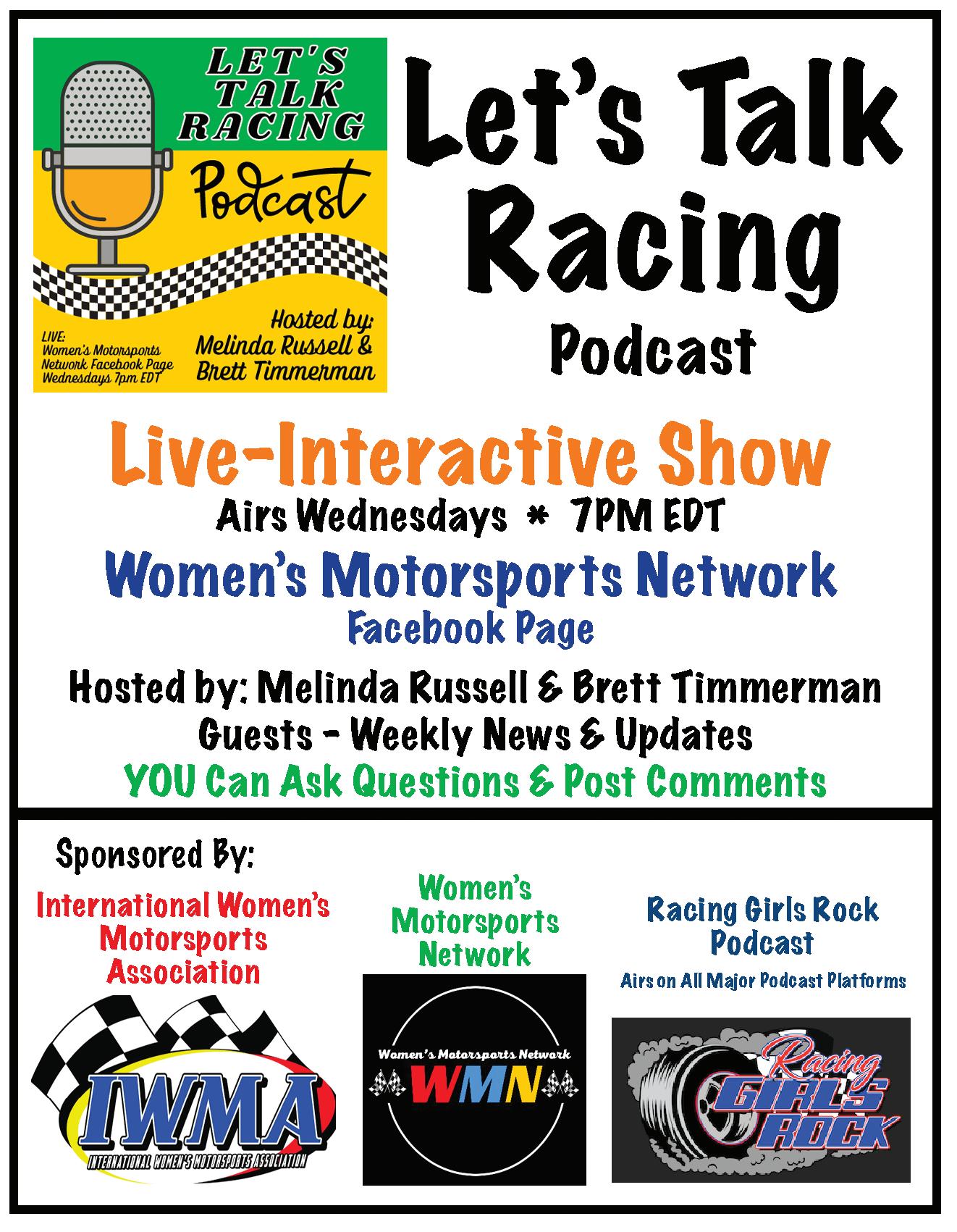
SUPPORT OUR CONTRIBUTORS
Dirt Empire Magazine is proud to have assembled a crack staff of freelance photographers and writers who blend their passion for the sport with their talent and artistry to make these pages pop. If you see an image that you’d like to own or need a great image for your shop, shoot them a messge and support them.
Bob Mays - catsracin@yahoo.com
Buck Monson - buckmonson@gmail.com
Dave Condit - dconditimages@gmail.com
David Campbell - www.seemymind.com
David Sink - mrlittle500@aol.com
John Mahoney - www.johnmahoneyphoto.com
Josh James - joshjamesphotos@gmail.com
Matt Butcosk - mbutcosk@gmail.com
Mike Feltenberger - starterone@aol.com
Mike Musslin - dirtnut777@gmail.com
Mike Ruefer - mikerueferphotos@gmail.com
Patrick Grant - patrickgrant1313@gmail.com
Paul Arch - peanumber10@comcast.net
Ryan Northcote - ryannorthcote@gmail.com
Tanner Dillin - tanner.dillin397839@gmail.com
Tim Hunt - highsideshots@gmail.com
Todd Boyd - latemodel1967@gmail.com
USLCI Comms Staff - jroller@uslegends.com
Vahok Hill - vahok.hill@cox.net
support these FOLKS
Let’s Talk Racing Podcast
Advertiser Page Allstar ................................................................. 2 Barnes Systems Inc. ......................................... 41 Bernheisel Race Components ........................... 82 Blud Lubricants ................................................ 81 Braswell ...................................................... 45, 81 Brinn Inc. ...................................................... 4, 44 Close Racing Supply ......................................... 67 DMI - Bulldog .................................................... 29 Dominator Race Products ................................. 11 DPC Media......................................................... 80 Dyer’s Top Rods ................................................ 19 E3 Lithium Batteries ......................................... 43 Eibach ............................................................... 84 Freedom Race Lifts ..................................... 59, 81 Genesis Racing Shocks ..................................... 55 Hoseheads .................................................. 38, 81 J&J Machine ..................................................... 81 JJ Motorsports ................................................. 81 Jones Racing Products ..................................... 61 K-B Carbs .................................................... 10, 81 Kinsler .............................................................. 27 Let’s Talk Racing Podcast ................................. 78 Longacre ............................................................. 3 Macon Speedway .............................................. 23 PPlus Global Logistics ...................................... 33 PPlus Global Logistics ...................................... 81 QuickTime Podcast ........................................... 80 RacingJunk.com ......................................... 19, 77 RemShift ..................................................... 39, 80 Scorezit ............................................................. 81 Summit Racing Equipment ................................. 9 T&D Machine ..................................................... 11 Trailer-Alarms.com ........................................... 57 Vahlco Wheels ............................................. 10, 80 Wehrs Machine ................................................. 57 Wilwood .............................................................. 7 Winters Performance ........................................ 83 78 DIRT EMPIRE MAGAZINE • ISSUE 15 - APRIL/MAY - 2023
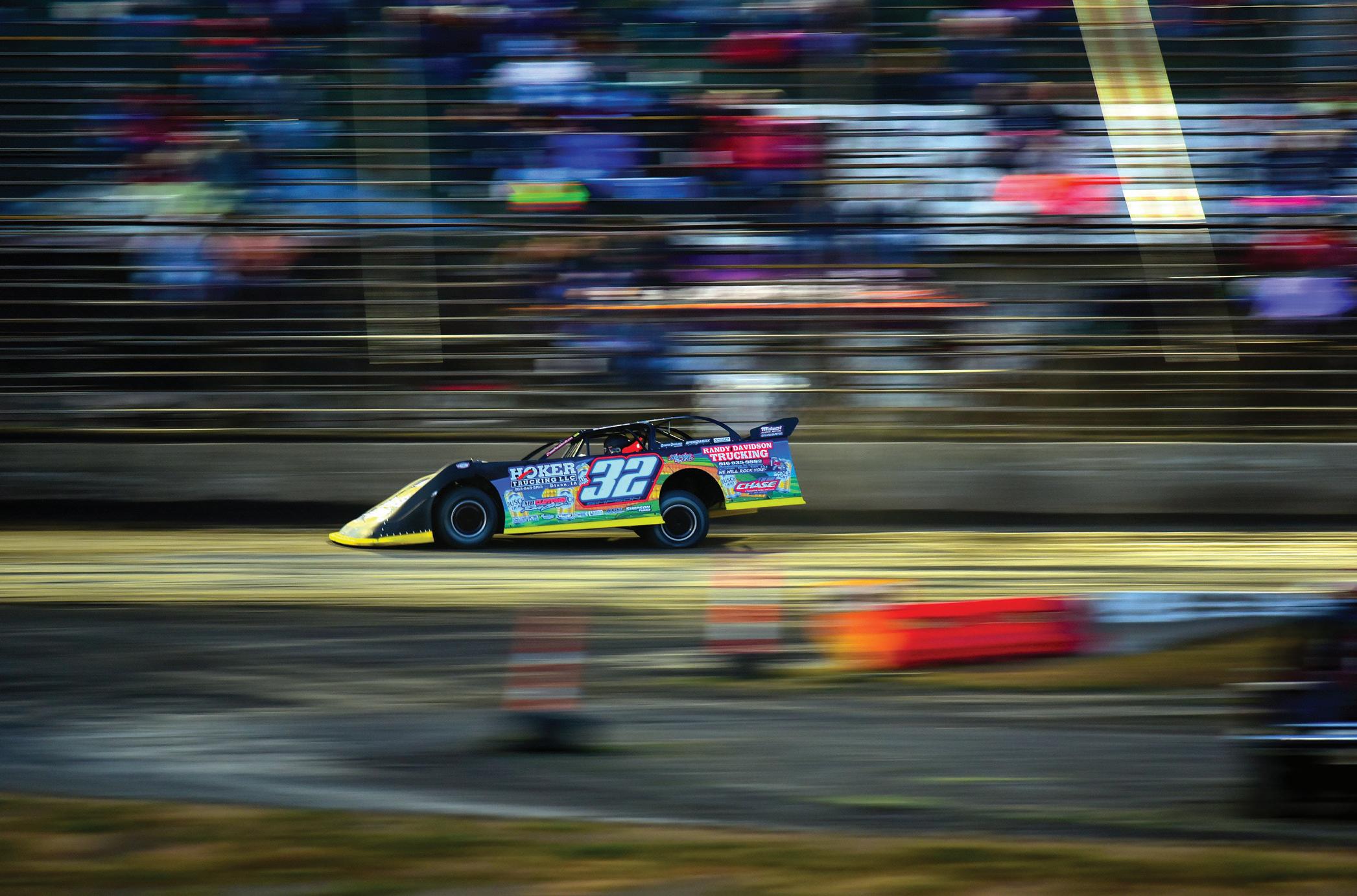
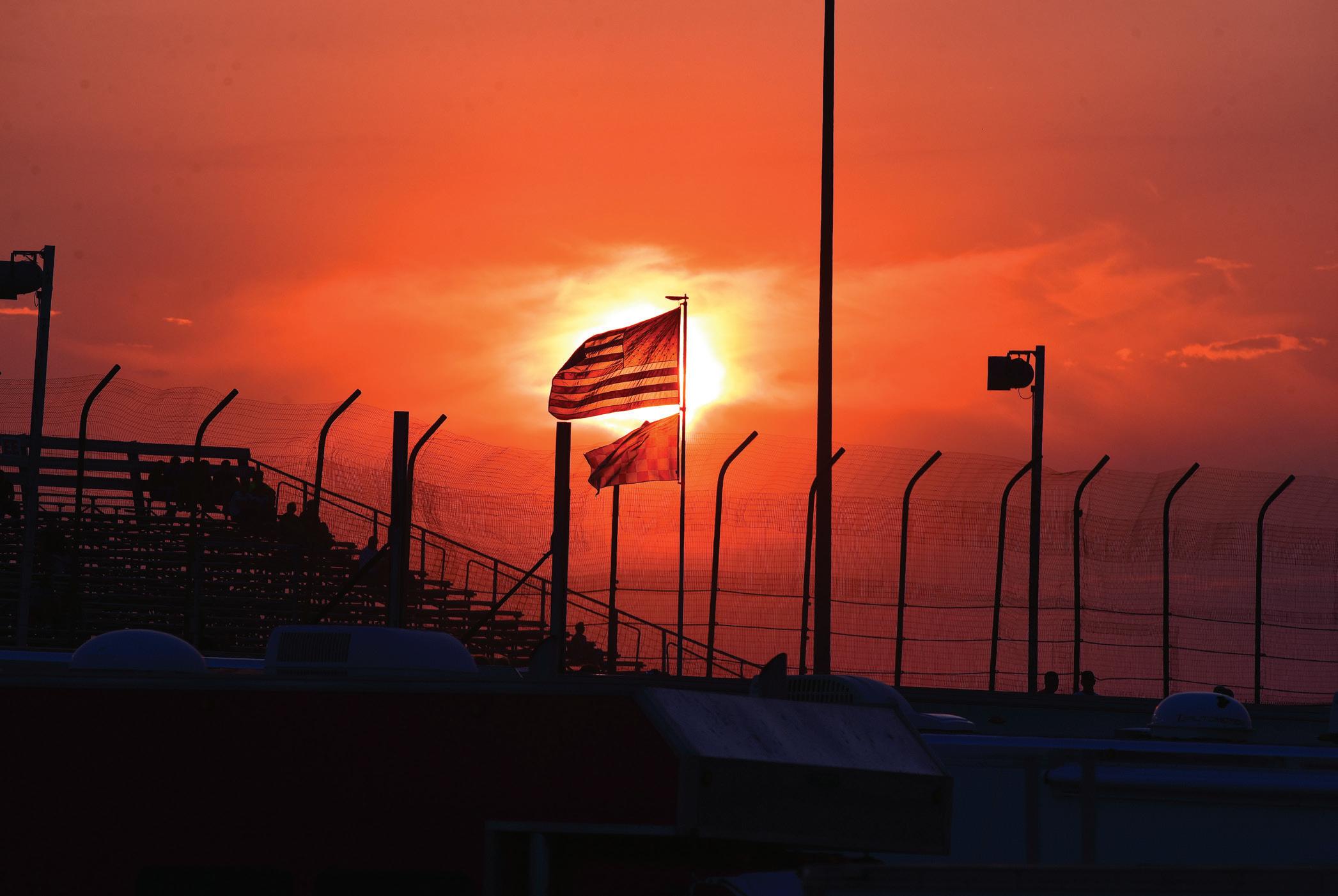
RacingJunk.com
Todd Boyd has an eye for not just capturing the racing itself, but the very spirit of being at the track.
DIRT EMPIRE MAGAZINE • ISSUE 15 - APRIL/MAY - 2023 79
Chris Simpson at speed at Tri-City Raceway in MLRA action during the autumn of 2020.
shooter at LARGE
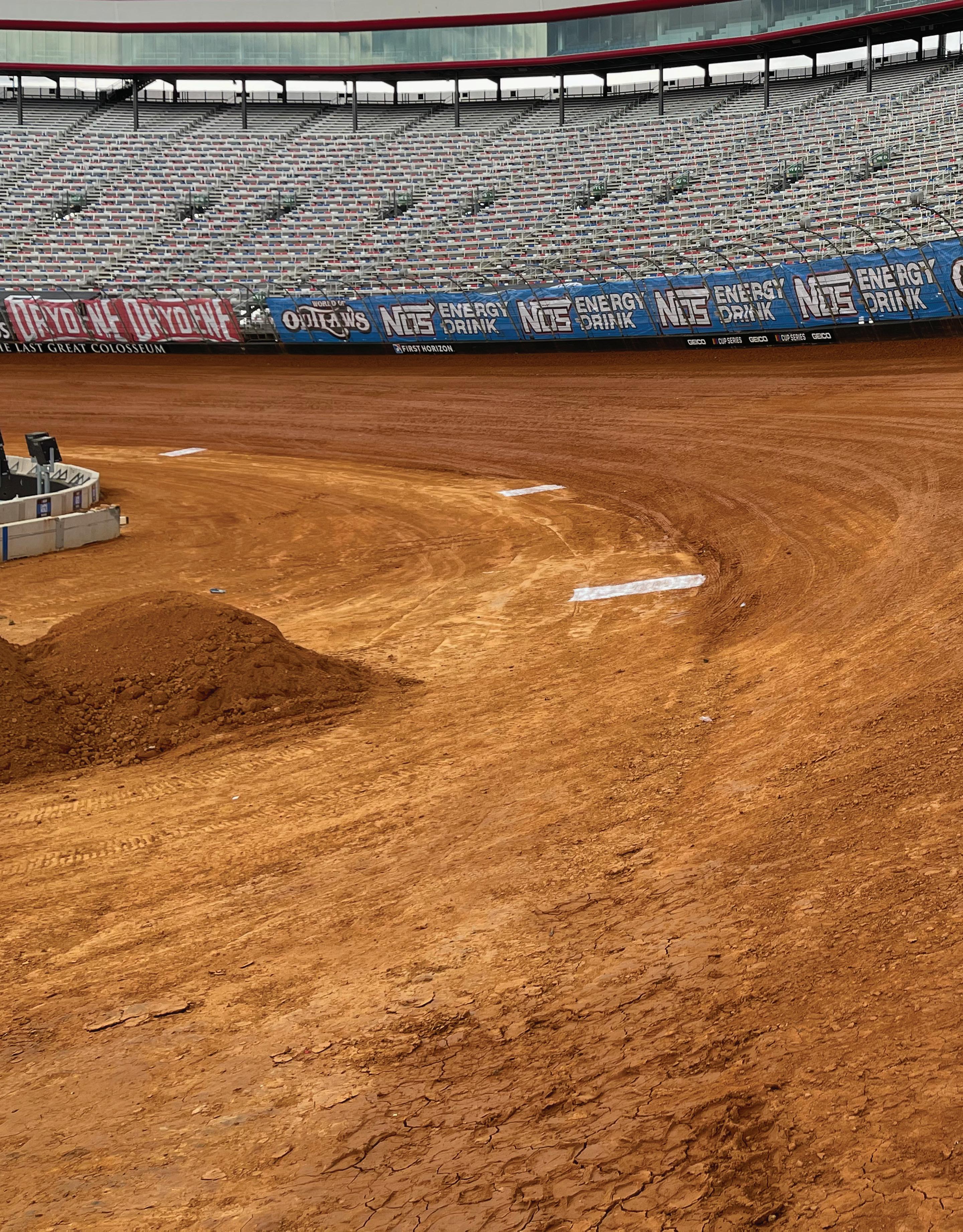
pit STOP



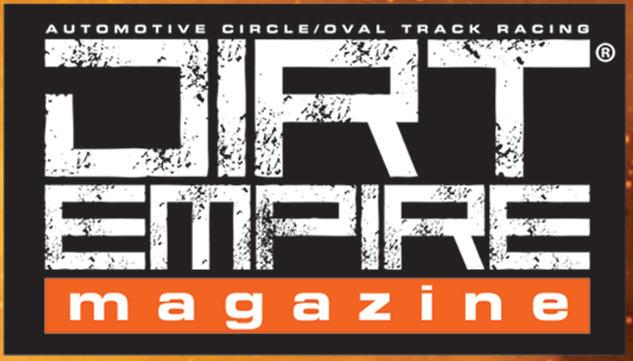
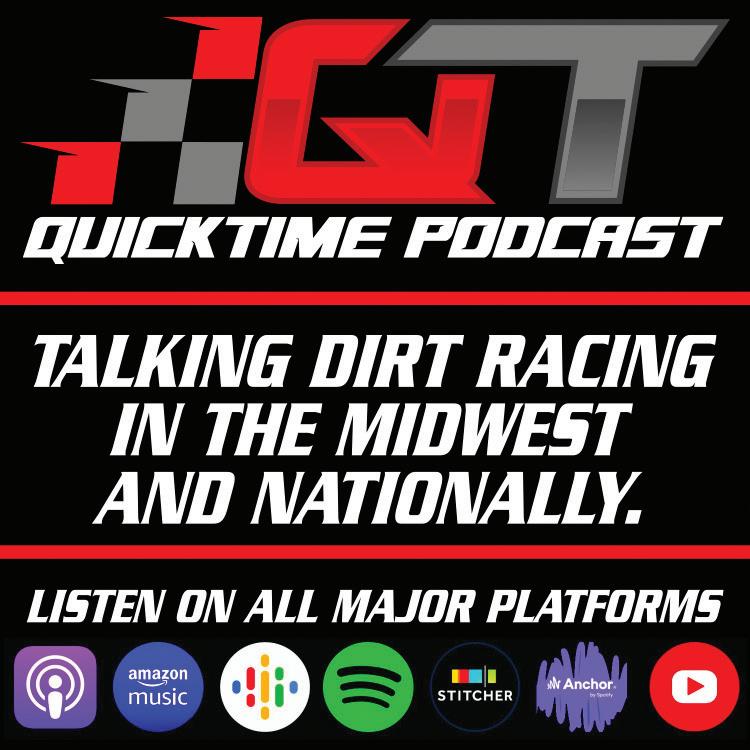


80 DIRT EMPIRE MAGAZINE • ISSUE 15 - APRIL/MAY - 2023
CONTACT US TODAY TO START ADVERTISING FOR AS LITTLE AS $100 PER ISSUE!
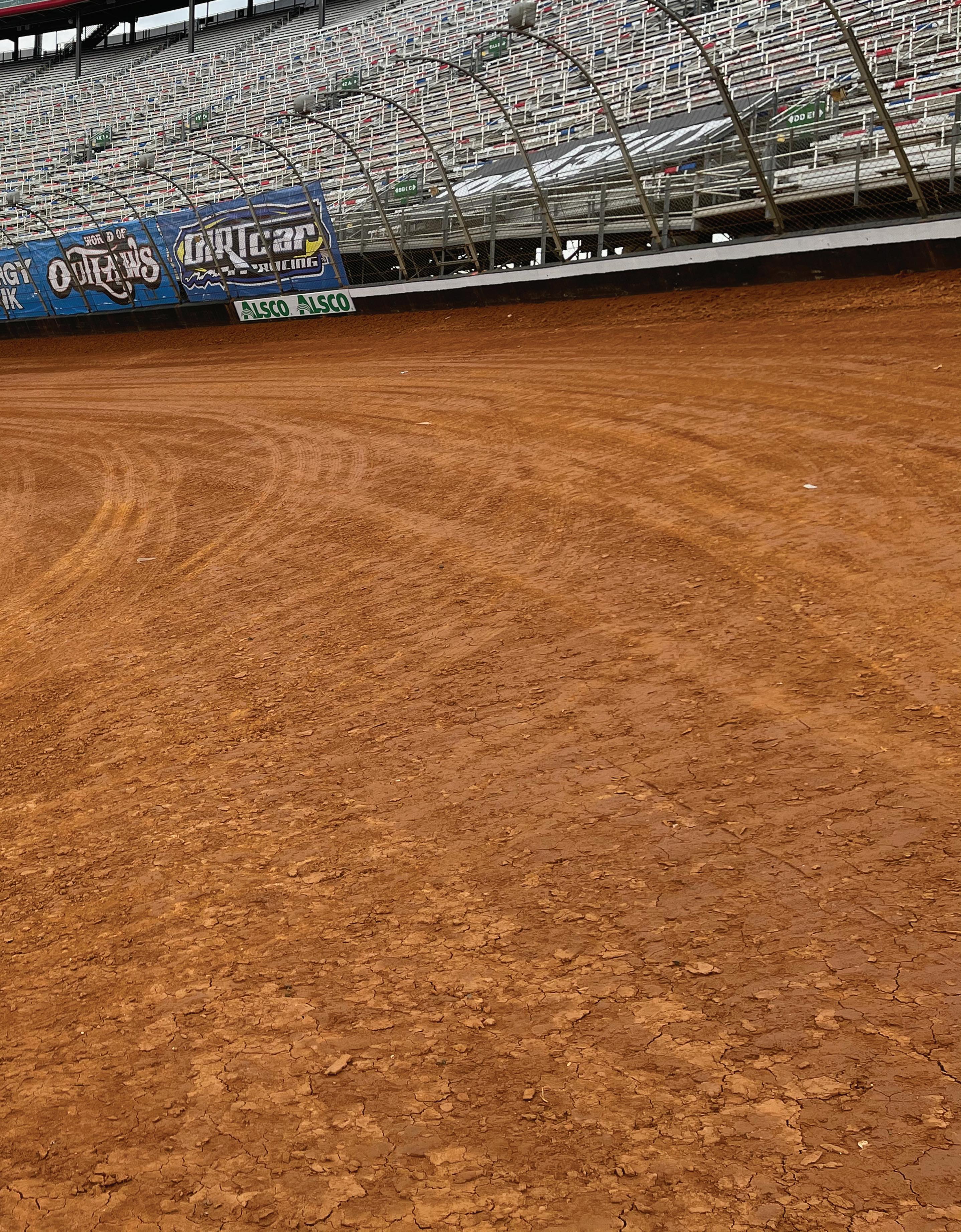









DIRT EMPIRE MAGAZINE • ISSUE 15 - APRIL/MAY - 2023 81


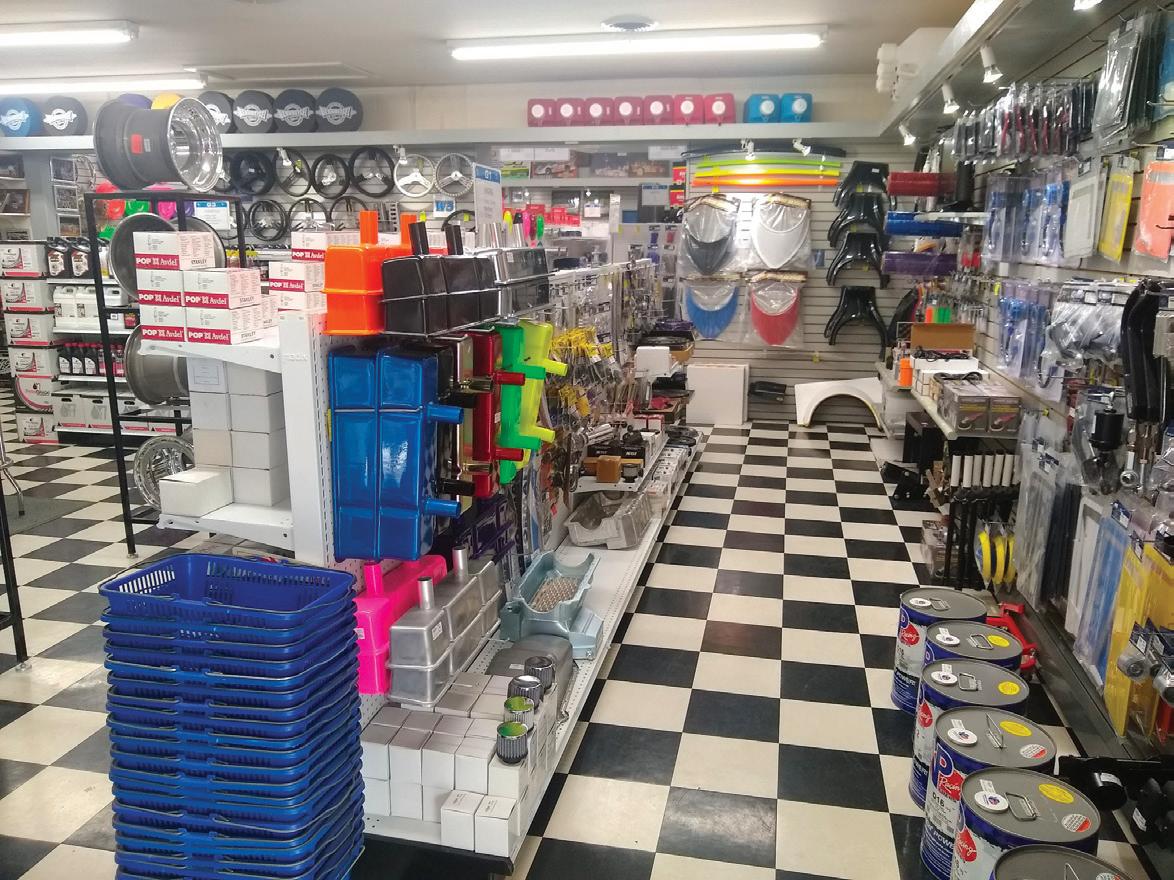
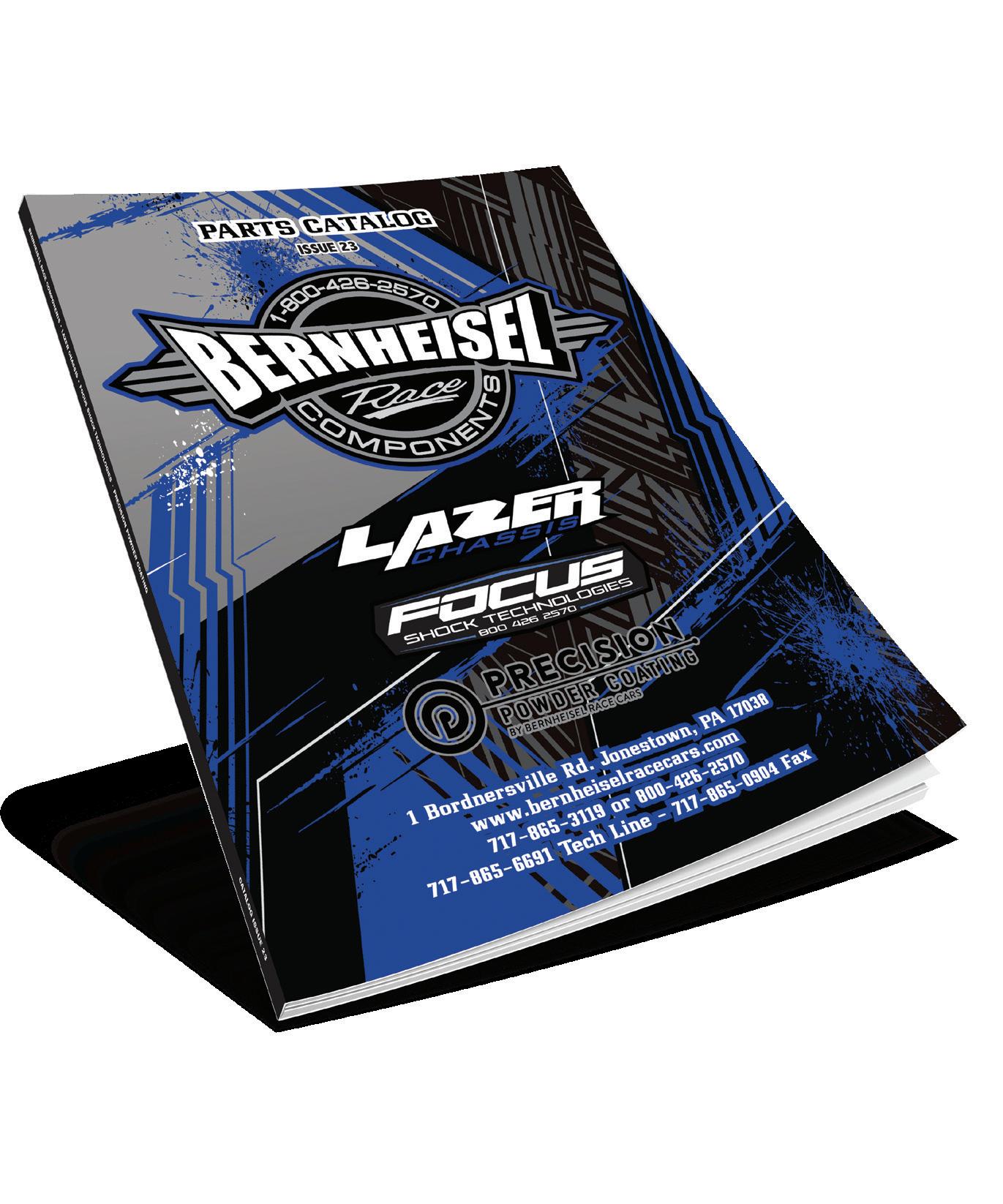
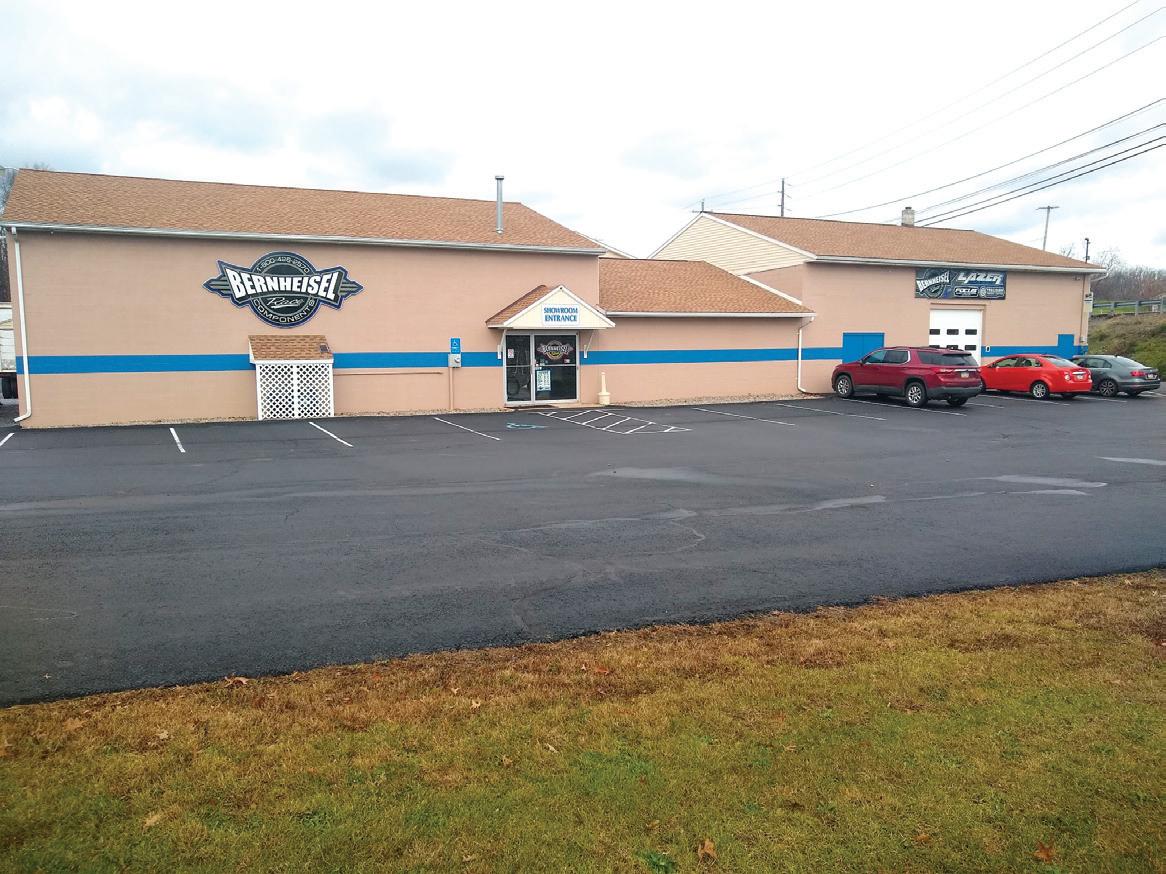
82 DIRT EMPIRE MAGAZINE • ISSUE 15 - APRIL/MAY - 2023 Bernheisel Race Components 1 Bordnersville Rd. Jonestown, PA 17038 Call for more details 717.865.3119 www.bernheiselracecars.com
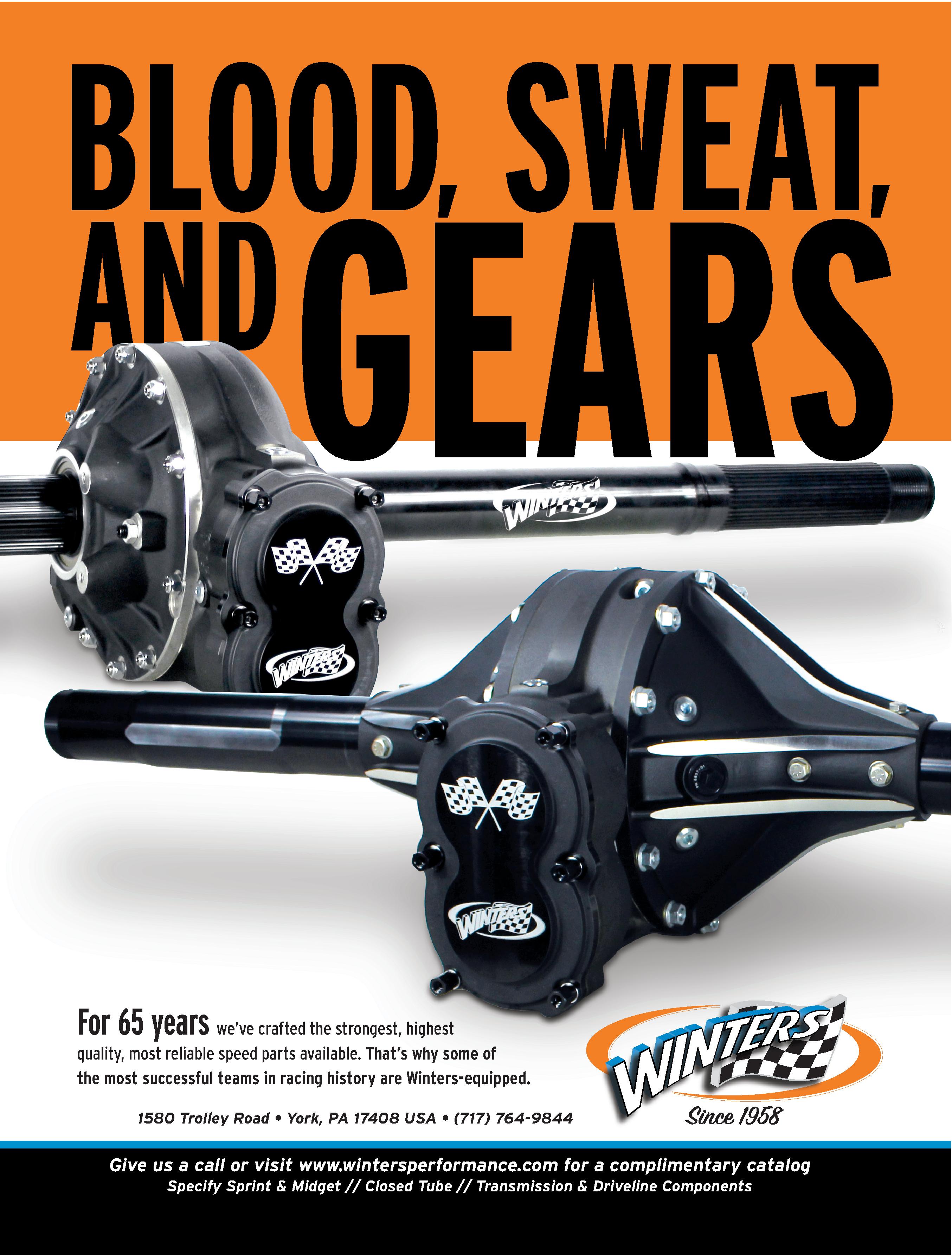
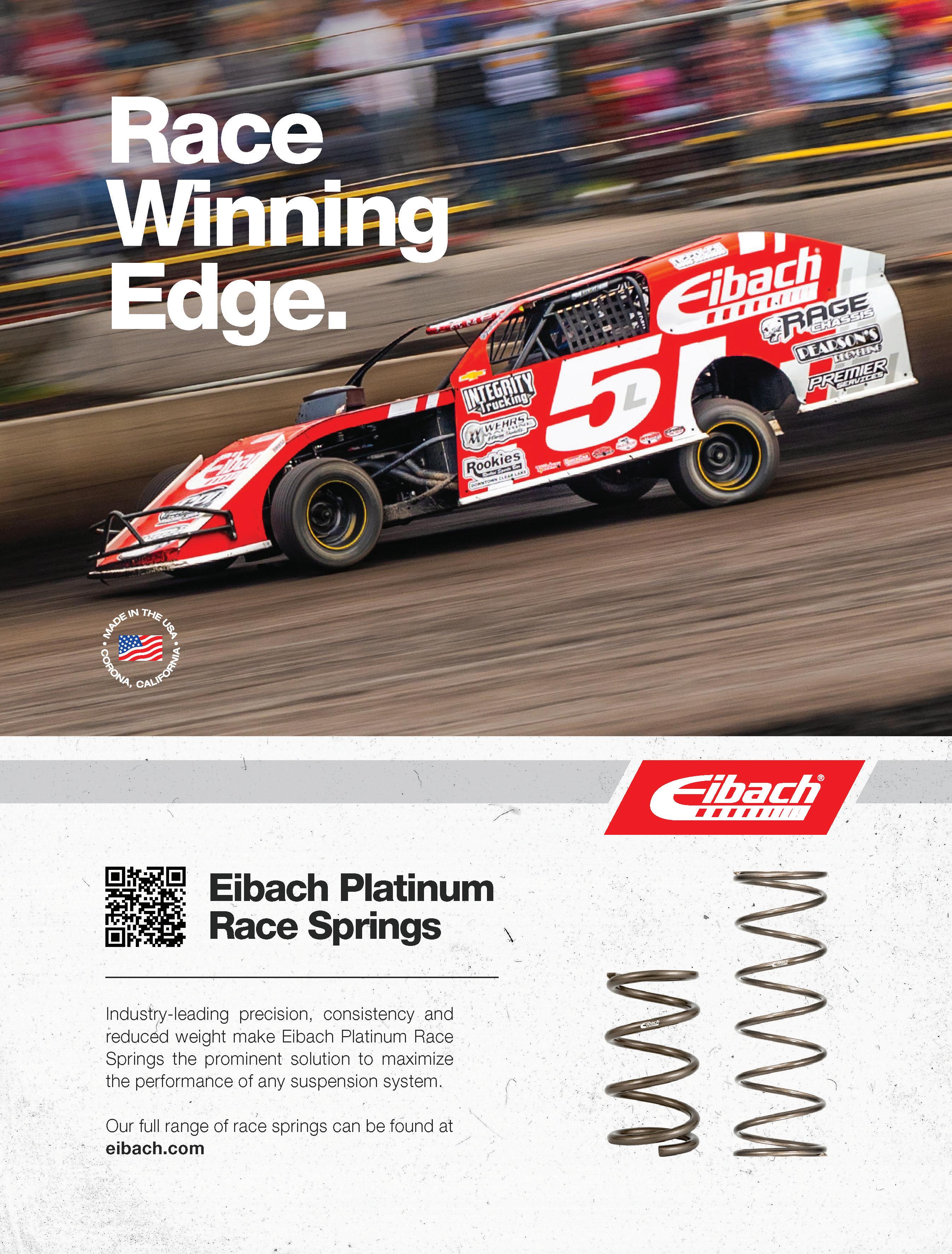
























 Indiana’s John Baker brought his UMP modified down to Volusia and his strong stance towards letting it hang out and making the other guy use the brake.
There were several drivers with stickers honoring the late Rick Eshelman on their cars to start the season but Ryan Gustin took it a step further and had this tribute blown up to cover the entire roof of his car. Meanwhile, during Speedweeks, news broke that popular rally driver Ken Block was killed in a snowmobiling accident and drivers like Donny Schatz honored his memory.
Indiana’s John Baker brought his UMP modified down to Volusia and his strong stance towards letting it hang out and making the other guy use the brake.
There were several drivers with stickers honoring the late Rick Eshelman on their cars to start the season but Ryan Gustin took it a step further and had this tribute blown up to cover the entire roof of his car. Meanwhile, during Speedweeks, news broke that popular rally driver Ken Block was killed in a snowmobiling accident and drivers like Donny Schatz honored his memory.








 Photo: Mike Ruefer
Yeah, we’ve all seen badass photos of JD but this might top them all! The Dirty Dollar Ranch is where the family raises their Watusi cattle.
Photo: Mike Ruefer
Yeah, we’ve all seen badass photos of JD but this might top them all! The Dirty Dollar Ranch is where the family raises their Watusi cattle.

 Photo: Mike Ruefer
Photo: Mike Ruefer

 Photos: Mike Musslin
Photos: Mike Musslin


























 Photo: David Campbell
Photo: David Campbell
Photo: David Campbell
Kort Morgan: wheel up.
Thomas Meseraull: wheels up.
Photo: David Campbell
Photo: David Campbell
Photo: David Campbell
Kort Morgan: wheel up.
Thomas Meseraull: wheels up.
















 WORDS BY DOUG KENNEDY PHOTOS BY BUCK MONSON
WORDS BY DOUG KENNEDY PHOTOS BY BUCK MONSON

 Hughes gets around one of his favorite race tracks - Deer Creek Speedway in Minnesota. He has won their hallmark event - the Fall Jamboree - an incredible five times!
Hughes gets around one of his favorite race tracks - Deer Creek Speedway in Minnesota. He has won their hallmark event - the Fall Jamboree - an incredible five times!








 Circa 1992.
Poised for action at Bloomington Speedway in 1989, his second season.
Hanging out with wife Shannon after winning the Kings Royal.
Photo: Paul Arch Photo: Paul Arch
Photo: Paul Arch
Photo: Paul Arch
Circa 1992.
Poised for action at Bloomington Speedway in 1989, his second season.
Hanging out with wife Shannon after winning the Kings Royal.
Photo: Paul Arch Photo: Paul Arch
Photo: Paul Arch
Photo: Paul Arch









 Kruseman and
Photo: Paul Arch
Photo: Paul Arch
Photo: Paul Arch
Kruseman during his 2006 SCRA championship season with Glenn Crossno.
Kruseman and
Photo: Paul Arch
Photo: Paul Arch
Photo: Paul Arch
Kruseman during his 2006 SCRA championship season with Glenn Crossno.














 Photo: Gene Marderness
Photo: Gene Marderness

 Photo: Paul Arch
Photo: Paul Arch
Photo: Paul Arch
Photo: Paul Arch






 Photo: Ryan Northcote
Mars in his glory, running at Lernerville during the 2010 season in his familiar white 28.
Photo: Ryan Northcote
Mars in his glory, running at Lernerville during the 2010 season in his familiar white 28.


 Photo: Tim Hunt
Photo: Tim Hunt
Still winning! Mars grabbed a Late Model Challenge Series win during the 2022 season, which would be his last, in Proctor Minnesota.
Photo: Tim Hunt
Photo: Tim Hunt
Still winning! Mars grabbed a Late Model Challenge Series win during the 2022 season, which would be his last, in Proctor Minnesota.


 Words and Pictures by Vahok Hill
Words and Pictures by Vahok Hill



















 Brandon Overton started his 2023 campaign with a victory at the Lucas Oil Super Bowl of Racing at Golden Isles Speedway in Waynesville, Georgia.
Tim McCreadie seems to always put on a good show at Golden Isles Speedway. He came up just short of taking the 2023 Super Bowl of Racing title, finishing second behind Overton.
Photo: Josh James Photos: Josh James
Brandon Overton started his 2023 campaign with a victory at the Lucas Oil Super Bowl of Racing at Golden Isles Speedway in Waynesville, Georgia.
Tim McCreadie seems to always put on a good show at Golden Isles Speedway. He came up just short of taking the 2023 Super Bowl of Racing title, finishing second behind Overton.
Photo: Josh James Photos: Josh James



 Jonathan Davenport was able to keep Ashton Winger (not pictured)behind him in second place despite a late race caution that took away Davenport’s big lead at Bubba Raceway Park. Davenport crossed the finishline in first place and collected his $10,000 prize.
Ricky Thornton Jr. was able to keep Tim McCreadie in the rearview to take the victory at All-Tech Raceway.
Photo: Matt Butcosk
Photo: Matt Butcosk
Photo: Matt Butcosk
Photo: Mike Ruefer
Jonathan Davenport was able to keep Ashton Winger (not pictured)behind him in second place despite a late race caution that took away Davenport’s big lead at Bubba Raceway Park. Davenport crossed the finishline in first place and collected his $10,000 prize.
Ricky Thornton Jr. was able to keep Tim McCreadie in the rearview to take the victory at All-Tech Raceway.
Photo: Matt Butcosk
Photo: Matt Butcosk
Photo: Matt Butcosk
Photo: Mike Ruefer










 Photo: Josh James
Photo: Josh James
Photo: Josh James
Photo: Josh James



 Josh Wise (Tony Stewart 20) scored on
photo)
Josh Wise (Tony Stewart 20) scored on
photo)





 Jake Tretow scored a popular win in his home state of North Carolina.
Jake Tretow scored a popular win in his home state of North Carolina.




 Jesse Stovall gets four wheels up and completely rips his late model apart at the Silver Dollar Nationals at I-80 Speedway in 2017.
Jesse Stovall gets four wheels up and completely rips his late model apart at the Silver Dollar Nationals at I-80 Speedway in 2017.

 An eerie glow hangs over Brandon Sheppard’s pit area during a 2020 Lucas Oil Series event at I-80 Speedway in Nebraska.
An eerie glow hangs over Brandon Sheppard’s pit area during a 2020 Lucas Oil Series event at I-80 Speedway in Nebraska.

























